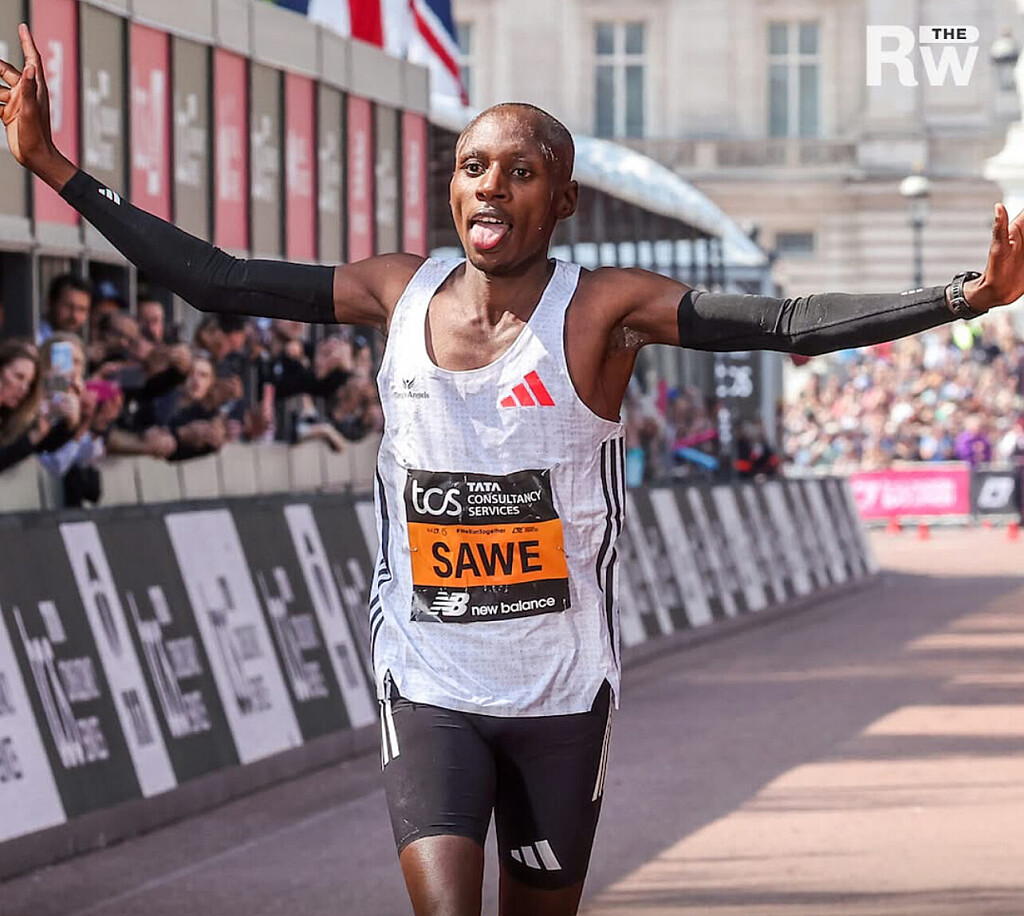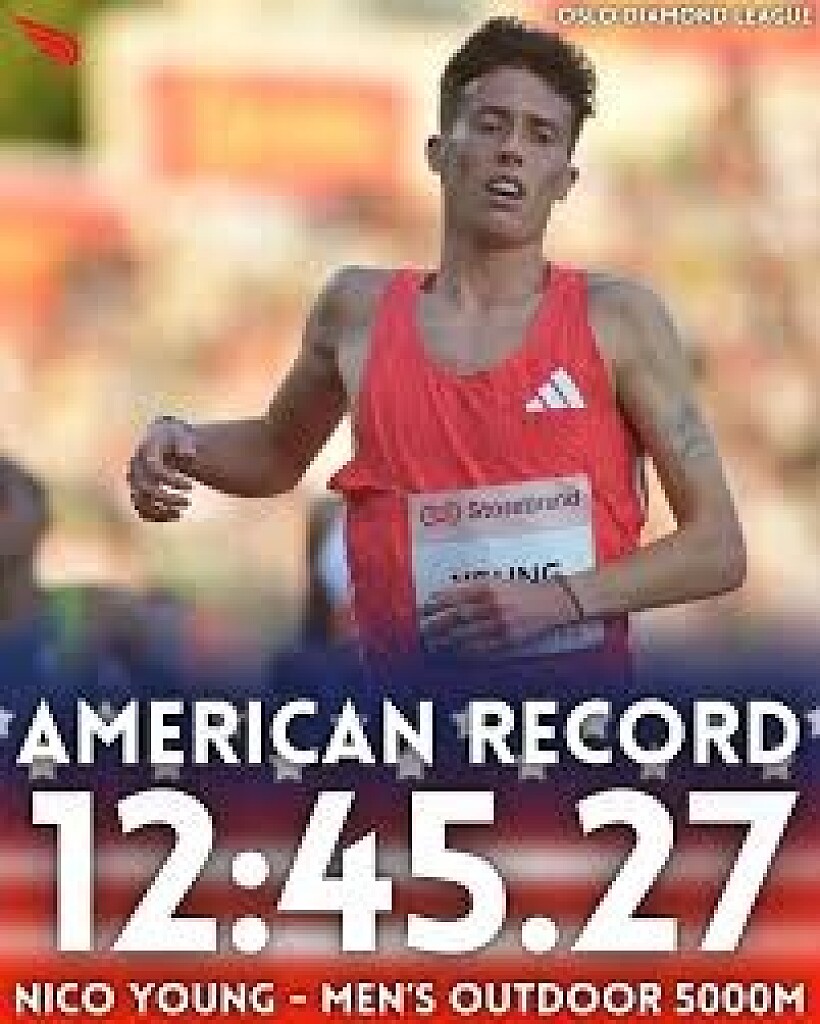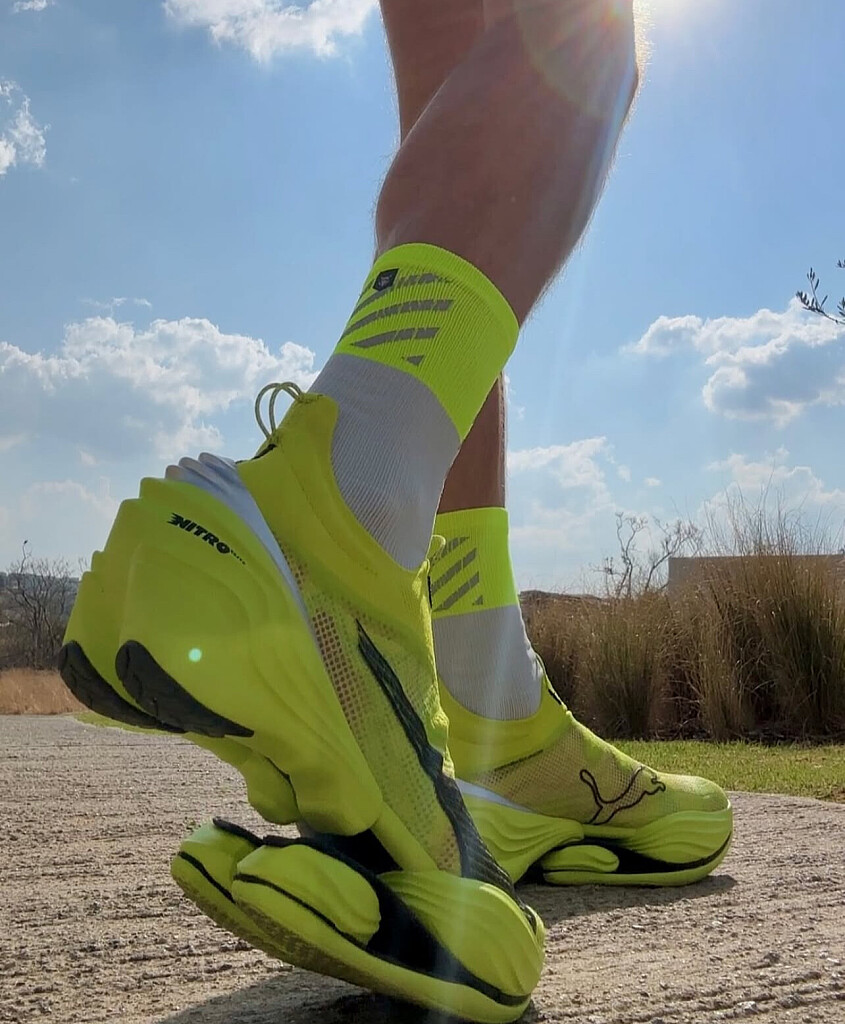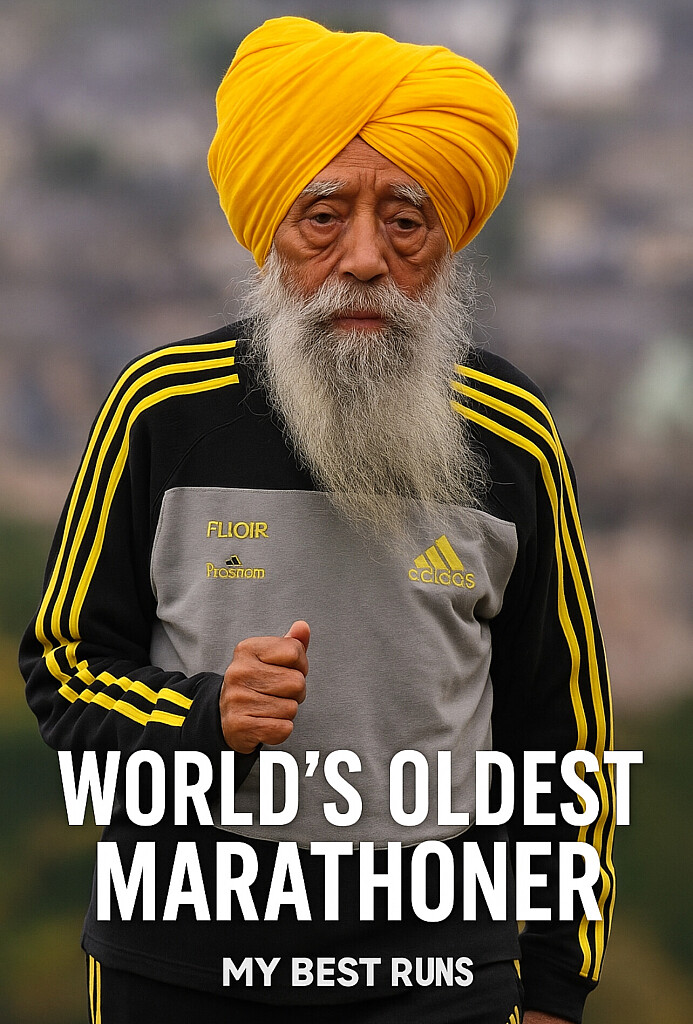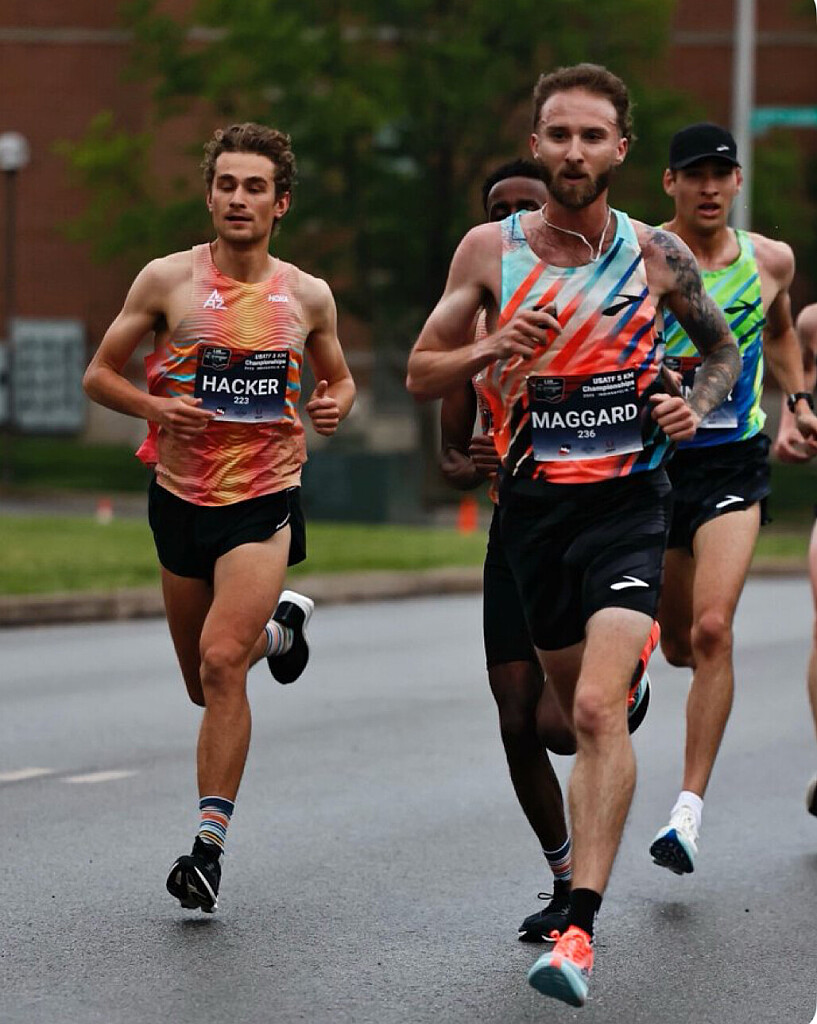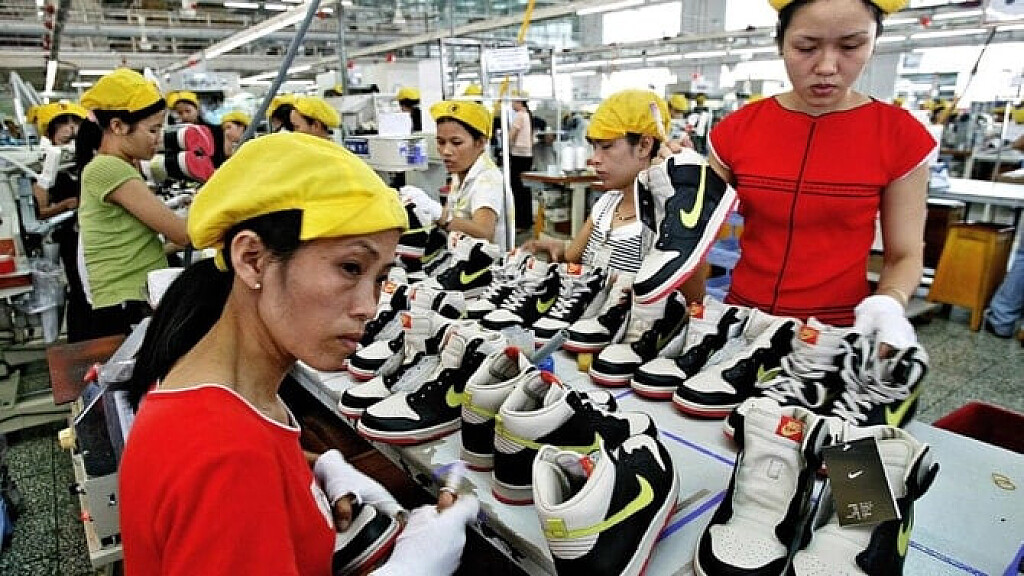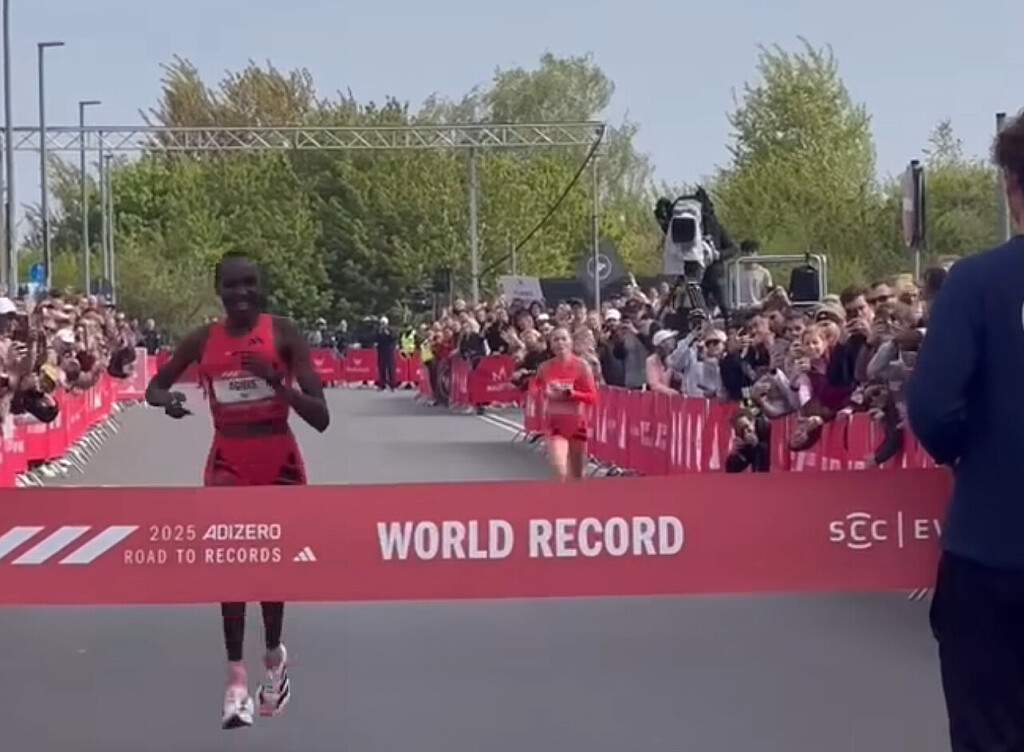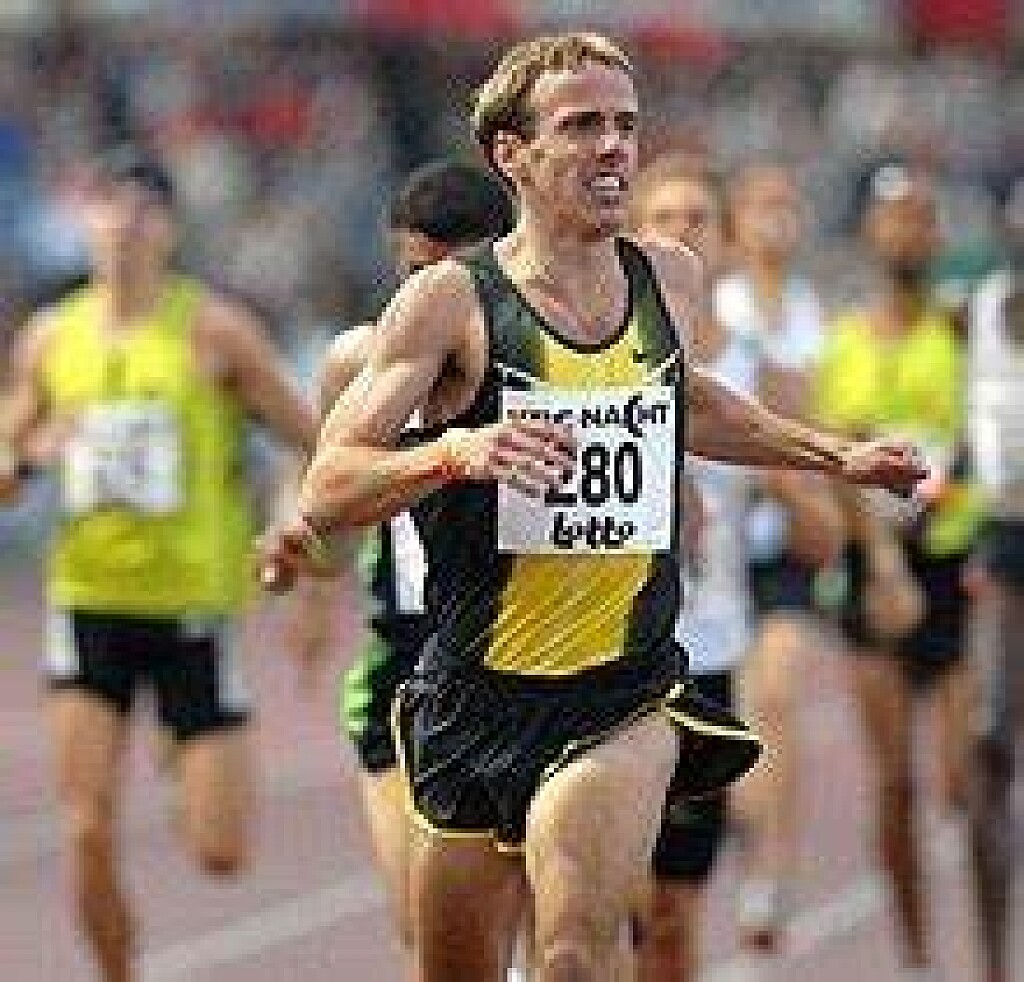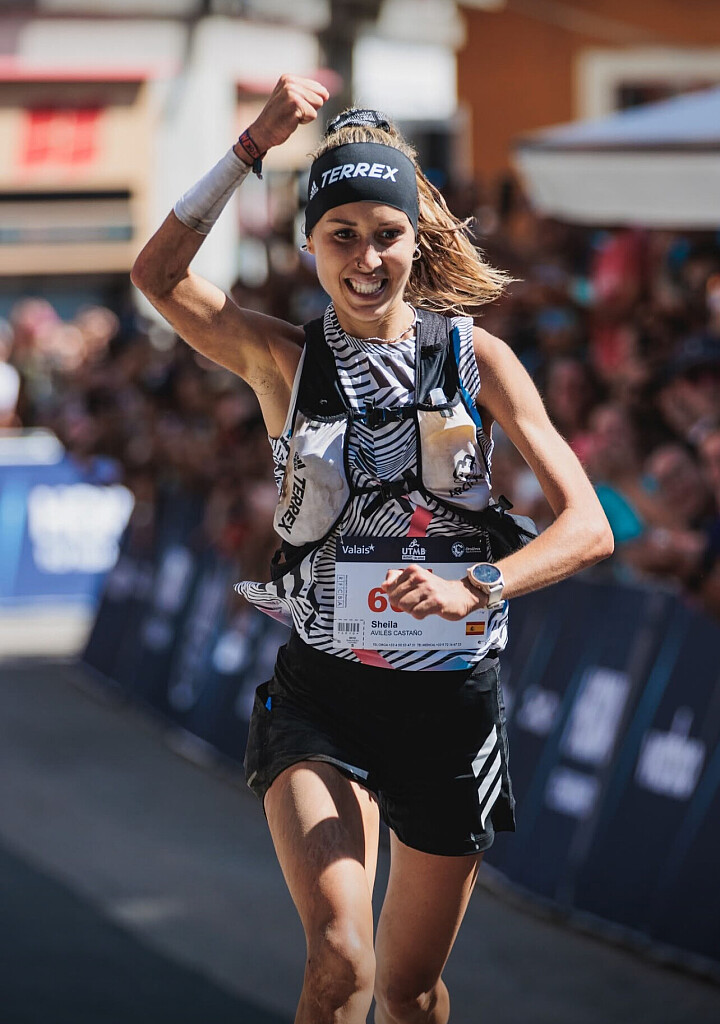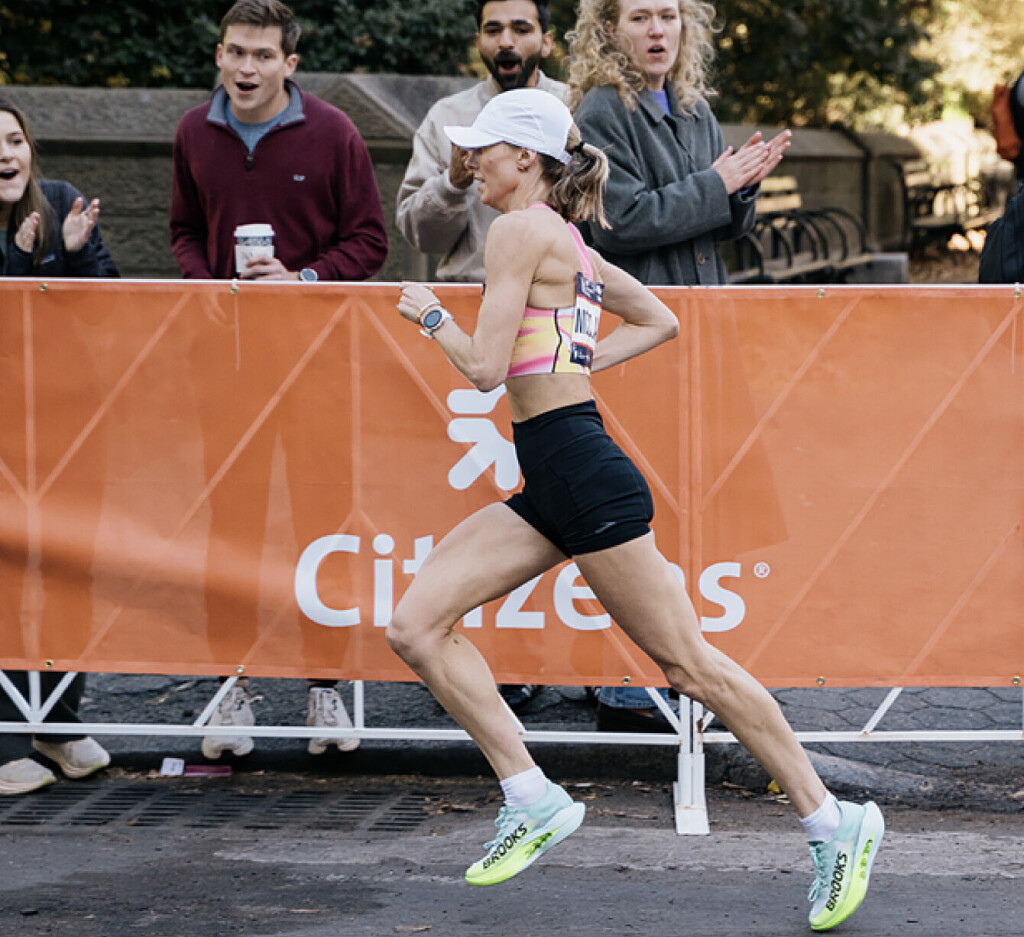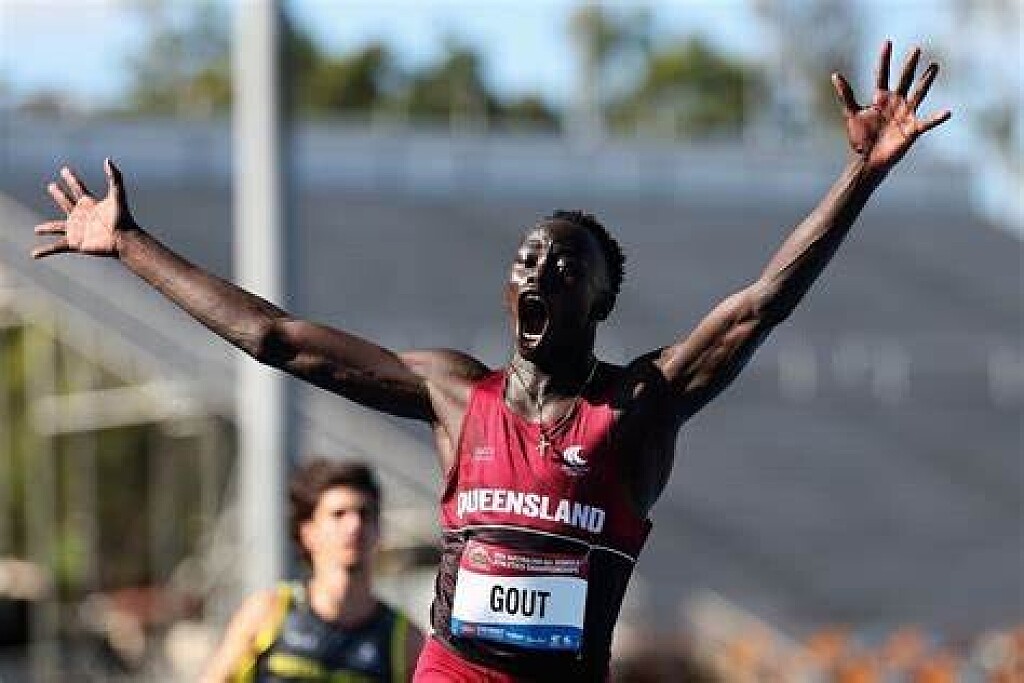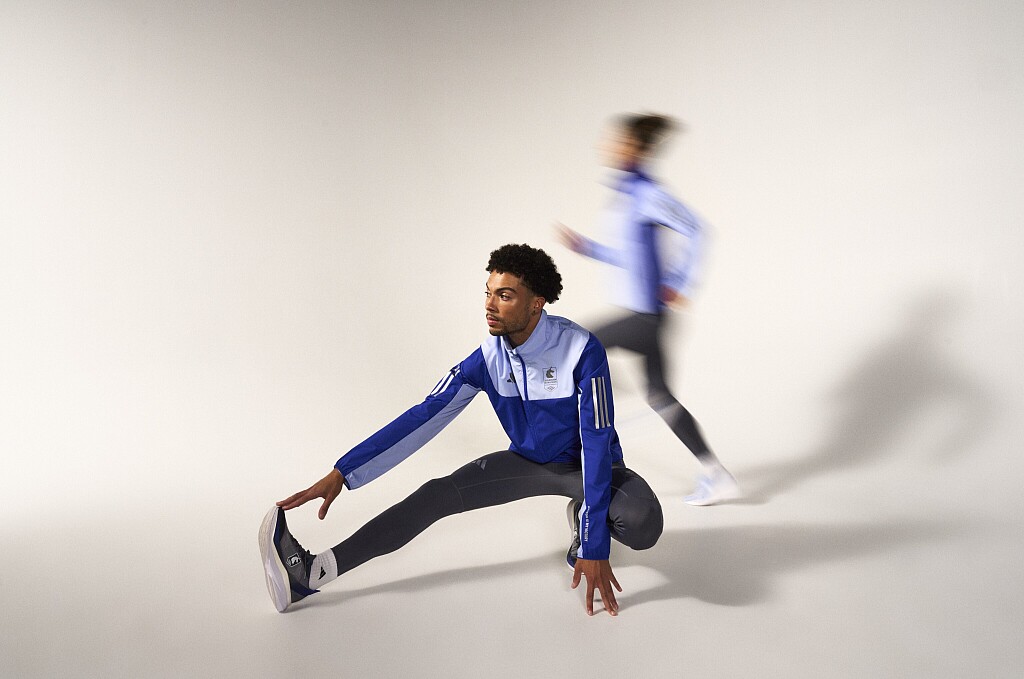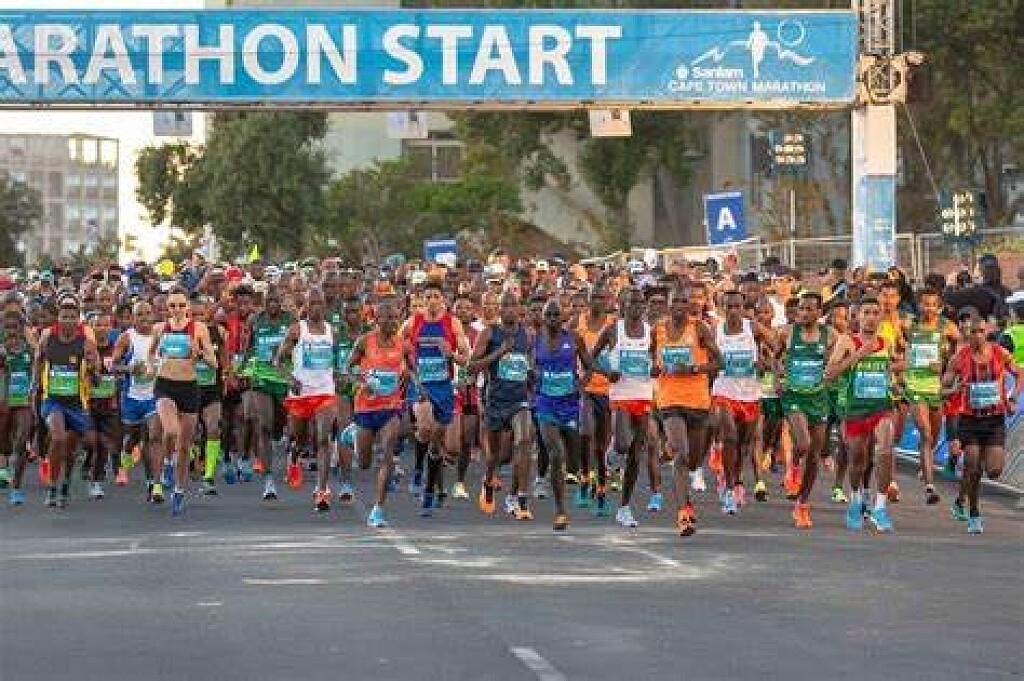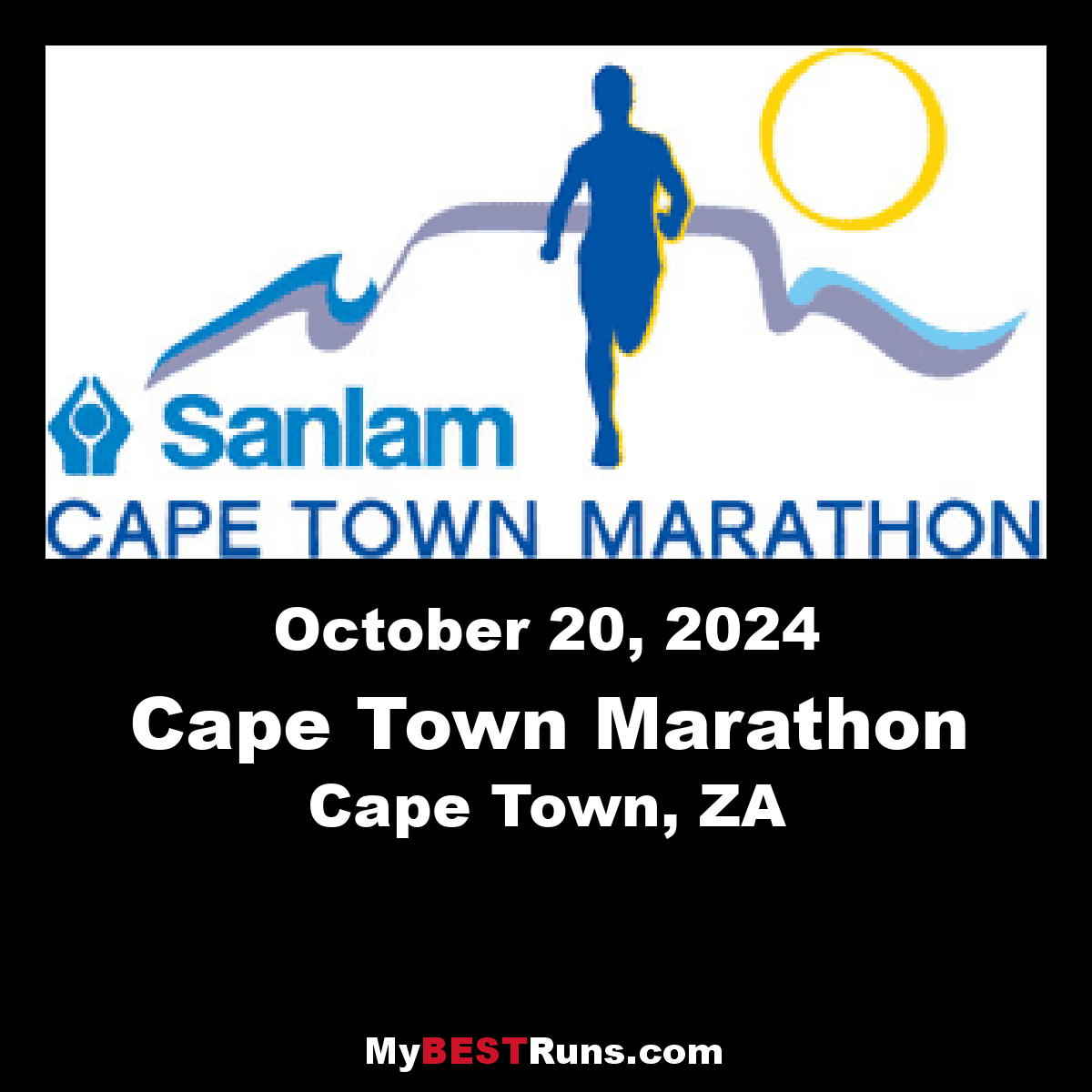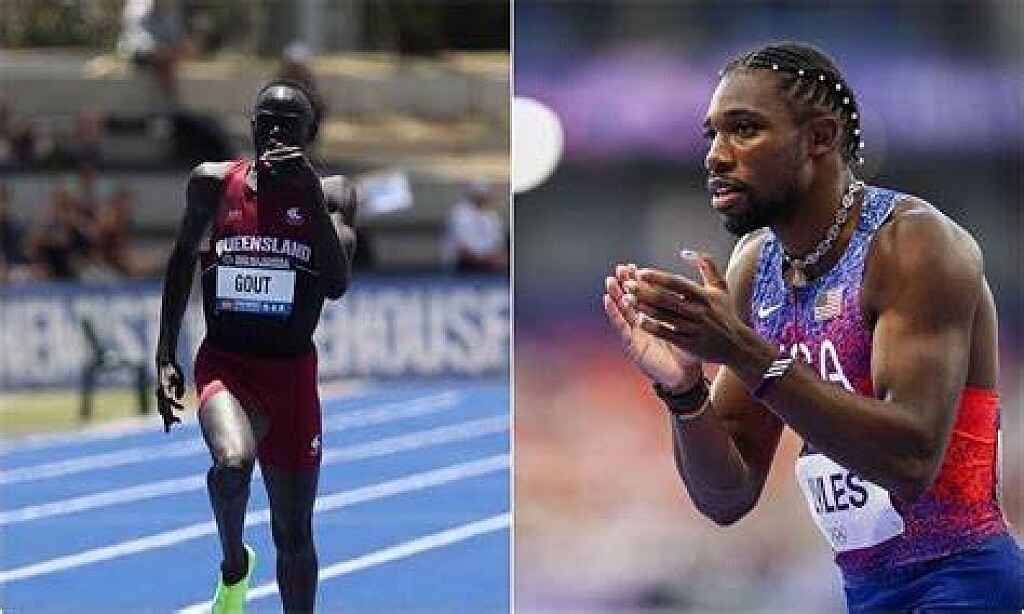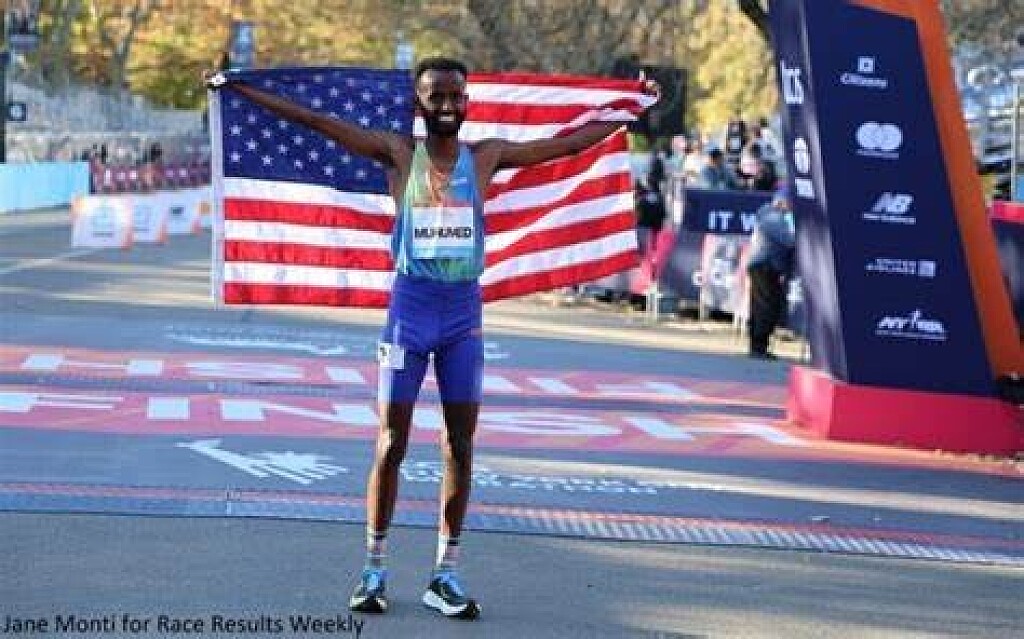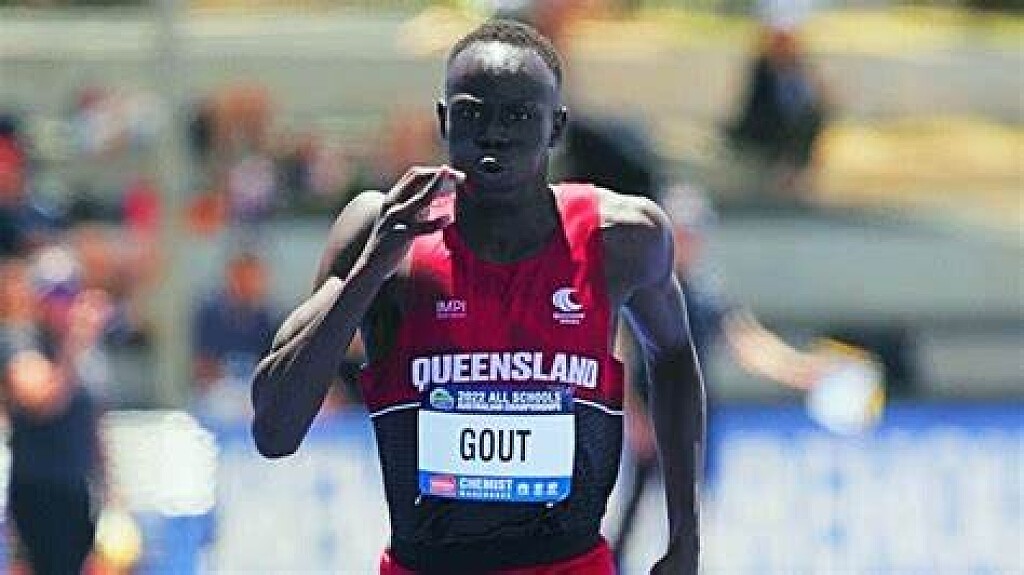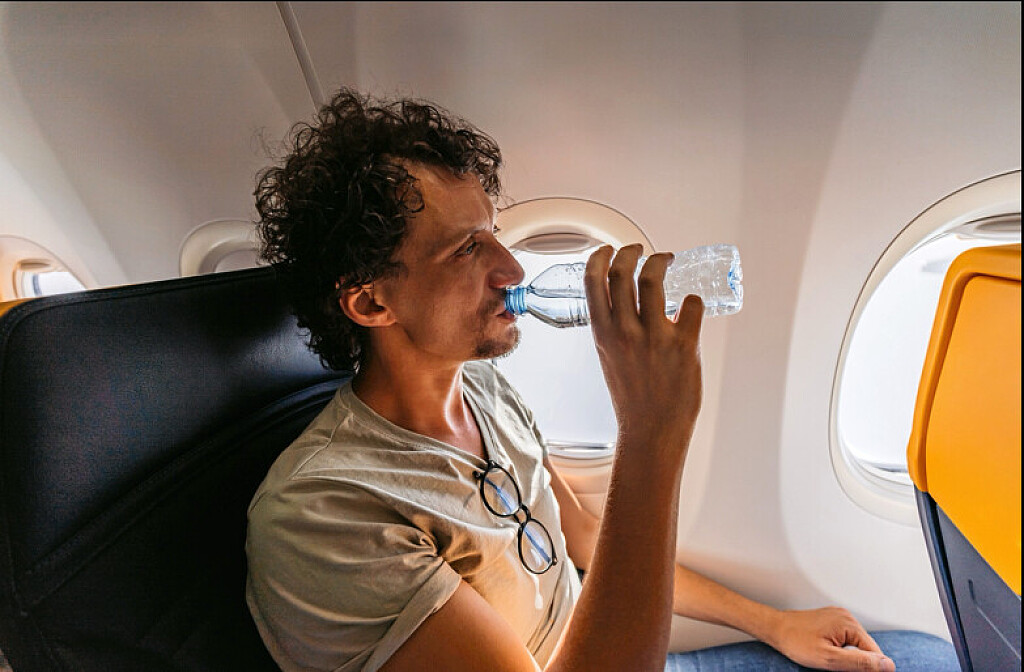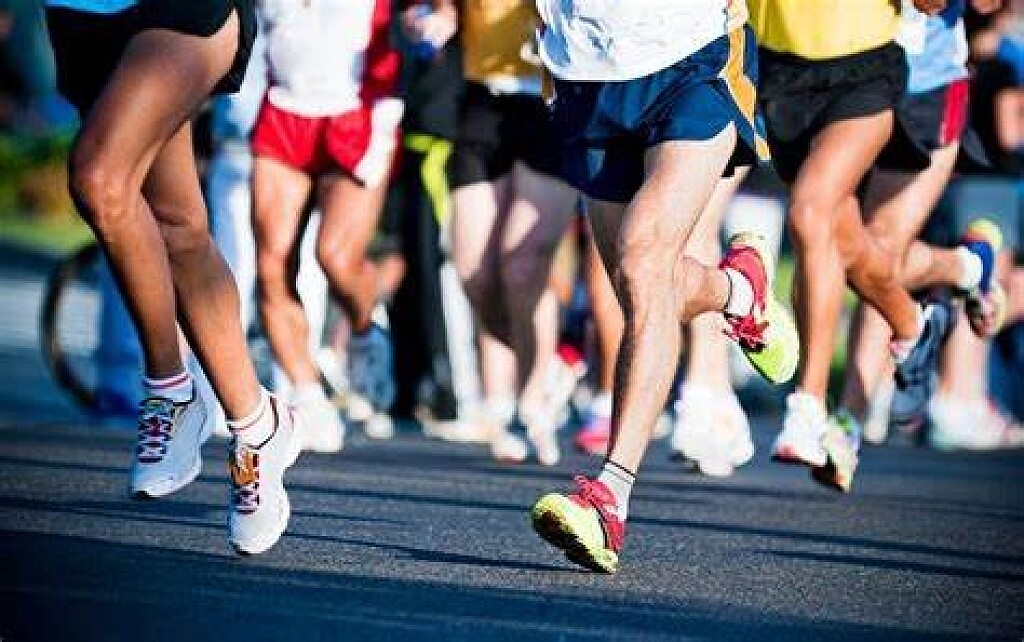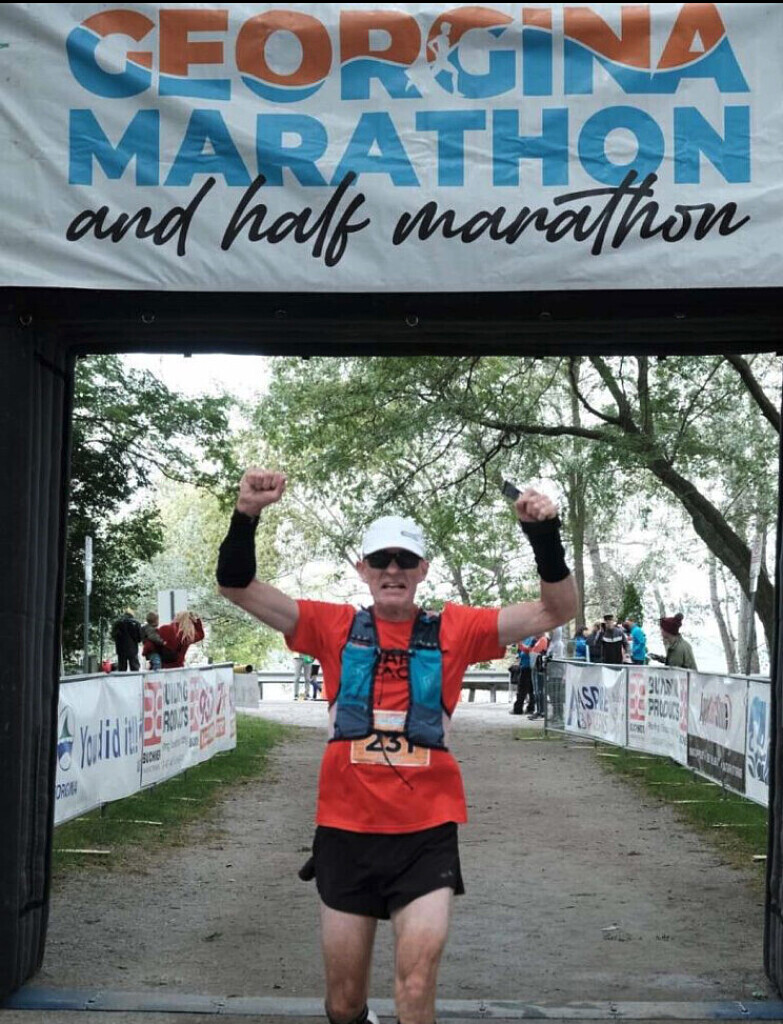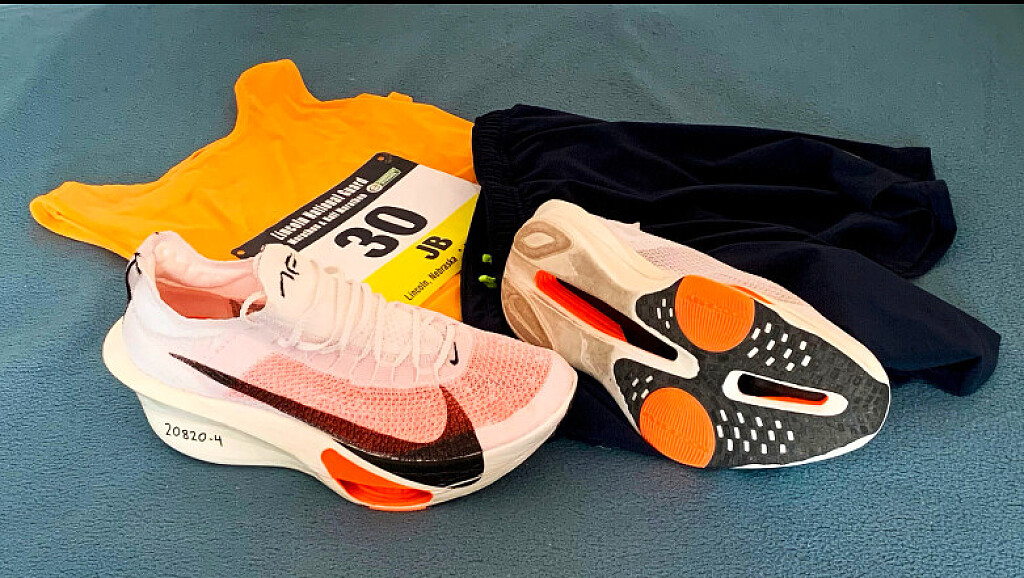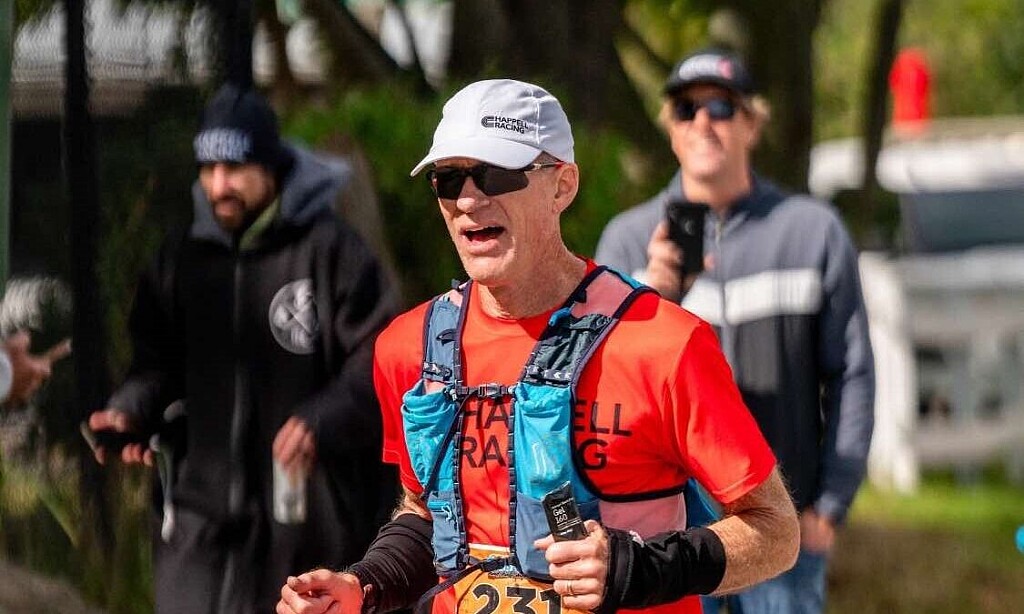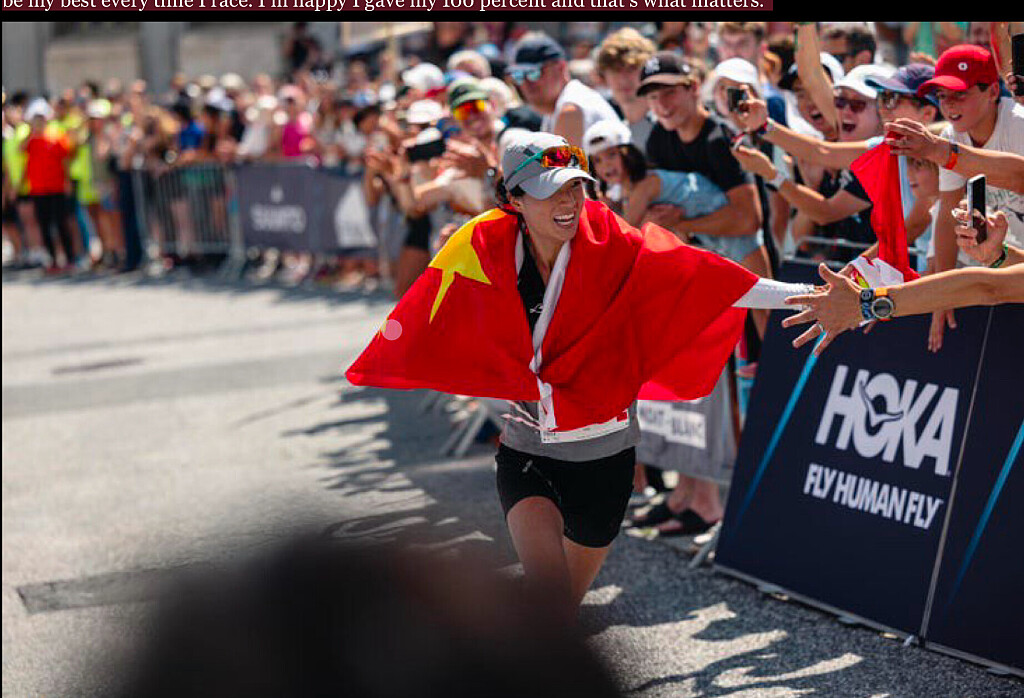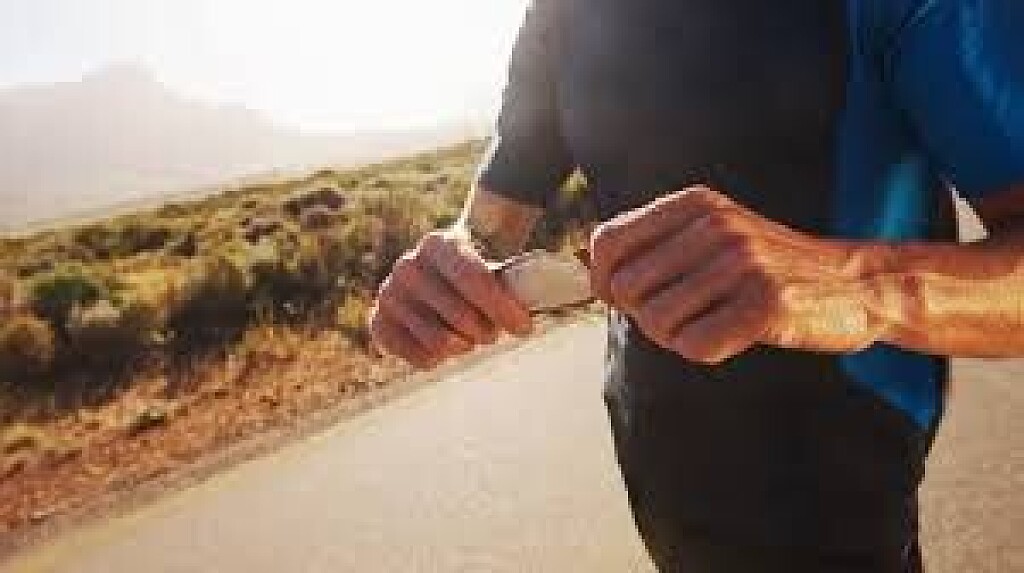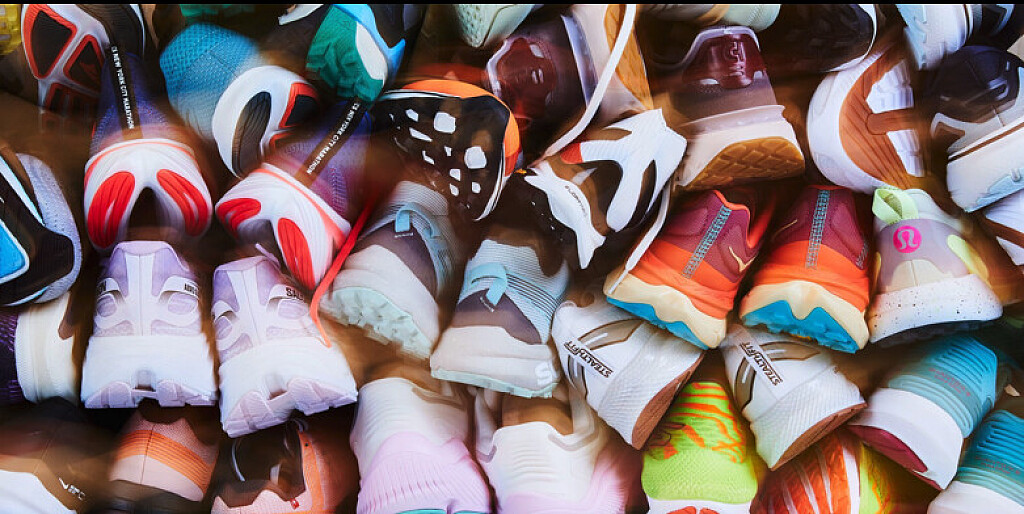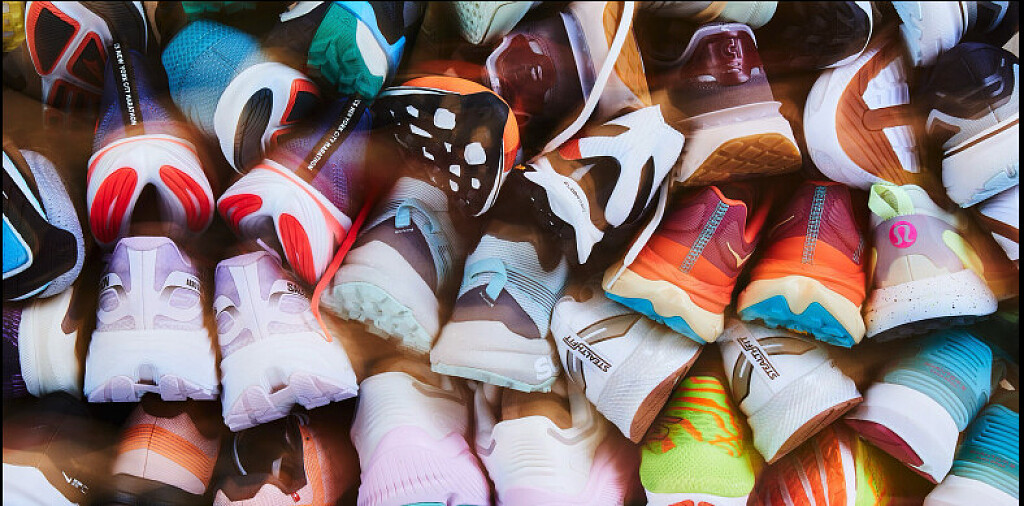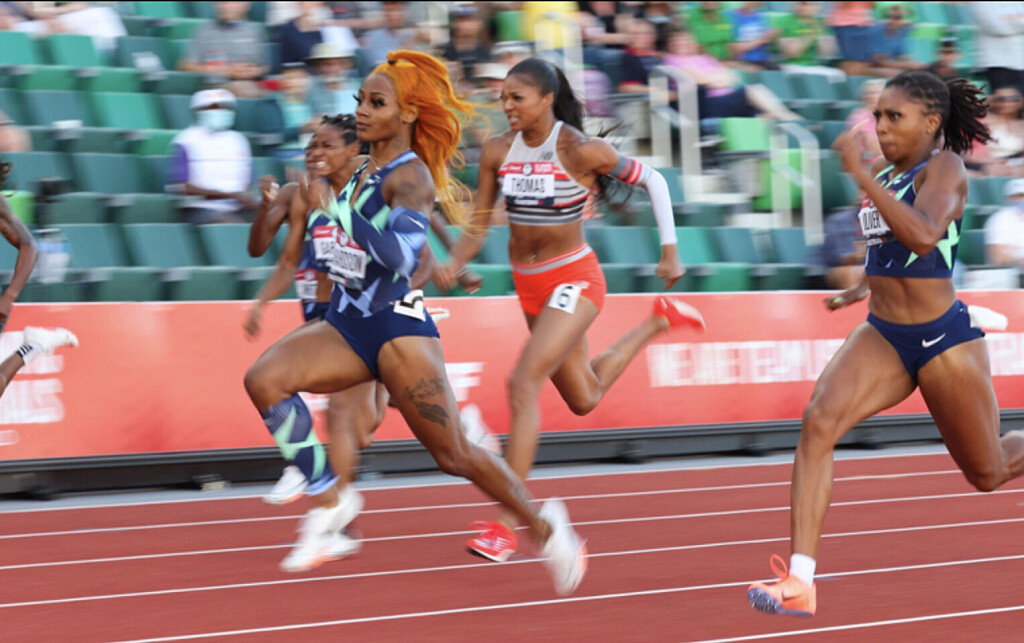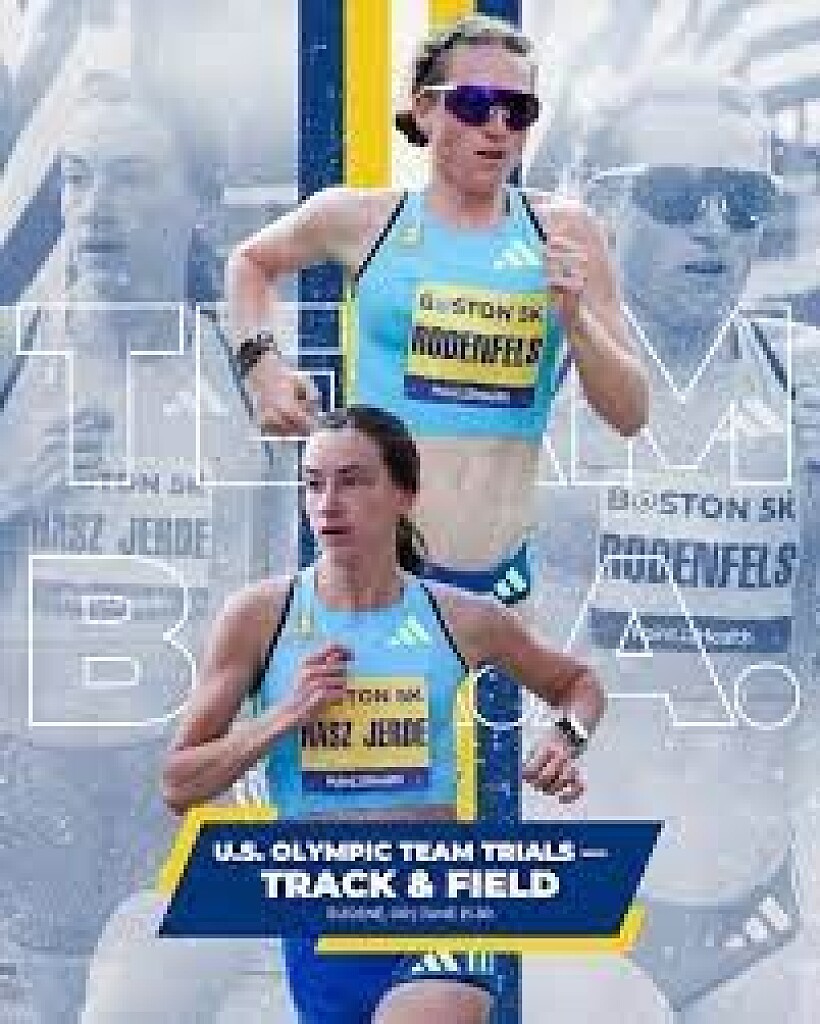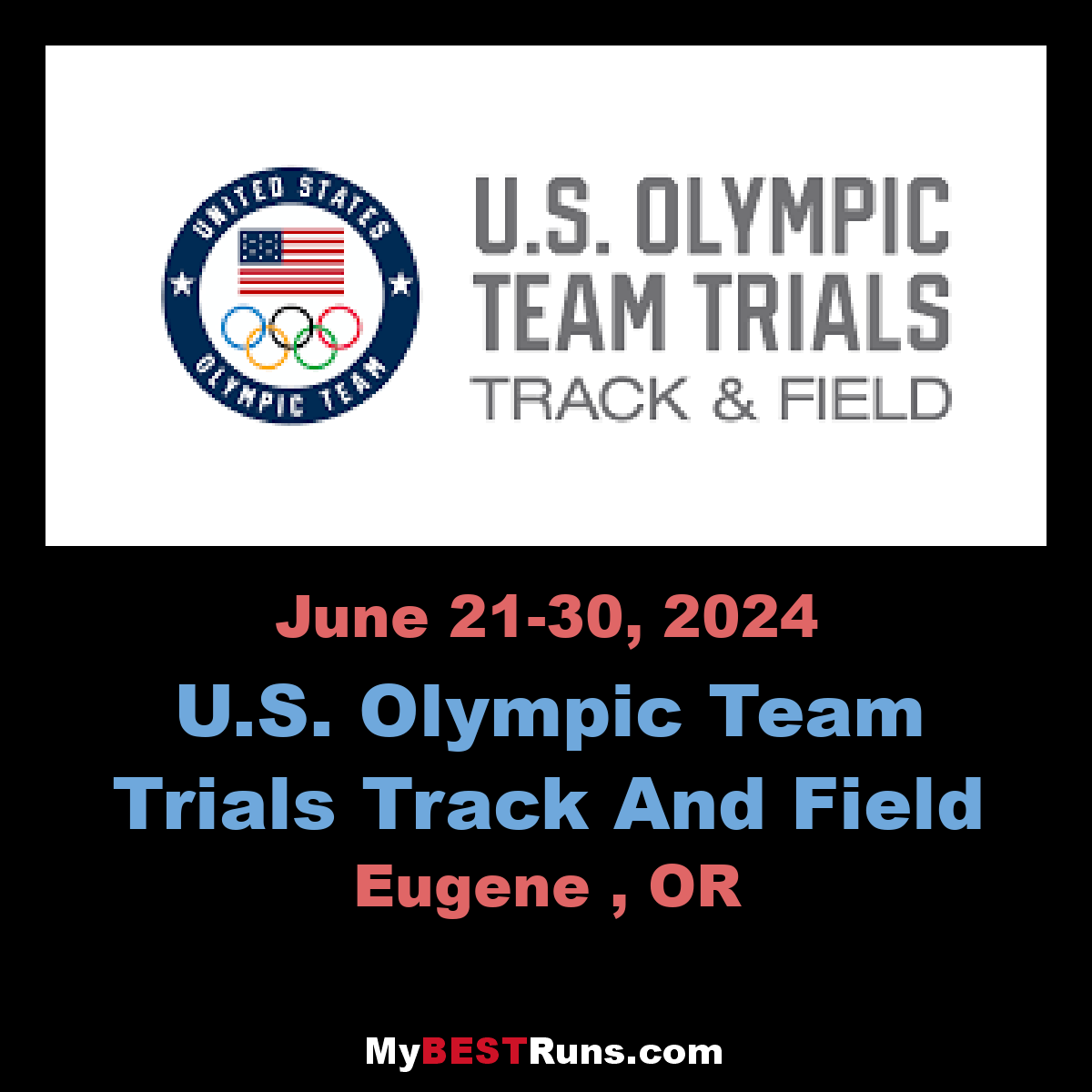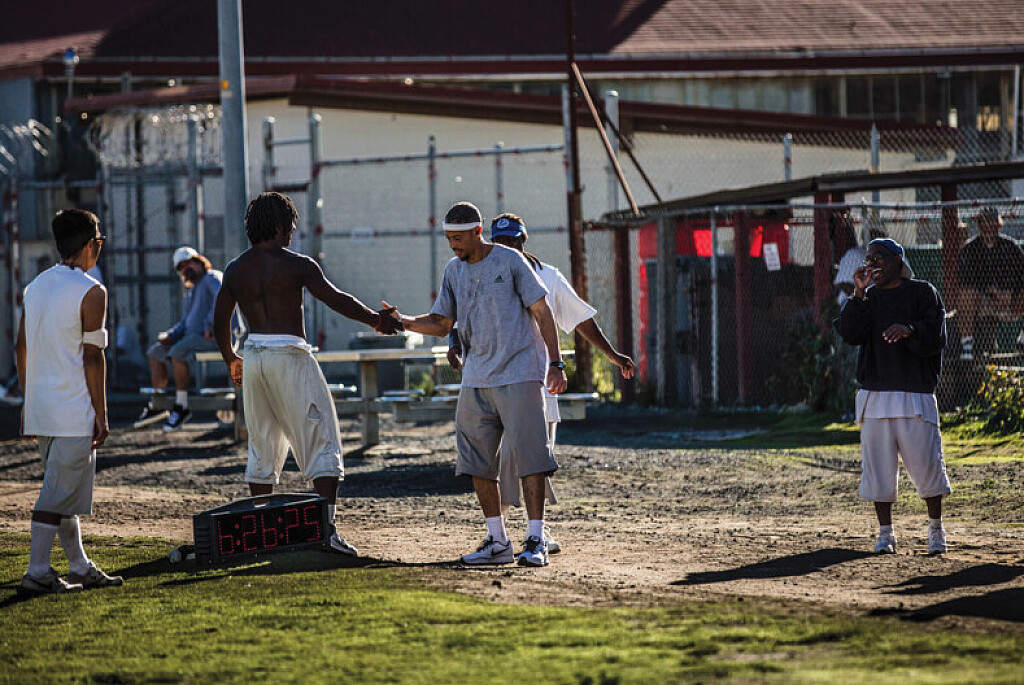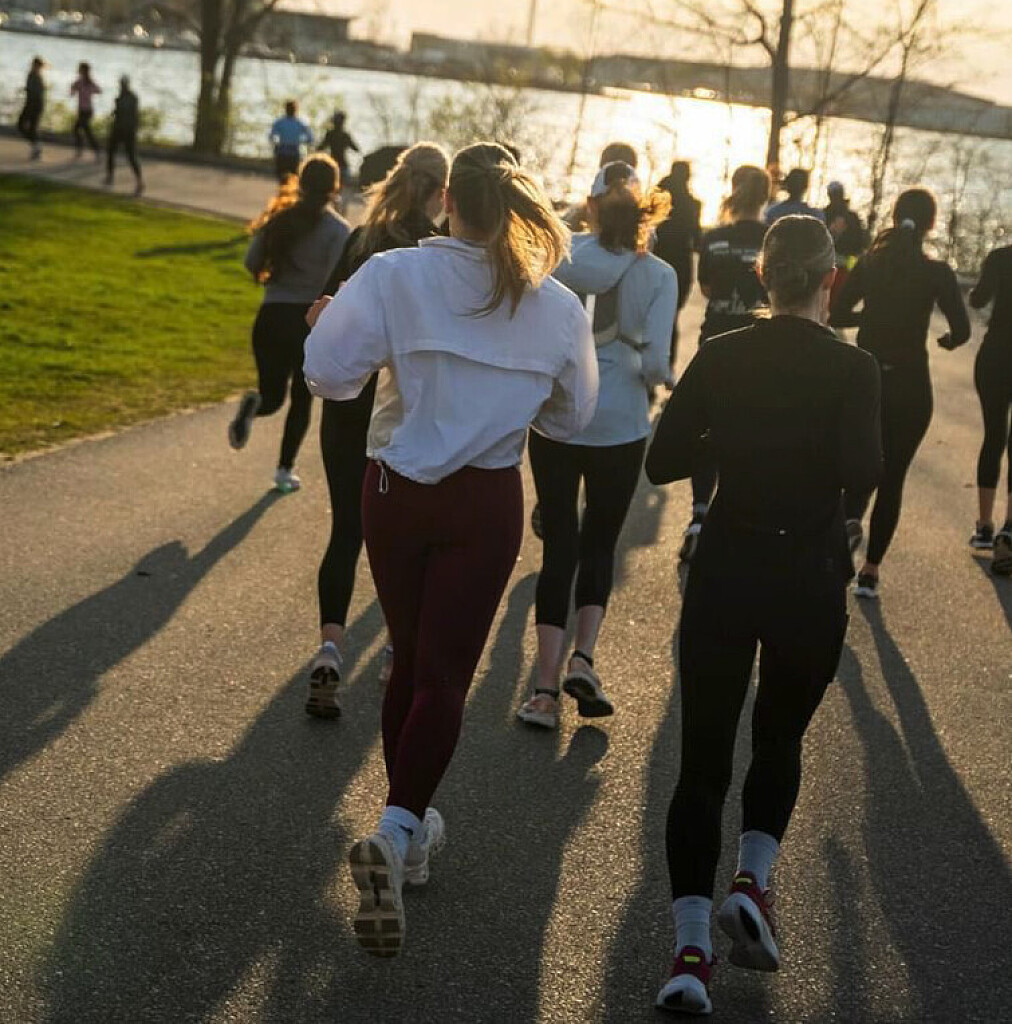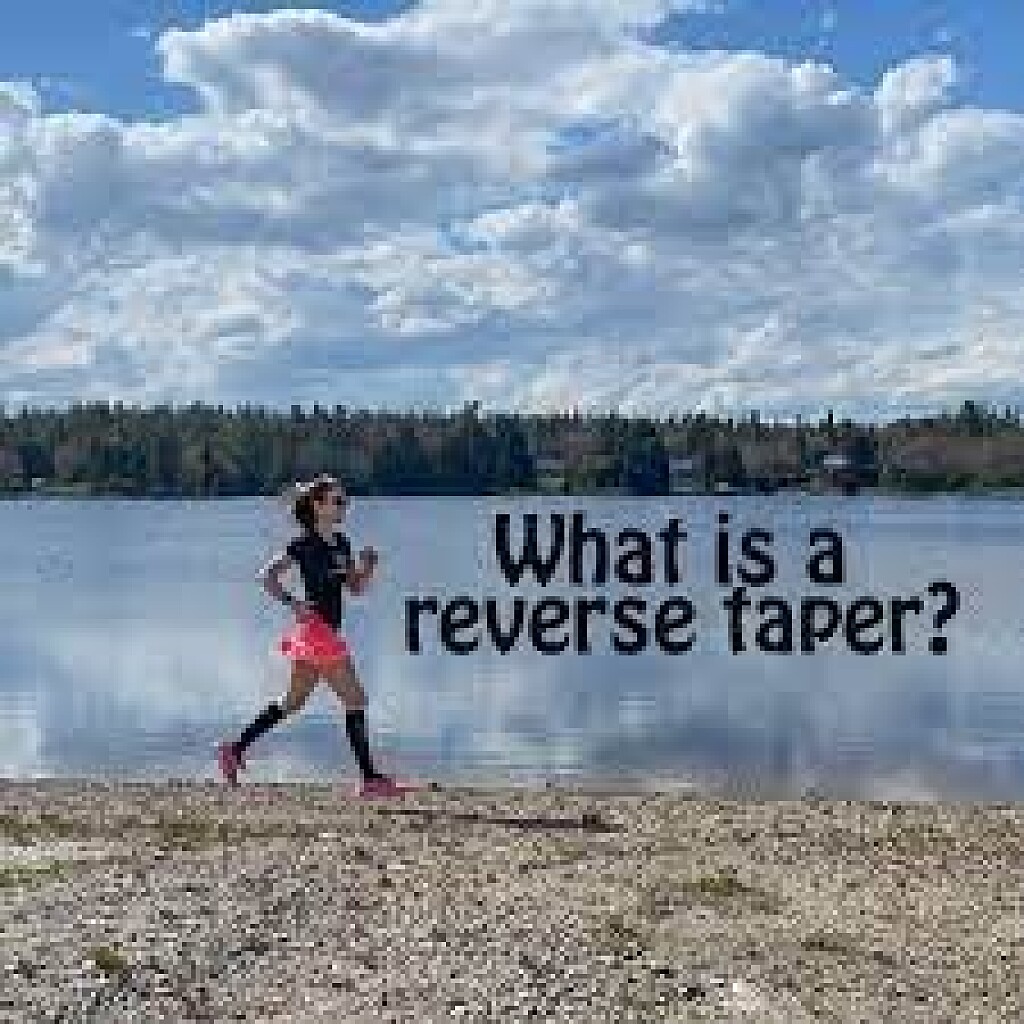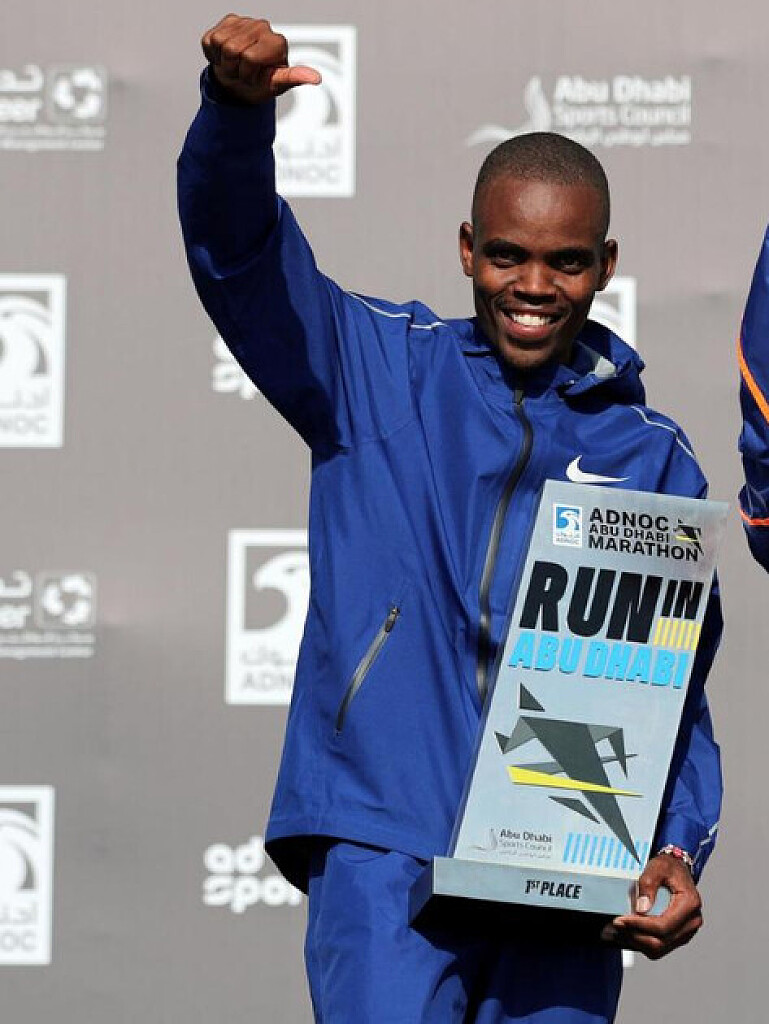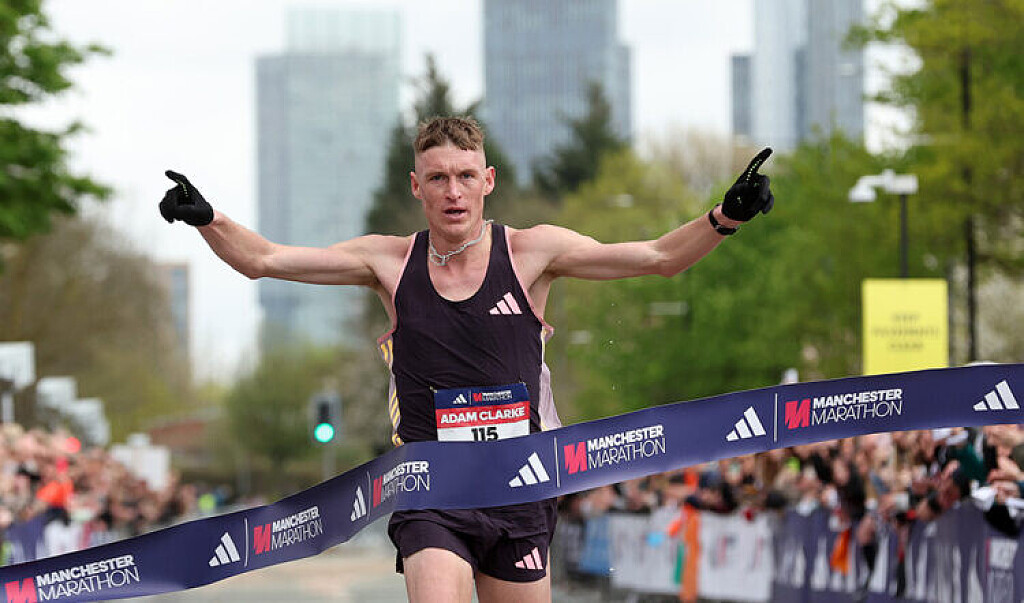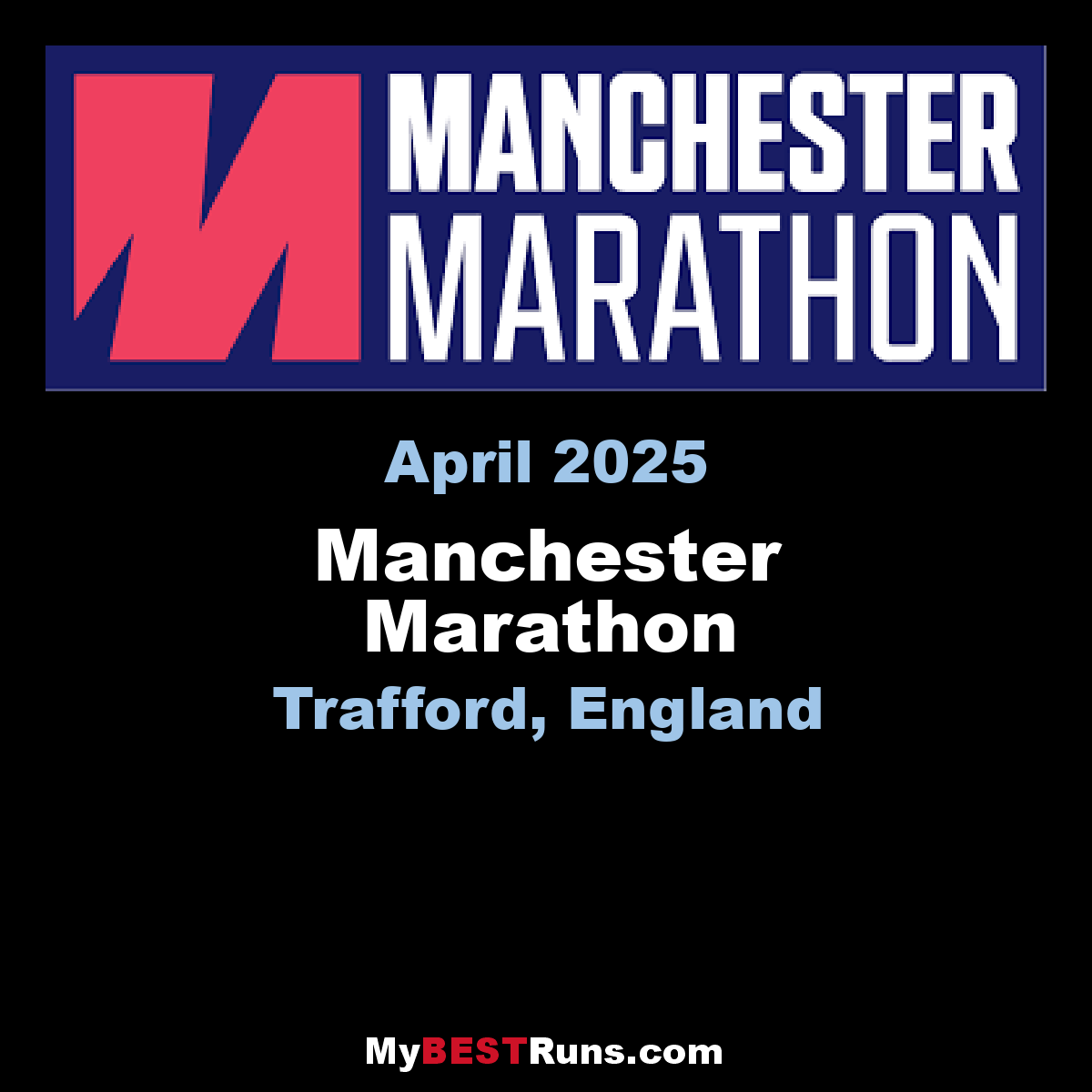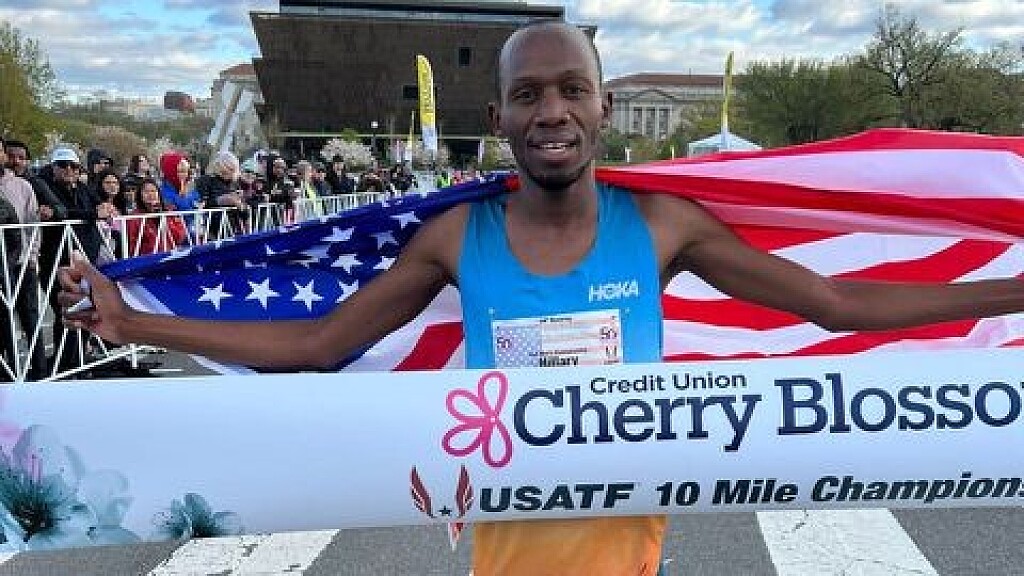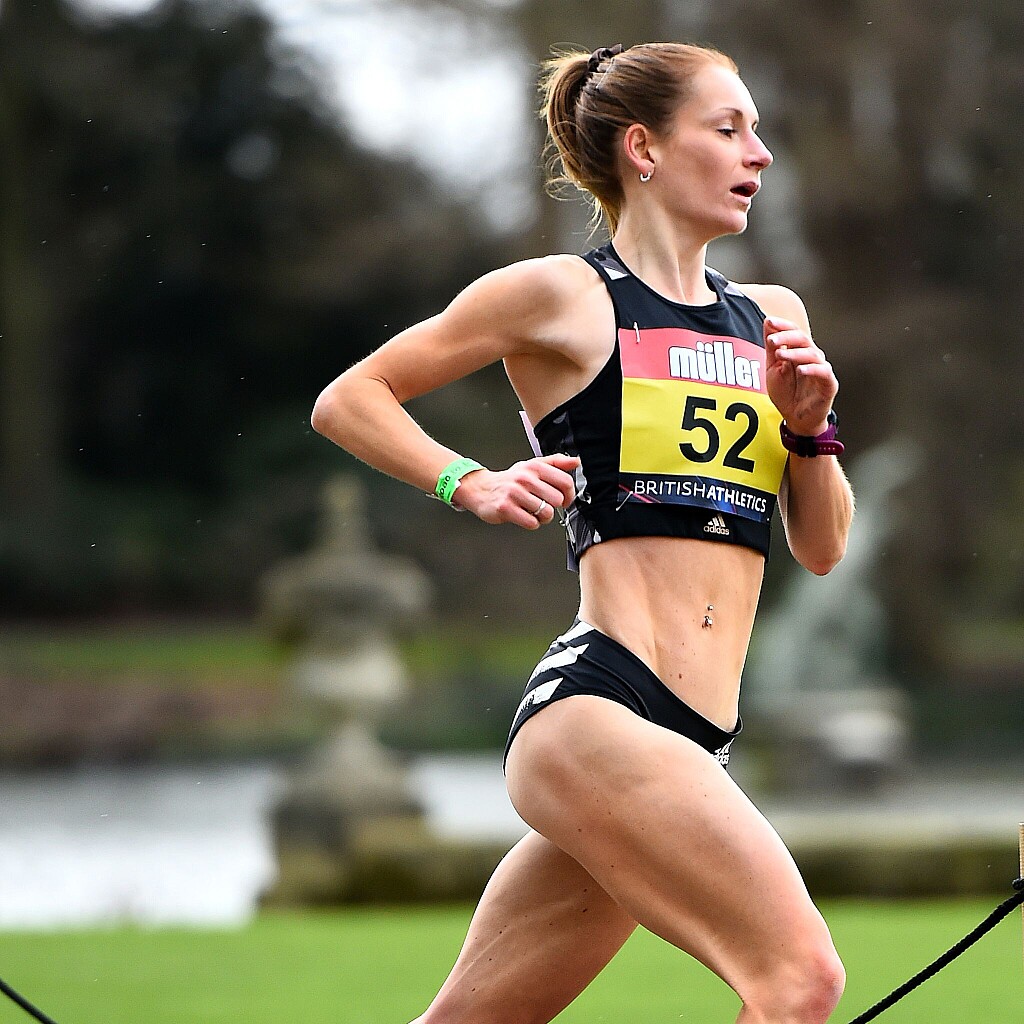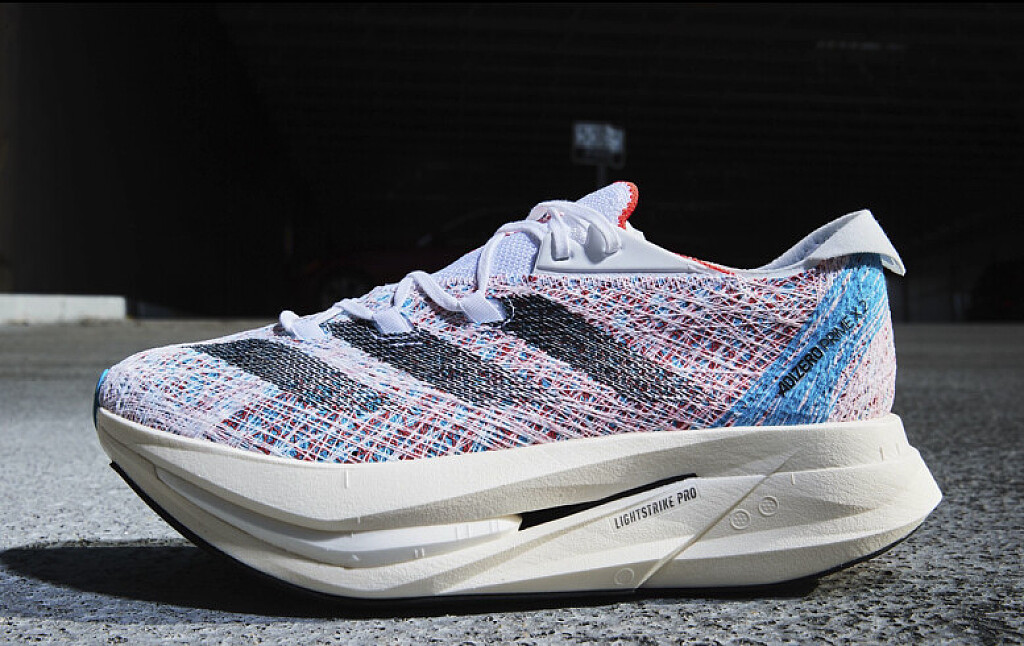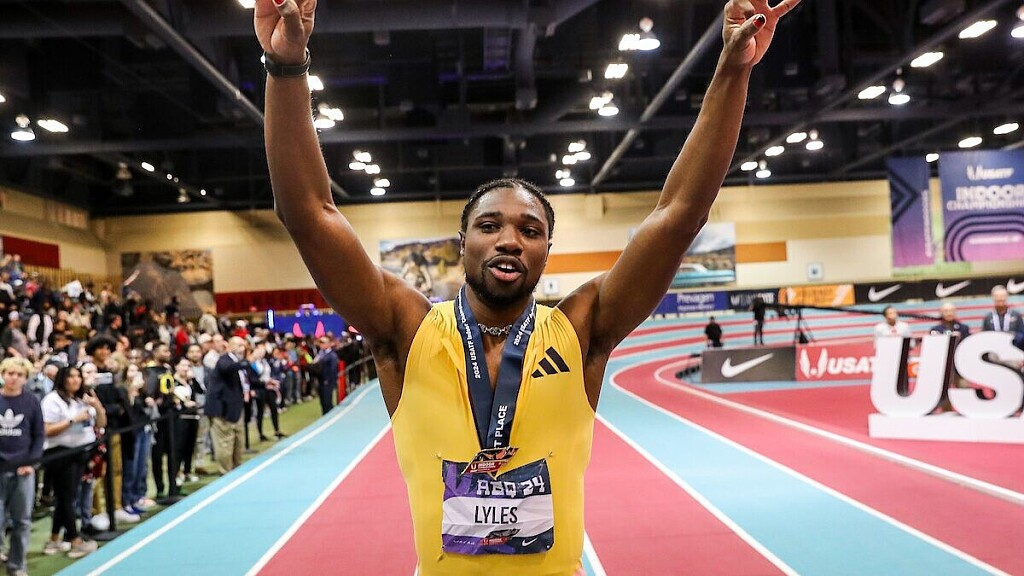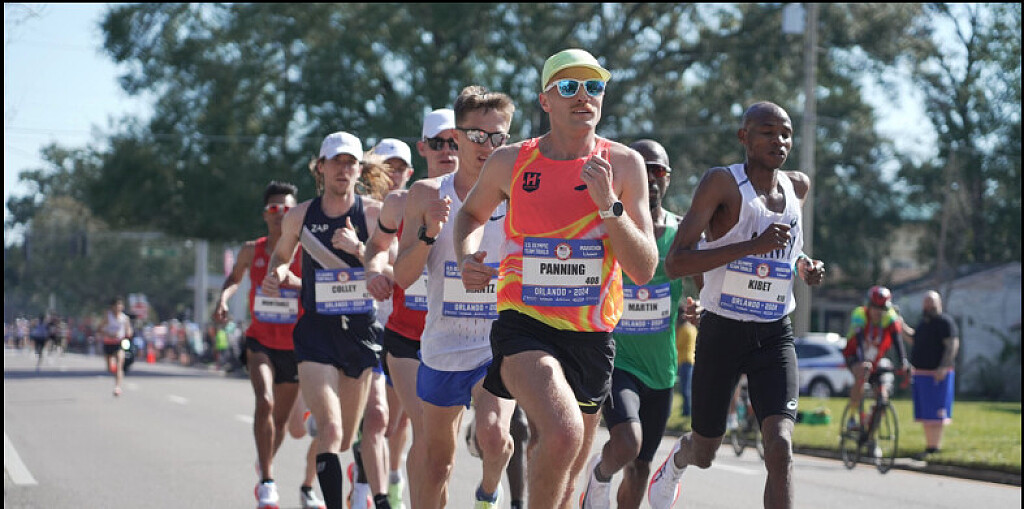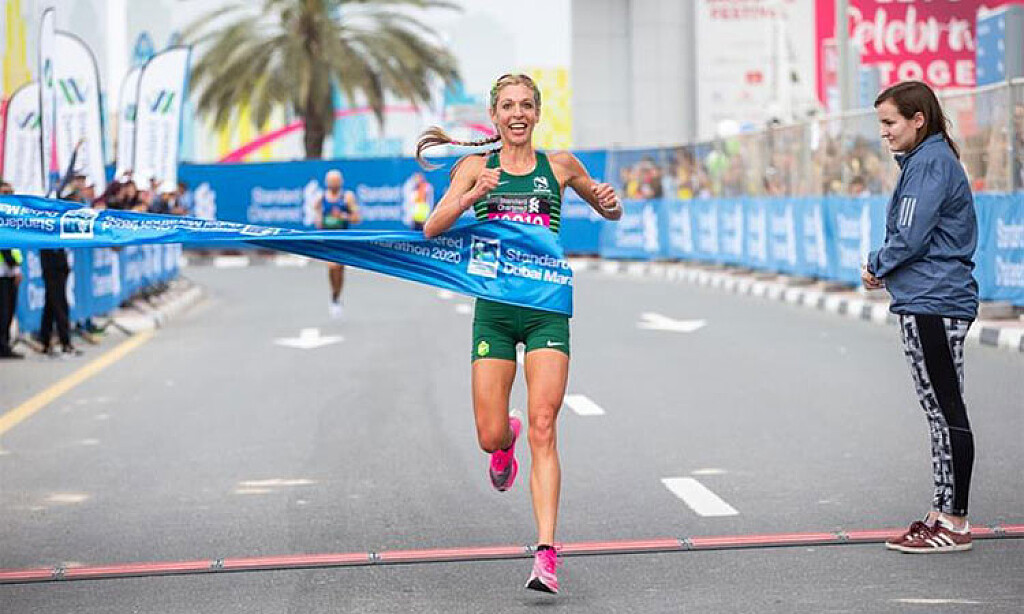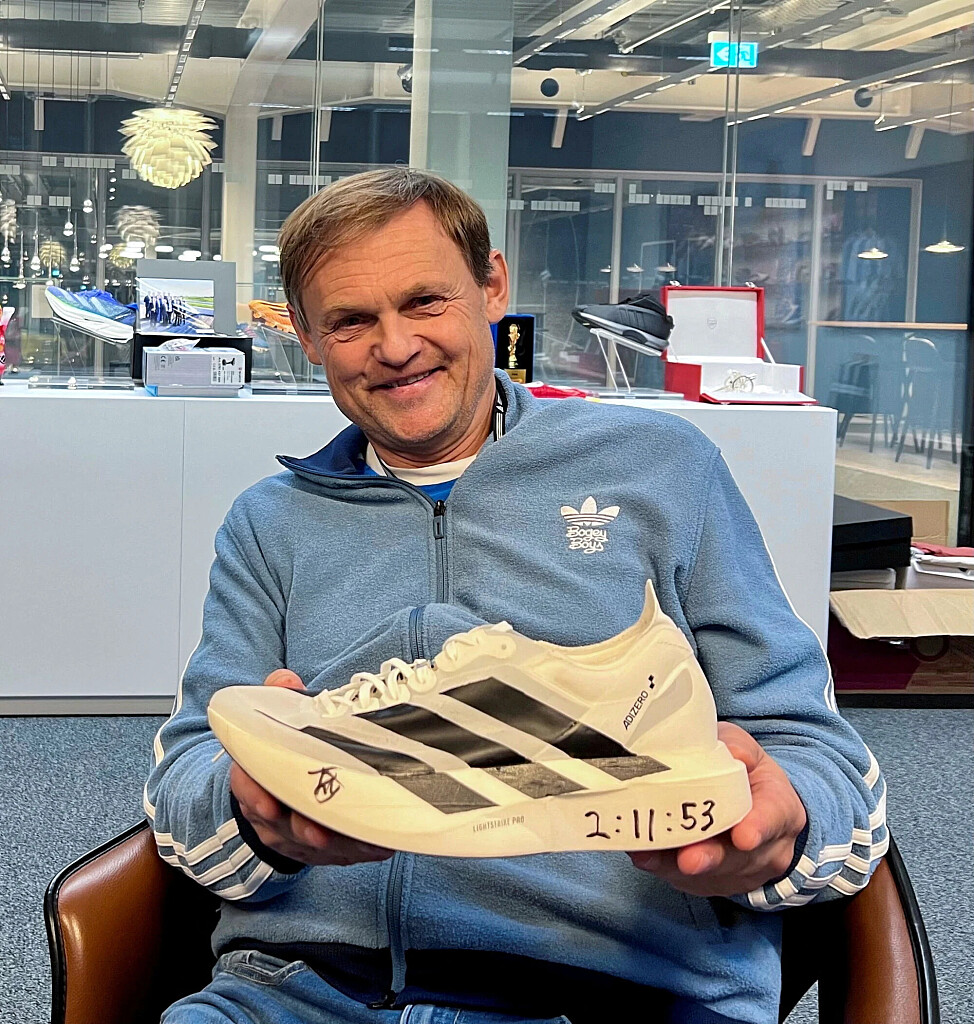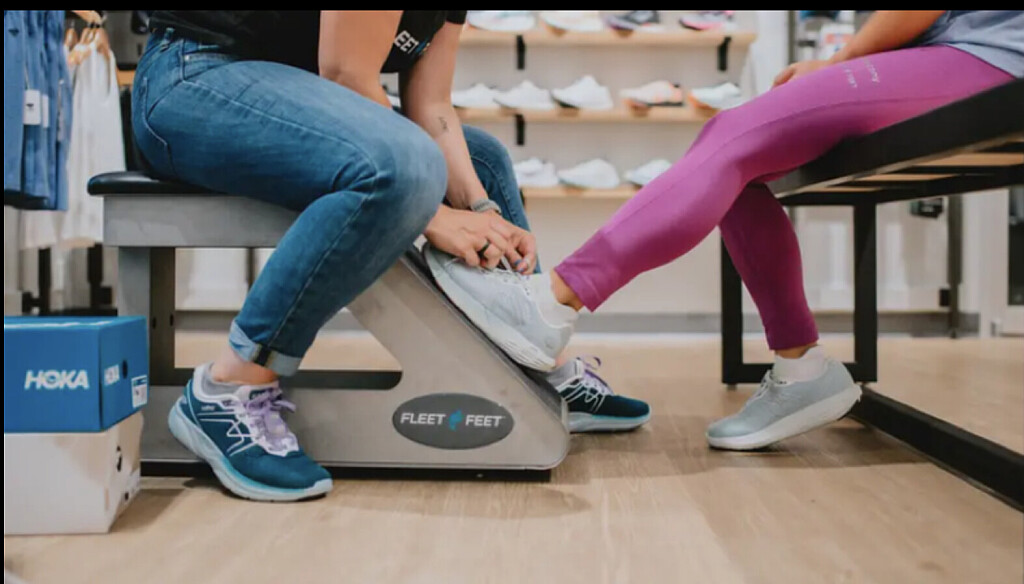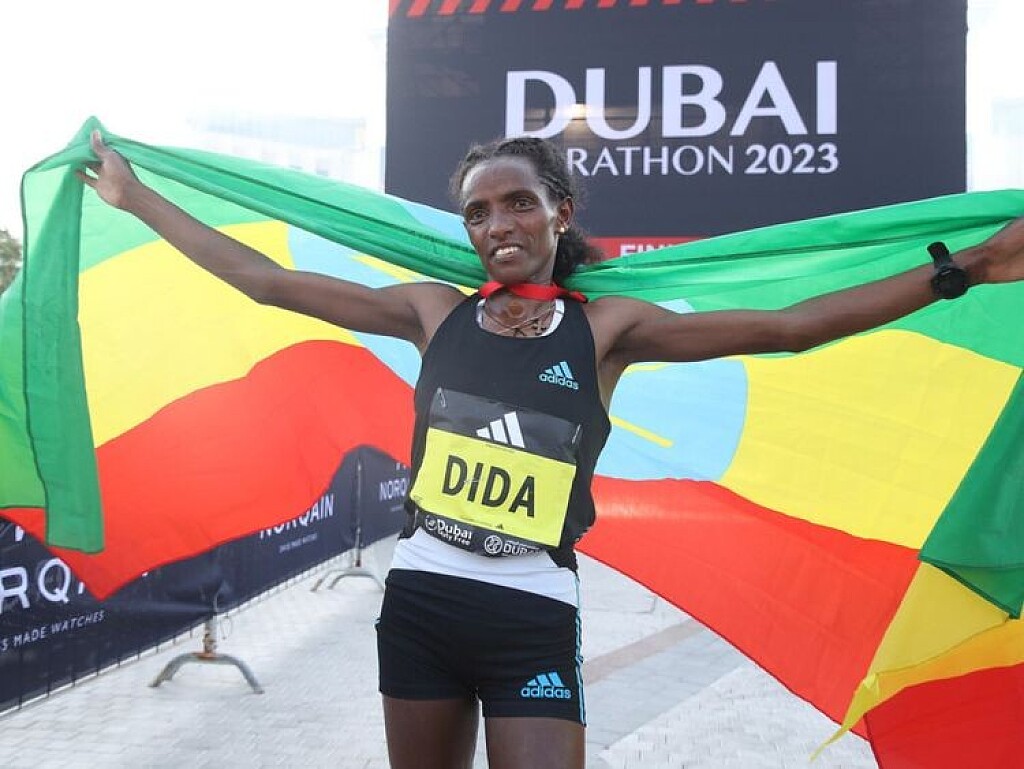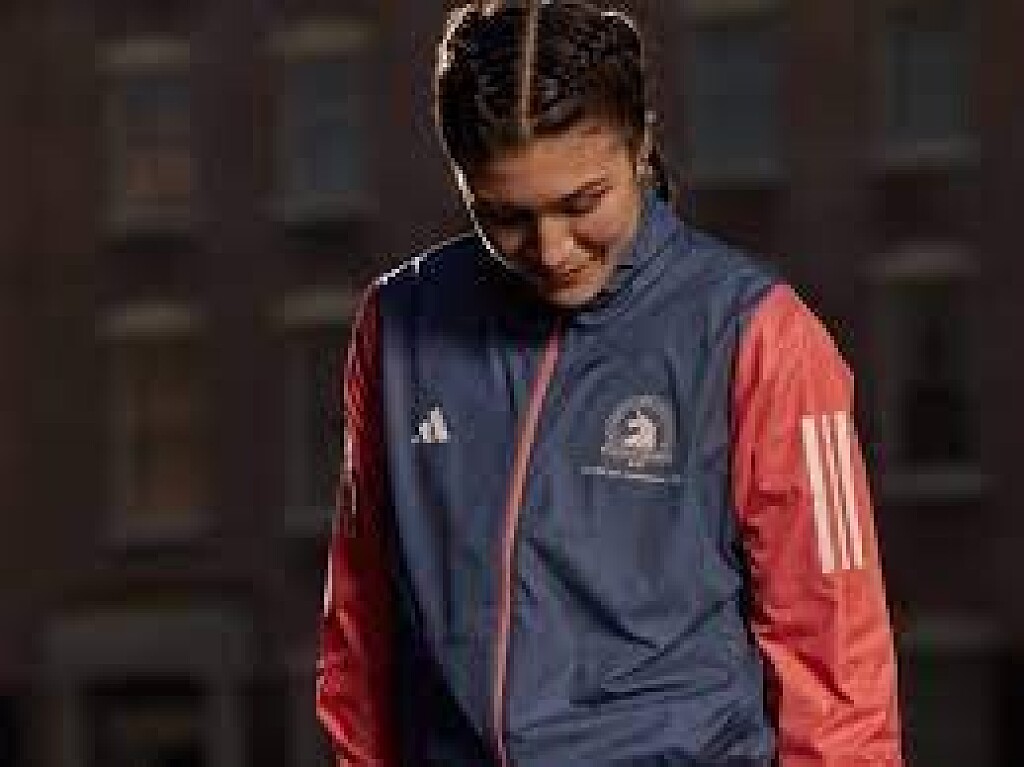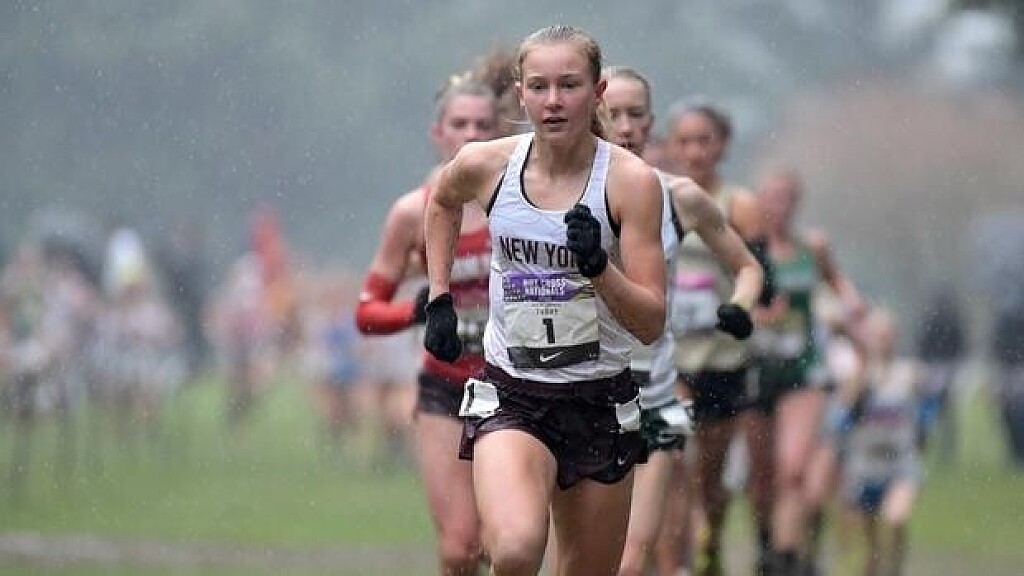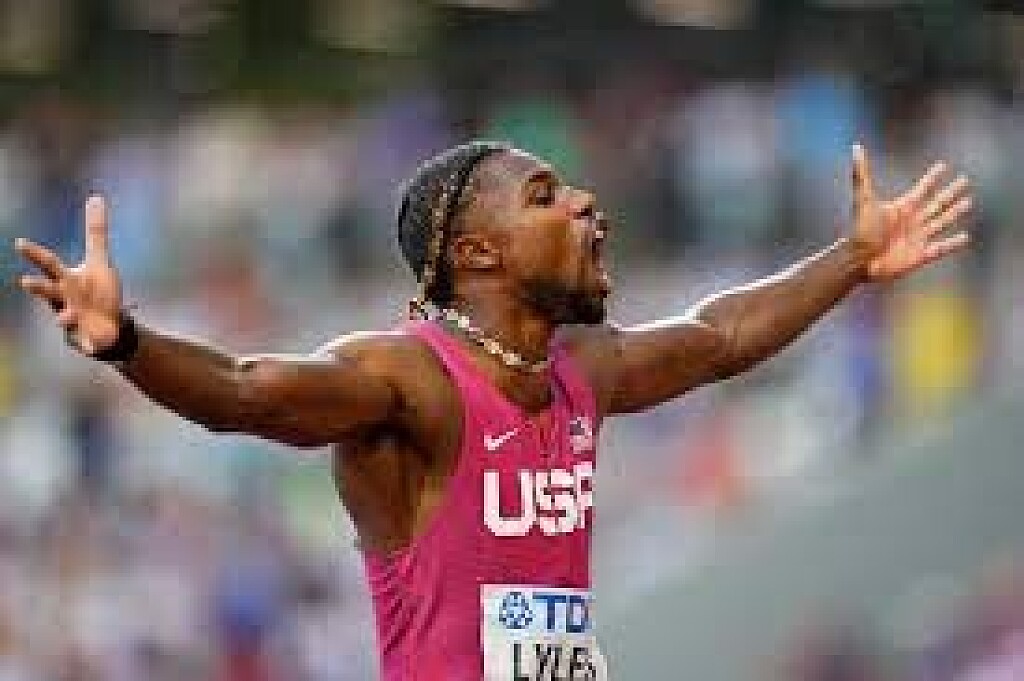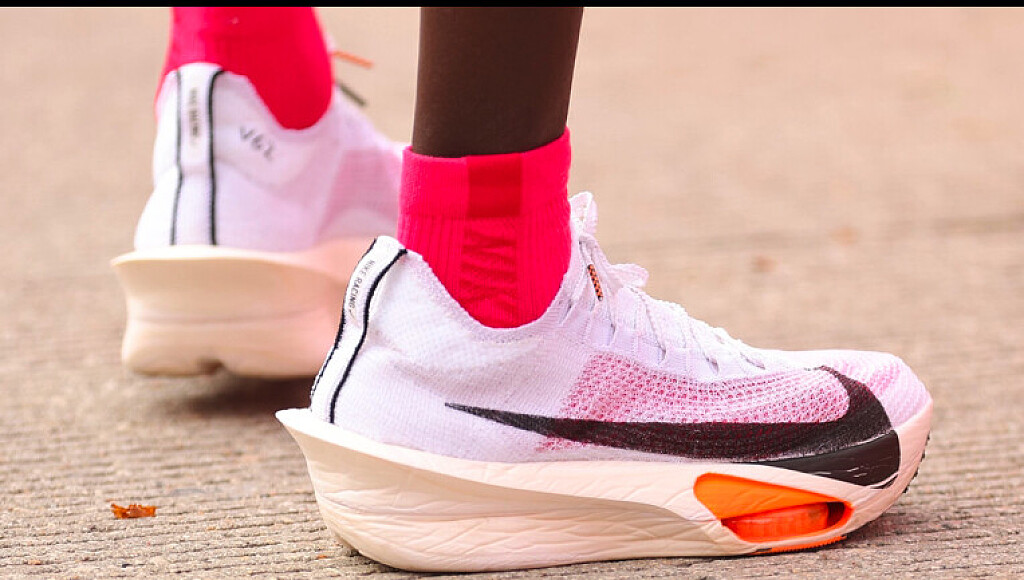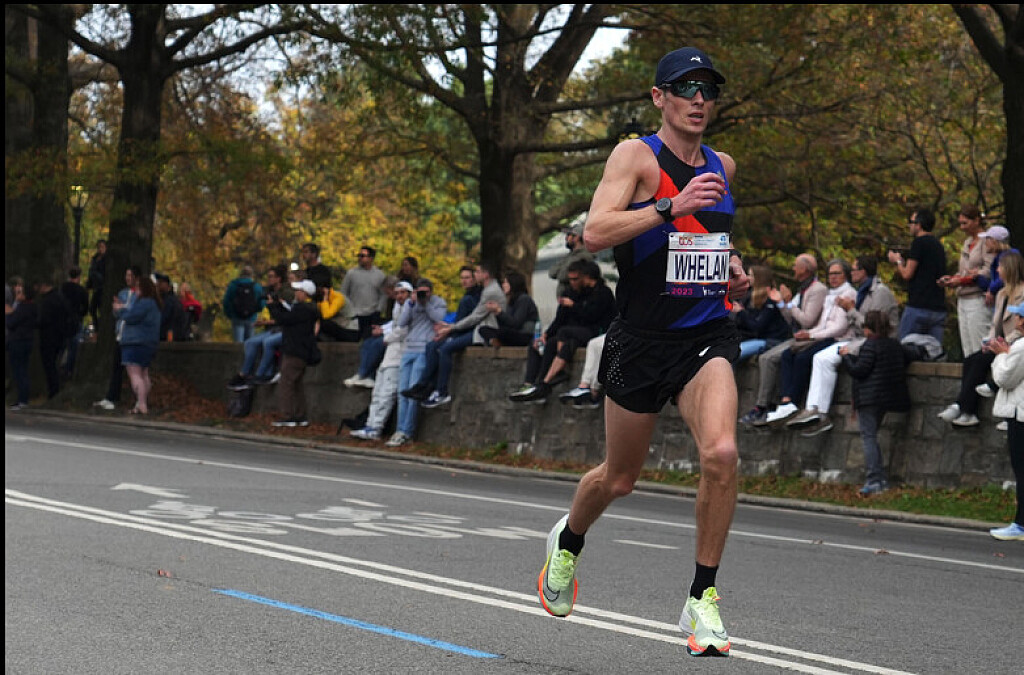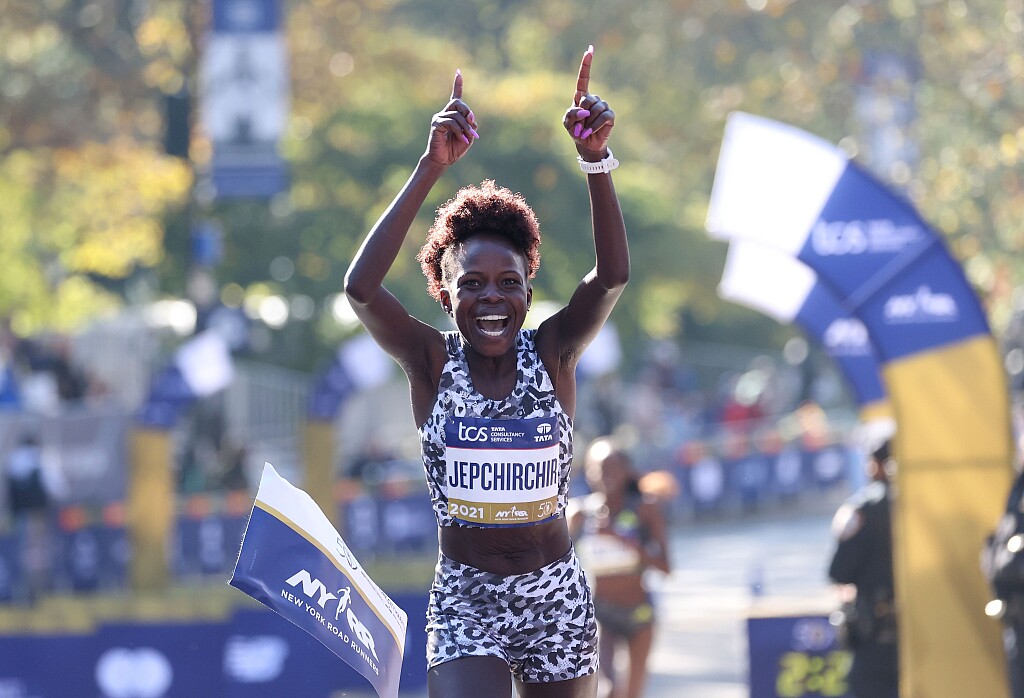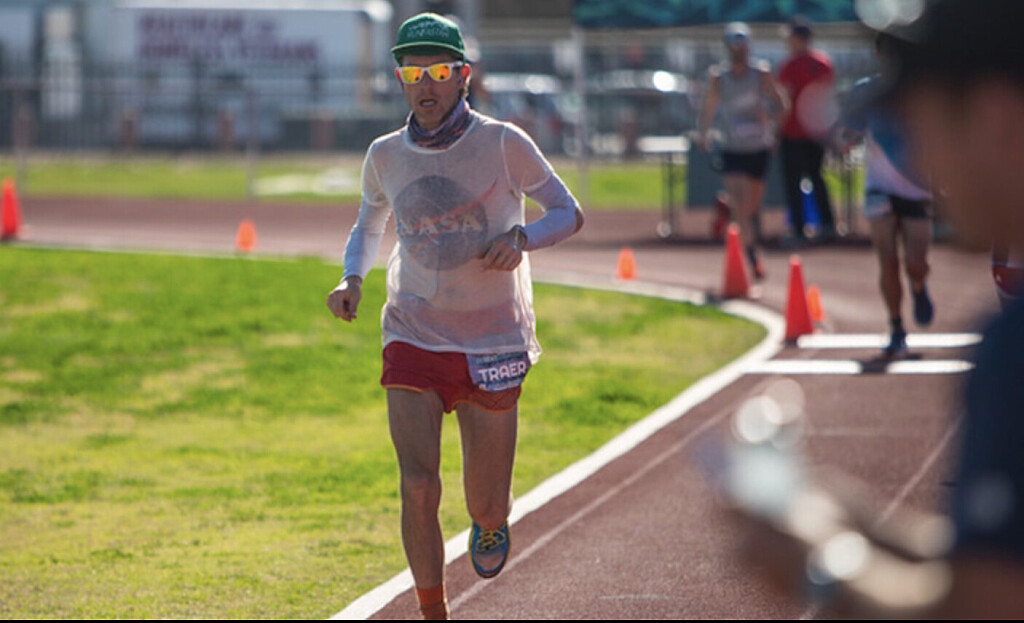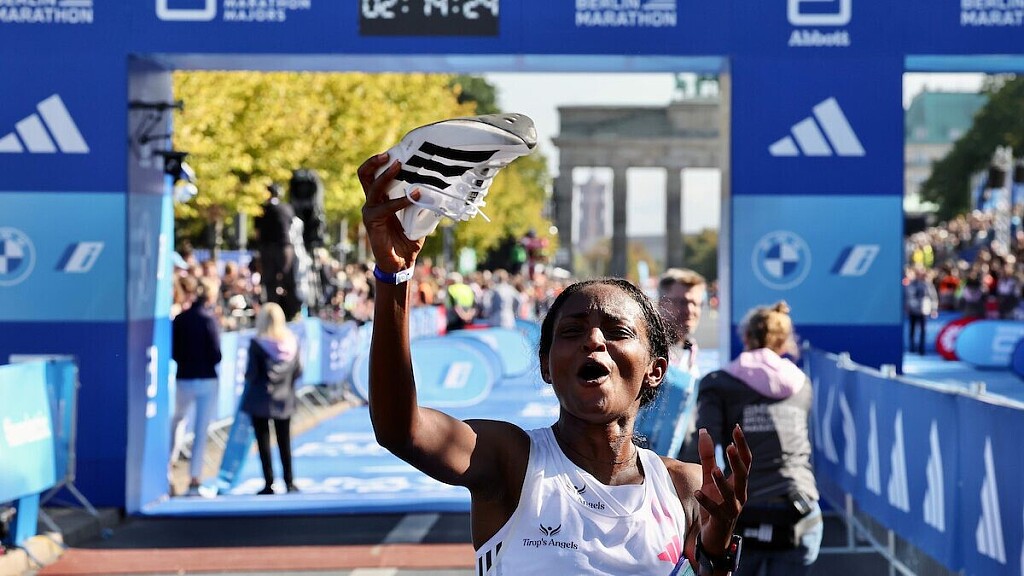Running News Daily
Running News Daily is edited by Bob Anderson. Send your news items to bob@mybestruns.com Advertising opportunities available. Train the Kenyan Way at KATA Kenya and Portugal owned and operated by Bob Anderson. Be sure to catch our movie A Long Run the movie KATA Running Camps and KATA Potato Farms - 31 now open in Kenya! https://kata.ke/
Index to Daily Posts · Sign Up For Updates · Run The World Feed
Articles tagged #Adidas
Today's Running News
Sebastian Sawe Leads the Way With Bold Anti-Doping Initiative Ahead of Berlin Marathon
Sebastian Sawe, the 2025 London Marathon champion and currently the fastest marathoner in the world, is preparing for his third career marathon on September 21 in Berlin. Determined to ensure his performances are beyond question, Sawe has taken an unprecedented step: partnering with the Athletics Integrity Unit (AIU) to undergo one of the strictest anti-doping programs ever seen in the sport.
In collaboration with his management team and adidas, Sawe’s program includes:
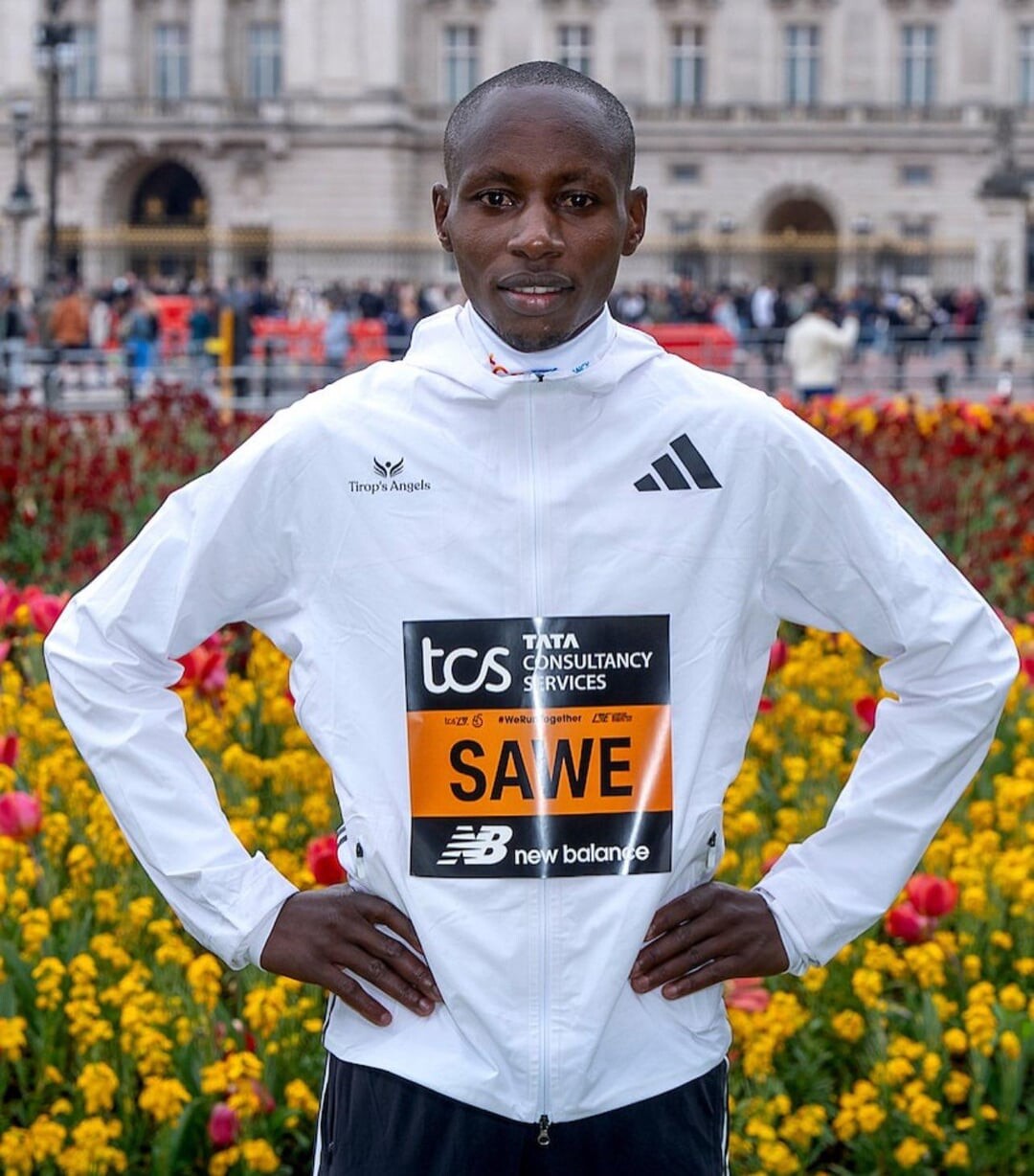
• A minimum of 25 anti-doping tests in the two months leading up to Berlin.
• Surprise, out-of-competition testing under the most advanced laboratory protocols.

• Complete independence in testing, with no prior notice given to Sawe or his team.
• Full financial support from adidas, his primary sponsor.
Explaining his decision, Sawe said:
“I am tired of reading constant doubts and accusations whenever a Kenyan athlete performs well. I acknowledge that doping is a real issue in our country, and ignoring it would be a mistake. We must face it, work with organizations like AIU and World Athletics, and fight this problem that feels like a cancer for Kenyan athletes. My hope is to set an example, encourage others to act, and show that clean performances are possible. Above all, I want people to know that when I line up in Berlin, I am clean, and my results should not be questioned just because I am Kenyan.”
The testing officially began on July 25.
Sawe’s initiative comes at a crucial moment, as Kenya’s Anti-Doping Agency was recently declared non-compliant with WADA’s code. While the agency has 21 days to contest the ruling and implement corrective measures, Sawe’s leadership highlights a proactive and athlete-driven path forward.
As he builds toward Berlin, Sawe is not only racing for victory but also for the integrity of Kenyan athletics, proving that world-class performances can and must be achieved clean.
by Boris Baron
Login to leave a comment
Nico Young Shatters American Record with 12:45.27 in Oslo Diamond League 5000m
In a performance that shook the foundations of U.S. distance running, Nico Young stormed to a stunning 12:45.27 at the Oslo Diamond League on June 12. Not only did he win the race, but he also demolished the American 5000m record, vaulting himself into the top ranks of global distance running.
The 21-year-old’s breakthrough marks the fastest 5000m ever run by an American and the fourth-fastest time in world history outdoors. His average lap was 61.4 seconds—roughly 4:06 per mile or 2:33 per kilometer—executed against one of the deepest fields ever assembled.
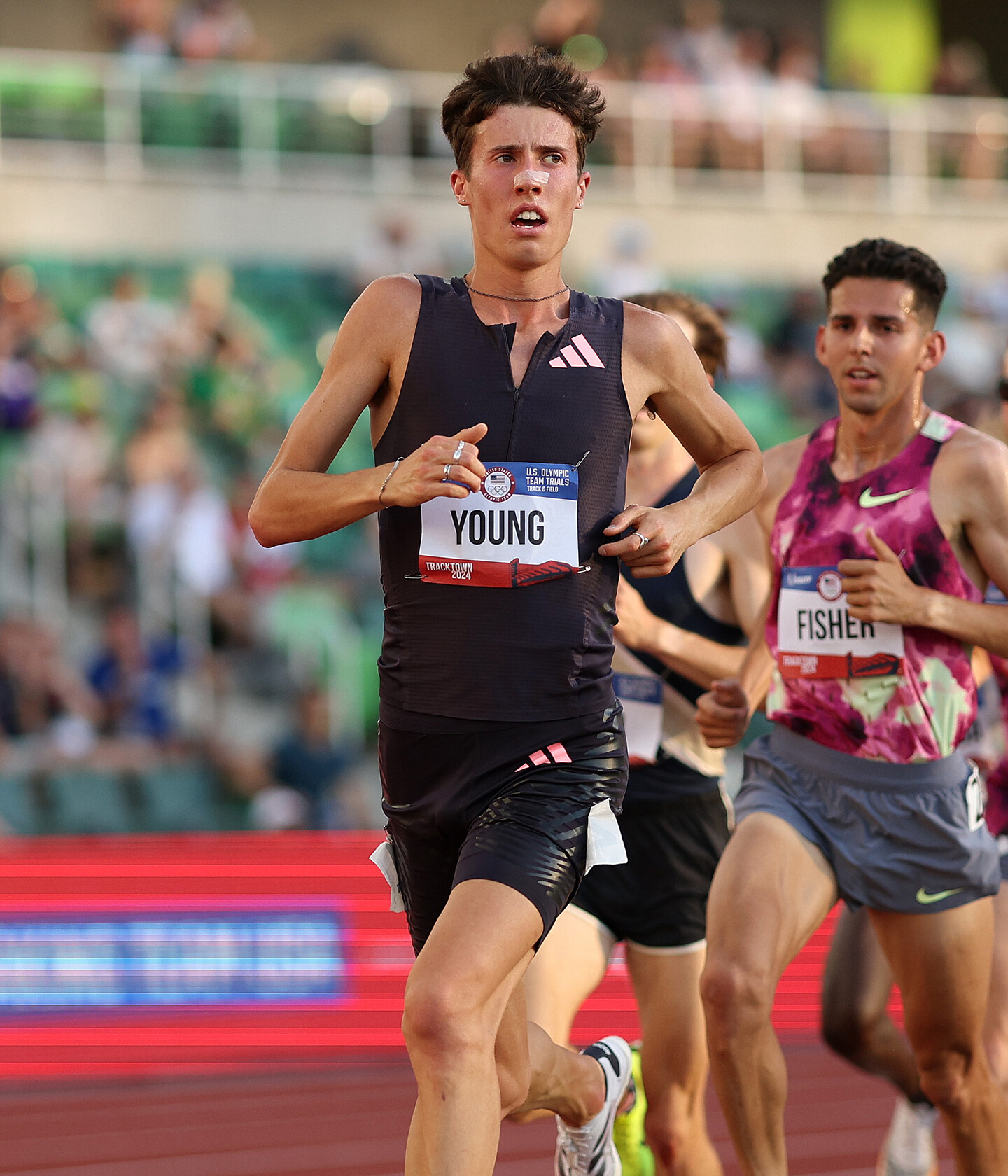
Standout Performances with Official Times
• Nico Young (USA) – 12:45.27 – ?? American Record
• George Mills (GBR) – 12:46.59 – ?? British National Record
• Thierry Ndikumwenayo (Burundi) – 12:47.67 – Personal Best
• Dominic Lokinyomo Lobalu (Switzerland) – 12:50.87 – ?? Swiss National Record
This was a race defined by speed, grit, and history-making performances. Eight athletes reportedly broke 12:51—unprecedented in Diamond League competition. National records fell on three continents.
Young’s Path to Greatness

Nico Young’s rise began at Newbury Park High School, where he set high school records and led his team to national titles. At Northern Arizona University, he continued to dominate, becoming a multi-time NCAA All-American before turning pro with Adidas.
Training under coach Mike Smith, Young has honed not just his endurance but also his race instincts—perfectly on display in Oslo as he timed his final surge to perfection against the best in the world.
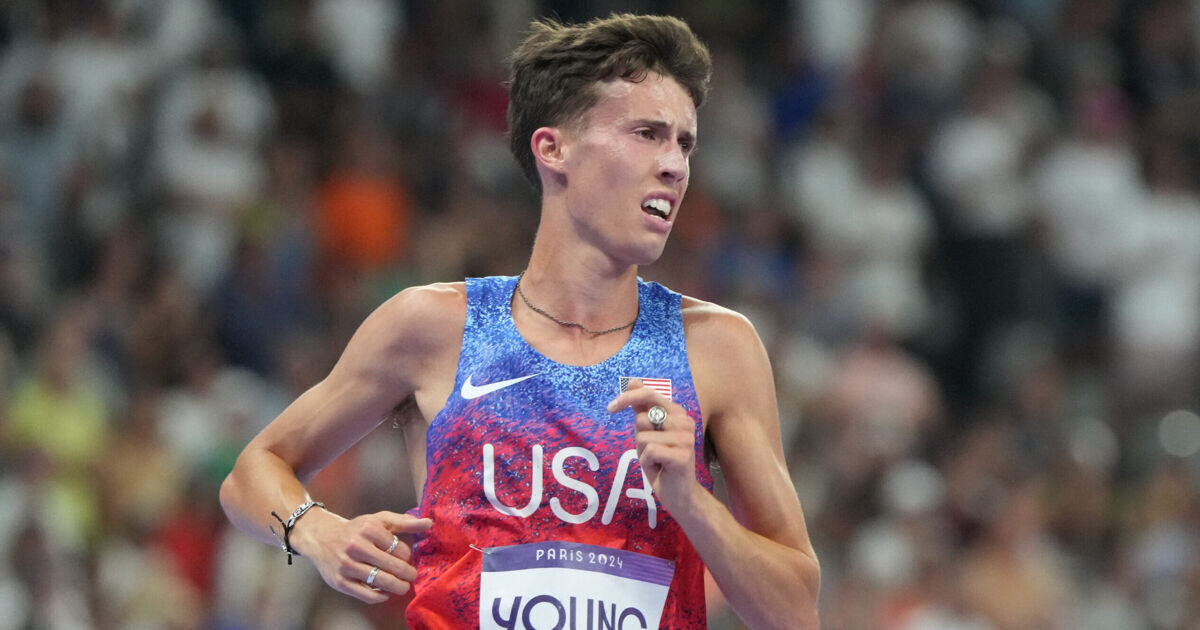
A New Standard
Young’s 12:45.27 surpasses Grant Fisher’s previous American record of 12:46.96 set in 2022. His time now ranks him behind only three men in history: Joshua Cheptegei, Kenenisa Bekele, and Hagos Gebrhiwet.
With this performance, Nico Young has redefined what’s possible for American distance runners and firmly positioned himself as one of the most exciting young talents in the sport.
by Boris Baron
Login to leave a comment
Super Shoes or Super Runners? How Carbon-Plated Racing Shoes Are Reshaping the Distance Running World
A Bold Step Forward—or Too Much?
The eye-catching shoes in the images, with their bright yellow color and radical stack height, exemplify the cutting-edge engineering behind today’s carbon-plated distance racing shoes. These models, possibly from Puma’s Nitro range, showcase an exaggerated rocker design, thick midsoles, and strategically placed carbon plates, all intended to maximize energy return. However, this aggressive design pushes the limits of World Athletics regulations, which restrict stack heights to a maximum of 40mm for road races. If these shoes exceed that, they would be deemed illegal in sanctioned competitions—a fine line that highlights the tension between innovation and fairness in modern distance running.
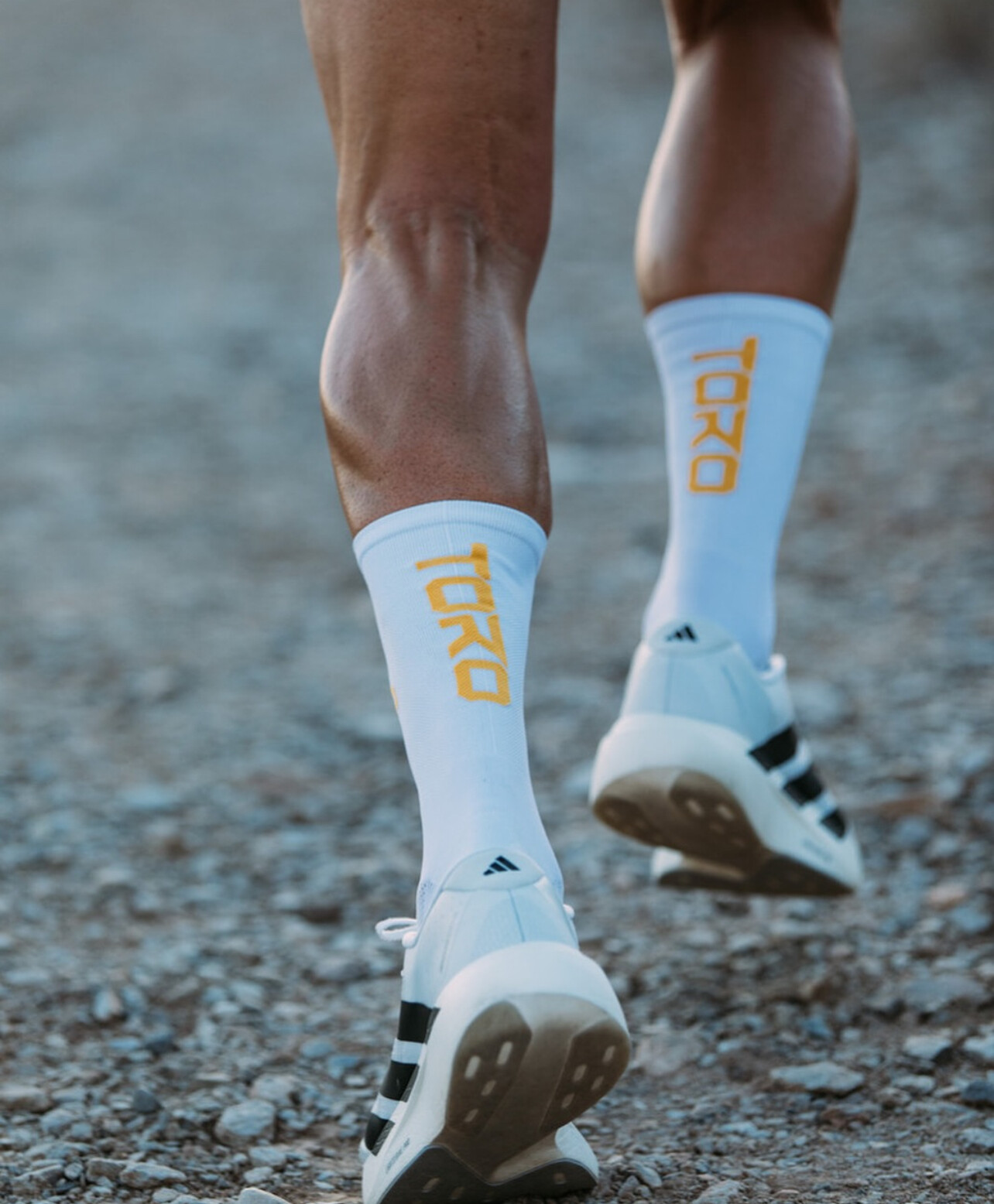
Over the past few years, the distance running community has witnessed a revolution, not just in athletic performance but in technology. At the heart of this transformation are the carbon-plated “super shoes,” with models like the Nike Alphafly 3, Adidas Adizero Pro Evo 1, and Saucony Endorphin Elite capturing headlines—and finish lines.
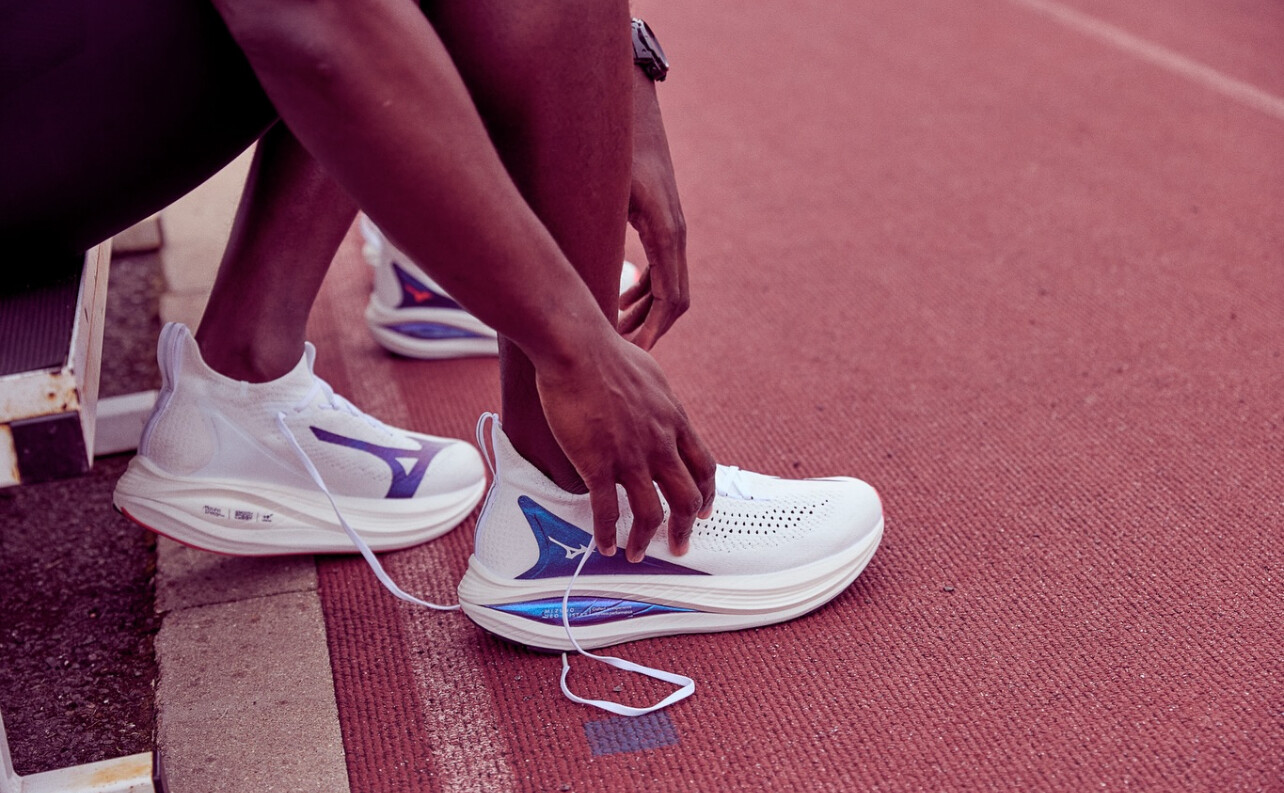
These shoes are more than just a flashy innovation. They represent a fusion of engineering, biomechanics, and material science aimed at optimizing energy return and minimizing fatigue. The secret lies in their construction: a lightweight, resilient foam midsole paired with a rigid carbon-fiber plate that creates a propulsive effect. Research has shown these super shoes can improve running economy by up to 4%, translating into crucial seconds—or even minutes—shaved off race times for elite athletes.
Marathon world records and personal bests are being rewritten at a blistering pace. From Eliud Kipchoge’s sub-two-hour marathon in a prototype Nike shoe to Tigst Assefa’s stunning women’s world record at the Berlin Marathon, the combination of human talent and advanced footwear is undeniable.
However, this technological leap hasn’t come without controversy. Critics argue that super shoes are blurring the line between natural ability and mechanical advantage, creating an uneven playing field. Access is also a concern: with many of these models retailing at $250 or more, elite athletes and well-funded programs often have a leg up on competitors who can’t afford the gear. Some purists feel this shift detracts from the simplicity and rawness of the sport, which historically prized grit and determination over gear.
Yet others argue that innovation is inevitable. After all, every era of distance running has had its technological advances, from cinder to synthetic tracks, from wool to moisture-wicking gear. Super shoes are merely the latest chapter in this ongoing evolution. They offer athletes a tool—how they use it is still up to them.
For amateur runners, these shoes are not just for the elites. Weekend warriors chasing personal records have embraced carbon-plated models, with many reporting improvements in comfort and reduced post-race soreness. But it’s essential to note that no shoe can replace proper training, nutrition, and race strategy.
Looking ahead, the super shoe debate will likely continue, especially as brands develop even more advanced models. World Athletics, the sport’s governing body, has already implemented regulations on shoe design and stack height to maintain some level of fairness.
In the end, the question remains: are we witnessing the rise of super runners, or is this the dawn of a new era where gear becomes as crucial as training? Either way, carbon-plated racing shoes have changed distance running forever—and there’s no turning back.
"As a master runner I like a shoe that does not have such a thick sole," says 77 year old lifetime runner Bob Anderson. "I have taken a few falls and these new super shoes could be a problem."
by Boris Baron
Login to leave a comment
Fauja Singh: The World’s Oldest Marathoner Who Redefined Human Potential Part One
Fauja Singh, born on April 1, 1911, in Beas Pind, Punjab, British India, is widely celebrated as the world’s oldest marathon runner. His remarkable journey from a quiet farming life to global athletic acclaim has inspired millions, proving that age is no barrier to endurance, purpose, or reinvention.
From Tragedy to Triumph
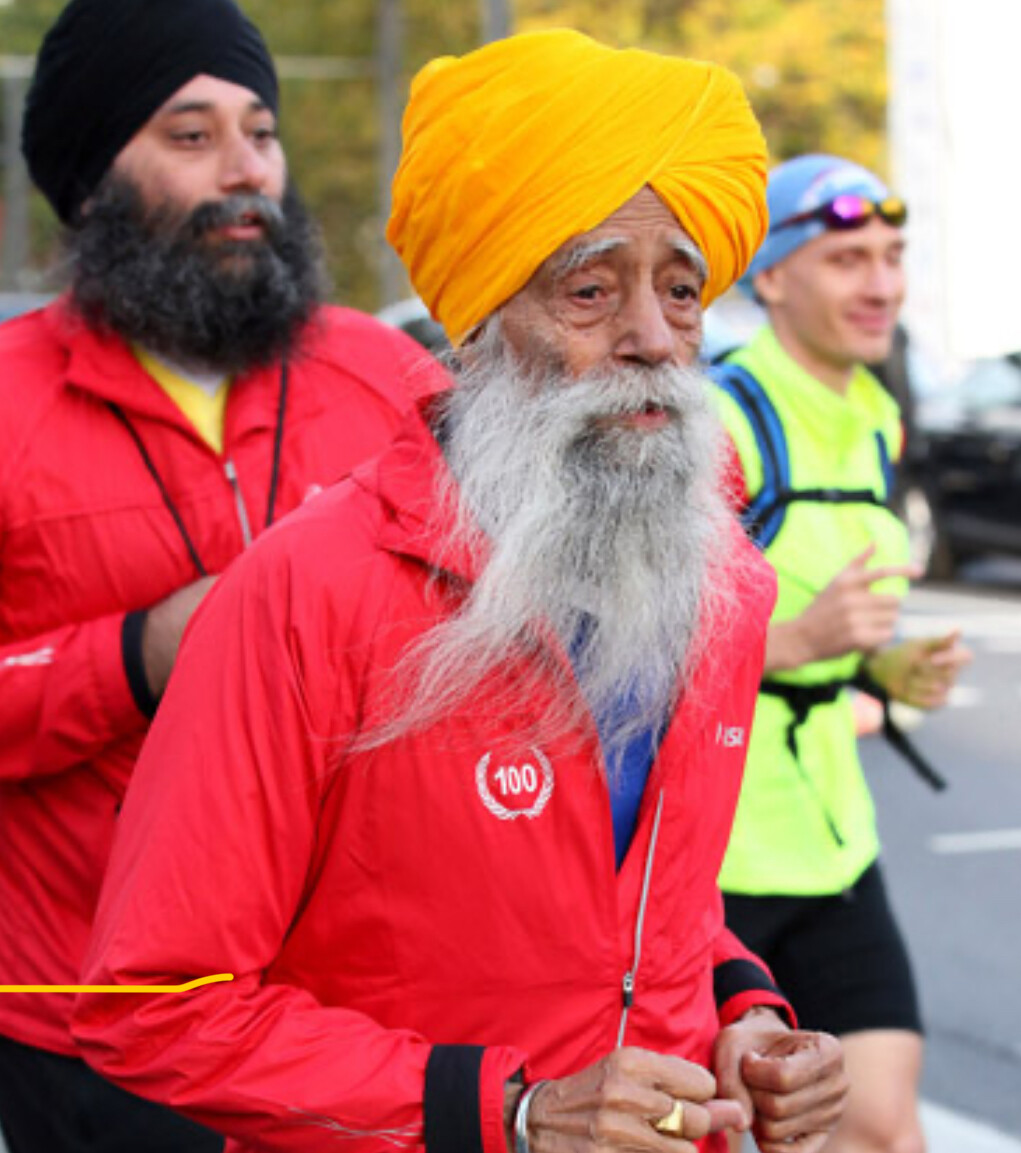
Singh’s path to running began in the wake of personal tragedy. After losing his wife in 1992 and witnessing the death of his son in 1994, he moved to London in the late 1990s. At 89, he took up running as a way to cope with grief and rediscover purpose. In 2000, he completed his first marathon in London, launching a career that would span over a decade.
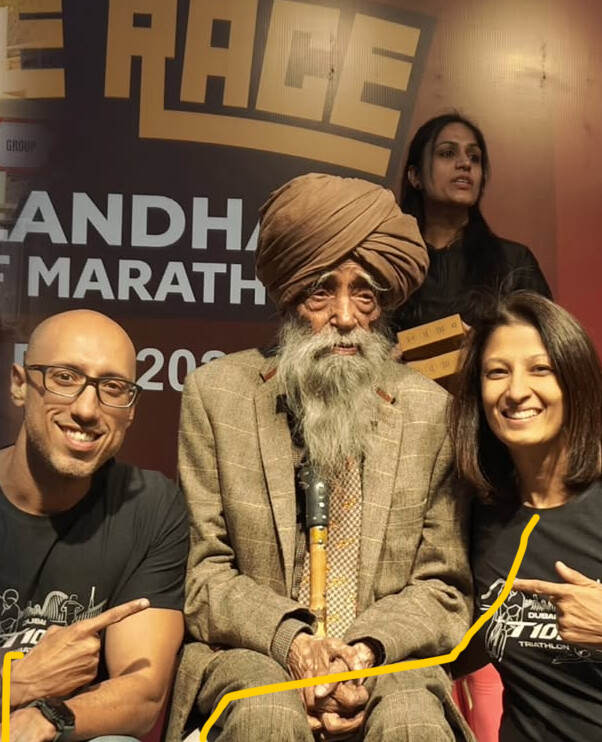
A Record-Breaking Career
Singh completed nine full marathons between 2000 and 2011, including events in London, Toronto, and New York. His personal best was 5:40 at the 2003 Toronto Waterfront Marathon, setting a world record for the 90+ age group. At 100, he became the first centenarian to complete a marathon, finishing the 2011 Toronto Waterfront Marathon in 8:11:06. Though Guinness World Records did not certify the feat due to the absence of a birth certificate, Singh’s accomplishment remains a historic milestone.
Final Race and Continued Inspiration
Singh ran his final competitive race on February 24, 2013, completing a 10km event at the Hong Kong Marathon in 1:32:28, just weeks before his 102nd birthday. Though retired from competition, he continued to jog daily and participate in community events, promoting health and fitness.
Legacy Beyond the Finish Line
Singh’s influence extends beyond his athletic achievements. He was featured in Adidas’ “Impossible is Nothing” campaign alongside icons like Muhammad Ali and David Beckham. In 2015, he was awarded the British Empire Medal for services to sport and charity. His life story has been chronicled in the biography Turbaned Tornado and the children’s book Fauja Singh Keeps Going.
A Life of Simplicity and Purpose
Singh attributes his longevity and vitality to a simple vegetarian diet, abstaining from smoking and alcohol, and maintaining a positive outlook. He once said, “The first 20 miles are not difficult. As for the last six miles, I run while talking to God.”
Fauja Singh’s journey exemplifies the boundless potential of the human spirit. His legacy continues to inspire individuals worldwide to pursue their passions, regardless of age.
by Boris Baron
Login to leave a comment
Fast Finishes in Indy as Hacker and Andrews Claim 5K Crowns
On a crisp morning in downtown Indianapolis, the 2025 USATF 5 km Championships delivered thrilling finishes and fast times, with Olin Hacker and Josette Andrews emerging as national champions.
In the men’s race, Olin Hacker of HOKA Northern Arizona Elite made a decisive move in the final kilometer, pulling away from a tightly packed lead group. His surge proved untouchable, and he crossed the finish line in 13:31.93 to claim the national title. Casey Clinger of Brooks was just a stride behind in 13:33.04, with Hacker’s teammate Ahmed Muhumed rounding out the podium in 13:36.88—completing a trio of sub-13:40 finishers.
Men’s Top 10 Finishers
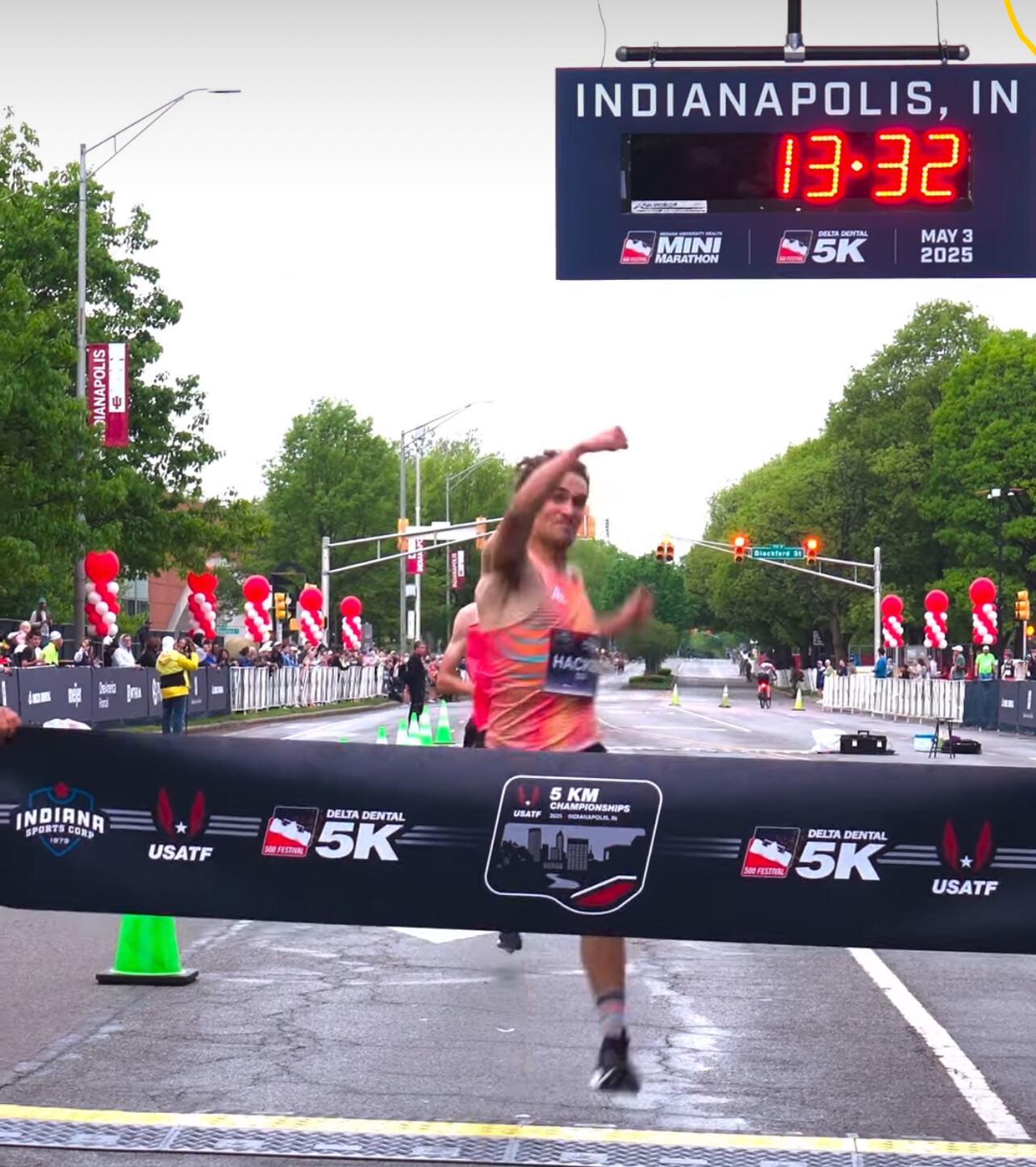
1. Olin Hacker (HOKA NAZ Elite) – 13:31.93
2. Casey Clinger (Brooks) – 13:33.04
3. Ahmed Muhumed (HOKA NAZ Elite) – 13:36.88
4. Morgan Beadlescomb (adidas) – 13:39.50
5. Graham Crawford (Reebok) – 13:42.10
6. Reed Fischer (Tinman Elite) – 13:44.75
7. Sam Chelanga (Nike) – 13:47.30
8. Ben Flanagan (On Running) – 13:49.60
9. Emmanuel Bor (U.S. Army) – 13:52.25
10. Eric Avila (HOKA) – 13:54.80
In the women’s race, Josette Andrews showed impressive strength and timing, kicking hard in the final stretch to take the win in 15:12.34. Emily Infeld of Nike followed closely in 15:14.50, and Karissa Schweizer of Bowerman Track Club secured third in 15:16.75, as the top trio pushed each other to the line.
Women’s Top 10 Finishers
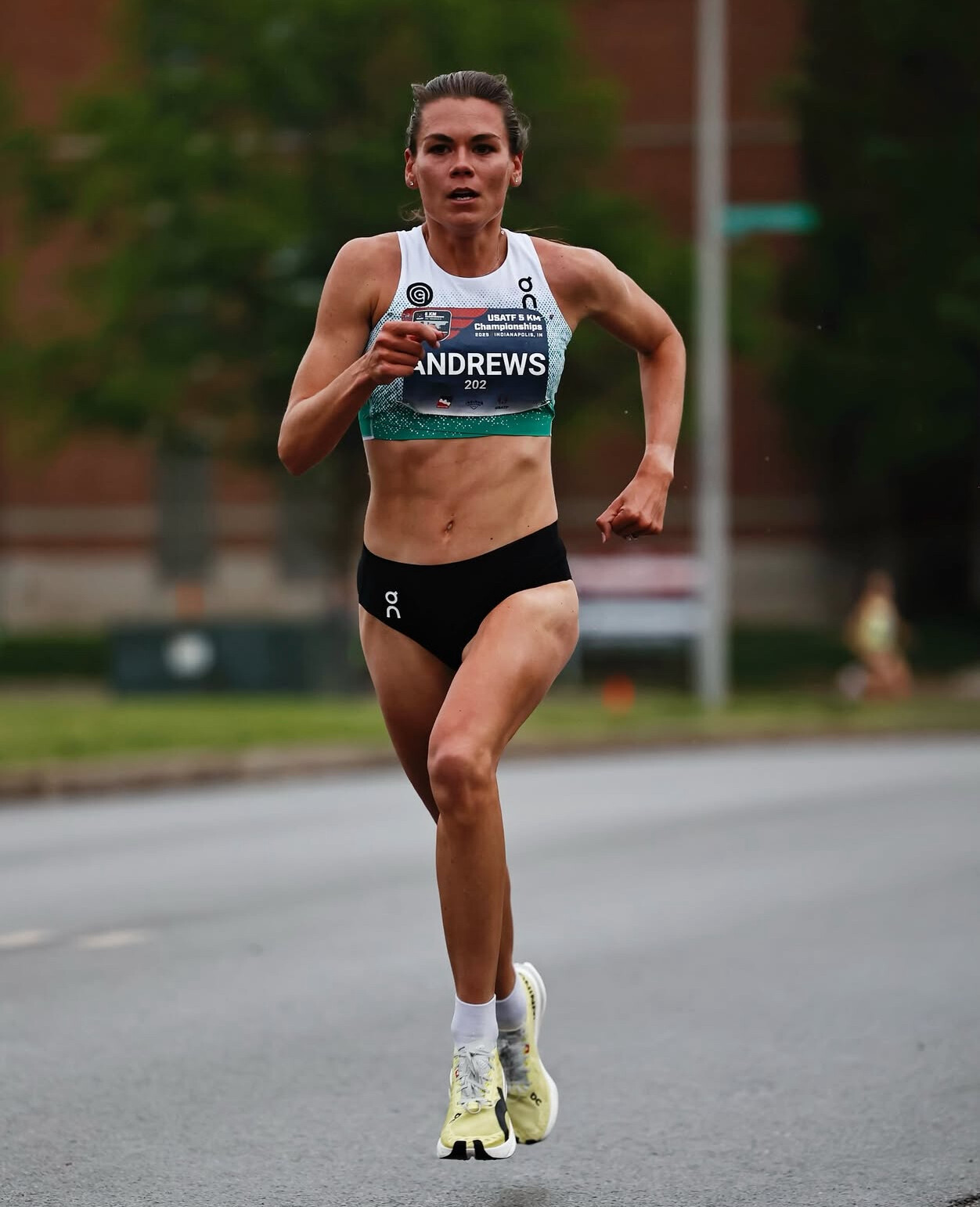
1. Josette Andrews – 15:12.34
2. Emily Infeld (Nike) – 15:14.50
3. Karissa Schweizer (Nike Bowerman TC) – 15:16.75
4. Elly Henes (adidas) – 15:19.20
5. Rachel Schneider (Under Armour) – 15:22.85
6. Abbey Cooper (New Balance) – 15:25.40
7. Molly Seidel (Saucony) – 15:28.95
8. Vanessa Fraser (Nike) – 15:31.50
9. Emily Lipari (adidas) – 15:34.05
10. Natosha Rogers (Hansons-Brooks) – 15:36.60
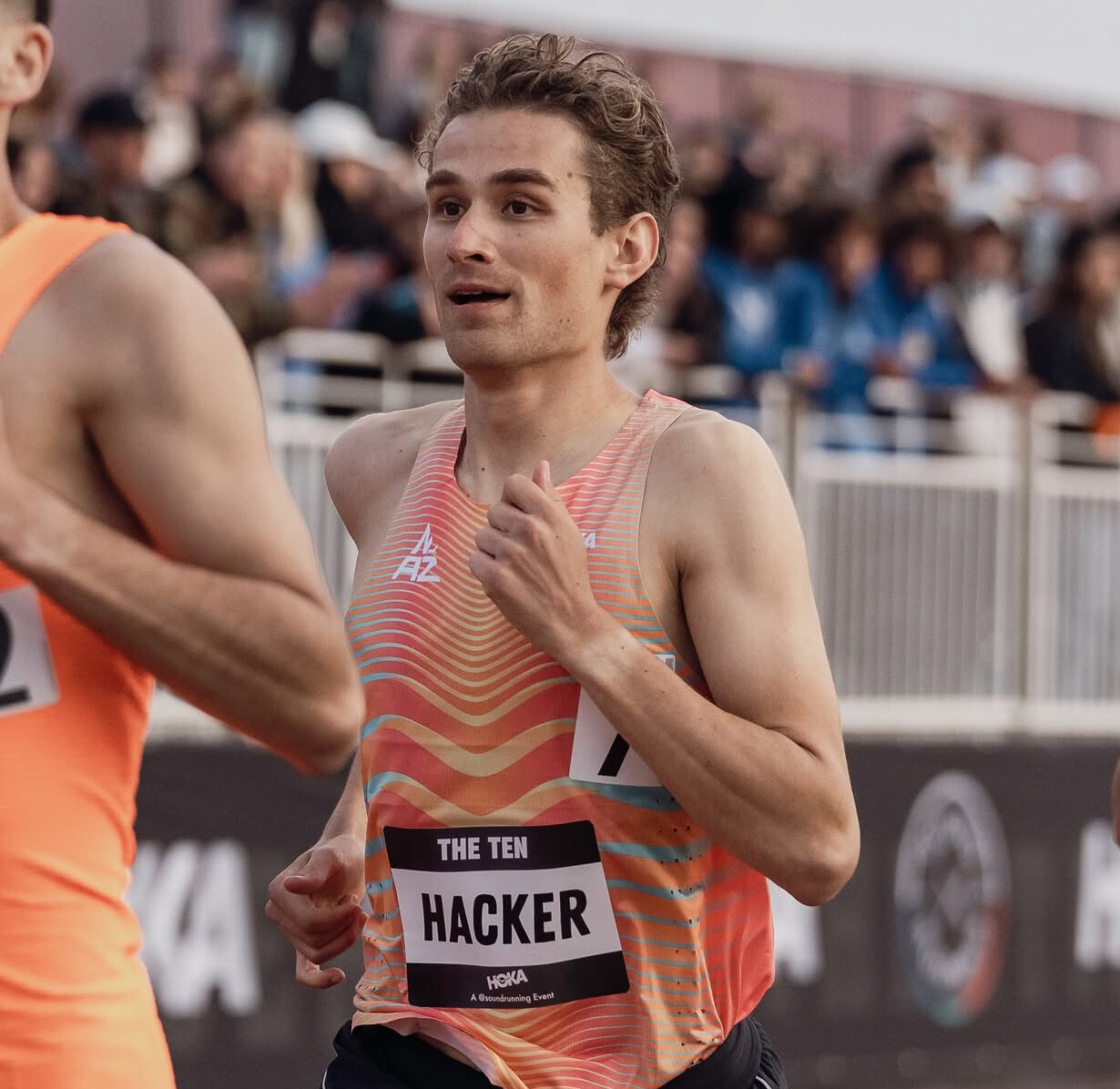
The performances in Indianapolis set the tone for what promises to be a fast and competitive summer racing season across the U.S. road circuit.
by Boris Baron
Login to leave a comment
OneAmerica 500 Festival Mini-Marathon
The mission of the 500 Festival is to produce life-enriching events and programs while celebrating the spirit and legacy of the Indianapolis 500 and fostering positive impact on the city of Indianapolis and state of Indiana. As an organization providing multiple events and programs, many of which are free to attend and impact over 500,000 people annually, our mission to...
more...Why Running Shoes Are Getting More Expensive in 2025
American-Made Running Shoes Aren’t Coming Anytime Soon says Bob Anderson and here's why.
“It’s just not realistic to imagine an American company finding enough labor in the U.S. to make running shoes,” says lifetime runner Bob Anderson. “Even in states where companies might pay $10 an hour—half the rate in California—it would be difficult to find many Americans with the necessary skills.”
That reality helps explain why nearly all running shoes are made in Asia—and why prices are climbing. A combination of new tariffs, shifting global supply chains, and rising production costs is pushing the cost of your favorite shoes higher than ever across the United States.
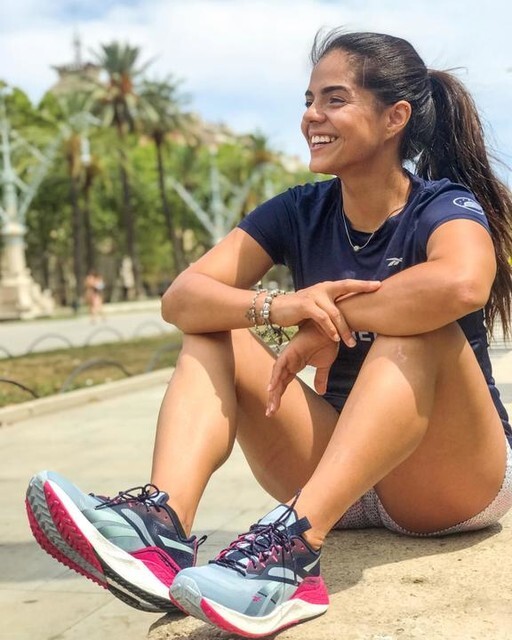
The Impact of ‘Liberation Day’ Tariffs
On April 2, 2025, President Donald Trump announced a sweeping set of tariffs under the banner of “Liberation Day,” aiming to address what he described as unfair trade practices and to bolster domestic manufacturing. These tariffs include:
• A universal 10% tariff on all imported goods, effective April 5, 2025.
• Additional country-specific tariffs, ranging from 11% to 50%, on imports from 86 countries, effective April 9, 2025.
For the footwear industry, these tariffs have significant implications. For example, imports from major manufacturing hubs now face the following cumulative tariffs:
• China: 54%
• Vietnam: 46%
• Cambodia: 49%
• Bangladesh: 37%
• Indonesia: 32%
These increased costs are often passed on to consumers, leading to higher retail prices for running shoes.
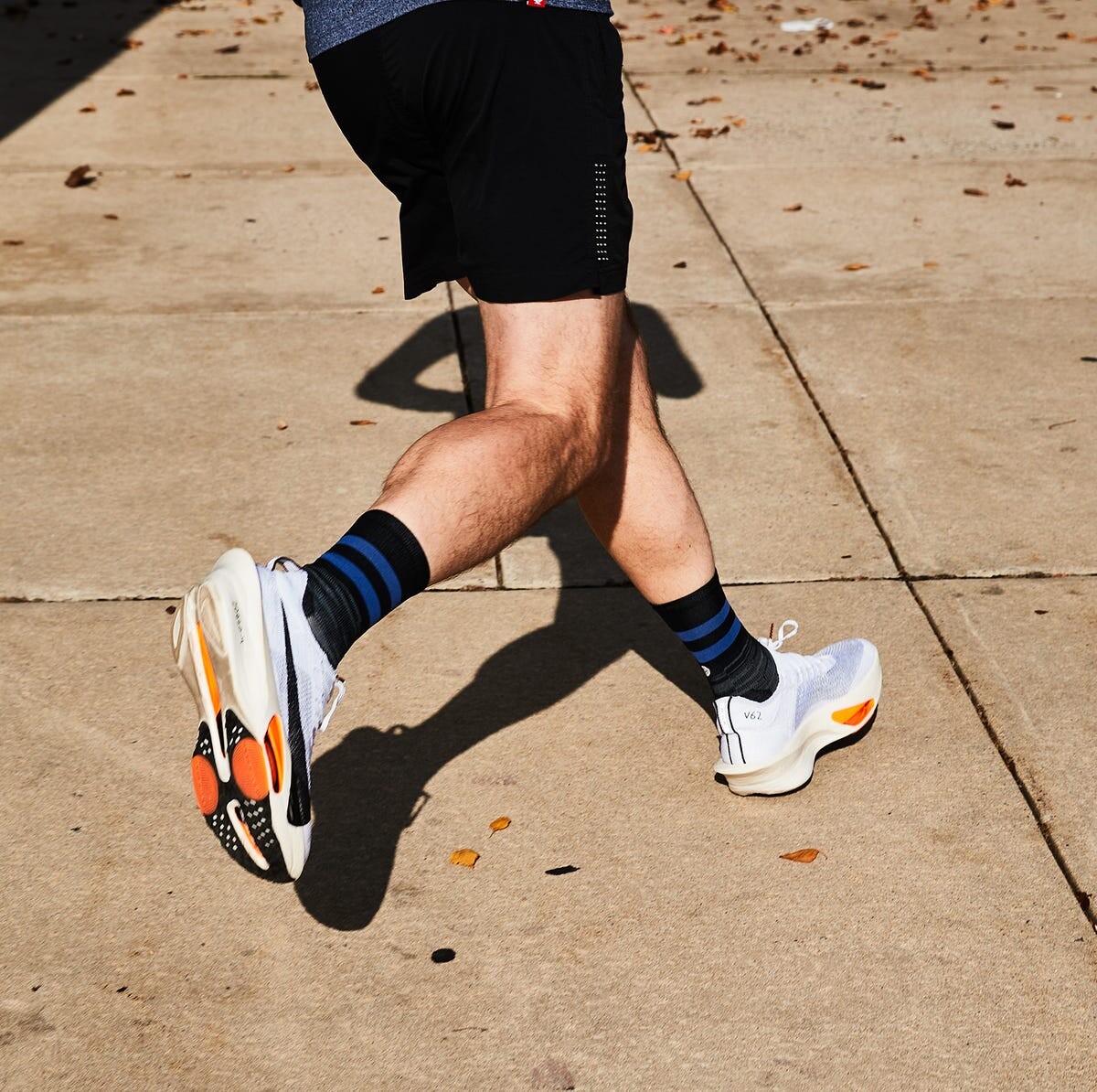
Upcoming Changes: June 1, 2025
Further changes are scheduled to take effect on June 1, 2025:
• Increased Flat Fees on Small Parcels: For small parcels shipped from China and Hong Kong, the flat fee per item will increase from $25 to $50.
• Higher Tariffs on Low-Value Shipments: All goods made in China, regardless of order value, are now subject to a 30% tariff or a $25 per-item fee, which will increase to $50 per item after June 1, 2025.
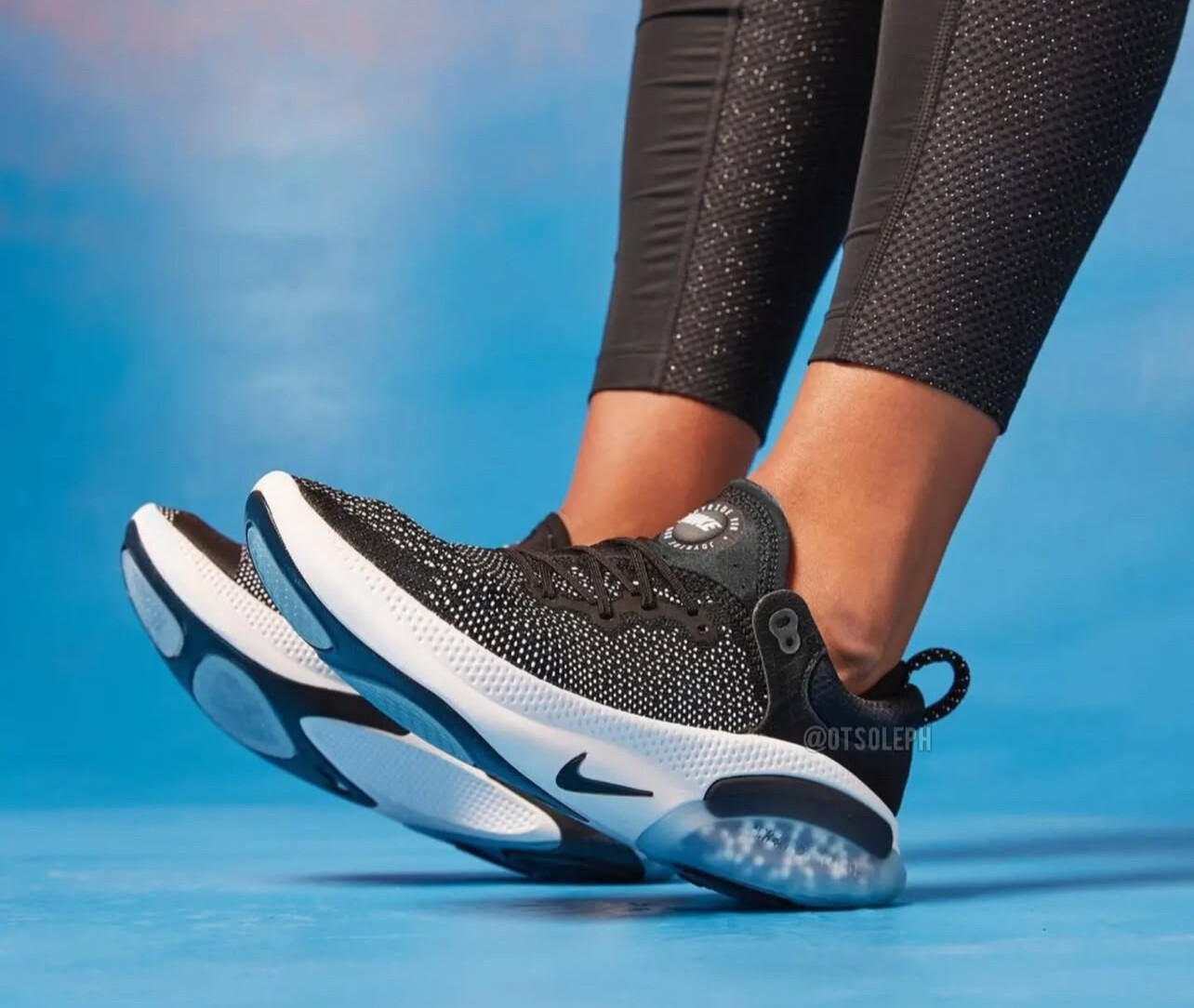
These measures are expected to further impact the cost of imported footwear, potentially leading to higher retail prices for consumers. Brands and retailers may need to adjust their sourcing strategies and pricing models in response to these changes.
Global Manufacturing Landscape
Most major running shoe brands manufacture their products overseas, primarily in Asia. For instance:
• Nike: Primarily manufactures in Vietnam, Indonesia, and China.
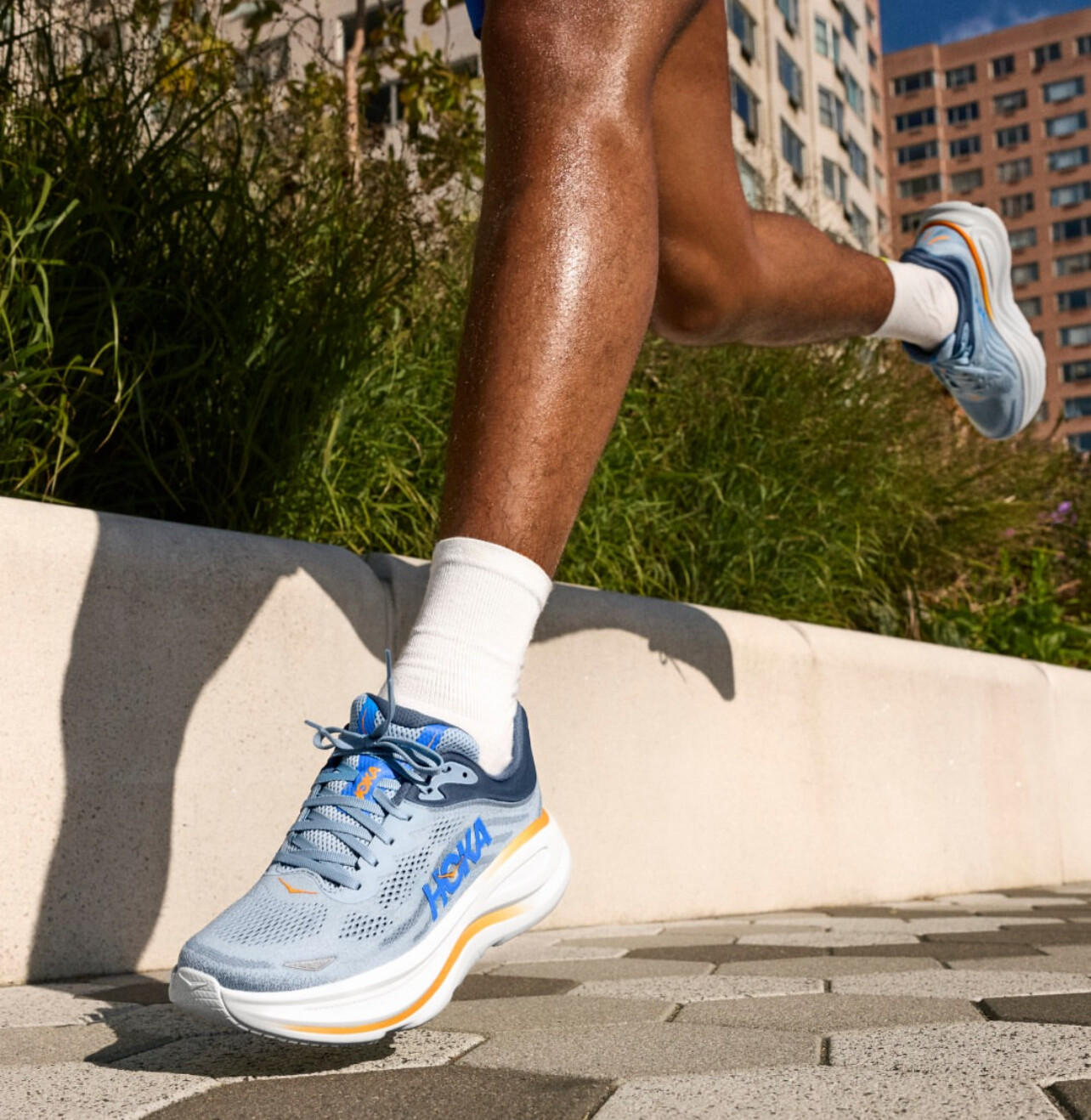
• Adidas: Relies heavily on Vietnam, Indonesia, and China for production.
• New Balance: Assembles some models in the U.S., but many are produced in Vietnam and Indonesia.
• Brooks: Manufactures most of its running shoes in Vietnam and China.
• ASICS: Produces mainly in Vietnam and Indonesia.
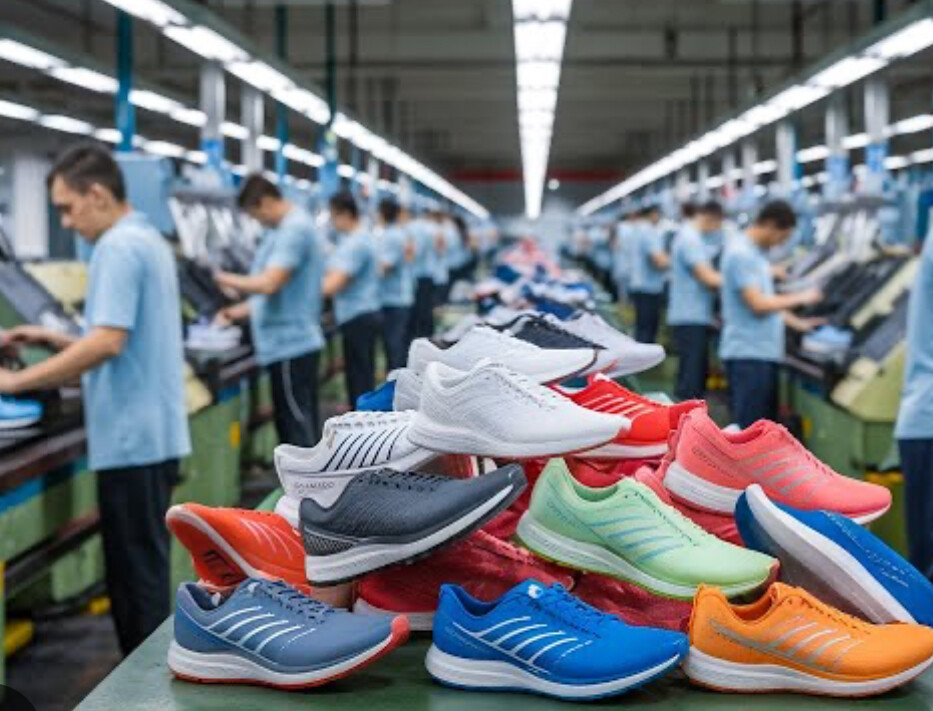
Given the new tariffs, these companies face increased costs, which may be reflected in higher prices for consumers.
Challenges of U.S. Manufacturing
Producing running shoes domestically presents several challenges:
• Labor Costs: U.S. labor is significantly more expensive than in countries like Vietnam or Indonesia.
• Infrastructure: The U.S. lacks the large-scale infrastructure and trained workforce needed for mass shoe production.
• Supply Chain: Many components used in shoe manufacturing are produced overseas, making domestic production more complex and costly.
While some companies, like New Balance, have U.S.-based production, it’s limited and often involves imported components.
The Labor Cost Gap Behind Your Running Shoes
One of the main reasons running shoes are rarely made in the United States is the vast difference in labor costs. In Vietnam—currently the leading producer of running shoes for brands like Nike, Adidas, and New Balance—the average factory worker earns between $200 and $300 USD per month. In Indonesia and Cambodia, wages can be even lower. By contrast, U.S. manufacturing workers typically earn $3,000 to $4,000 per month, not including benefits.
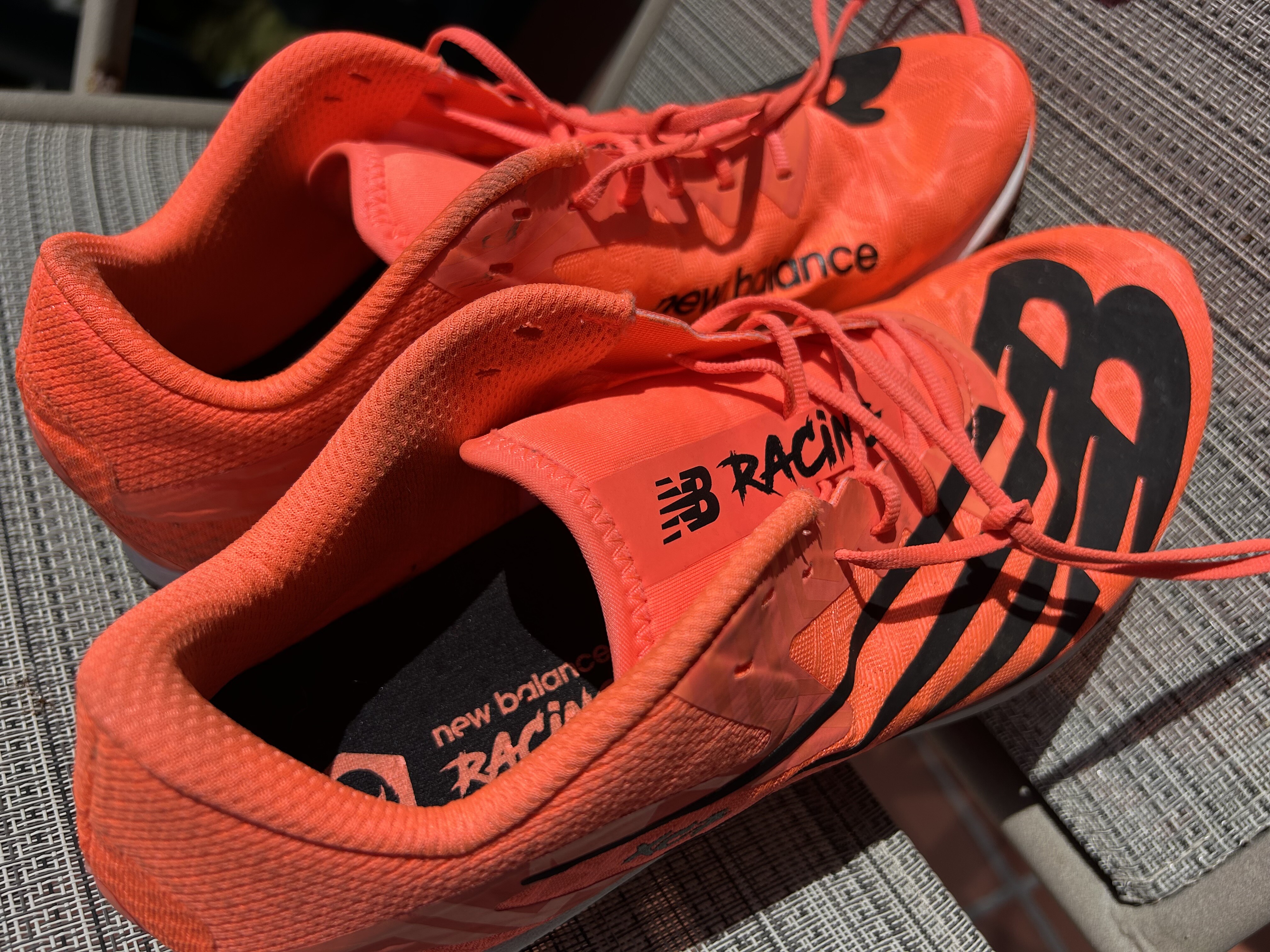
Since running shoes are labor-intensive to make—often requiring 70 to 100 steps in the assembly process—these wage disparities drastically affect the cost of production. That’s why even with new tariffs, it’s still cheaper for most brands to produce shoes overseas than to bring operations back home.
Looking Ahead
The full impact of these tariffs will unfold over time. Consumers may see continued price increases and reduced availability of certain models. Brands may explore alternative manufacturing locations or adjust their product lines to mitigate costs.
As the situation evolves, staying informed will help consumers make educated decisions about their purchases.
by Boris Baron
Login to leave a comment
Agnes Ngetich Breaks Barriers with Historic 10K World Record at adidas Road to Records
Kenya’s Agnes Jebet Ngetich delivered a groundbreaking performance at the 2025 Adizero: Road to Records event in Herzogenaurach, Germany, becoming the first woman to run a women-only 10km road race in under 30 minutes. She crossed the finish line in 29:27, surpassing the previous women-only world record of 30:01 set by the late Agnes Tirop in 2021.
Ngetich, 24, maintained a swift pace from the outset, reaching the halfway mark in 14:37. Despite a slight slowdown in the latter half, she completed the second 5km in 14:50, ensuring all kilometers were run in under three minutes.
This achievement adds to Ngetich’s impressive record; in January 2024, she set the mixed-race 10km world record with a time of 28:46 in Valencia.
Expressing her elation post-race, Ngetich said, “I’m so excited. I didn’t expect this. Last year I missed it by two seconds, so I wanted to come here today and try for it again. I’m so proud of myself. After missing out on the Olympics last year, I want to make up for it this year at the world championships.”

The Adizero: Road to Records event also witnessed remarkable performances in other categories. In the men’s 10km, Birhanu Balew of Bahrain, Gemechu Dida of Ethiopia, and Rodrigue Kwizera of Burundi all finished in 26:54. Ethiopia’s Medina Eisa clinched the women’s 5km title with a time of 14:48, while compatriot Yomif Kejelcha won the men’s 5km in 12:54.
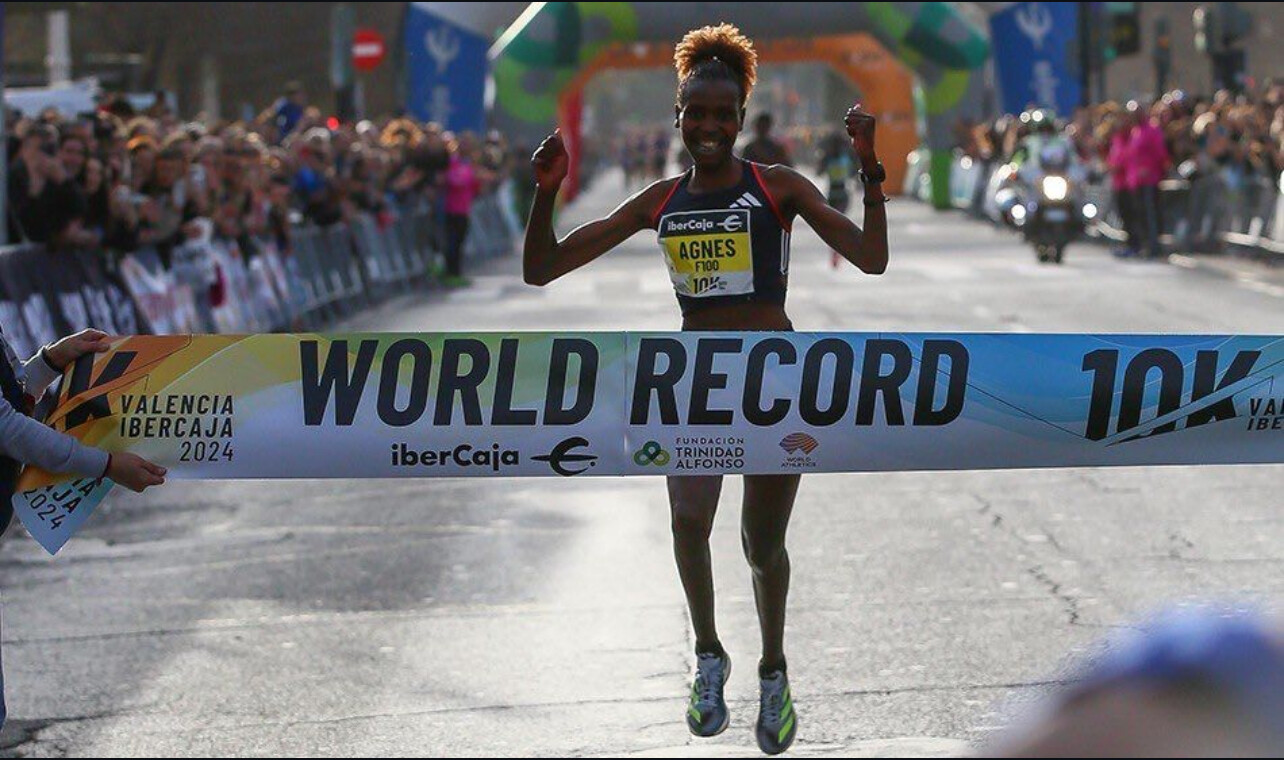
The event, hosted at adidas’ global headquarters, continues to be a platform where elite athletes push the boundaries of human performance, with today’s races adding to its legacy of record-breaking achievements.
by Boris Baron
Login to leave a comment
ADIZERO: ROAD TO RECORDS
Adidas HQ in Herzogenaurach, Germany played host to elite adidas athletes competing on a specially designed course around the adidas World of Sport campus across 5km, 10km and 21km distances The course followed a loop of approximately 2.5km on a smooth tarmac surface with a slight elevation on each lap. Conditions were perfect as the first event,...
more...The Evolution of the High School Sub-4 Mile Club
On May 6, 1954, Roger Bannister made history by running the first sub-4-minute mile, clocking 3:59.4 in Oxford, England. His groundbreaking achievement redefined what was possible in middle-distance running, inspiring generations of athletes to chase the elusive mark.
For decades, breaking the 4-minute barrier remained an extraordinary feat, but in recent years, more high school runners in the United States have joined this exclusive club. As of February 2025, 23 American high school boys have accomplished this milestone, with notable additions in 2024 and 2025.
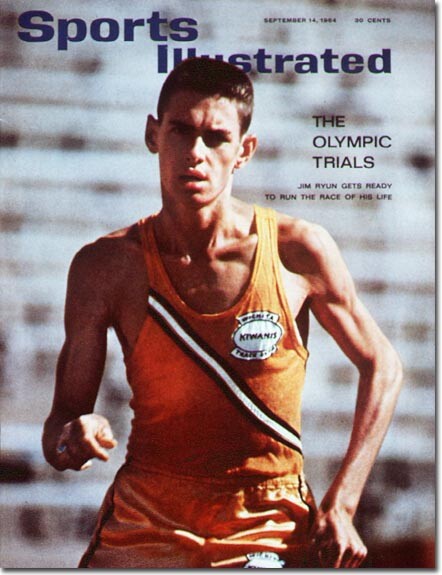
The Latest High School Runners to Break Four Minutes
The most recent athletes to achieve the sub-4-minute mile in high school competition are:
- Drew Griffith – 3:57.72 (May 30, 2024, Festival of Miles, St. Louis, Missouri)
- JoJo Jourdon – 3:59.87 (February 3, 2024, New Balance Indoor Grand Prix, Boston, Massachusetts)
- Zachary Hillhouse – 3:59.62 (June 16, 2024, New Balance Nationals Outdoor, Philadelphia, Pennsylvania)
- Owen Powell – 3:57.74 (February 15, 2025, UW Husky Classic, Seattle, Washington)
These runners continue to prove that the sub-4-minute mile, once thought to be nearly impossible for young athletes, is an achievable milestone with the right combination of talent, training, and opportunity.
Jim Ryun and Alan Webb: The Legends of the High School Mile
Jim Ryun: A Historic Career
Jim Ryun was the first high school runner to break the 4-minute mile, running 3:59.0 in 1964 as a junior. He later set the national high school record of 3:55.3 in 1965, a time that stood for 36 years.
After his historic high school career, Ryun went on to break the world record in the mile twice—first in 1966, and then again in 1967 when he ran 3:51.1. At 19 years old, he remains the youngest world record holder in the mile to date. His record stood for nine years before being broken in 1975.
Ryun represented the United States in three Olympic Games (1964, 1968, and 1972), winning a silver medal in the men’s 1500m at the 1968 Olympics. His dominance in middle-distance running made him one of the greatest milers in history.
Alan Webb: The New Generation's Record-Breaker
In 2001, Alan Webb broke Ryun’s long-standing high school mile record by running 3:53.43 at the Prefontaine Classic. Webb’s performance redefined expectations for young milers and set a new benchmark for high school runners.
Webb continued his success post-high school and later set the American record in the mile, running 3:46.91 in 2007. This remains one of the fastest mile performances ever by an American.
Despite his success, Webb’s professional career was marked by injuries, including Achilles tendonitis and stress fractures, which affected his consistency. However, his high school and professional achievements cemented his place as one of the greatest milers in U.S. history.
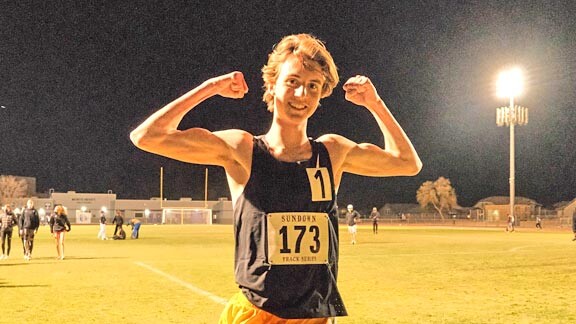
The Complete List of High School Sub-4 Milers
Below is the full list of American high school runners who have broken the 4-minute mile, ranked by their fastest time achieved during high school competition:
- Alan Webb (first photo) – 3:53.43 (May 27, 2001, Prefontaine Classic, Eugene, Oregon)
- Jim Ryun (second photo) – 3:55.3 (June 27, 1965, AAU Championships, San Diego, California)
- Colin Sahlman (third photo) – 3:56.24 (May 28, 2022, Prefontaine Classic, Eugene, Oregon)
- Drew Griffith – 3:57.72 (May 30, 2024, Festival of Miles, St. Louis, Missouri)
- Hobbs Kessler – 3:57.66 (February 7, 2021, American Track League Invitational, Fayetteville, Arkansas)
- Drew Hunter – 3:57.81 (February 20, 2016, NYRR Millrose Games, New York City, New York)
- Gary Martin – 3:57.89 (June 2, 2022, Festival of Miles, St. Louis, Missouri)
- Connor Burns – 3:58.83 (June 2, 2022, Festival of Miles, St. Louis, Missouri)
- Tim Danielson – 3:59.4 (June 11, 1966, San Diego Invitational, San Diego, California)
- Reed Brown – 3:59.30 (June 1, 2017, Festival of Miles, St. Louis, Missouri)
- Matthew Maton – 3:59.38 (May 8, 2015, Oregon Twilight Meet, Eugene, Oregon)
- Grant Fisher – 3:59.38 (June 4, 2015, Festival of Miles, St. Louis, Missouri)
- Michael Slagowski – 3:59.53 (April 29, 2016, Jesuit Twilight Invitational, Portland, Oregon)
- Leo Daschbach – 3:59.54 (May 23, 2020, The Quarantine Clasico, El Dorado Hills, California)
- Simeon Birnbaum – 3:57.53 (June 1, 2023, Festival of Miles, St. Louis, Missouri)
- Rheinhardt Harrison – 3:59.33 (June 3, 2022, Golden South Series #2, Tarpon Springs, Florida)
- Marty Liquori – 3:59.8 (June 23, 1967, AAU Championships, Bakersfield, California)
- Lukas Verzbicas – 3:59.71 (June 11, 2011, Adidas Grand Prix, New York City, New York)
- JoJo Jourdon – 3:59.87 (February 3, 2024, New Balance Indoor Grand Prix, Boston, Massachusetts)
- Zachary Hillhouse – 3:59.62 (June 16, 2024, New Balance Nationals Outdoor, Philadelphia, Pennsylvania)
- Owen Powell – 3:57.74 (February 15, 2025, UW Husky Classic, Seattle, Washington)
- Tinoda Matsatsa – 3:58.70 (June 1, 2023, Festival of Miles, St. Louis, Missouri)
- Jackson Heidesch – 3:59.08 (June 1, 2023, Festival of Miles, St. Louis, Missouri)
The Sub-4 Mile Remains an Iconic Benchmark
Roger Bannister’s 1954 breakthrough redefined human potential in distance running, and the high school sub-4-mile club continues to grow. As competition and knowledge improve, the question isn’t whether more young runners will join the club, but just how fast the next generation can go
Login to leave a comment
Sheila Avilés Castaño Lives for Peaks and Nature
Sheila Avilés Castaño, born on July 7, 1993, in Santa Margarida de Montbui, Spain, is a trail and skyrunning athlete whose passion for nature and sport has propelled her to remarkable achievements on the global stage. From a young age, Sheila found joy in the outdoors, combining her athletic talent with her love for the mountains. Trail running became her sanctuary, offering the perfect balance between physical challenge and the beauty of nature.
Over the years, Sheila has built an impressive career, winning major titles and captivating fans around the world. In 2017, she claimed the Sky Classic category of the Skyrunning World Cup and earned a bronze medal at the European Skyrunning Championships. Two years later, she added another Skyrunning World Cup title to her name, proving her consistency and determination at the highest level of competition. Her crowning achievement came in 2022 when she triumphed at the OCC race of the UTMB Mont-Blanc, a victory that cemented her status as one of the top athletes in her discipline.
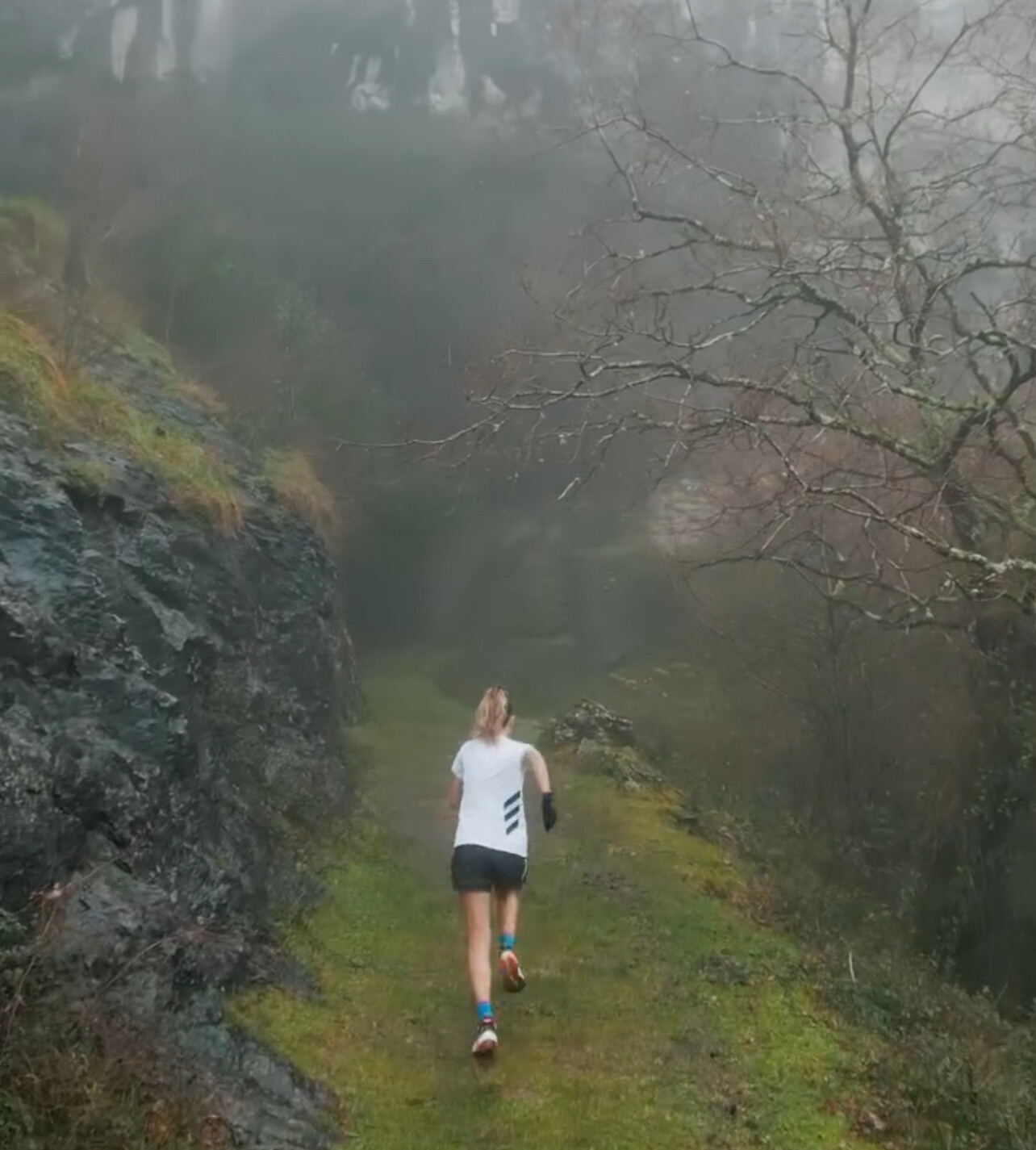
In 2024, Shella continued to showcase her extraordinary talent and resilience. At the HOKA Val d'Aran by UTMB®, she completed the 18 km course with 465 meters of elevation gain in 1:32:07, placing 3rd among women. Later in the year, she dominated the adidas TERREX INFINITE TRAILS 30K Individual race, finishing in 3:25:08 and securing 1st place in the women's category.
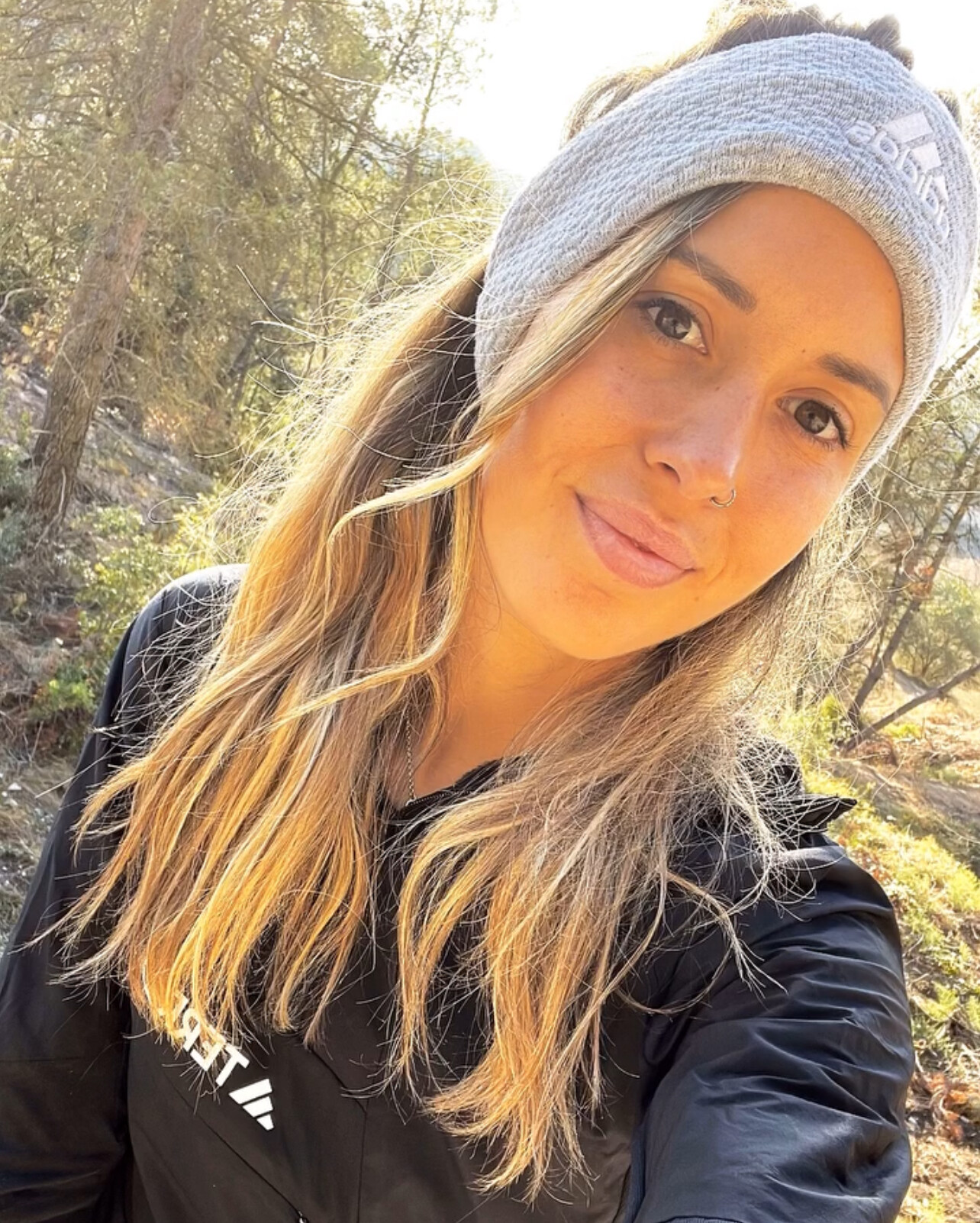
She also put in a strong performance at the Salomon Ultra Pirineu's Mitja Pirineu 21k, covering the challenging 21 km course with 1,200 meters of elevation gain in 1:50:05, finishing 6th among women. Her consistency across diverse events reflects her adaptability and unwavering commitment to the sport.
Beyond her racing accomplishments, Sheila is an ambassador for the beauty of trail running and the deep connection it fosters with nature. Through her social media and public appearances, she inspires runners and outdoor enthusiasts worldwide to embrace the mountains and push their limits.
For Sheila, running is more than a sport-it's a way of life, a celebration of the human spirit, and a testament to what can be achieved with passion and dedication.
Sheila Avilés Castaño continues to conquer peaks and inspire others, reminding the world that no summit is too high when approached with determination and love for the journey.
Login to leave a comment
Racing Super Shoes Will Be Lighter, More Responsive, and Likely Even Faster in 2025
New models from Adidas, Brooks, Hoka, On, Puma, and Saucony highlight a speedy new crop of racing and training super shoesEager to run a new personal best in the marathon in 2025? Or are you itching to crank out a quicker half marathon than you ran in 2024? Or maybe a fast effort in a trail race? The continued evolution of speedy shoe technology will be on your side. With new midsole foams and propulsion plate configurations, top-tier racing shoes will be lighter, more responsive, and presumably faster in 2025.
That goes for both road racing and trail racing super shoes that will be hitting running shops from late winter to early summer.Asics, New Balance, and Under Armour will have lighter and more energetic road racing shoes coming out by late spring, while Nike is expected to release its Ultrafly 2 trail racing super shoe in June. While those models are still under embargo, we’ve got the scoop on several race-day super shoes and high-performance training shoes unveiled at The Running Event trade show in November in the roundup below. We haven’t fully wear-tested these shoes yet, so it’s just a preview of what’s to come. When wear-testing is complete, we’ll produce both first-run reviews and in-depth multi-tester reviews with input from the Outside wear-test team and data from the Outside Gear Lab in Denver.2025 Road Racing Super Shoes
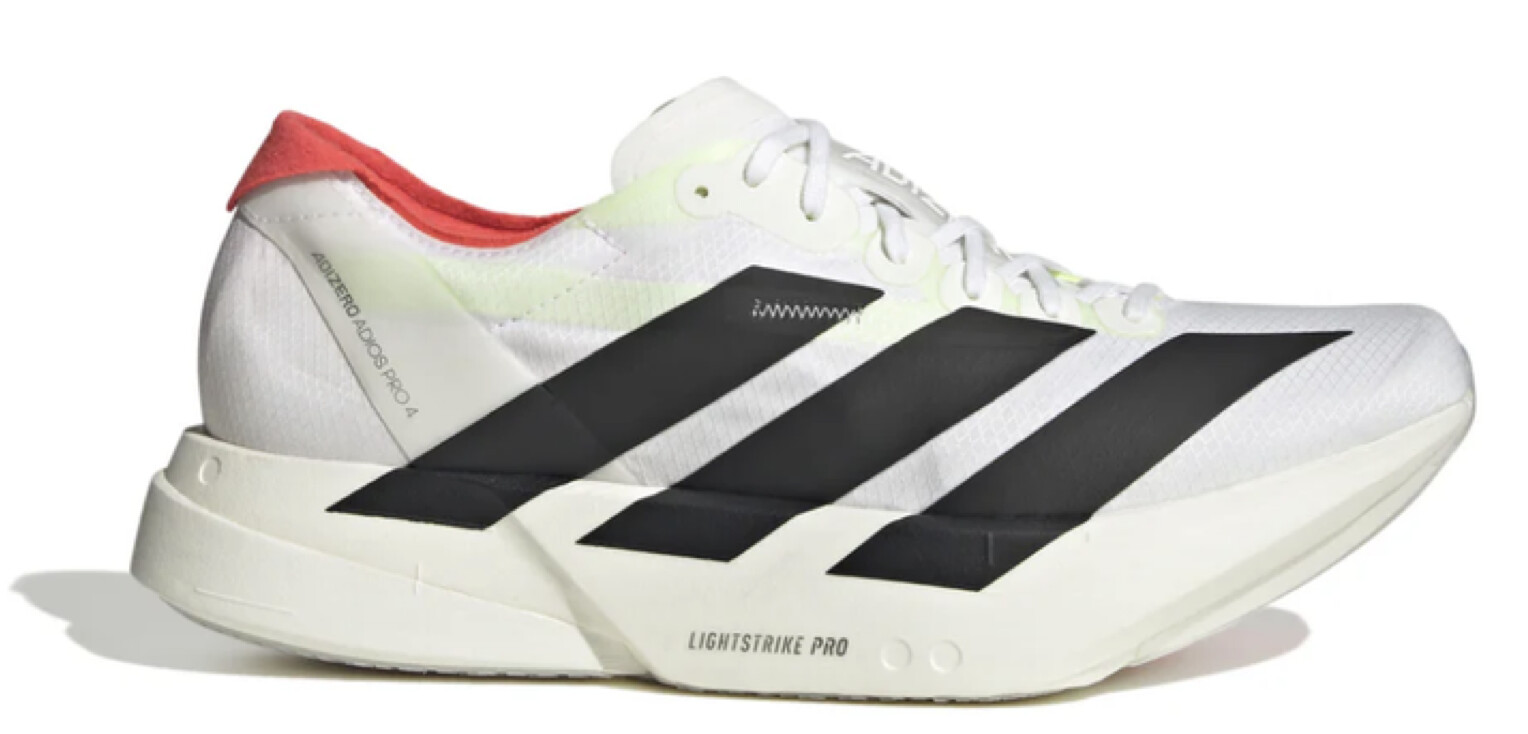
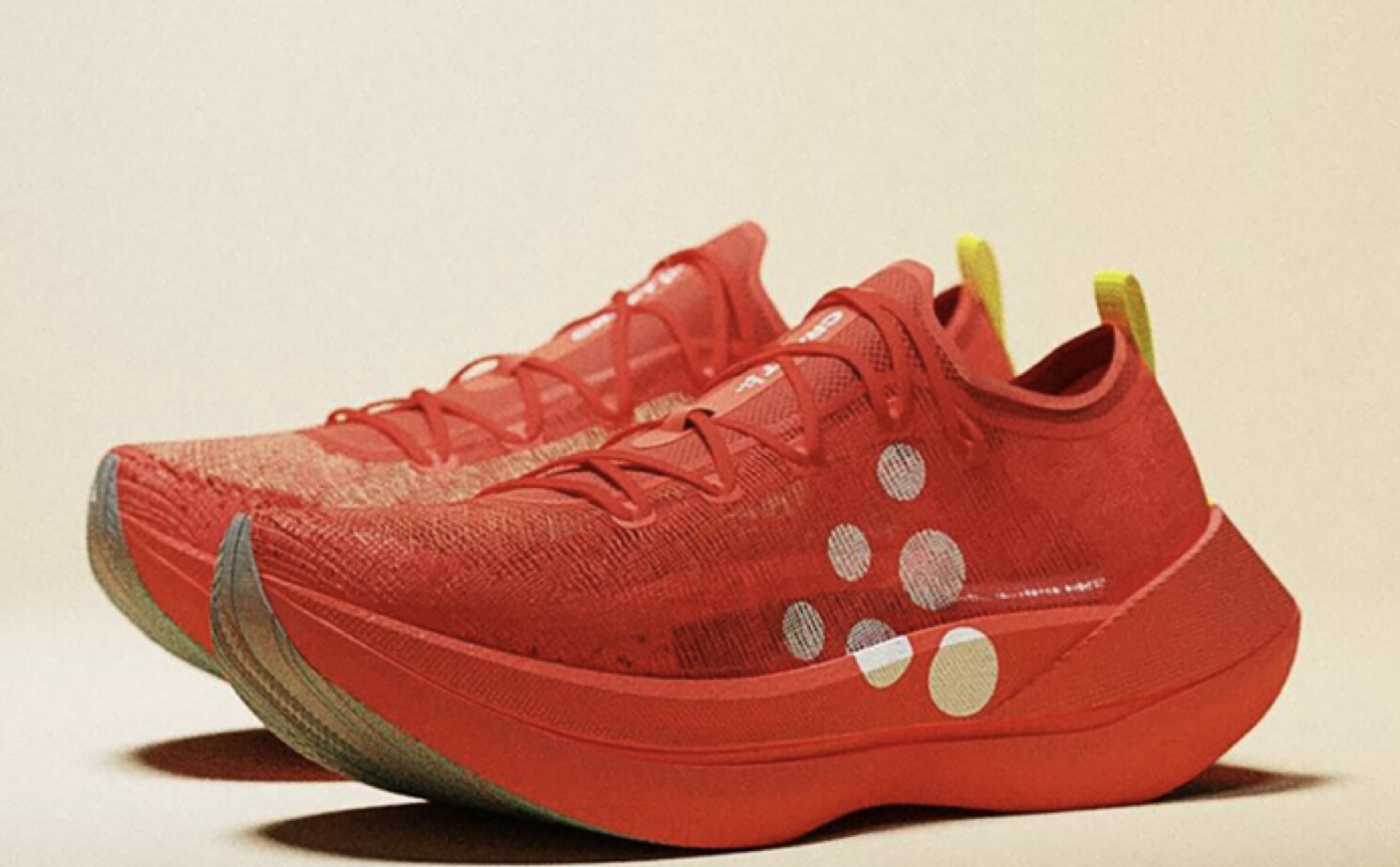
Adidas Adizero Adios Pro 4, $250
Approximate Weights: 6.0 oz. (women’s 8), 7.0 oz. (men’s 9)Heel-Toe Offsets: 6mm drop; 39mm (heel), 33mm (forefoot)Release Date: January
The Adizero Adios Pro 4 was released in limited numbers just before the Berlin Marathon in September, but it will hit stores in mass quantities worldwide in January. It’s been updated with a bouncier Lightstrike Pro midsole, a lighter, stronger stretch-mesh upper with internal locking bands, a new configuration of the Evo Pro EnergyRods, and an aggressive new geometry in which the forefoot rocker point is at 60 percent of the shoe’s length. Several Adidas pros raced in this shoe in the New York City Marathon, including women’s winner Sheila Chepkirui and men’s runner-up Evans Chebet.Brooks Hyperion Elite 4 PB, $250
Approximate Weights: 6.6 oz. (women’s 8), 8.6 oz. (men’s 9)Heel-Toe Offsets: 6.5mm drop; 38.5mm (heel), 32mm (forefoot)Release Date: February
Brooks has been working on enhancing its top-tier road racing shoes for several years. It released the Brooks Hyperion Elite 4 with its DNA Flash v2 midsole compound prior to the 2024 U.S. Olympic Trials Marathon last February, but early in 2025 it will release the Hyperion Elite 4 PB with the brand’s new DNA Gold supercritical midsole foam, a very light and responsive nitrogen-infused 100 percent Peba material, and a very light and airy knit-mesh upper.Brooks Hyperion Elite 5, $275
Approximate Weights: 5.8 oz. (women’s 8), 6.9 oz. (men’s 9)Heel-Toe Offsets: 8mm drop; 40mm (heel), 32mm (forefoot)Release Date: JulyBrooks had hoped to keep the Hyperion Elite 5 under wraps by showing it under embargo at The Running Event trade show, but someone leaked it so it decided to release the details and images of it. It has a DNA GOLD 100 percent PEBA foam midsole with a unique series of half-orb bubble configurations under the arch for optimal compression and decompression. It also has a very light and airy knit-mesh upper and minimal outsole rubber to keep it as light as possible.Craft Kype Pro, $300
Approximate Weights: 5.8 oz. (women’s 8), 6.9 oz. (men’s 9)Heel-Toe Offsets: 8mm drop; 40mm (heel), 32mm (forefoot)Release Date: March
Craft says the unique heel split design of its new Kype PRO racing shoe significantly reduces the contact surface area between the shoe and the ground, allowing for quicker toe-offs and a more efficient stride pattern. The skeleton-like carbon-fiber propulsion plate (developed in collaboration with Arris) embedded in the midsole of its Peba-based Xx midsole foam weighs less than half of an ounce and has a split heel design and enhanced stiffness The ultra-light AeroMesh knit upper is made from a durable mono yarn knit that offers support, pliability, and breathability, while the bottom of the shoe features a thin, lightweight rubber outsole was developed with Italian bicycle tire manufacturer Vittoria.Hoka Cielo X 1 2.0, $275
Approximate Weights: 7.0 oz. (women’s 8), 8.1 oz. (men’s 9)Heel-toe offset: 10mm; 48mm (heel), 41mm (forefoot)Expected launch: February
Login to leave a comment
16-year-old Aussie sprinter clocks outrageous 100m time
Gout Gout, the young athlete drawing comparisons to Usain Bolt, now holds the Australian U18 100m and 200m records.
Australia’s Gout Gout has left the world speechless once again. At Friday’s Australian All Schools Athletics Championships in Nathan, Australia, the sprinter made a run at the elusive 10-second barrier–at the age of just 16. In heats, he soared to a blazing 10.04 seconds (+3.4 m/s winds), crossing the line more than five tenths of a second ahead of second place. Including all non-legal marks, Gout’s time secured him the number-four spot on the all-time U18 list.
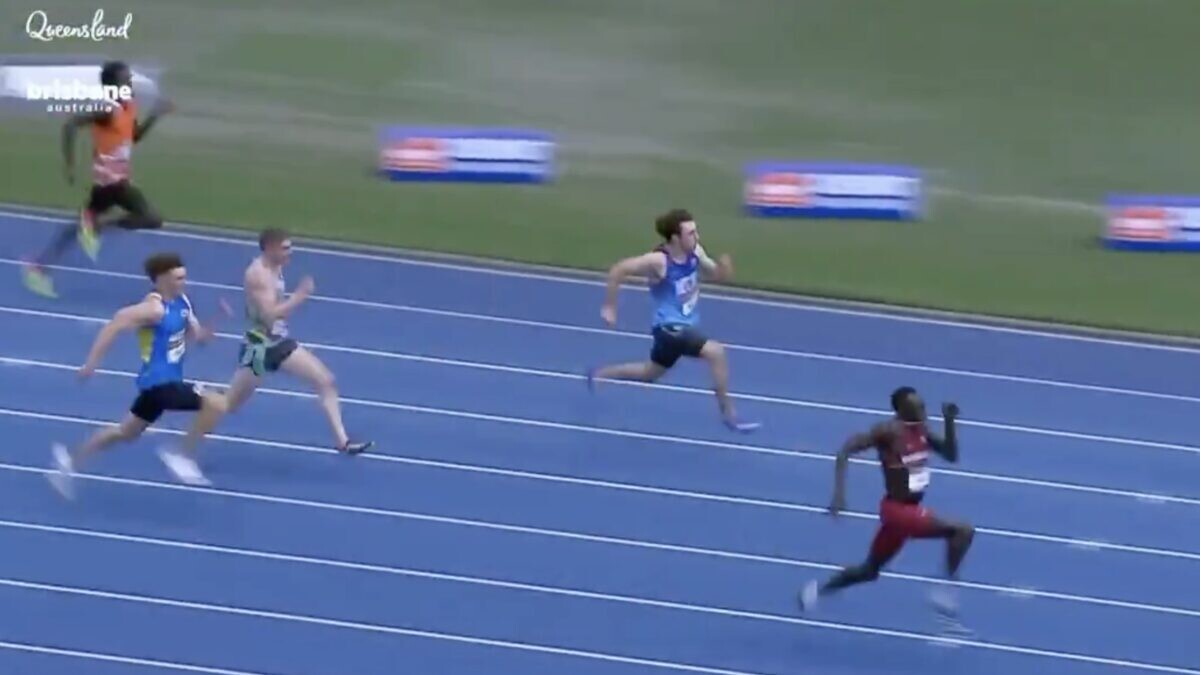
Tailwind speeds exceeding 2.0 m/s are deemed illegal in sprinting, as stronger winds are considered to aid the racers. Wind assistance can impact times by about 0.1 seconds, a substantial difference in the world of sprinting.
In the 100m final at the Queensland Sport and Athletics Centre, Gout went on to run a stunning (and wind-legal) 10.17. The time shattered his own personal best of 10.29 and the previous U18 Australian record of 10.27 held by Sebastian Sultana, and still places him sixth on the all-time U18 list.
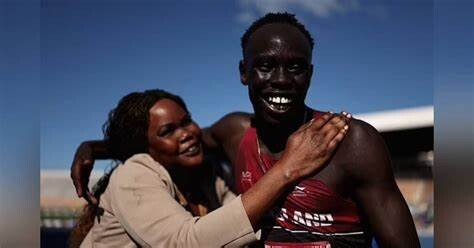
The high schooler first made headlines when he cruised to a 20.77-second win in the qualifying rounds of the 200m at the World U20 Championships in Lima, Peru, in August. The following day, he clinched the silver medal in the event’s final.
Gout signed a pro contact with Adidas in October, and just a week later, clocked an electrifying 20.29 at the All Schools Queensland track and field championships. The time broke his own U18 national record, along with the 31-year-old U20 national record and the Oceanic record. His time was the fourth-fastest in Australia’s history.
Gout’s race on Friday clip is his second to go viral in the athletics world in four months; many track and field fans began drawing comparisons of his tall stature and running style to those of Jamaican track legend Usain Bolt.
by Cameron Ormond
Login to leave a comment
Internet reacts to 2025 Boston Marathon celebration jacket
The Boston Athletic Association took a gamble with their design for the 2025 marathon jacket.
The Boston Marathon celebration jacket from Adidas has been a cherished tradition at the race since 1991, becoming a symbol of accomplishment for runners who conquer the course each year. This year’s jacket, however, has the running world up in arms after the Boston Athletic Association (B.A.A.) decided to move away from the iconic stitched B.A.A. logo to a printed Bank of America-centric crest on the front and back.
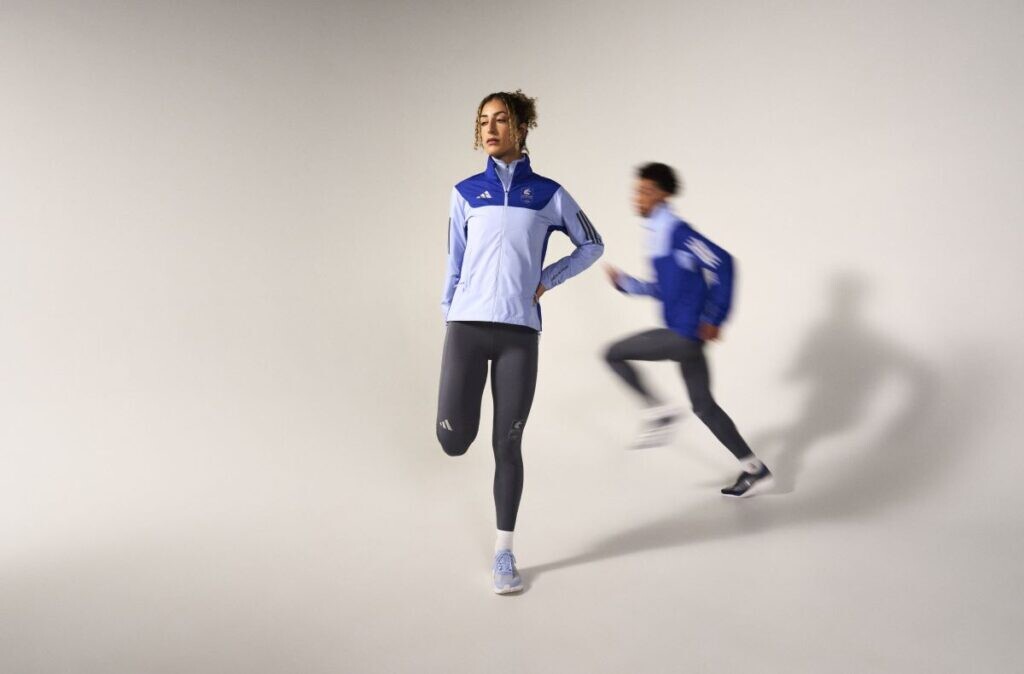
While the jacket boasts sustainable credentials as the first made entirely from recycled polyester material, many runners are more focused on the design. Bank of America, which became the race’s presenting sponsor in 2023 after nearly four decades under insurance company John Hancock, is being criticized for its branding. The jacket’s “Lucid Blue” design, paired with the B.A.A.’s traditional royal blue base, has also drawn mixed reviews. Some see it as a vibrant refresh, while others seem to have wanted a more timeless esthetic.
Reactions to the jacket have been making their circles on social media. “I have been extremely disappointed in the branding since Bank of America came into play,” wrote one user on Facebook. “First messing with the unicorn, now barfing corporate branding all over everything,” Another commenter wrote, “For 2026, are we going to see how many Bank of America logos we can fit on people? Nothing says tradition and prestige like Bank of America.”
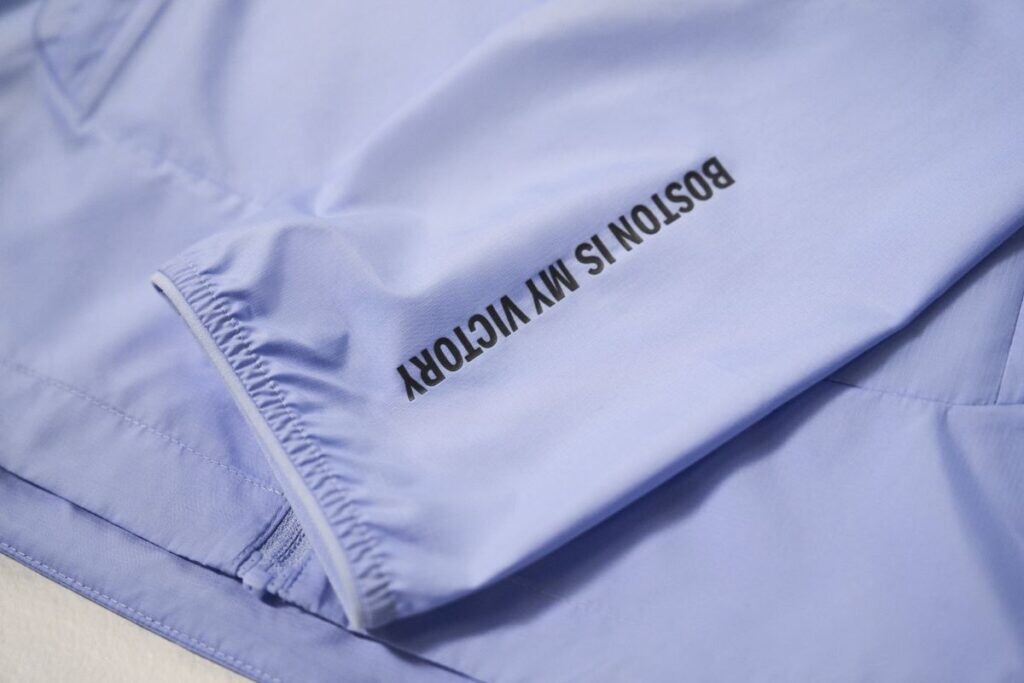
The 2024 Boston Marathon celebration jacket was the first edition in which Bank of America was featured, with the bank’s logo screen printed below the traditional B.A.A. crest. In addition to the jacket’s sustainable footprint, the logos on the front and back are entirely reflective, along with the three stripes on the sleeve and the “Boston is my victory” idiom on the left cuff.
Despite the backlash, the 2025 Boston Marathon jacket remains a hot commodity. For runners eager to get their hands on one, it’s available online for CAD $160. Whether you love it or hate it, the jacket remains a badge of honour for thousands.
Login to leave a comment
Boston Marathon
Among the nation’s oldest athletic clubs, the B.A.A. was established in 1887, and, in 1896, more than half of the U.S. Olympic Team at the first modern games was composed of B.A.A. club members. The Olympic Games provided the inspiration for the first Boston Marathon, which culminated the B.A.A. Games on April 19, 1897. John J. McDermott emerged from a...
more...Cape Town Marathon primed to become Africa’s first Abbott World Marathon Major
The Sanlam Cape Town Marathon has recently made significant strides in its journey to join the international Abbott World Marathon Majors (AbbottWMM) series after the 2024 edition met the criteria set out by the AbbottWMM team.
Cape Town will now proceed to the second stage of the candidacy process in its attempt to join the series when it stages its next marathon on October 19, 2025. If it is successful, the race would join the Majors in 2026. This follows the recent addition of the TCS Sydney Marathon, which was announced as the seventh Abbott World Marathon Major event and will take place as a Major on August 31, 2025.
Current AbbottWMM events are: Tokyo Marathon, Boston Marathon, TCS London Marathon, BMW-Berlin Marathon, Bank of America Chicago Marathon, TCS New York City Marathon and most recently the TCS Sydney Marathon.
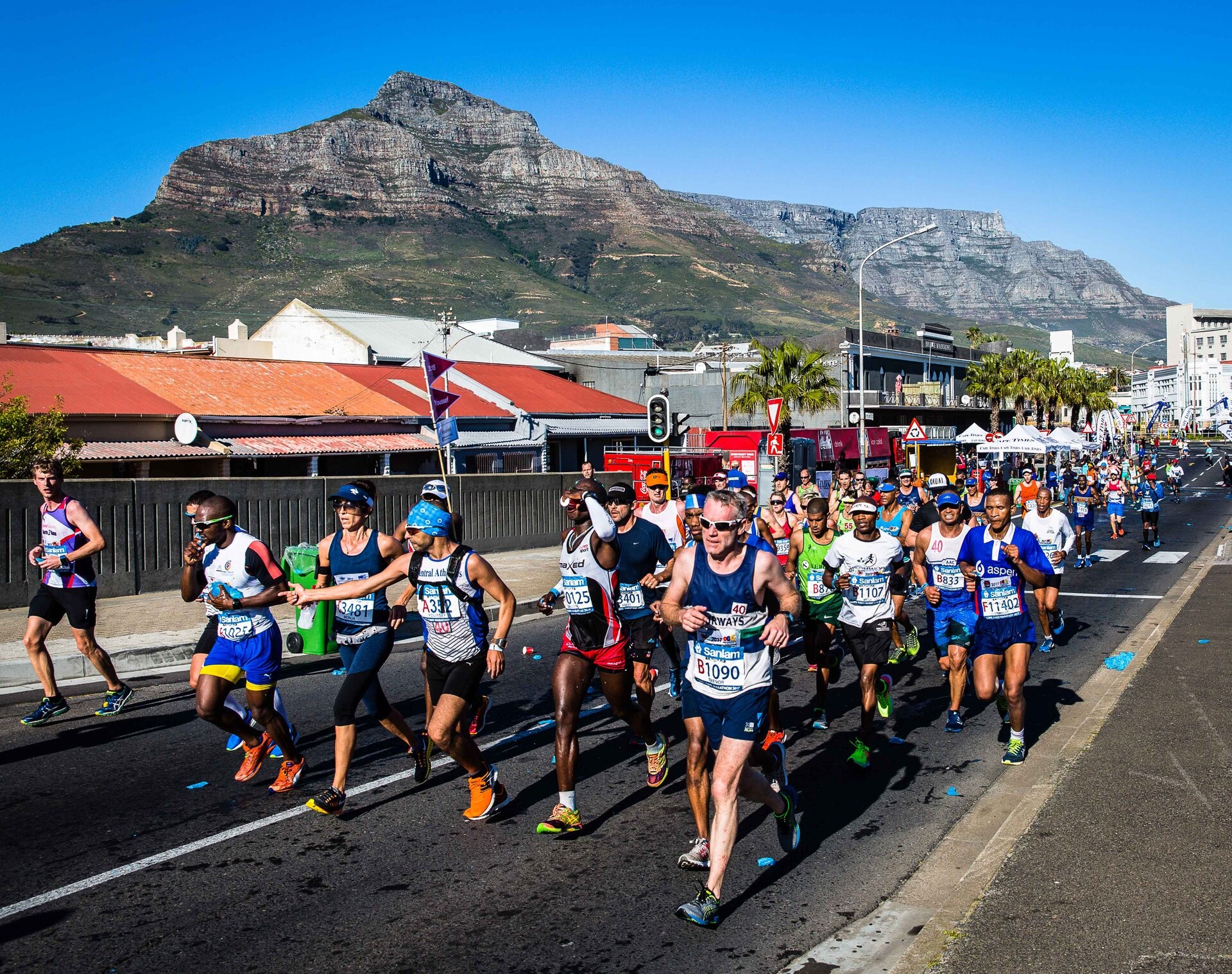
“Cape Town has continued its impressive progress since joining the candidacy process, and we are thrilled that it has now met all of our criteria for the first time,” said AbbottWMM CEO, Dawna Stone.
“We know how much the city, the country and the whole continent want the race to become Africa’s first Major, and they have taken a great step in the right direction.”
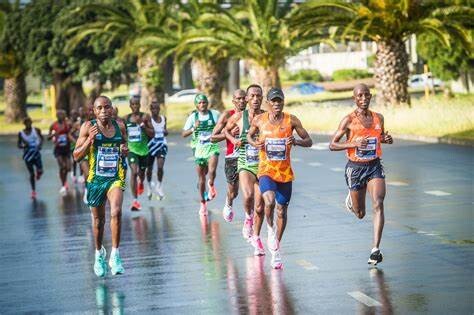
Behind the scenes, Infront’s partnership with the Sanlam Cape Town Marathon, which got under way in 2021, has helped to support the event’s application.
Hans-Peter Zurbruegg, Senior Vice President Active Lifestyle at Infront, said “Meeting the AbbottWMM criteria in 2024 for the first time reflects a true milestone on the journey to making our vision of the Sanlam Cape Town Marathon becoming part of the AbbottWMM Series as Africa’s first Major a reality.
“Sanlam Cape Town marathon will capture the imaginations of a global running community with its unique African spirit and the unlimited touristic offers that the area of Cape and South Africa as a country has to offer.
“This milestone is the result of the enormous efforts made by the local Cape Town marathon team, and the close partnership with all stakeholders involved that all share the same vision and want to shape the future of running, putting Cape Town as a city and Africa as a continent onto the world map of running.”
The next Sanlam Cape Town Marathon, Africa’s only World Athletics Gold Label marathon, will take place on Sunday, October 19, 2025. As one of the continent’s most prestigious marathons, it offers participants a scenic route through Cape Town’s landmarks, showcasing its scenery and cultural heritage.
In 2024, the Sanlam Cape Town Marathon achieved a milestone by successfully passing stage one of the rigorous Abbott World Marathon Majors (AbbottWMM) evaluation process. It now sets its sights on passing stage 2 in 2025, as it strives to become Africa’s first Major.
The marathon weekend also features a range of events, including the 10km and 5km Peace Runs and the 44km Trail Marathon, 22km Trail, and 11km Trail on Saturday, October 18, 2025. These events cater to runners of all abilities, whether on the road or trail.
The official expo, where participants can collect their race packs and explore various running products, will be held at the DHL Stadium fon October 16-18 October 2025.
With the support of our title sponsor Sanlam, alongside partners such as adidas and the City of Cape Town, the event continues to attract top-tier athletes and running enthusiasts from around the world.
by Gary
Login to leave a comment
Cape Town Marathon
The Sanlam Cape Town Marathon is a City Marathon held in Cape Town, South Africa, which is sponsored by Sanlam, the City of Cape Town and Vital Health Foods. The marathon is held on a fast and flat course, starting and finishing in Green Point, near the Cape Town Stadium. Prior to existing in its current format, the Cape Town...
more...Record-breaking teen sprinter Gout Gout is set to train alongside Noah Lyles
Gout Gout recently signed with Adidas and will have the opportunity to train alongside world champion Noah Lyles, gaining valuable mentorship as he continues his path to the top.
After inking a lucrative deal with leading German athletic apparel and footwear corporation Adidas, Gout Gout will now have a chance to train with triple world champion Noah Lyles.
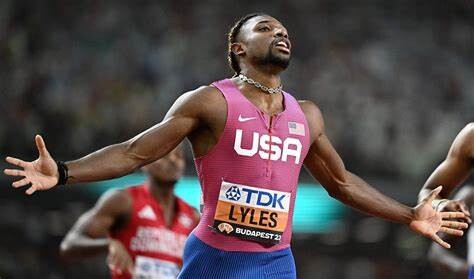
Gout Gout’s manager James Templeton noted that it is a great opportunity for the youngster to interact with Noah Lyles and get to know more about sprinting as he looks to chat his own path to the top.
James Templeton is optimistic that Noah Lyles will be open to teaching Gout Gout a lot, noting that he believes the reigning Olympic 100m champion is a great personality to be around.
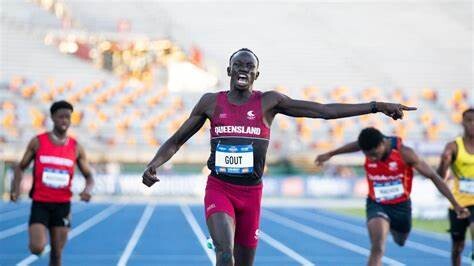
Noah Lyles is also an Adidas athlete and earlier this year, the American sprint king extended his contract until the 2028 Olympic Games in Los Angeles. Noah Lyles’ contract with Adidas is considered the richest in track and field since Usain Bolt's deal with Puma.
"We have the opportunity to go to Florida and join the training group of Noah Lyles and coach Lance Brauman (Lyles’ coach). There are about 16 or 18 top sprinters there,” James Templeton told ABC News.
"We'll be heading over for two or three weeks. That'll be a great opportunity, a wonderful educational experience. I haven't heard from Noah, but he's a great guy and I'm sure he'll be happy to take the younger guy under his wing a little bit."
Meanwhile, Gout Gout has been very impressive in his races and since 2022, he has proven to be unstoppable, running crazy times and making headlines. Gout Gout was named the holder of the Australian Under-16 100m and 200m records at the age of 14.
The following year, Gout Gout managed to break the Australian Under-18 men’s 200m record after running 20.87 seconds. He claimed top honors at the Australian Junior Athletics Championships in Brisbane.
In 2024, Gout Gout has been on top of the world with his crazy times and superb form. He started his season with a personal best time of 10.29 seconds to claim the win in the U-18 Boys 100m at the Queensland Athletics Championships.
Gout Gout then won the Australian U20 100m title in a time of 10.48 seconds in Adelaide before heading to the World Athletics U20 Championships in Lima, Peru. In Peru, the Australian youngster won a silver medal in the 200m.
He recently signed with Adidas and then proceeded to the Queensland All-Schools Championships, clocking a time of 20.29 seconds in the heats of the 200m to showcase his authority once again.
by Abigael Wafula
Login to leave a comment
2024 USATF 5K: Ahmed Muhumed And Annie Rodenfels Win
Annie Rodenfels went back-to-back while Ahmed Muhumed claimed his second US title of the year at the 2024 USATF 5K Road Championships on Saturday morning in Central Park. Rodenfels, who runs for the B.A.A. High Performance Team, broke away from Emily Venters and Emma Grace Hurley in the final mile to win in 15:20.
Muhumed, who won the US 8k road title in July and was the runner-up here last year, dropped the field with a hard move at 2 miles and held off a late charge from Sam Prakel to win in 13:38 to Prakel’s 13:39.
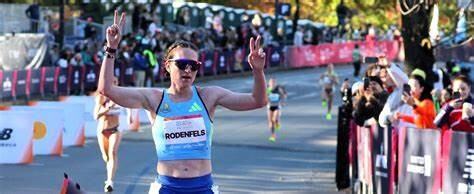
Top 10 results
Men
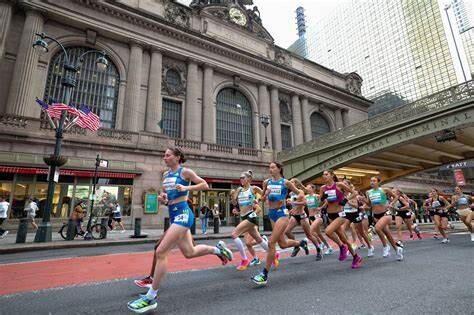
1. Ahmed Muhumed, HOKA NAZ Elite 13:38
2. Sam Prakel, adidas 13:39
3. Brian Barraza, Roots Running Project 13:42
4. Kirubel Erassa, unattached 13:44
5. Hillary Bor, HOKA One One 13:45
6. Anthony Rotich, US Army 13:48
7. Drew Bosley, unattached 13:49
8. Afewerki Zeru, McKirdy Trained 13:52
9. Abbabiya Simbassa, Under Armour 13:57
10. Morgan Beadlescomb, adidas 13:59
Women
1. Annie Rodenfels, B.A.A. 15:20
2. Emily Venters, Nike 15:25
3. Emma Grace Hurley, Asics 15:31
4. Bailey Hertenstein, Nike 15:32
5. Susanna Sullivan, Brooks 15:36
6. Abby Nichols, HOKA NAZ Elite 15:41
7. Paige Wood, HOKA NAZ Elite 15:41
8. Taylor Roe, Puma 15:43
9. Natosha Rogers, Puma 15:45
10. Molly Born, Puma 15:47
by Jonathan Gault
Login to leave a comment
Dash to the Finish Line
Be a part of the world-famous TCS New York City Marathon excitement, run through the streets of Manhattan, and finish at the famed Marathon finish line in Central Park—without running 26.2 miles! On TCS New York City Marathon Saturday, our NYRR Dash to the Finish Line 5K (3.1 miles) will take place for all runners who want to join in...
more...16-year-old Aussie sprinter turns pro with Adidas
The Grade 11 sprinter’s running style and tall frame have been compared to that of the legendary Usain Bolt.
Australia’s sprint sensation Gout Gout has signed a professional contract with Adidas at just 16.
The high schooler made headlines after he cruised to a 20.77-second win in the qualifying rounds of the 200m at the World U20 Championships this past August. The clip went viral in the athletics world, and track and field fans drew comparisons from his tall stature and running style to those of Jamaican track legend Usain Bolt.
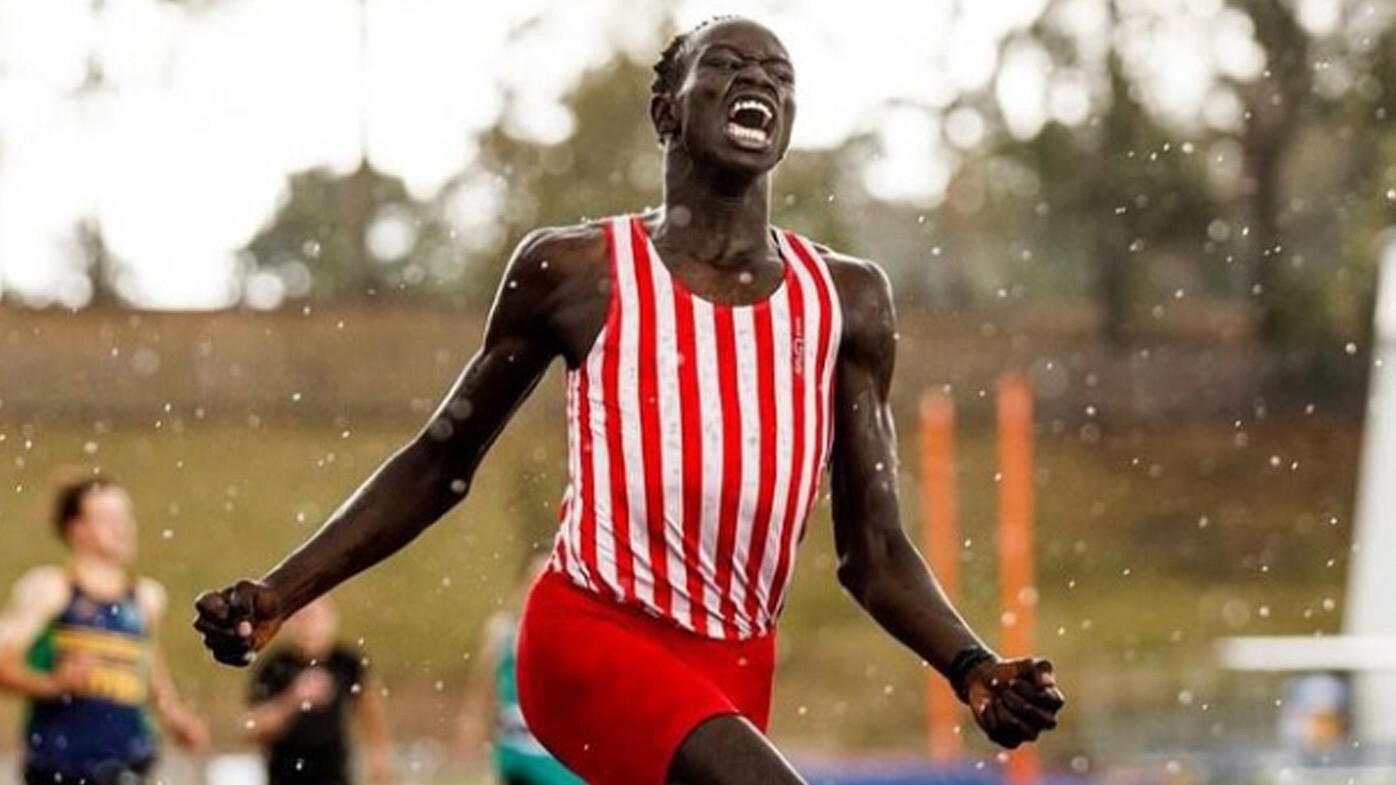
“Usain Bolt is that you?” one comment said.
“Gout Gout reminds me of Usain Bolt. He will definitely level up with him,” said another.
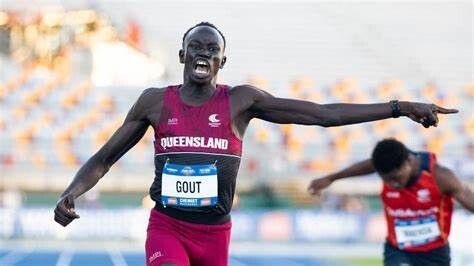
The following day, Gout ran another personal best of 20.60 seconds in the 200m final, setting an Australian U18 record and winning silver. He was outrun by South Africa’s Bayanda Walaza who took home double golds in the World U20 100m and 200m and won silver in the 4x100m relay at the Paris Olympics earlier that month. Walaza is two years older than Gout, who was competing against athletes three to four years older.
The Aussie’s performance surpassed Bolt’s own winning time from the 2002 Junior World Championships in Kingston, Jamaica, where the 16-year-old Jamaican clocked 20.61. “It’s pretty cool because Usain Bolt is arguably the greatest athlete of all time, and just being compared to him is a great feeling,” Gout said.
Like Bolt, the 200m isn’t Gout’s only event. He also holds a personal best of 10.29 in the 100m and has held the Australian U18 200m record since last year, at just 15.
In 2005, Gout’s parents moved from South Sudanese to Brisbane, Australia where Gout was born in 2007. The athlete attends Ipswich Grammar School, an all-boys boarding school, in Queensland, Australia, where he first showed off his athleticism in rugby. He’ll only be 24 when the Olympics come to his hometown of Brisbane in 2032.
by Cameron Ormond
Login to leave a comment
How to Plan for an International Marathon
AS RUNNING BOOMS and participation rates rise at races everywhere, people are looking to expand beyond their local fun runs for next-level experiences. International marathons in major cities—especially the six “World Majors” of Boston, Tokyo, London, Berlin, Chicago, and New York—have attained bucket list status on par with the most exotic vacation destinations, and more competitors are trying to join in than ever. More than 840,000 people submitted entries to the 2025 London race (for only about 50,0000 bibs), and the recent 2024 Berlin Marathon broke the record for the largest field ever with 54,280 finishers. I was lucky enough to be one of them, thanks to a comped bib from event sponsor Adidas. The atmosphere on the course was electric, and as I legged my way through the streets of the German capital, I couldn’t help thinking that it might be the best way to experience a foreign city.
But gaining entry into one of these races is just the start of a complicated process—and I’m not only talking about the months-long training program (most start at about 16 weeks out) athletes need to prepare for a marathon. The average holiday trip doesn’t involveWhen I set out to run Berlin I had finished three other marathons, but had never raced outside the US. I knew I’d have to take some extra effort, since factors like the time change, language barriers, and even the lack of familiar foods in local stores could throw off my routine right before the big day. But I wasn’t exactly sure about the best way to go about building an itinerary, so I turned to some experts so that my bucket-list race wouldn’t end in disaster. How to Plan for an International Marathon

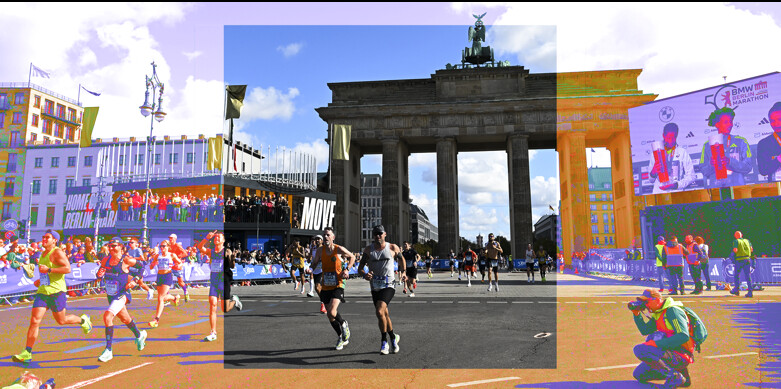
NO MATTER HOW well-prepared you think you are to run a marathon fitness-wise, traveling to another country to compete will be a challenge, says Jessie Zapotechne a NYC-based performance coach and US community leader of Adidas Runners. She has run the Berlin Half and Marathon multiple times since 2012, and says she uses her experience from all those races to counsel runners for their own jetset trips. “To be quite honest, I think about these tips because of all the mistakes I've made over the years,” Zapotechne says. “That helps me to be a better coach from learning the hard way.”
Tommie Runz is a content creator and runner from Detroit. While there are events in his local area, almost all of his races have required travel. “I've done 14 marathons, and only one of them was in my state,” he says. Since we spoke, he added another to that list (Chicago), and he’ll finish out the season with New York City, hitting all six Majors in 2024. He’s also vegan—so he understands the challenges that come while traveling for anyone who has dietary restrictions.
These experts have consideredHaving those extra days will be important to allow you to recover from the flight, adjust to time and climate differences, and set yourself up for a good night’s sleep ahead of the big day. Less practically, an earlier arrival will give you a chance to take part in as much of the marathon experience as you can.Zapotechne also advises that you make one other early booking to avoid last-minute scrambling and high costs: dinner the night before the race. Aim for carb-heavy meals that won't upset your stomach, so resist the urge to try a new type of cuisine, even though you're in a foreign city. “Find a place that's nearby or accessible [to your hotel] so that you're going to have an early dinner and get back to your hotel, get off your feet, and have all your stuff ready,” she says. Aim for a sit-down meal two or three hours before you plan to go to sleep. "You don't want to have a late night dinner before your race," Zapotechne cautions. "You [might still be] digesting it in the morning, or [maybe] you can't go to the bathroom in the morning because you ate too late. And that's never fun."
Race Gear Gets Packing Priority
One of the most common marathon truisms is “nothing new on race day.” You’ll put that to the test if you show up to your destination and your checked bags containing your race day kit don’t. Limit the chances of gear emergencies by making sure yourOnce you’re on the ground at your destination, don’t ditch your bottle so quickly, either. “Definitely carry your water bottle around with you when you are out and about in that city—not every country drinks a lot of water,” Zapotechne notes.
In Berlin, for instance, I was surprised to find that normal still water isn't always easy to find. I constantly found myself making extra requests in restaurants or sorting through bottles of sparkling water to stay hydrated. International races often offer fewer aid stations on the course than American events—every three miles, rather than every mile, according to Zapotechne—so if you’re the type of runner who needs a drink before the three-mile marker, she advises starting the race carrying a bottle, too. Sleep Smart—and Be Ready for the Time Change
Sleep might not be your main concern when you’re trying to enjoy every bit of your time in another country, but you’ll need plenty of it for the long run. Similar to hydration, you should aim to start off your trip on the right foot even before you’ve left. “If you know you're not a great sleeper during travel, try to sleep a lot the week before, so that you're already getting your body ready for wonky travel sleep,” Zapotechne advises. There's no magic number for everyone, but try getting two or three extra hours in the days leading up to the flight if you can.
Along these lines, you’ll have to adjust to a different time zone, which can be jarring especially if you don’t travel often. “You have to almost start being aware of the time change before you even leave,” Runz says. Try going to bed and waking up to match that time zone for a day or two before the trip to acclimate. Then if your flight lines up with night time at your destination, he recommends you use the trip to get extra rest. “Take advantageThe actual number will depend on the person, but she says that range will still allow you to take plenty of time on your feet for stuff you need to do, like visiting the expo to pick up your bib and even for a short shakeout run, since you will need to loosen up after the flight and get acclimated ahead of the race. Just don’t go overboard, and avoid extraneous steps by taking a cab instead of legging it or standing in long lines at tourist traps. “Danger Zone for sure is when you're getting close to 20,000. That's too many steps,” she says.
I was able to go to a Saturday shakeout run within this structure, but skipped out on walking to the Brandenburg Gate before the race when my steps creeped up near the 10K mark. When I wanted to meet a friend for coffee, I rode a bike the mile to the café instead of hoofing it on foot.
If you’re at an impasse and struggling to fit everything you want to do before your race, that might be a sign to plan time for sightseeing after you run. “If you are going to plug inAlongside real-time translation, some apps like Google Translate have features that can use the camera to translate text, so you’ll be able to decipher what exactly is on a nutrition label. You’ll have an easier time getting last-minute fuel without something you can’t eat if you’ve taken the step to download the app (and download your destination’s label for offline use, too) ahead of time. Read the Forecast, But Plan for Anything
Weather can be a challenge anywhere, but you’ll especially need to be mindful of the conditions ahead of your race. “Make sure to check the weather in the city you are traveling to a few days in advance—and prepare that weather can change when you arrive, so pack clothing for all types of weather,” she says. You can get a decent idea what the conditions will be at three or four days out, but even a rough 10-day forecast will be useful if your itinerary is on the longer side. “Also make sure to put a warm or comfortable change of clothes and slides in your checked back for after the race, as you'll want something comfortable to change into after running 26.2,” Zapotechne advises.
Don’t get too distracted by high temps, either. You’ll need to also keep an eye on what the lows are slated to be, especially considering that you’ll probably need to leave for the corral early in the morning when the full heat of the day will still be hours in the future. You’ll likely spend more time outside when it’s colder—while trying to conserve yourThis was especially important in Berlin, and I almost missed my wave because I didn't heed this advice. The race organizers had worked to make it the biggest marathon of all time—and in doing so, the staging area was a madhouse. People were packed in small areas, and signage wasn’t always clear. I arrived at the crush of people 15 minutes ahead of the gun, and found myself pushing through the crowd and climbing over barriers to get to my proper pace group. That took up a lot more energy and effort than I wanted before I was slated to run for three-plus hours.
Ultimately, it’s up to you to get to the starting line. Runz knows there are no hacks once you near zero hour and everyone is raring to go, especially as running has grown so much over the last few years. “Every race is going to be like this—until the streets get bigger,” he says.
by Men’s Health
Login to leave a comment
How to train for a marathon no matter how fit you are
If you’re planning a marathon, you’re on the road to becoming part of a select proportion of the global population – 0.01 per cent, to be exact. But that doesn’t mean running one is exclusive to the lycra-clad minority. With the right planning, training and dogged determination anyone can have a go. Here’s what you need to know if you’re gearing up to train for the race of your life.
Which marathon should I choose to run?
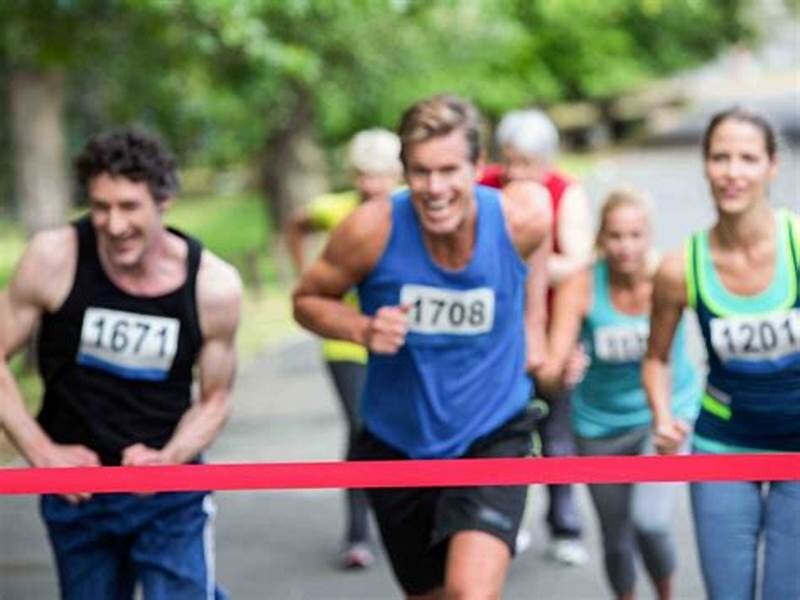
The London Marathon is special, with incredible atmospheric and historic appeal, but it’s notoriously tricky to get a place and is far from the only one to consider. All marathons are 26.2 miles, so if you’re a beginner, you might want to choose what seasoned runners call an “easy” marathon – one with a flat and paved course. While the Brighton Marathon is one of the most popular (and mostly flat) UK spring races, the Greater Manchester Marathon is known as the flattest and fastest UK option. The under-the-radar Abingdon Marathon is one of the oldest in the UK and also has a flat route – great for new runners and for those who are keen to beat their personal bests.
Around Europe, try the Berlin and Frankfurt marathons in Germany, or the Amsterdam Marathon in the Netherlands. More recently, the Valencia and Seville marathons in Spain have grown in appeal. For a great beginner list, visit coopah.com. It’s worth doing your research to ensure it’s a route you’ll enjoy (atmospheric, well populated, flat, historic… whatever piques your interest), as this will pay dividends when things get tough.
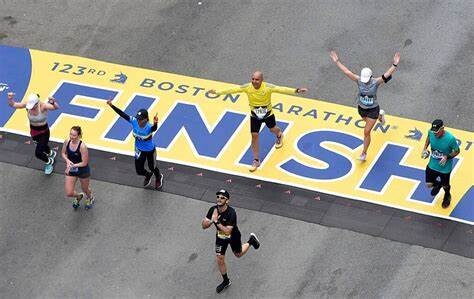
Training
How long does it take to train for a marathon?
“You need 16-to-18 weeks of training,” says Richard Pickering, a UK Athletics qualified endurance coach. “And if you’re starting from nothing, I think you need closer to six months.” This may sound like a long time to dedicate to one event but a structured plan will help you develop the strength, endurance and aerobic capacity to run longer distances. Not to mention work wonders for your overall health.
“Anyone can run a marathon if they are willing to put in the hard work,’ says Cory Wharton-Malcolm, Apple Fitness+ Trainer and author of All You Need Is Rhythm & Grit . “As long as you give yourself enough time and enough grace, you can accomplish anything.’
Ready to get running? Read on.
Five steps to preparing for a marathon
1. Follow a training plan and increase mileage gradually
“Even if it’s a simple plan, and that plan is to run X times per week or run X miles per week, it’s beneficial to have something guiding you,’ says Wharton-Malcolm. ‘It’s happened to me, without that guidance, you may overtrain causing yourself an injury that could have been avoided. And if you’re injured, you’re far less likely to fall in love with running.”
For authoritative plans online, see marathon event websites (try the Adidas Manchester Marathon or the TCS London Marathon websites) or from a chosen charity such as the British Heart Foundation. Most will consist of the key training sessions: speed work (spurts of fast running with stationary or active rest periods), tempo runs (running at a sustained “comfortably uncomfortable” pace), and long-distance slogs.
Most marathon plans will abide by the 10 per cent rule, in that they won’t increase the total run time or distance by more than 10 per cent each week – something that will reduce your risk of injury.
2. Practise long runs slowly
Long runs are your bread-and-butter sessions. They prepare your body to tolerate the distance by boosting endurance, and give you the strength to stay upright for hours. Intimidating as this sounds, the best pace for these runs is a joyously slow, conversational speed.
“People may think they need to do their marathon pace in long runs,” says Pickering, “but it’s good to run slowly because it educates the body to burn fat as fuel. This teaches it to use a bit of fat as well as glycogen when it goes faster on race day, and that extends your energy window so that you’re less likely to hit the ‘wall’.”
The caveat: running slowly means you’re going to be out for a while. With the average training plan peaking at 20 miles, you could be running for many hours. “When I did lots of long runs, I had a number of tools: listening to music, audio-guided runs, apps or audio books,” says Wharton-Malcom. “I used to run lots of routes, explore cities… You can also do long runs with friends or colleagues, or get a train somewhere and run back so it’s not the same boring route.”
3. Do regular speed work
Speed work may sound like the reserve of marathon aficionados, but it’s good for new long-distance runners too. “I think people misunderstand speed work,” says Wharton-Malcom. “The presumption is that the moment you add ‘speed’ to training, you have to run like Usain Bolt, but all ‘speed’ means is faster than the speed you’d normally be running. So if you go out for a 20-minute run, at the end of the first nine minutes, run a little faster for a minute, then at the end of the second nine minutes, run a little faster for a minute.”
Small injections of pace are a great way for novices to reap the benefits. “The idea is to find the sweet spot between ‘Ah, I can only hold on to this for 10 seconds’ and ‘I can hold on to this for 30-to-60 seconds’,” he adds.
Hill sprints are great for increasing speed. Try finding a loop with an incline that takes 30 seconds to ascend, then run it continuously for two to three lots of 10 minutes with a 90-second standing rest.
Interval work is also a speed-booster. Try three lots of three minutes at tempo pace with a 90-second standing rest. “The recovery [between intervals] is when you get your breath back and your body recirculates lactate [a by-product of intense exercise, which ultimately slows bodies down],” explains Pickering, “and this means you’re able to do more than you otherwise would.”
4. Run at marathon-pace sometimes
Every now and then, throw in some running at your chosen race pace. “You need to get used to a bit of marathon pace,” says Pickering, “but I wouldn’t put it into your programme religiously.”
Some runners like to practise marathon pace in a “build-up” race, typically a half-marathon. “It can give people confidence,” says Pickering. “Your half-marathon should be six-to-seven weeks prior to the main event, and have a strategy to ensure you’re not racing it because you need to treat it as a training run.”
5. Schedule in rest and recovery
Of course, no training plan is complete without some R&R. Rest days give your body a chance to adapt to the stresses you’ve put it through and can provide a mental break. “Active recovery” is a swanky term for taking lighter exercise such as an easy run, long walk, gentle swim, some yoga – crucial because you don’t want to do two hard sessions back-to-back. “A long run would count as a hard day, so if your long run is on Sunday, you could do an easy run such as 30-40 minutes at a conversational pace on a Monday, but don’t do anything fast until Tuesday,” says Pickering.
What about recovery tools?
Foam rollers, massage guns, ice baths – the list is long. Pickering says to keep it simple: “I would encourage foam rolling [relieving muscle tension by rolling over a foam tube] or sports massage, and they’re kind of the same thing.”
And Wharton-Malcom swears by the restorative power of a good rest: “From personal experience, sleep is our secret weapon and it’s so underrated. Getting your eight-hours-plus per night, taking power naps during the day… you can do so well with just sleeping a bit more.”
Race day
How to perform your best on race day – what to eat
“The marathon is going to be relying on carbohydrate loading [such as spaghetti, mashed potato, rice pudding], which should take place one-to-three days before an event,” explains performance nutritionist Matt Lovell. Other choices might include: root vegetables (carrots, beetroot), breads or low-fat yoghurts.
“On the day, the main goal is to keep your blood glucose as stable as possible by filling up any liver glycogen.” Which means eating a breakfast rich in slow-release carbohydrates, such as porridge, then taking on board isotonic drinks, like Lucozade Sport or coconut water, and energy gels roughly every 30-45 minutes.
How to stay focused
Even with the right fuel in your body, the going will get tough. But when you feel like you can’t do any more, there is surprisingly more in the tank than you realise.
“Sports scientists used to think we eat food, it turns into fuel within our body and, when we use it up, we stop and fall over with exhaustion,” says performance psychologist Dr Josephine Perry. “Then they did muscle biopsies to understand that, when we feel totally exhausted, we actually still have about 30 per cent energy left in the muscles.”
How do you tap into that magic 30 per cent? By staying motivated – and this ultimately comes down to finding a motivational mantra that reminds you of your goal and reason for running.
“Motivational mantras are incredibly personal – you can’t steal somebody else’s because it sounds good; it has to talk to you,’ explains Dr Perry, author of The Ten Pillars of Success. “Adults will often have their children as part of their motivational mantra – they want to make them proud, to be a good role model. If you’re doing it for a charity, it might be that.” Write your motivational mantra on your energy gel, drinks bottle or hand. “It doesn’t just need to come from you,” adds Dr Perry. “I love getting athletes’ friends and family to write messages to stick on their nutrition, so every time they take a gel out of their pocket, they’ve got a message from someone who loves them.” Perry is supporting the Threshold Sports’ Ultra 50:50 campaign, encouraging female participation in endurance running events.
Smile every mile, concludes Dr Perry: “Research shows that when you smile it reduces your perception of effort, so you’re basically tricking your brain into thinking that what you’re doing isn’t as difficult as it is.”
One thing is for sure, you’re going to be on a high for a while. “What happens for most people is they run the race and, for most of the race, they say ‘I’m never doing this again,’ says Wharton-Malcom. “Then the following morning, they think, ‘OK, what’s next?’”
What clothes should you wear for a marathon?
What you wear can also make a difference. Look for clothing made with moisture-wicking fabrics that will move sweat away from the skin, keeping you dry and comfortable. An anti-chafe stick such as Body Glide Anti-Chafe Balm is a worthy investment, or simply try some Vaseline, as it will stop any areas of the skin that might rub (under the arms, between the thighs) from getting irritated. Seamless running socks, like those from Smartwool, can also help to reduce rubbing and the risk of blisters.
Post-race recovery
What to eat and drink
Before you revel in your achievement, eat and drink something. Lovell says recovery fuel is vital: “Getting carbohydrates back into the body after a marathon is crucial. It’s a forgiving time for having lots of calories from carbohydrates and proteins, maybe as a recovery shake or a light meal such as a banana and a protein yoghurt.”
Have a drink of water with a hydration tablet or electrolyte powder to replenish fluid and electrolyte salts (magnesium, potassium, sodium) lost through sweat.
“You can have a glass of red later if you want, but your priority is to rehydrate with salts first, then focus on carbohydrate replenishment, then have some protein, and then other specialist items such as anti-inflammatories.” Choose anti-inflammatory compounds such as omega 3 and curcumin from turmeric, which you can get as a supplement, to help reduce excessive inflammation and allow for better muscle rebuilding.
Tart cherry juice – rich in antioxidants, anti-inflammatories and naturally occurring melatonin – could also be useful, with the latest research reporting that it can reduce muscle pain after a long-distance race and improve both sleep quantity and quality by five-to-six per cent. “And anything that improves blood flow such as beetroot juice, which is a good vasodilator, will help with endurance and recovery,” adds Lovell. Precision Hydration tablets are very good for heavy sweaters.
Any other other good products to help with recovery?
The post-run recovery market is a saturated one, but there are a few products worth trying. Magnesium – from lotions and bath flakes to oil sprays drinks and supplements – relaxes muscles and can prevent muscle cramps, as well as aiding recovery-boosting sleep.
Compression socks boost blood flow and therefore the removal of waste products from hardworking muscles, and have been shown to improve recovery when worn in the 48 hours after a marathon. Arnica has anti-inflammatory properties that can help speed up the healing process after a long run, and can be used as an arnica balm or soak.
by The Telegraph
Login to leave a comment
TCS Toronto Waterfront Marathon elite field announced for 2024
We are just 10 days away from Canada’s largest race weekend: the 2024 TCS Toronto Waterfront Marathon. Since 2015, this event has also served as the annual Canadian Marathon Championships. This year’s race will feature everything from former champions and national record holders to rising stars looking to make their mark on the 42.2 km distance.
Here’s your cheat sheet for the men’s and women’s elite fields in Toronto.
Canadian men’s field
Andrew Alexander (Toronto): The 25-year-old former NCAA standout won the 2023 Toronto Waterfront Half-Marathon in 62:44. He is coached by Matt Hughes, the Canadian record holder in the men’s 3,000m steeplechase, and former Canadian marathoner Dave Reid. Alexander is aiming for a sub-2:10 finish at his hometown marathon.

Thomas Broatch (Vancouver): The reigning Canadian marathon champion. He was the first Canadian across the line last year in his marathon debut (2:16:25). Four months later, Broatch took another shot at the distance, lowering his personal best by more than four minutes at the 2024 Houston Marathon (2:11:54).
Justin Kent (Surrey, B.C.): This will be Kent’s first time competing at the Toronto Waterfront Marathon. He ran his PB of 2:13:07 at the 2023 Prague Marathon, earning him a spot on Team Canada’s men’s marathon team for the 2023 World Athletics Championships.
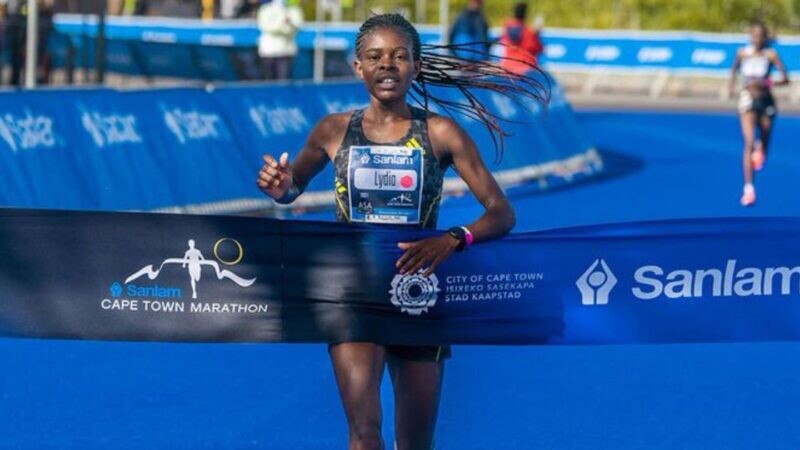
Maxime Leboeuf (Gatineau, Que.): Leboeuf finished third at the 2022 Montreal Marathon in 2:24:25. He’s a former graduate of Queen’s University XC program and an avid cross-country skier.
Kieran McDonald (Halifax): McDonald will be making his marathon debut in Toronto. He ran his half-marathon best of 65:45 at the 2024 Houston Half Marathon in January.
Alex Neuffer (Stratford, P.E.I.): Neuffer ran his PB of 2:21:34 at the 2022 Boston Marathon, finishing as one of the top Canadians. He’s a graduate of St. Francis Xavier University’s XC program and a training partner of Kieran McDonald (see above).
Thomas Nobbs (Vancouver): The 25-year-old will be running his second-career marathon in Toronto. He made his debut in Philadelphia last fall, running 2:19:13. Nobbs finished just off the podium at the 2024 Canadian 10K Championships, in 29:31. He also finished second at the Canadian Half Marathon Championships in Winnipeg in June.
Sergio Ráez Villanueva (Mississauga, Ont.): Ráez Villanueva has competed at the Toronto Waterfront Marathon for the last two years. He set his best of 2:18:04 here in 2022 (his marathon debut). Ráez Villanueva is self-coached and also coaches youth athletes in his hometown of Mississauga.
Tristan Woodfine (Cobden, Ont.): Coached by former Canadian Olympic marathoner Reid Coolsaet. Woodfine won the half marathon here in 2022. He has the fastest time among Canadian men in the field, with a PB of 2:10:39 from Houston earlier this year.
International men’s field
Elvis Cheboi (Kenya): Cheboi ran his personal best of 2:09:20 to win the 2023 Toronto Waterfront Marathon. (Reigning champion)
Mulugeta Uma (Ethiopia): Uma ran 2:05:33 to win the 2024 Paris Marathon in April. He has the fastest personal best in the men’s field.
Abdi Fufa (Ethiopia): Fufa finished just off the podium at the 2024 Dubai Marathon in January (2:06:23). He ran his PB of 2:05:57 at the Siena Marathon in 2021 (where he was second). The 29-year-old is looking for his first marathon win.
Hailu Zewdu (Ethiopia): The 29-year-old ran his PB of 2:06:31 at the Dubai Marathon in 2020. He has not broken 2:09:00 in his six marathons since.
Gizealew Ayana (Ethiopia): Ayana is the youngest elite athlete in the field–he’s only 21. He ran his PB of 2:07:15 to win the 2023 Paris Marathon in his debut at the distance.
Domenic Ngeno (Kenya): The 26-year-old is the fastest Kenyan marathoner in the Toronto field. He won the 2024 L.A. Marathon in March in 2:11:01. Ngeno’s PB of 2:07:26 was from a podium finish at the 2023 Eindhoven Marathon in the Netherlands.
Noah Kipkemboi (Kenya): A veteran of the marathon distance. The 31-year-old has competed at more than 10 marathons in his career. He podiumed at the Enschede Marathon earlier this year, with a time of 2:09:06.
Brian Kipsang (Kenya): Kipsang arrives in Toronto fresh off a personal best at the 2024 Milan Marathon in March, where he placed second in 2:07:56. The 30-year-old has finished in the top five at three of his last four races.
Abe Gashahun (Ethiopia): Gashahun has the fastest half-marathon personal best in the field of 59:46. He’s had success at shorter distances and cross country, but it hasn’t yet translated to the marathon. The 26-year-old ran 2:08:51 earlier this year in Saudi Arabia.
Sydney Gidabuday (U.S.A.): Former member of Adidas Tinman Elite Track Club in Colorado. Gidabuday made his marathon debut on Canadian soil at the 2023 Ottawa Marathon, where he finished ninth. His PB of 2:14:34 was run at the hilly NYC Marathon in 2023.
Yusuf Nadir (U.S.A.): Personal best of 2:15:27 from the 2023 Grandma’s Marathon in Duluth, Minn. He finished 25th at the U.S. Olympic Marathon Trials in February.
Aidan Reed (U.S.A.): Also made his marathon debut at the 2023 Ottawa Marathon–2:20:23. Reed ran collegiately at Southern Utah University, following in the footsteps of Canadian marathon record holder Cam Levins.
Canadian women’s field
Kate Bazeley (St. John’s, N.L.): The 40-year-old ran her PB of 2:36:35 in Toronto in 2019. Earlier this year, Bazeley represented Team Canada at the World XC Championships in Belgrade, Serbia.
Anne-Marie Comeau (Saint-Ferréol-les-Neiges, Que.): The 2018 Canadian (winter) Olympian ran her marathon best of 2:34:51 in Toronto last year, crossing the line as the second Canadian woman.
Asia Dwyer (Toronto): Dwyer ran her personal best of 2:42:45 at the 2023 Toronto Waterfront Marathon last fall. She told Canadian Running in an interview for the November/December 2024 issue of the print magazine that she is looking to smash her previous best.
Rachel Hannah (Port Elgin, Ont.): Hannah was the top Canadian finisher at the 2024 Ottawa Marathon in May. She won a bronze medal for Canada at the 2015 Pan-American Games in Toronto. She ran her personal best of 2:32:09 was at the 2016 Houston Marathon.
Liza Howard (Toronto): Howard told Canadian Running in an interview that her goal is to reach the podium and run a personal best. Howard ran her current personal best of 2:35:29 at the 2022 Chicago Marathon. She has unofficially broken the Canadian women’s 50K record, twice, in her marathon build for this race.
Erin Mawhinney (Hamilton): The 28-year-old runner will be making her marathon debut in Toronto. She is coached by two-time Canadian Olympian Reid Coolsaet. She broke the tape at the Toronto Waterfront Half Marathon last year, running a PB of 1:13:50.
Melissa Paauwe (Calgary). Paauwe is carrying the pride of Calgary into Toronto. She ran her PB of 2:41:12 at the 2023 Chicago marathon, and finished as the top Canadian.
Leslie Sexton (Markham, Ont.): Sexton returns to Toronto to run her hometown marathon. She said she will be trying to qualify for Worlds in Tokyo next year. She set her PB of 2:28:14 at the 2024 Houston Marathon this year, but missed the Olympic standard by two minutes.
Natasha Wodak: (Vancouver) started her marathon career here in 2013 but has not returned until this year; has never won the championship. Her PB of 2:23:12 from the 2022 Berlin Marathon stands as the current Canadian record.
International women’s field
Waganesh Mekasha (Ethiopia): Has a personal best of 2:22:45 from the 2019 Dubai Marathon. The 32-year-old Ethiopian won the 2023 Ottawa Marathon and finished second in Toronto last fall, with a time of 2:23:12.
Afera Godfay (Ethiopia): Godfay finished third behind compatriots Buze Diriba and Mekasha (see above) last year. She has a personal best of 2:22:41 and has finished in the top five in four of her last five marathons.
Roza Dejere (Ethiopia): The 27-year-old Ethiopian has the fastest personal best in the women’s field (2:18:30). She finished fourth in the women’s marathon at the Tokyo Olympic Games. She comes to Toronto as a threat to the course record of 2:22:16, which was set in 2019.
Meseret Gebre (Ethiopia): Gebre hasn’t raced since Toronto last fall, where she finished seventh in 2:29:54. She set her PB of 2:23:11 to win the Barcelona Marathon in 2022.
Valentina Matieko (Kenya): One of two Kenyan women in the international elite field. Matieko comes to Toronto fresh off a personal best earlier this year at the Paris Marathon in April (2:24:21).
Lydia Simiyu (Kenya): Simiyu ran her PB of 2:25:10 earlier this year at the Rome Marathon. She served a six-month doping suspension in 2022 after she tested positive for chlorthalidone after the Poznan Half Marathon in Poland.
Rediet Daniel (Ethiopia): Two top-five finishes in her three professional marathon starts. The 24-year-old Ethiopian ran her personal best of 2:26:25 at the 2024 Doha Marathon in February.
The TCS Toronto Waterfront Marathon, to be held on Oct. 20, is Canada’s premier running event and the grand finale of the Canada Running Series (CRS). Since 2017, the race has also served as the Athletics Canada marathon championship and Olympic trials.
by Marley Dickinson
Login to leave a comment
TCS Toronto Waterfront Marathon
The Scotiabank Toronto Waterfront Marathon, Half-Marathon & 5k Run / Walk is organized by Canada Running Series Inc., organizers of the Canada Running Series, "A selection of Canada's best runs!" Canada Running Series annually organizes eight events in Montreal, Toronto and Vancouver that vary in distance from the 5k to the marathon. The Scotiabank Toronto Waterfront Marathon and Half-Marathon are...
more...66-year-old marathoner qualifies for Boston with Stage 4 cancer
The story of 66-year-old Canadian marathoner Dana Fox is one of extraordinary perseverance. Diagnosed with Stage 4 cholangiocarcinoma less than a year ago, Fox completed Ontario’s Georgina Marathon on Sept. 8, in 3:56:50, likely securing a spot for the 2025 Boston Marathon.
In October 2023, Fox and his coach, Joe Chappell, met to discuss Fox’s future marathon goals, but just a week later, he was diagnosed with cancer. Despite a grim prognosis and being given less than a year to live, Fox remained determined. “Dana said almost right away he wanted to treat this like a running injury,” Chappell told Canadian Running. “At one point, he was in so much pain that bending over to tie his shoes was almost impossible.”
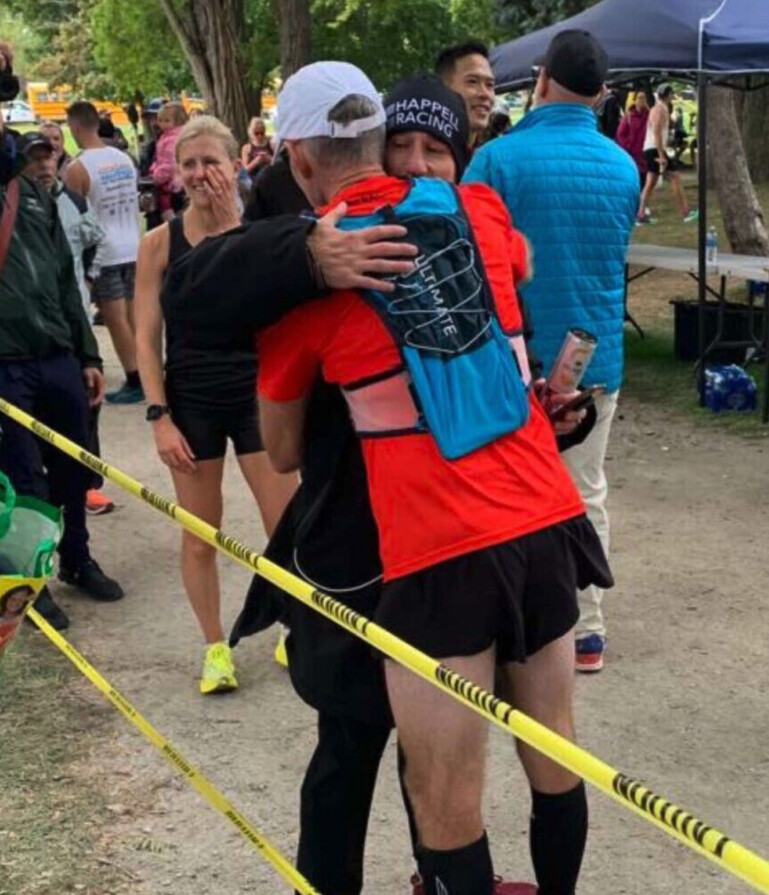
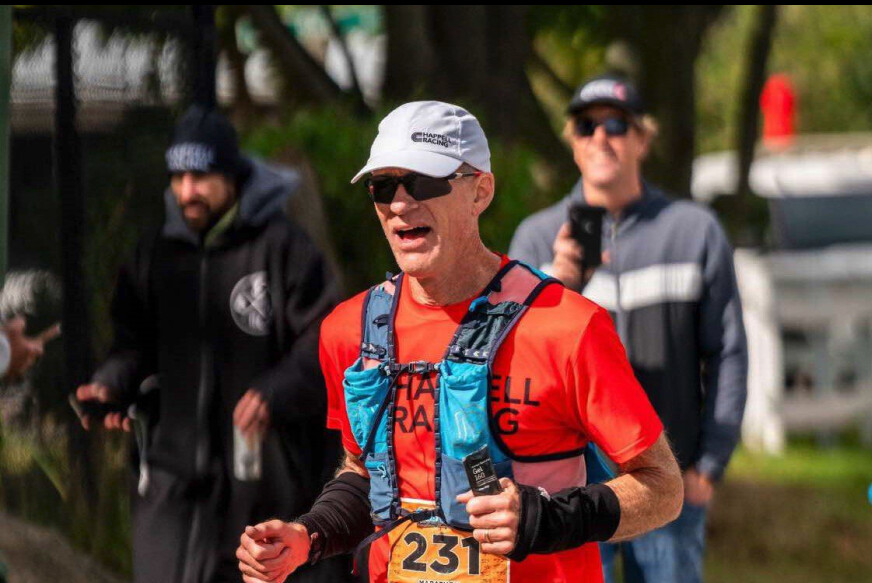
Chappell said they kept in touch during Fox’s chemotherapy. Within a few months, he was able to start slowly walking and indoor riding. In May, Fox reached out to Chappell with ambitions to return to running, as his energy was returning. His goal: the 2024 Georgina Marathon, a last-chance qualifier for the 2025 Boston Marathon.
Against his doctors’ recommendations, Fox began training for the marathon with less than eight weeks until race day—half the typical time most marathoners devote to training. His family and friends from Waterloo and beyond supported him during the race. The men’s 65-69 qualifying time was 4:05:00, but Chappell said they aimed to beat last year’s cut-off of five minutes and 29 seconds.
Fox’s finishing time of 3:56:50 put him eight minutes and 10 seconds under the mark. Canadian marathoner Rachel Hannah paced him for the second half of the race, with family and friends cheering and offering support throughout. He carried a pair of red Adidas spikes gifted by his father in 1971, a symbol of resilience during his journey.
Fox is confident he will be among the few who defeat the cancer. He credits the experience of finishing the Georgina Marathon with his running club as a crucial psychological boost, fuelling his journey to recovery.
On Sept. 15, Fox spoke at the Terry Fox Run in Saugeen Shores, Ont. (He is not related to Canadian athlete and humanitarian Terry Fox.) “We made it for all those people who have cancer and were told they’re not going to make it; this run’s for them. Don’t ever quit,” Fox told Georgina Post. “The hotel’s already booked [for Boston]. I’m in, baby. We’re going. I’m going to live. I’m getting back on the bus. I’m not leaving.”
by Running Magazine
Login to leave a comment
The Best Marathon Racing Shoes (2024)
After a year of testing, we've identified 12 marathon shoes that will boost your performance and make the race more enjoyable
While training undeniably has the biggest impact on your marathon performance, there’s one more thing you can do to ensure you’re ready to give your best on race day: invest in a pair of marathon racing shoes.
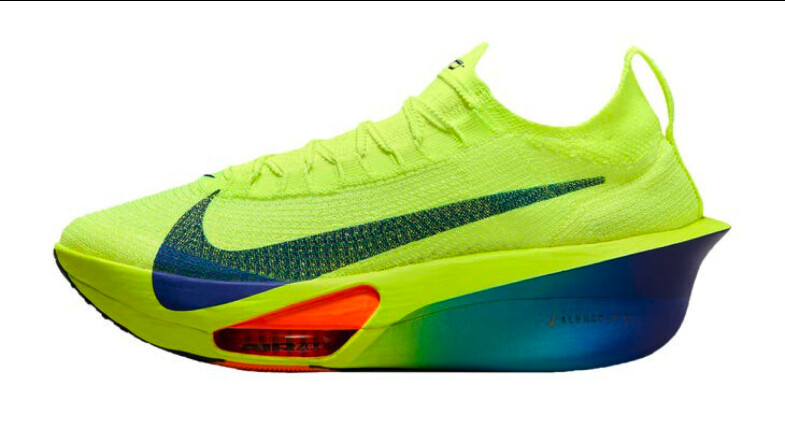
An effective marathon racing shoe can help reduce the repeated impact that miles after miles put on your legs while allowing you to get more energy out of each footstrike. Even more importantly, the right marathon racing shoe will provide you with a platform that is stable and cushioned enough to carry you through 26.2 miles in security and comfort. We’ve spent the last year rigorously testing every option on the market to help you easily pick the perfect pair for you.
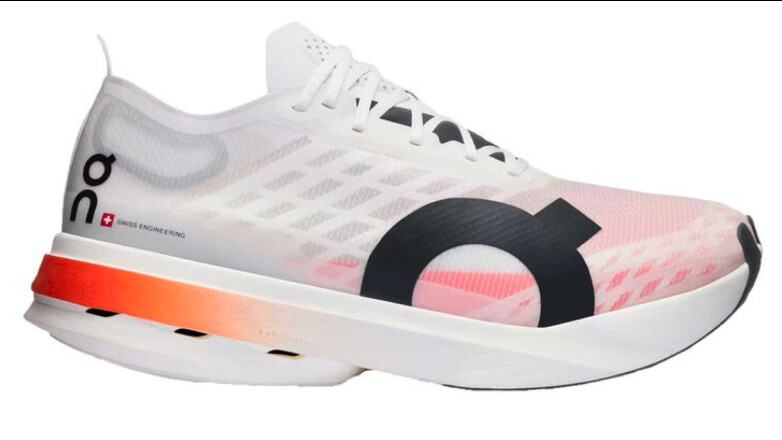
Seven years after the debut of the first super shoe, the thick-stacked, carbon-plated racers are ubiquitous at the front of every marathon and increasingly common among runners in the pack looking to optimize their performance. These shoes have been lab-proven to improve running economy by a few percentage points, making it easier to maintain a faster pace. Runners also report that, when running in a super shoe that complements their stride, they experience less muscular fatigue as well.
These are some of the super shoes that our testers found most comfortable and effective at marathon pace, but your experience may vary (as we found when we had three testers compare 16 super shoes. Every super shoe boasts some sort of ultralight, hyper-responsive foam with an embedded, curved carbon-fiber plate—but each delivers a surprisingly unique ride. You’ll have to experiment to find one that gives you wings.
See our “How to Choose Marathon Shoes” section at the bottom of this article for more guidance on whether you should consider a super shoe and how to select a pair that works for your stride.
Designed specifically for marathons, the Alphafly set a new standard as the fastest marathon shoe ever when Eliud Kipchoge wore them while breaking the 2-hour barrier in a staged marathon, clocking 1:59:40.2 in October 2019.
Now, in its third iteration, the Alphafly 3 continues to dominate as the ultimate marathon racing shoe. Designed with Nike’s Air Zoom Units in the forefoot and a PEBA-based midsole, our more competitive, efficient testers praised the Alphafly 3 for its bouncy, energy-efficient ride.
Subtle adjustments to the shoe’s geometry, including a wider footprint and carbon fiber plate, paired with repositioned Air Zoom Units and strategically sculpted midsole, give the Alphafly 3 a distinctly different feel from its predecessor. These changes effectively address some of the issues found in the Alphafly 2, which many felt was heavy and clunky compared to the original.
The new Alphafly 3 is surprisingly nimble, weighing in as the lightest Alphafly to date. Even running as fast as 5k pace, I found the Alphafly responded quickly, encouraging a fast turnover. That said, it may be too sharp of a tool for some runners, as those who require a stable stance may find it a bit wobbly, especially in the heel.
The redesigned Atomkit 3.0 upper is about as race-y as you can get—extremely light and airy. Though a bit tough to put on because of its tightly woven mesh (like previous models), the new upper is highly breathable and secure, with sawtooth laces that stay tied tight throughout the marathon. You can read our full Alphafly 3 review and how it compared to other racers in our .
A stark contrast to On’s previous carbon fiber racing shoe, the firm-feeling Cloudboom Echo, the Cloudboom Strike is soft, bouncy, and fun to run in. Runners who can maintain their balance on what is a fairly unstable platform are rewarded with a lively, highly cushioned ride that’s comfortable and responsive, making it ideal for long-distance efforts.
The secret to the Strike’s sweet ride lies with the insole. On swapped out the traditional Strobel (a thin layer connecting the upper to the sole) and sockliner for a thick, removable layer of high-energy PEBA foam, thus increasing the amount of performance-enhancing foam underfoot. The result is a legal racer with cushioning that feels like it exceeds the World Athletics’ maximum stack height.
The smooth, ultra-cushioned ride is surprisingly quick for such a thick shoe, responding nimbly even when exceeding 5k pace. The shoe accommodated both long-striding testers and those who prefer to turn over faster.
The Cloudboom Strike fit runs long enough that you might consider sizing down by half a size. However, the one-piece mesh upper, which breathes well and effectively repels moisture, easily cinches down for a secure foot hold. You can read our full Cloudboom Strike review.
The Asics Metaspeed Sky Paris gives runners the best of both worlds—a highly energetic, cushioned feel and a stable ride. Super shoes’s tall, thick midsoles often create a wobbly sensation, forcing your stabilizing muscles to work harder to maintain balance.
The key to the Metaspeed Sky Paris’s stability is its wide base under the forefoot, coupled with an updated, wider carbon fiber plate. This makes the Metaspeed Sky Paris an excellent choice for beginner, intermediate, or unstable runners who want to enjoy the benefits of super shoe technology while still having a supportive, predictable platform. One back-of-the-pack tester noted that the broad base provided a “smooth ride, and the running dynamics worked extremely well with my foot and my own personal gait.”
The shoe’s stability, however, doesn’t compromise its stride-lengthening performance for experienced, efficient marathoners. Testers found that the Metaspeed Sky had the ability to work well for a wide range of runners and paces.
The shoe also has a new, more pliable and comfortable mesh upper and midsole foam that’s approximately 8 percent lighter and, Asics says, has an 8.2 percent better energy return over the previous model. The best part: The shoe got nearly an ounce lighter, making it one of the lightest marathon-racing options. You can read more about the Asics Metaspeed Sky Paris in our .
The groundbreaking adidas Adizero Adios Pro Evo 1 shatters the mold as the lightest super shoe ever made, weighing nearly 2 ounces less than the next lightest super shoe. Yet from the outset, I was amazed that a shoe this light could have this much cushioning.
The Pro Evo 1’s rocker is long and aggressive, curving up to a high toe spring (elevation of the toe box). Initially, at well-below marathon speeds, it felt forced and unnatural. However, once I picked it up to around marathon pace and my toes engaged with the steep curve, I sensed a smooth rolling action that energetically pushed me forward. I believe marathoners averaging seven-minute miles or faster will see the most benefit from these.
Besides being the lightest super shoe on the market, the Evo 1 also claims the title of the most expensive. That, coupled with initial talk of the shoe only working for a single marathon, makes the Evo 1 a big investment. Our test pair, however, lasted nearly 200 miles before the midsole showed signs of wear. While not every runner can expect similar durability, those with an efficient stride should enjoy everything the Evo 1 has to offer much longer than a single marathon. You can read our full review and durability test.
The challenge with super-soft, highly responsive cushioning in super shoes is that they often lack stability, demanding an efficient stride to maintain control as they first squish, then bounce back strongly, magnifying forces—whether propulsive or unbalanced. For runners seeking a more stable carbon fiber shoe without losing the performance benefits, the Brooks Hyperion Elite 4 offers a firmer underfoot feel than most.
Instead of the heavily cushioned sink and trampoline-like bounce of many of today’s super shoes, the nitrogen-infused DNA Flash V2 midsole is extremely responsive, pushing back against the foot immediately and ready to pounce on the pace when needed. That lively firmness, combined with a curved carbon fiber plate embedded in the rockered midsole, gives the Brooks Hyperion Elite 4 a smooth, stable, and forward-propelling ride.
In terms of fit and feel, Brooks nailed the basics. The thin, breathable mesh upper perfectly embodies a racing shoe’s ideal—minimalistic, with a secure midfoot lockdown that makes you feel firmly in control.
These are not for you if you prefer a highly cushioned, springy running experience. However, if you feel bounced around by most super shoes and want a firmer-feeling shoe that offers a good mix of stability and fast-rolling performance, the Brooks Hyperion Elite 4 is the shoe you’re looking for. You can read more about the Brooks Hyperion Elite 4.
With a ride that feels like bouncing on a pogo stick, the Hoka Cielo X1 delivers unmatched spring with every stride. Designed with two layers of über-responsive PEBA foam separated by a winged carbon fiber plate and a severe, heel-to-toe rocker profile, testers marveled at how much fun these shoes were. One tester described running in them as “feeling effortless,” adding, “It almost feels like you’re cheating when you’re wearing these shoes.”
However, a few testers had mixed reactions to the shoe’s prescriptive geometry. The stiff platform and aggressive rocker design seemed most effective for a midfoot strike and within a narrow pace range, specifically around six to eight minutes per mile for our testers.
Another knock concerned the shoe’s stiff, ribbon-like shoe laces. Nearly every tester commented on how difficult it was to get a tight, dialed-in knot. Still, if you can get past the less-than-ideal lacing—or choose to swap them out entirely—and are comfortable in the pace range sweet spot, the ride is worth it and could deliver a fun, fast marathon.
Cielo X1 clocks in at a hefty 9.3 ounces for mens size 9 and for womens size 10, making it the heaviest super shoe on the market. Thanks to the high-energy foam, however, we still found it held its own in the super shoe pack when it came to performance. You can read more about the Hoka Cielo X1.
Unfortunately, there are not a ton of options when it comes to highly cushioned zero drop racing shoes. Fortunately, the only option is a really good one. Now in its second iteration, the Altra Vanish Carbon 2 features three more millimeters of softer, more flexible underfoot cushioning heel to toe. Embedded in the soft, nitrogen-infused, TPE-based midsole is a full-length carbon fiber plate that adds a bit of stabilizing and propulsive stiffness without feeling controlling.
The Vanish Carbon 2’s midsole doesn’t have as dramatic a trampoline sensation as some other marathon racing shoes, but it delivers a smooth, cushioned ride that’s hard to beat. Even as someone who typically struggles with zero-drop shoes, I found the Vanish Carbon 2 enjoyable and surprisingly easy to run in, thanks to the high stack and rockered profile. Testers said the low heel helped increase their cadence and kept them more on their toes.
Despite not having a ton of structure, the lightweight, breathable mesh upper does a surprisingly good job of securing your midfoot while your toes have room to splay in Altra’s signature wide toe box. You can read more about the Altra Vanish Carbon 2.
When it comes to replicating the performance benefits of road super shoes for the trail, shoemakers have struggled to achieve the same level of success. The adidas Terrex Speed Ultra is a standout exception. Designed with one of the most aggressive rockered profiles on a trail running shoe, the Terrex Speed Ultra feels awkward initially, almost like you’re walking downhill.
However, once you get accustomed to the unique profile that wants to push you forward, you’re rewarded with a propulsive ride unlike any other trail running shoe. Inside, the high-performance TPEE (Thermoplastic Polyester Elastomer) midsole incorporates a four-pronged, slightly flexible PEBA-based rod system, providing extra stiffness to the soft foam without creating instability on technical terrain. While it manages well on groomed or rocky sections, like most highly cushioned trail shoes, it’s not designed for prolonged precise technical maneuvering.
Staying true to its race-ready design, the upper is razor-thin and slightly padded to keep weight at a minimum. The quick-drying synthetic material, combined with a gusseted tongue and sawtooth lacing that bites like a threatened rattlesnake, provides excellent midfoot lockdown. The only drawback is the unstructured heel counter, which can cause some heel lift if the laces aren’t pulled extra tight. You can read our full review of the Adidas Agravic Terrex Speed Ultra.
Not everyone wants or needs a super shoe when covering 26.2 miles. Here are some top options without a rigid carbon-fiber plate, sorted with consideration for specific needs and preferences.
Supershoes’ tall, highly cushioned soles create an unstable and wobbly platform, especially for beginner runners who spend more time in contact with the ground than their faster counterparts. Plus their rigid, curved plates dictate how the foot rolls, and are tuned to be optimal for fast, efficient runners.
Puma’s Deviate Nitro 3 combats these issues by combining two foams, a softer one closer to the foot with a firmer one closer to the ground, separated by a semi-flexible carbon-fiber composite plate. This design offers most of the cushioning and propulsive benefits of a super shoe, without the instability or the prescriptive stride control.
What sets the Deviate Nitro 3 apart most, however, is its remarkable ability to deliver a smooth ride at any pace. There’s nothing restrictive about the shoe—it adapts to your running speed and performs effortlessly, making it double as a great everyday trainer as well as a racing shoe.
Keeping comfort in mind, the upper features an engineered knit mesh with moderately padded heel collar. Testers felt the fit was true to size with a small amount of stretch throughout the upper to accommodate foot swelling or irregularities, such as bunions. The stretchy laces received mixed reviews, as one found he needed to keep tightening them to feel secure during the run. You can read our full review of the Puma Deviate Nitro 3.
When the Saucony Tempus first came out, we were blown away by its ability to control the soft, unstable nature of a PEBA midsole without taking away its high-energy, performance-enhancing benefits. Keeping everything the same underfoot, but adding a better fitting, more breathable mesh upper, the Tempus 2 continued to wow us with its supportive, yet lively ride.
The combination of soft, bouncy PEBA foam and a firmer EVA frame that uniquely wraps over and under the high-performance core helps guide the foot into a more stable position, making it perfect for beginners, or any runner, who may struggle with foot alignment, particularly during a long and exhausting marathon. The moderate stack height of 33mm in the heel and 25mm in the forefoot strikes a perfect balance—not so thick and cushioned that you can’t push off effectively, yet not so thin that it compromises comfort. The dual foam midsole, without a plate, provides ample underfoot protection while still allowing for a good sense of ground feel and accommodates any stride pattern.
The main drawback is that it’s relatively heavy for a racing shoe (while light for a trainer). Weighing 9.4 ounces for men and 8.2 ounces for women, it’s the heaviest shoe on our list. However, if you prioritize stability and want to tap into the performance benefits of PEBA in a supportive but not prescriptive shoe, this is still the top choice on the market.
Known for its wide toe box designs, Topo has mastered the balance of offering plenty of space for your toes while ensuring a secure midfoot lockdown. One of only four shoes in this roundup without a plate in the midsole, the Topo Specter 2 delivers a more natural and flexible experience than your stiff-plated super shoe or super trainer. A generous layer of Pebax foam underfoot is tuned firmer than usual, but still delivers its signature bouncy ride. One tester described the midsole as “firm and springy with a lot of response,” adding, “the shoe feels airy and fast with the perfect balance of stiffness versus flex.”
Testers found the Specter 2 incredibly versatile. It delivers the same ease and comfort on easy run days as it does on uptempo runs or races, thanks to its highly cushioned, responsive, and adaptable sole, and low overall weight.
Where the shoe truly stands out, however, is in its fit. One tester said about Topo shoes, “They’ve gone from being one of my least favorite brands to offering some of the best-fitting shoes I’ve tested.” The wide toe box isn’t just for runners with wide feet. Even our runners with regular-width feet appreciated the extra space, once they got used to their toes having room for their natural positioning and splay.
As foams have evolved to be increasingly lighter, marathon racing shoes are getting thicker and more cushioned. Rather than allowing your foot to react to the ground and move naturally, these thick-soled shoes blunt the underfoot feel and dictate how your foot moves through the gait cycle to various degrees. While this works well for some runners, others prefer a more minimalist ride.
If you’re the kind of runner who finds today’s cushioned shoes cumbersome and as restrictive as a stiff suit of armor, look no further. The Topo Cyclone 2 is a free and flexible lightweight racer that lets your foot control the shoe, not the other way around. Testers described the ride as “nimble” and “flexible” with a “slipper-like” feel.
The Cyclone 2’s Pebax midsole delivers the soft feel and springy response of a super shoe, but the comparatively thin stack height (28mm/23mm) keeps the squish and bounce moderate, and lets you feel the ground under the cushioning. You won’t find a plate embedded in the flexible midsole; instead there’s a slight rocker profile to help smooth the transition from stance to toe-off.
We’ve always found Topo Athletic makes some of the best-fitting shoes on the market, and the Cyclone certainly follows suit. A tailored midsection with excellent lockdown gives way to a roomy anatomical toe box. You can read our full review of the Topo Cyclone 2
There are a few factors beginner runners should consider before choosing a carbon fiber shoe. First, most carbon fiber running shoes are designed with fast, efficient runners in mind. Studies have shown that slower runners get less improvement in their running economy from the shoes, and the shoes actually make running harder for a significant number.
If you have developed solid mechanics, you may benefit from a carbon fiber shoe. However, if your form is still a work in progress, the stiffness of the carbon plate and the hyper-responsiveness of the foam could actually magnify poor mechanics, reduce your performance, and increase the risk of injury.
Additionally, every carbon fiber shoe is built differently—the placement and shape of the carbon plate, geometry of the midsole and properties of the foam all are different, model to model. This means no two carbon plated shoes will run exactly the same. It’s important to match your individual gait to a carbon fiber shoe by testing several options for the one that feels the best. In general, beginners should be cautious and make sure they’re fully comfortable in carbon fiber shoes before racing in them.
Our exhaustive testing process involves evaluating every marathon racing shoe on the market, sometimes as long as over a year, with input from more than 20 experienced wear-testers. They each fill out a detailed testing questionnaire evaluating key points such as fit, comfort, cushioning, and speed. The completed questionnaires are compiled and combined with testing feedback from lead tester Cory Smith, who brings over a decade of experience testing running shoes for Outside. Shoes that excel in specific areas are then ranked and categorized in relation to their strengths.
Cory Smith, a former Division One runner at Villanova University, has been running since the mid-1990s. With over a decade of experience testing and reviewing running apparel and shoes for publications like Outside and Runner’s World, he continues to compete as a masters athlete, boasting a masters personal best of 4:31 in the mile at the age of 44. He consistently logs 30 to 40 miles per week on roads, trails, and the track.
.Those looking for a low-profile, flexible ride with some support might consider the Brooks Hyperion 2 GTS, which has a moderate stack height (31.5–23.5mm), responsive cushioning, and gently guides the gait with firmer, raised sidewalls alongside the rearfoot.
After dedicating countless hours to marathon training, it’s just as crucial to invest time and effort into choosing the right running shoe for race day. Unlike your everyday trainer, a marathon racing shoe must strike a balance between providing enough stability to maintain your form over 26.2 miles and offering sufficient cushioning to protect your legs from the constant impact, while not weighing you down or holding you back. Here’s what you must consider when buying the ideal marathon racing shoes.
As running shoes become thicker and softer, they can start to feel unstable and wobbly. This instability forces the stabilizing muscles in your feet and legs to work harder, which can lead to premature fatigue and even injury. To prevent this, it’s crucial to choose a marathon racing shoe that provides a stable enough platform for your stride, ensuring consistent support throughout the race, even when you grow tired and your stride becomes less efficient. Stability is built into a marathon racing shoe by using embedded plates, firmer midsoles, a widened base, and a more structured heel counter and rearfoot hold.
Cushioning refers to the perceived underfoot firmness of a running shoe. While cushioning levels are a matter of personal preference, wearing softer running shoes during the marathon can be beneficial. One 2022 study with 32 recreational runners found that wearing highly cushioned running shoes improved performance by 5.7 percent and reduced oxygen consumption by 3.2 percent during incremental treadmill tests. However, runners must balance cushioning benefits with stability and propulsion needs.
Given the length of the marathon it’s crucial to make sure your marathon racing shoes fit well. Since over the course of the 26.2 miles your feet may swell, you should make sure you have enough room in the toe box to accommodate this swelling. A good general rule of thumb is to make sure you have at least a thumb’s width of space between your longest toe and the front of the shoe. You should be able to wiggle your toes without them bumping up against the front of the shoe. While you want space for your toes to splay, the upper should hold your foot securely around the heel and instep.
While this is a highly debated topic, the current thinking is to limit the amount of time spent training in carbon fiber plated shoes. These shoes are built with a thick, highly cushioned, and unstable platform, and a rigid rocker profile. Unlike more flexible running shoes that allow your foot to move naturally, carbon fiber shoes dictate the way your feet strike the ground and roll forward, potentially altering your natural gait, which can lead to injury. In addition, the powerful bounce magnifies any instability, causing more stress on your muscles, tendons, and joints. Ideally, limit your carbon-plated shoes to race day and a few speed sessions. Super trainers—with the same high-end foams but more flexible plates—can be a great alternative for weekly speed sessions or fast-finish long runs.
The length of marathon racing shoes varies on a runner’s weight, stride efficiency, and model of shoe. Typically, lighter runners who have an efficient stride will realize longer shoe lifespans, while heavier runners who spend more time on the ground will see less. Generally speaking, you should get somewhere around 100 to 200 miles from your marathon racing shoes before the midsole begins to decompress. Visual cues, such as worn down outsole, uneven midsole compression, or holes in the upper, can be your best indicator of it being time to replace your marathon shoes. Outside of that, I’ve found if you start to question whether it’s time to replace your shoes, it’s usually time.
by Outside Online
Login to leave a comment
66-year-old marathoner qualifies for Boston with Stage 4 cancer
A year after being told he had less than a year to live, Dana Fox of Waterloo, Ont., ran a Boston Marathon qualifying time at the 2024 Georgina Marathon.
The story of 66-year-old Canadian marathoner Dana Fox is one of extraordinary perseverance. Diagnosed with Stage 4 cholangiocarcinoma less than a year ago, Fox completed Ontario’s Georgina Marathon on Sept. 8, in 3:56:50, likely securing a spot for the 2025 Boston Marathon.
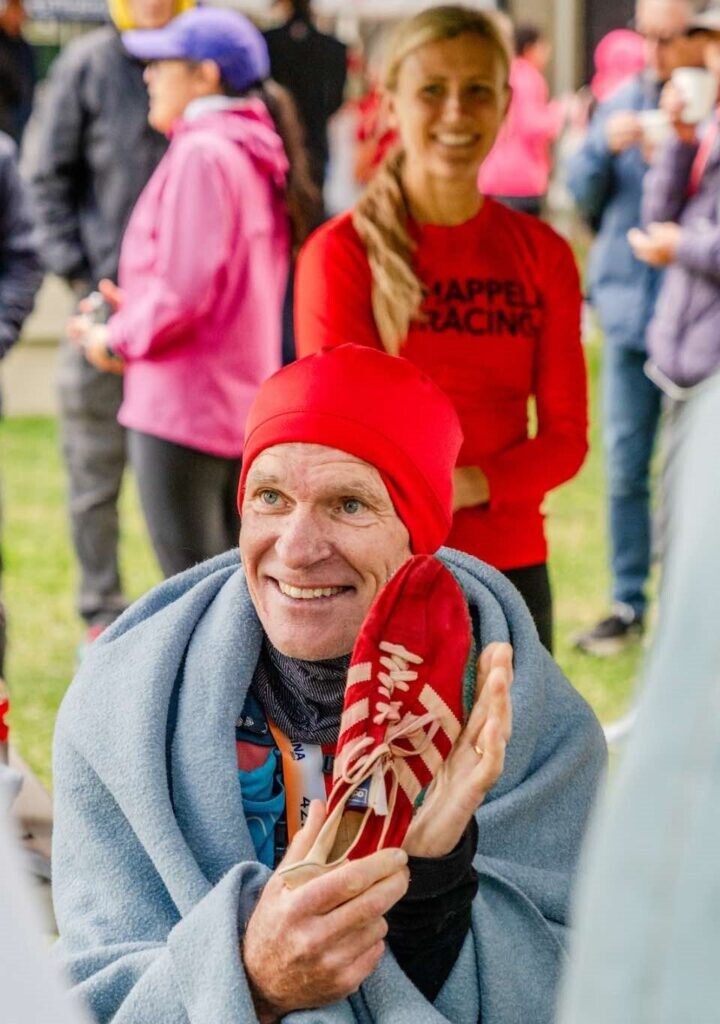
In October 2023, Fox and his coach, Joe Chappell, met to discuss Fox’s future marathon goals, but just a week later, he was diagnosed with cancer. Despite a grim prognosis and being given less than a year to live, Fox remained determined. “Dana said almost right away he wanted to treat this like a running injury,” Chappell told Canadian Running. “At one point, he was in so much pain that bending over to tie his shoes was almost impossible.”
Chappell said they kept in touch during Fox’s chemotherapy. Within a few months, he was able to start slowly walking and indoor riding. In May, Fox reached out to Chappell with ambitions to return to running, as his energy was returning. His goal: the 2024 Georgina Marathon, a last-chance qualifier for the 2025 Boston Marathon.
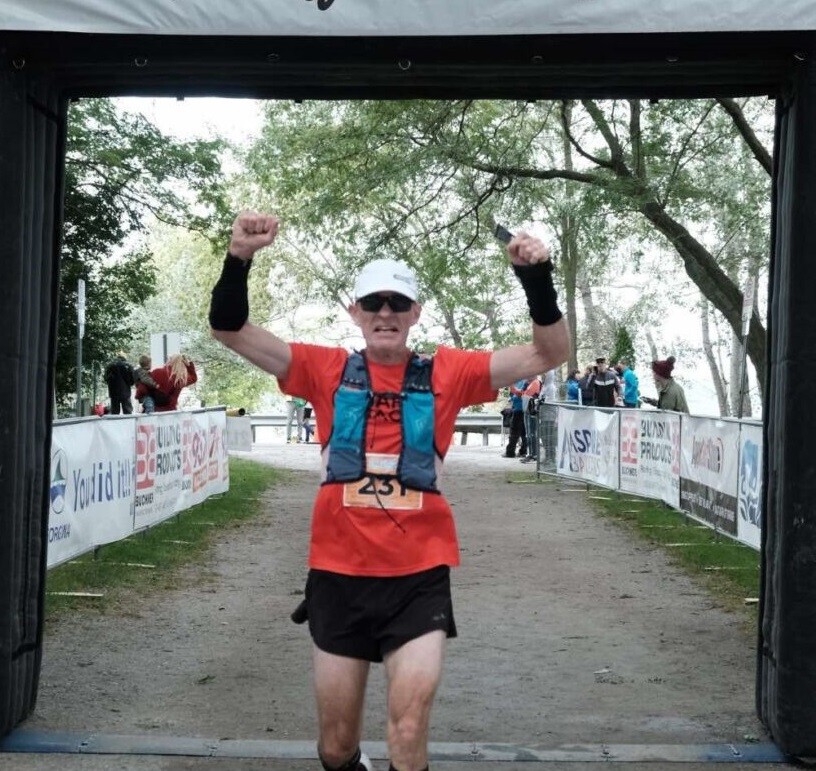
Against his doctors’ recommendations, Fox began training for the marathon with less than eight weeks until race day—half the typical time most marathoners devote to training. His family and friends from Waterloo and beyond supported him during the race. The men’s 65-69 qualifying time was 4:05:00, but Chappell said they aimed to beat last year’s cut-off of five minutes and 29 seconds.
Fox’s finishing time of 3:56:50 put him eight minutes and 10 seconds under the mark. Canadian marathoner Rachel Hannah paced him for the second half of the race, with family and friends cheering and offering support throughout. He carried a pair of red Adidas spikes gifted by his father in 1971, a symbol of resilience during his journey.
Fox is confident he will be among the few who defeat the cancer. He credits the experience of finishing the Georgina Marathon with his running club as a crucial psychological boost, fuelling his journey to recovery.
On Sept. 15, Fox spoke at the Terry Fox Run in Saugeen Shores, Ont. (He is not related to Canadian athlete and humanitarian Terry Fox.) “We made it for all those people who have cancer and were told they’re not going to make it; this run’s for them. Don’t ever quit,” Fox told Georgina Post. “The hotel’s already booked [for Boston]. I’m in, baby. We’re going. I’m going to live. I’m getting back on the bus. I’m not leaving.”
by Marley Dickinson
Login to leave a comment
Boston Marathon
Among the nation’s oldest athletic clubs, the B.A.A. was established in 1887, and, in 1896, more than half of the U.S. Olympic Team at the first modern games was composed of B.A.A. club members. The Olympic Games provided the inspiration for the first Boston Marathon, which culminated the B.A.A. Games on April 19, 1897. John J. McDermott emerged from a...
more...USA’s Eli Hemming and China’s Miao Yao Make History at 2024 OCC
It’s the first time an American or Chinese runner has won the prestigious 57K trail race that serves as a de facto global trail running championship. All year, Eli Hemming said his primary focus was charging up and over the La Flégère ski resort on the last climb of the Orsières-Champex-Lac-Chamonix (OCC) race at the UTMB World Series Finals to then break the finish line tape in Chamonix, France, as the champion.
That’s almost exactly how it played out on Thursday afternoon. The 29-year-old runner from Kremmling, Colorado, fended off the world closing in around him as he overheated under a humid, sunny 80 degree day, as well as a hard-charging Francesco Puppi, to win the 57K (36-mile) race in 5 hours, 11 minutes in 48 seconds. In doing so, he not only claimed a UTMB-Mont Blanc Finals title and the 13,000 euro (about $14,400) prize, he became the first American ever to win the prestigious race that serves as the de facto global championship at the shorter ultra distances.
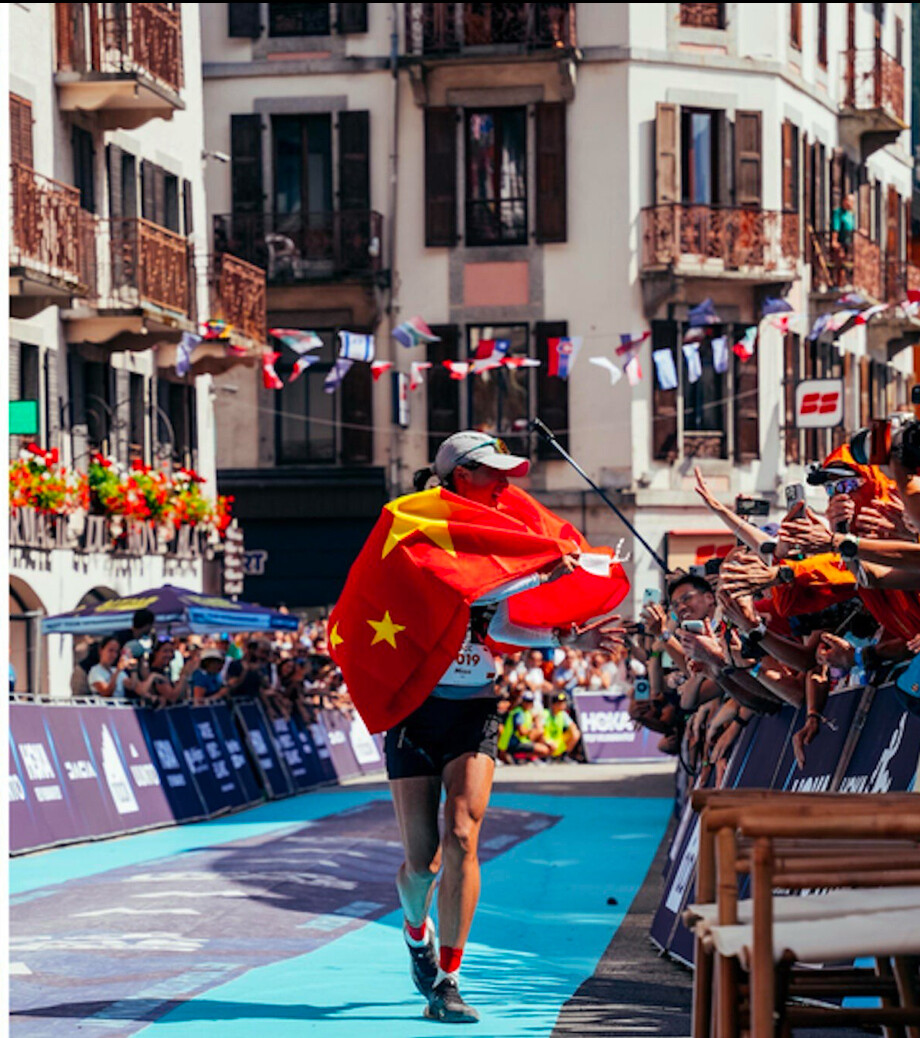
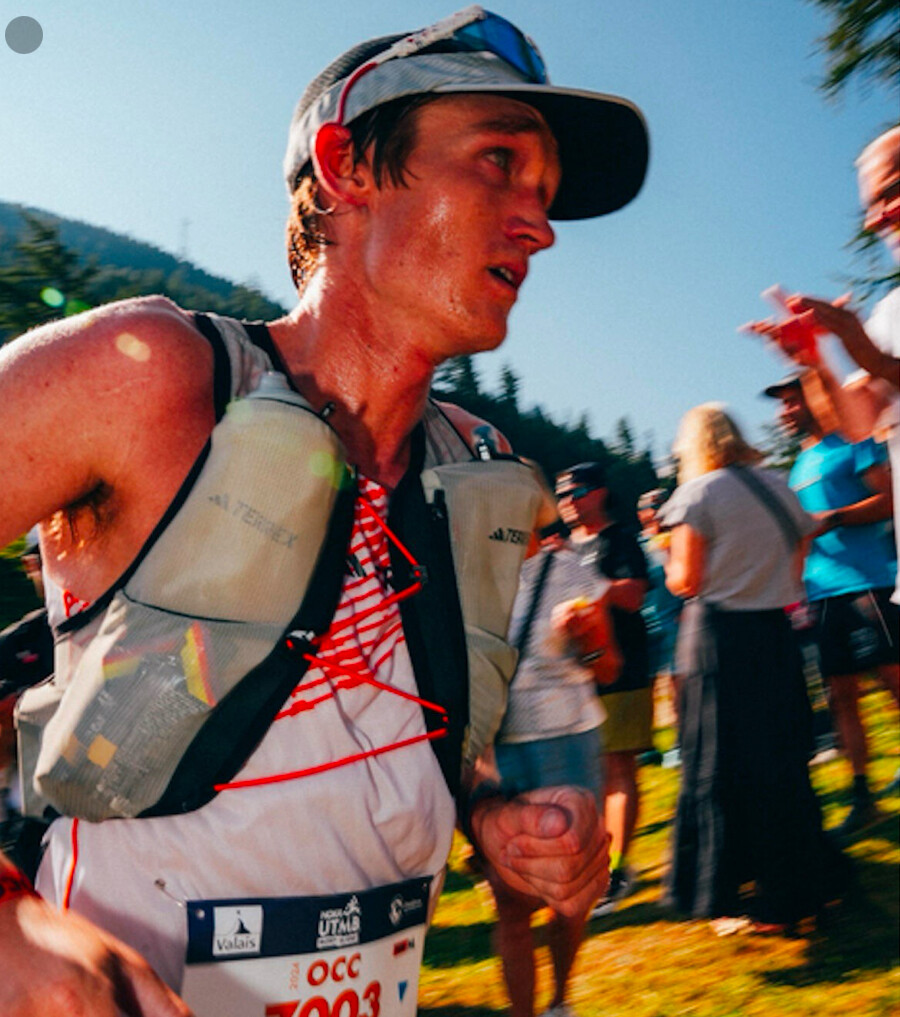
But the race was a dastardly tilt, and Hemming had to turn himself inside out to get the win. It figured to be a grueling battle, both because of the 11,500 feet of elevation gain and descent but also because of the strong field of international runners and hot, humid weather with sunny skies soaring into the 80s under the early afternoon sun. Hemming went out hard early in the race, but he didn’t feel compelled to challenge for the lead up the first two climbs over the first 9 miles. That’s because fellow American Christian Allen was absolutely flying off the front, as the 26-year-old runner from Orem, Utah, surged to the lead from the gun and led by more than 2 minutes through the 15-mile mark as he passed through Swiss the village of Trient. But that’s where the runners faced the toughest test of the race, a spikey 4-mile, 2,300-foot technical climb to the Chalet des Grands before continuing upward on slightly less steep terrain to the Col de Balme mountain pass. In all, it’s a 3,000-foot ascent over about 6 miles to the 7,200-foot high point on the course.
That was the first crux of the race, and that’s where Hemming took charge. As Allen faded, Hemming surged up the big climb as several other speedy runners gave chase, including Swiss runner Remi Bonnet who is known for his uphill running abilities. But Hemming had been waiting for this all year and specifically trained on long mountain ascents near Breckenridge, Colorado. He continued to surge across the Swiss-French border and up to the pass, building a nearly 7-minute lead over Spanish runner Antonio Martinez Perez.
From there, Hemming extended his lead to 10 minutes on the 7-mile, 3,000-foot descent to the French village of Argentière. But with one more big climb—a 3.5-mile, 2,000-foot technical grind to 6,200 feet atop the ski resort—he was anything but home free. Early in the climb, he slowed from a run to a walk, and even stopped at one point midway through the climb, bent over and rested his hands on his knees. He looked in distress, but eventually gathered himself and started running slowly up the hill again.
Perez had been charging up the mountain behind him and there was a brief moment where it looked like Hemming’s lead might be in jeopardy. But he managed to reach the final checkpoint at the 50K La Flégère aid station in first, and immediately looked better as he began the 4-mile descent down to Chamonix. Although he had gained ground, Perez felt the impact of the climb, too, and was caught by Italian runner Francesco Puppi before reaching the ski resort aid station. After a cordial acknowledgement as he passed, Puppi suddenly had a new spring in his step. He surged up the final 200 meters to reach the checkpoint about 4 minutes after Hemming then began bombing down the rocky, rooty dirt trail in pursuit of the leader.
Up front, Hemming had recovered slightly, running smoothly albeit without the intensity of a couple hours earlier. Puppi was clearly running faster. What had been a 10-minute lead at the 28.2-mile mark had greatly diminished with less than 3 miles to go. But with every stride, Hemming was one step closer to his year-long goal of winning OCC and he wasn’t going to let it slip away.
When he reached the edge of the Chamonix pedestrian village, he was quickly re-energized by the throngs of cheering spectators and increased his pace briefly as he dashed through the winding 200-meter section before slowly slightly on the final blue-carpeted approach to the finish line.
“I was trying to pace it as well as I could, and I knew if I made it over Col de Balme with a good gap, unless I blow up—which I did a little bit—I knew I could hold up pretty well to the end,” Hemming said. “It ended up being a bit of a grind. I knew I had about a 10-minute lead at Argentière, but I was very much overheated and the walls started closing in a bit. I tried to take a little time to cool down, but I knew I had to keep moving and just make it to the top.”
Still running hard, Puppi dashed through the village three minutes later to finish second in 5:14:46, followed by Perez in third at 5:17:56, China’s Juwei Zi in fourth (5:22:17), and Aritz Egea Caceres in 5th (5:27:07). Nick Handel, a 32-year-old runner from San Francisco, was the second American runner in the men’s race, finishing 13th in 5:41:08. The victory is the first big international win for Hemming, who transitioned into trail running in 2021 after several years as a professional triathlete. Hemming has won several domestic 50K races in the US, including the Canyons Endurance Runs 50K on April 26 in Auburn, California. Last year, he placed second to Bonnet in the Mont-Blanc Marathon and also finished fifth in the Golden Trail World Series Final 20K championship in Noli, Italy. For a while, it looked like Hemming, and his 27–year-old wife, Tabor, might be on the verge of one of the best trail running stories of the year. They decided to part ways with sponsor Salomon, in the offseason, and sign with the Adidas-Terrex team at the start of the year. While they both raced well early in the season—Tabor took third at the Canyons 50K in April and third at the Broken Arrow Skyrace 25K in June—they opted not to race as much this year as they’ve been known to. They also decided not to join their new teammates at an extended Chamonix training camp in late July and instead stay home and train at high-altitude in central Colorado.
Knowing what they’d be facing on the course, they sought out long climbs near Breckenridge and Frisco that topped out between 12,000 and 13,000 feet—including Wheeler Pass between Copper Mountain ski resort and the community of Blue River. “The course is fast and steep, but it’s also very runnable,” Tabor said. “We knew we could get quality training at home, so we used those climbs to train, so we were happy to stay at home and run the places we know best.”
Tabor looked great early in the race, running with a strong pack of lead women that included Judith Wyder of Switzerland, Clementine Geoffray of France, and Miao Yao of China, plus Spain’s Sara Alonso, New Zealand’s Caitlin Fielder, and fellow Americans Dani Moreno and Allie McLaughlin.
Wyder was the early leader and figured to be tough to beat—despite a recent bout of COVID. She had earned the silver medal in the 50K race at last year’s World Mountain and Trail Running Championships in Austria, and more recently took second in the 20K mountain running race at the European Championships and first at the Mont-Blanc Marathon in early July. Wyder led Geoffray, Moreno, McLaughlin, and Yao through the initial 4.5-mile climb to Champex, then expanded her lead to the top of the second climb at the 6,200-foot summit of La Giete as Yao and Alonso maneuvered into the second and third spots. But following a similar strategy as her husband, Tabor took the lead on the long downhill into Trient and began to surge on the technical climb up to Chalet des Grands with Yao, Wyder, Alonso and McLaughlin in tow. Hemming ran in the lead for part of the climb, but she paid for the aggressive move. Wyder and Yao overtook her and those two separated from the rest of the field. They dueled back and forth but Yao took the lead over Col de Balme and would never relinquish it. She seemed to get stronger as the race went on and she extended the gap on Wyder to 4 minutes at La Flégère ski resort.
From there, Yao cruised into Chamonix to secure the first win by a Chinese athlete at OCC in 5:54:03. With a 2018 CCC win already under her belt, she also enters the rarified air of having two UTMB World Series Finals championship titles to her name. Wyder was second in 6:00:05, followed by Geoffray in third at 6:02:10, Alonso in fourth (6:05:15), and Fielder in fifth (6:05:46). Moreno, who was third in the OCC in 2022 and dropped out last year, ran a strong second half to finish sixth as the top American in 6:06:59. Tabor Hemming continued up and over Col de Balme but slowed significantly and eventually dropped out at Argentière.
“I’m really happy about my race. It was really fun out there to compete with such strong ladies,” Wyder said, “Miao Yao was flying in the end. I’m so proud of myself to be back and to be able to be racing healthy. I didn’t think about [having COVID recently]. Today I was really happy with my performance and with my legs today.”
Login to leave a comment
A Lifetime Journey of Fueling Mistakes
It's helpful to know what your stomach can tolerate before a run—even that backfires sometimes.
During the 2023 New York City Marathon, Runner’s World set up shop in an empty storefront on West 57th Street with Adidas and hosted three days of inspiring talks, shakeout runs, and shoe demos.
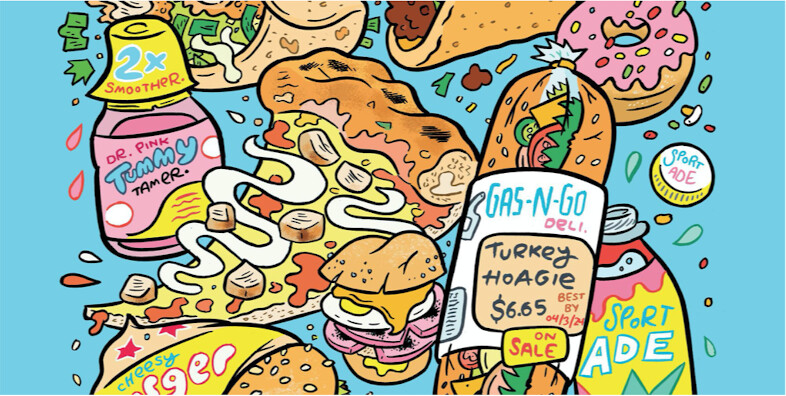
Because of a last-minute cancellation by one guest speaker, I was called in to talk about nutrition. This was bound to be interesting. See, around the office, I’m known for doing things in unconventional or even questionable ways. I’ll go on long runs without any water or gels. At lunch, I’m more likely to grab McDonald’s or a gas station hoagie than a salad. Sometimes it works—sometimes it doesn’t. But I know the sage advice this magazine dispenses, even if I don’t heed it in my daily running life.
For the duration of the nutrition panel, I did as instructed. But purely for your entertainment, I offer a sampling of questionable fueling strategies and gastronomical gaffes that I have jotted down in my training log over the past couple of decades.
In case it’s not clear by now: You’re better off not following my example!
A new marathon PR! By nearly 5 minutes. Wasn’t sure what was going to happen today, really. I hadn’t slept well the last few nights. Plus, I ate a brisket sandwich for dinner and Pepto-Bismol for dessert last night.
10/15/2014 Seven Miles:
Note to self: Buffalo chicken pizza is a no-go if running after work. Great run with G.H., but I had some stomach issues 2 miles from the end and had to jump into the bushes. Not fun. The run, however, was.
9/20/2009 Adirondack Marathon:
One to forget. I was moving along well and was in second place overall for the first 22 miles. But had trouble keeping fluids down today and couldn’t keep it together when I got warm on the front half of the course. Maybe I shouldn’t eat a sausage sandwich at midnight before the race next year.
5/5/2017 Taco Mile:
I spent $129 at Taco Bell today. Filled 2 Ikea bags. Eat a taco, run a lap, repeat. That was fun. I was slow. But it was still a lot of fun.
10/11/2021 Boston Marathon:
Had lots of support out there. Frank gave me his mimosa at mile 18.
5/20/2020 Seven Miles:
Burping up the egg and pork roll sandwich I ate for lunch. Whoops.
6/16/2017 Beer Mile:
Fourth lap, beer going down good, but I started laughing when Kit yakked. I nearly did myself, but spewed a mouthful of beer, earning myself a penalty lap. Damn.
12/2/2019 Four Miles:
Got a late start to the day, but sneaked out for a lunch run. A good snowfall. Stopped at Burger King on my way back home. 2 for $6 Whoppers. Yay.
2/4/2024 19 Miles Long Run:
Felt hungry when I ran past a 7-11, so I stopped in for a donut (and Gatorade).
11/10/2017 Five Miles:
Ate a chicken Caesar wrap too late in the day. Vomited a little on the Brooklyn Bridge and nearly pooped my tights. Oof.
12/21/2015 Seven Miles:
We went to Joe’s Shanghai for a work holiday lunch. 1:30 reservation means I burped up dumplings for 7 miles after work. Not fun.
Login to leave a comment
Research Confirms Rotating Running Shoes Could Save You From Injuries—Here’s How Your Body Benefits
Having a shoe collection is not a frivolous obsession. Here’s how you could possibly benefit from having more than one pair of running shoes.
Once you’ve found yourself the perfect pair—you know the ones you want to spend every run in—it’s kind of hard to give them up. However, doing so could actually work to your advantage by keeping you healthy and strong for each run.
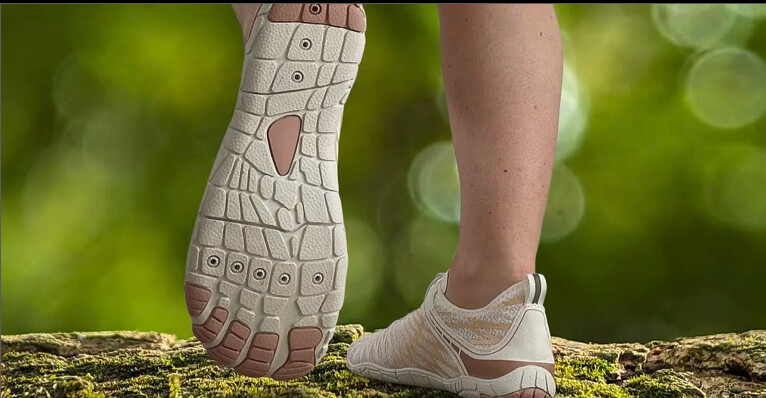
“These days, a lot of people use one shoe for everything, and that puts you at risk for injury,” says Priya Parthasarathy, D.P.M., spokesperson for the American Podiatric Medical Association and partner at USFAS in Silver Springs, Maryland. Running, walking, and weightlifting all require different demands of your feet, so you’ll want to wear different shoes for these activities, she says. Plus, wearing one shoe for all of your workouts can increase the wear on the shoe, so they won’t last as long as you want.
That’s where having a running shoe rotation becomes very helpful. Research and experts back up this idea, and it’s especially helpful to have a shoe rotation if you’re training for a long distance race like a marathon. Here’s what you need to know in order to build a running shoe rotation that meets all of your needs.
Why do you need a running shoe rotation?
Naturally, running places stress on multiple parts of the body, including muscles, bones, and tendons, which can be good for you provided the stress is not too large or frequent that you can’t recover fast enough, says Andrea Myers, D.P.T., who owns a sports performance practice located in Westport and Ridgefield, Connecticut.
”We know from many research studies that different running shoe properties expose the body to different stressors,” Myers says. “We know that minimalist shoes—those with a low or zero drop, flexible sole, and minimal to no stability features—increase the demands on the ankle, foot, and calf muscles, as compared to shoes with a higher drop, which increase the demands at the knee but reduces the demands at the foot and ankle.”
A carefully crafted shoe rotation can possibly offset some of these demands.
To identify characteristics that might contribute to the development of running related injury, a 2013 research study published in the Scandinavian Journal of Medicine and Science in Sport followed 264 runners over the course of 22 weeks. The study found runners who used more than one shoe, a term which they coined “parallel use,” had a 39 percent lower risk of injury. This suggests having more than one pair of running shoes can help you ward off injury.
The reasoning behind it, if you have a cushioned shoe and you let a shoe sit for 24 to 48 hours, the foam in the shoe can de-compress before your next run, says Parthasarathy.
How many shoes do you need in your rotation?
If you’re just starting out, you don’t have to worry about rotating your running shoes, instead, invest in one good pair of running shoes. Parthasarathy recommends finding a shoe with a flexible toe box, firm heel cup, and removable insoles. The one shoe should overall be comfortable to you.
The seasoned recreational runner who runs three to four miles, three days per week, does not need a rotation of four different shoes either, says Myers. Instead, Myers recommends two pairs of shoes that you can rotate every run.
For marathon runners, racking up 35 to 60-plus miles a week with a variety of workouts (easy, long, and speed runs) on their calendars, Myers recommends keeping a shoe rotation of three to four pairs of shoes. This can include one to two pairs of shoes for easy runs and speed workouts, and one pair of shoes for long runs that can handle a variety of different paces. Your long run shoes can also double as a performance trainer, or a lightweight daily trainer, Myers says.
What types of running shoes can you add to your running shoe rotation?
Here are three different types of shoes you can consider adding to your collection, according to Myers:
Daily Trainer: These shoes are primarily for easy running, but can also handle different paces. you can use them to run strides or up-tempo long runs. Good examples of daily trainers include: the Brooks Ghost 15, Saucony Ride 17 or Guide 17, Nike Vomero 17, or Hoka Clifton 9.
Performance Trainer: Best for speed workouts, performance trainers are lightweight shoes that perform best at faster paces and can double as daily trainers as long as you feel comfortable in wearing them for longer distances. Plus, they tend to be more affordable than top-end race performance shoes. A few styles to consider include: Saucony Endorphin Speed 4, Topo Cyclone 2, Mizuno Wave Rebellion Flash 2, and Brooks Hyperion Max.
Racing Shoes: Commonly referred to now as super shoes, racing shoes tend to be more expensive and less durable, considering some shoes have a life expectancy of about 100 to 150 miles. This is why you shouldn’t do the bulk of your training in super shoes, instead you should take them out for a test run or two to ensure they’ll meet all your comfort needs on race day. Saucony Kinvara Pro, Asics Superblast, Adidas Adizero Prime x 2 Strung, and On Cloudeclipse are a few super shoes to consider.
How to find the right shoe to add to your rotation?
Before adding any a shoe to your rotation, you should consider if the shoe is a good fit for your foot arch (flat arch, high arch, or medium arch), running gait (neutral, pronated, or supinated), shoe size, preferred comfort level, and the terrain (treadmill, pavement, or trail) you’ll run on.
“Building a running shoe rotation, especially if you run on different terrains, is important because the shoe wears in different ways,” says Parthasarathy. Meaning where you run will influence some of the characteristics you look for in a shoe. For example, running on hard pavement will require increased cushioning, whereas trail running calls for more stability and traction, she explains.
If you want to change the type of shoe you’re training in, then the recommendation is to ease into the number of miles you try in the new shoe (i.e., don’t go for a long run in a drastically different shoe).
You may experience some soreness if you transition to a different type of shoe, however, you shouldn't experience pain that lasts for days or interferes with your normal running gait pattern on subsequent runs, Myers adds.
Lastly, you’ll want to get rid of your running shoes every so often due to wear and tear that may go unnoticed. ”We recommend you replace your running shoes, especially if you’re doing long distance running every six months or 300 to 500 miles, depending on how hard you are on them,” says Parthasarathy. If you can fold or bend your shoes in half, it’s often an indication the structure of the shoe and cushioning has been broken down, and it’s time for a change, she adds. As mentioned, the new high performance racing shoes tend to have a shorter shelf life when it comes to mileage.
Who should avoid rotating running shoes?
There’s no need to rotate your running shoes if you’re only running a couple of times a week because you’re likely not racking up enough miles to overstress your tissues, says Myers.
Also, don’t rotate running shoes if you have specific biomechanical or orthopedic needs due to injury, foot structure or shape. For example, runners who have arthritis that affects the big toe, a.k.a, hallux limitus, should prioritize running in shoes that can address this condition, which there are few of, Myers says.
by Runner’s World
Login to leave a comment
Research Confirms Rotating Running Shoes Could Save You From Injuries—Here’s How Your Body Benefits
Having a shoe collection is not a frivolous obsession. Here’s how you could possibly benefit from having more than one pair of running shoes.
Once you’ve found yourself the perfect pair—you know the ones you want to spend every run in—it’s kind of hard to give them up. However, doing so could actually work to your advantage by keeping you healthy and strong for each run.
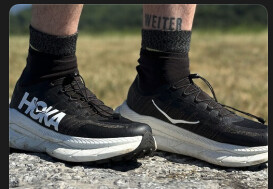
“These days, a lot of people use one shoe for everything, and that puts you at risk for injury,” says Priya Parthasarathy, D.P.M., spokesperson for the American Podiatric Medical Association and partner at USFAS in Silver Springs, Maryland. Running, walking, and weightlifting all require different demands of your feet, so you’ll want to wear different shoes for these activities, she says. Plus, wearing one shoe for all of your workouts can increase the wear on the shoe, so they won’t last as long as you want.
That’s where having a running shoe rotation becomes very helpful. Research and experts back up this idea, and it’s especially helpful to have a shoe rotation if you’re training for a long distance race like a marathon. Here’s what you need to know in order to build a running shoe rotation that meets all of your needs.
Why do you need a running shoe rotation?
Naturally, running places stress on multiple parts of the body, including muscles, bones, and tendons, which can be good for you provided the stress is not too large or frequent that you can’t recover fast enough, says Andrea Myers, D.P.T., who owns a sports performance practice located in Westport and Ridgefield, Connecticut.
”We know from many research studies that different running shoe properties expose the body to different stressors,” Myers says. “We know that minimalist shoes—those with a low or zero drop, flexible sole, and minimal to no stability features—increase the demands on the ankle, foot, and calf muscles, as compared to shoes with a higher drop, which increase the demands at the knee but reduces the demands at the foot and ankle.”
A carefully crafted shoe rotation can possibly offset some of these demands.
To identify characteristics that might contribute to the development of running related injury, a 2013 research study published in the Scandinavian Journal of Medicine and Science in Sport followed 264 runners over the course of 22 weeks. The study found runners who used more than one shoe, a term which they coined “parallel use,” had a 39 percent lower risk of injury. This suggests having more than one pair of running shoes can help you ward off injury.
The reasoning behind it, if you have a cushioned shoe and you let a shoe sit for 24 to 48 hours, the foam in the shoe can de-compress before your next run, says Parthasarathy.
How many shoes do you need in your rotation?
If you’re just starting out, you don’t have to worry about rotating your running shoes, instead, invest in one good pair of running shoes. Parthasarathy recommends finding a shoe with a flexible toe box, firm heel cup, and removable insoles. The one shoe should overall be comfortable to you.
The seasoned recreational runner who runs three to four miles, three days per week, does not need a rotation of four different shoes either, says Myers. Instead, Myers recommends two pairs of shoes that you can rotate every run.
For marathon runners, racking up 35 to 60-plus miles a week with a variety of workouts (easy, long, and speed runs) on their calendars, Myers recommends keeping a shoe rotation of three to four pairs of shoes. This can include one to two pairs of shoes for easy runs and speed workouts, and one pair of shoes for long runs that can handle a variety of different paces. Your long run shoes can also double as a performance trainer, or a lightweight daily trainer, Myers says.
What types of running shoes can you add to your running shoe rotation?
Here are three different types of shoes you can consider adding to your collection, according to Myers:
Daily Trainer: These shoes are primarily for easy running, but can also handle different paces. you can use them to run strides or up-tempo long runs. Good examples of daily trainers include: the Brooks Ghost 15, Saucony Ride 17 or Guide 17, Nike Vomero 17, or Hoka Clifton 9.
Performance Trainer: Best for speed workouts, performance trainers are lightweight shoes that perform best at faster paces and can double as daily trainers as long as you feel comfortable in wearing them for longer distances. Plus, they tend to be more affordable than top-end race performance shoes. A few styles to consider include: Saucony Endorphin Speed 4, Topo Cyclone 2, Mizuno Wave Rebellion Flash 2, and Brooks Hyperion Max.
Racing Shoes: Commonly referred to now as super shoes, racing shoes tend to be more expensive and less durable, considering some shoes have a life expectancy of about 100 to 150 miles. This is why you shouldn’t do the bulk of your training in super shoes, instead you should take them out for a test run or two to ensure they’ll meet all your comfort needs on race day. Saucony Kinvara Pro, Asics Superblast, Adidas Adizero Prime x 2 Strung, and On Cloudeclipse are a few super shoes to consider.
How to find the right shoe to add to your rotation?
Before adding any a shoe to your rotation, you should consider if the shoe is a good fit for your foot arch (flat arch, high arch, or medium arch), running gait (neutral, pronated, or supinated), shoe size, preferred comfort level, and the terrain (treadmill, pavement, or trail) you’ll run on.
“Building a running shoe rotation, especially if you run on different terrains, is important because the shoe wears in different ways,” says Parthasarathy. Meaning where you run will influence some of the characteristics you look for in a shoe. For example, running on hard pavement will require increased cushioning, whereas trail running calls for more stability and traction, she explains.
If you want to change the type of shoe you’re training in, then the recommendation is to ease into the number of miles you try in the new shoe (i.e., don’t go for a long run in a drastically different shoe).
You may experience some soreness if you transition to a different type of shoe, however, you shouldn't experience pain that lasts for days or interferes with your normal running gait pattern on subsequent runs, Myers adds.
Lastly, you’ll want to get rid of your running shoes every so often due to wear and tear that may go unnoticed. ”We recommend you replace your running shoes, especially if you’re doing long distance running every six months or 300 to 500 miles, depending on how hard you are on them,” says Parthasarathy. If you can fold or bend your shoes in half, it’s often an indication the structure of the shoe and cushioning has been broken down, and it’s time for a change, she adds. As mentioned, the new high performance racing shoes tend to have a shorter shelf life when it comes to mileage.
Who should avoid rotating running shoes?
There’s no need to rotate your running shoes if you’re only running a couple of times a week because you’re likely not racking up enough miles to overstress your tissues, says Myers.
Also, don’t rotate running shoes if you have specific biomechanical or orthopedic needs due to injury, foot structure or shape. For example, runners who have arthritis that affects the big toe, a.k.a, hallux limitus, should prioritize running in shoes that can address this condition, which there are few of, Myers says.
Login to leave a comment
What You Need to Know About the U.S. Track and Field Olympic Trials
From June 21-30, more than 900 runners, throwers, and jumpers will put it all on the line for a chance to compete for Team USA at the Paris Olympics
The U.S. Track and Field Olympic Trials is a showcase of hundreds of America’s best track and field athletes who will be battling for a chance to qualify for Team USA and compete in this summer’s Paris Olympics. For many athletes competing in Eugene, simply making it on to the start line is a life-long accomplishment. Each earned their spot by qualifying for the trials in their event(s). The athlete qualifier and declaration lists are expected to be finalized this week.
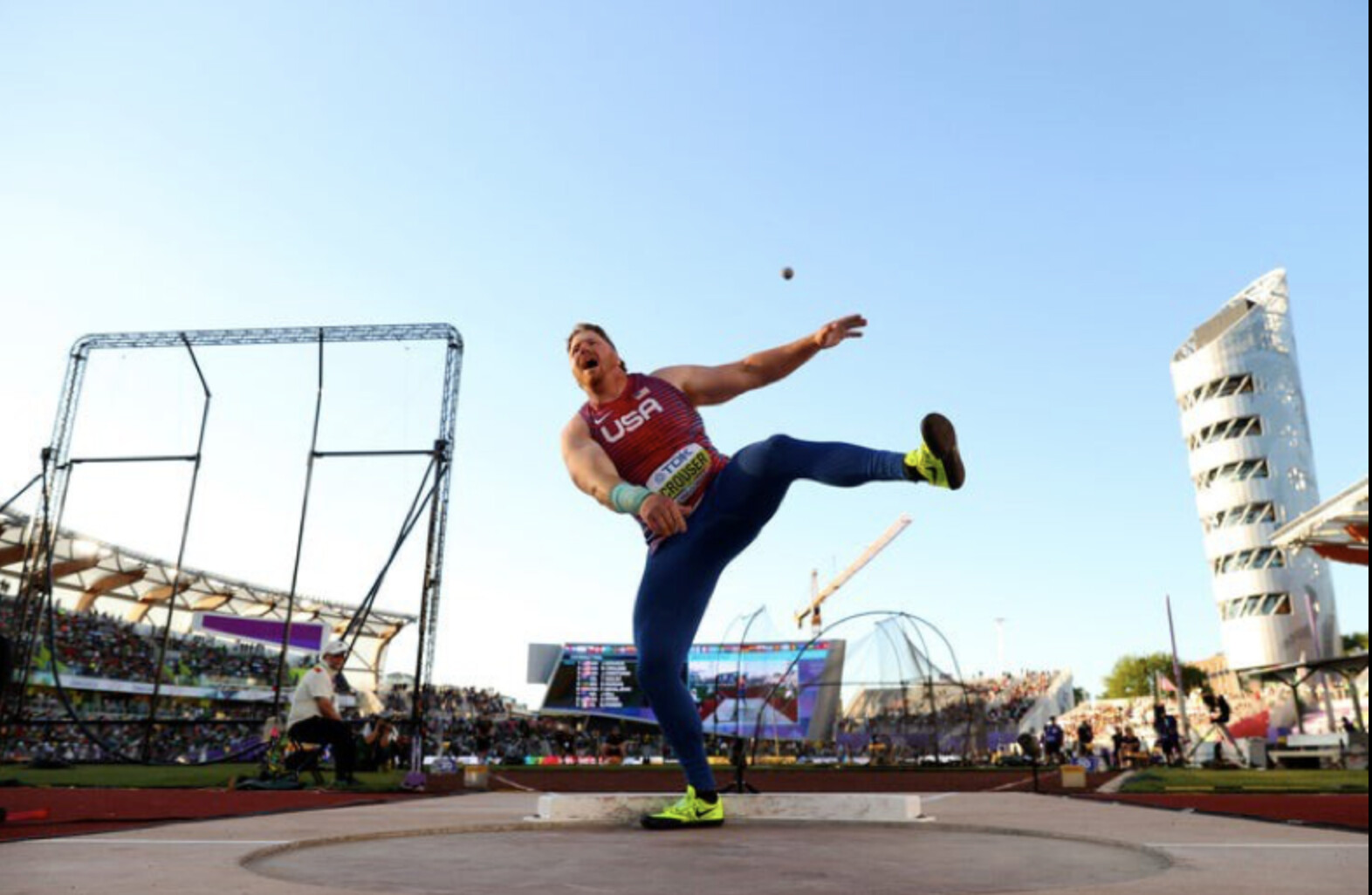
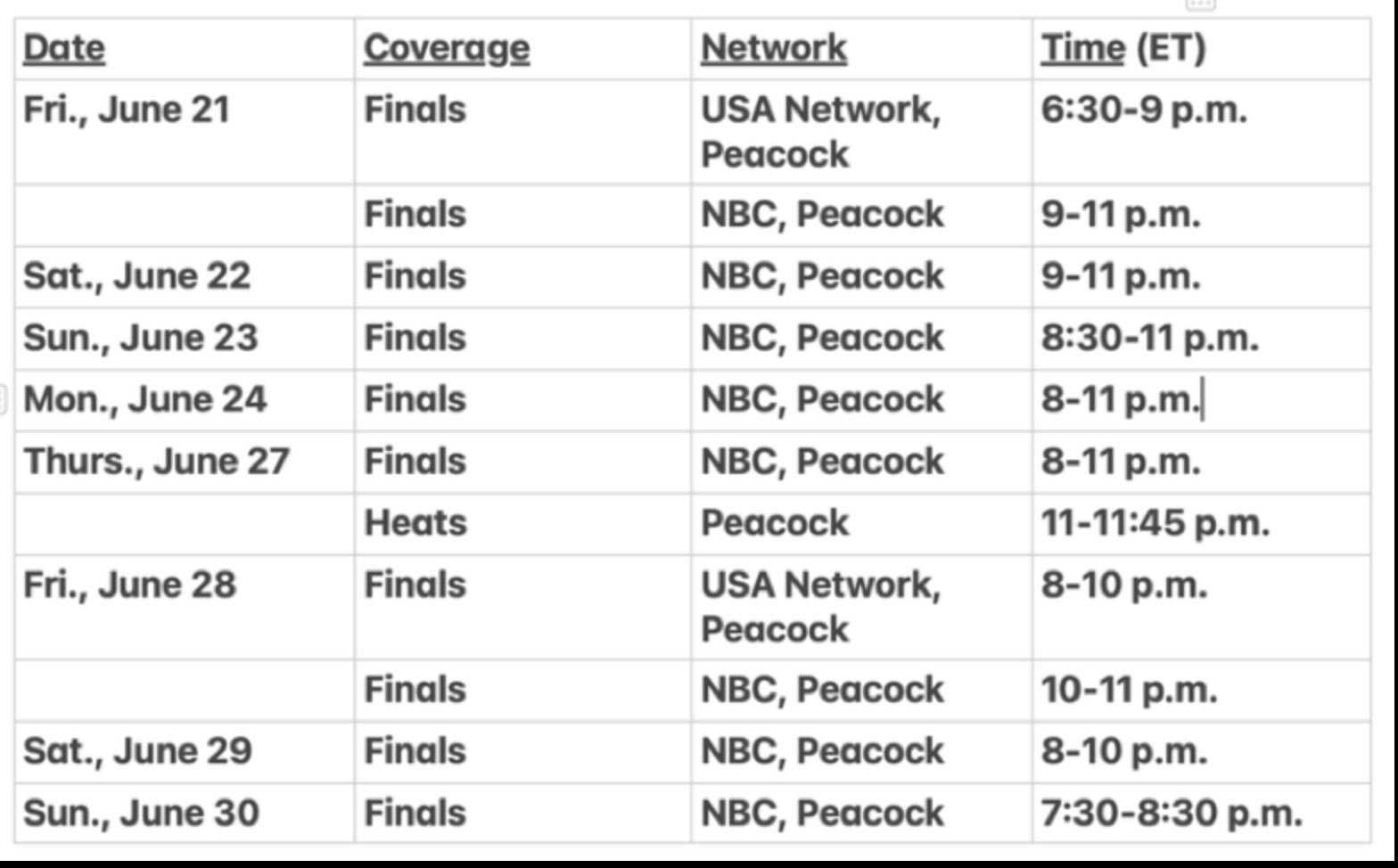
But for the highest echelon of athletes, the trials defines a make-or-break moment in their career. Only three Olympic team spots (in each gender) are available in each event, and given the U.S. depth in all facets of track and field—sprints, hurdles, throws, jumps, and distance running events—it’s considered the world’s hardest all-around team to make. How dominant is the U.S. in the world of track and field? It has led the track and field medal count at every Olympics since 1984.
At the trials, there are 20 total events for women and men—10 running events from 100 meters to 10,000 meters (including two hurdles races and the 3,000-meter steeplechase), four throwing events (discus, shot put, javelin, and hammer throw), four jumping events (long jump, triple jump, high jump, and pole vault), the quirky 20K race walking event, and, of course, the seven-event heptathlon (women) and the 10-event decathlon (men).
(At the Olympics, Team USA will also compete in men’s and women’s 4×100-meter and 4×400-meter relays, plus a mixed gender 4×400, and a mixed gender marathon race walk. The athletes competing on these teams will be drawn from those who qualify for Team USA in individual events, along with alternates who are the next-best finishers at the trials.
There’s also the Olympic marathon, but the U.S. Olympic Trials Marathon was held on February 3 in Orlando, Florida, to give the athletes enough time to recover from the demands of hammering 26.2 miles before the big dance in Paris.
Although some countries arbitrarily select their Olympic track and field teams, the U.S. system is equitable for those who show up at the Olympic Trials and compete against the country’s best athletes in each particular event. There’s just one shot for everyone, and if you finish among the top three in your event (and also have the proper Olympic qualifying marks or international rankings under your belt), you’ll earn the opportunity of a lifetime—no matter if you’re a medal contender or someone who burst onto the scene with a breakthrough performance.
The top performers in Eugene will likely be contenders for gold medals in Paris. The list of American stars is long and distinguished, but it has to start with sprinters Sha’Carri Richardson and Noah Lyles, who will be both competing in the coveted 100 and 200 meters. Each athlete won 100-meter titles at last summer’s world championships in Budapest and ran on the U.S. gold-medal 4×100 relays. (Lyles also won the 200) Each has been running fast so far this spring, but more importantly, each seems to have the speed, the skill, and swagger it takes to become an Olympic champion in the 100 and carry the title of the world’s fastest humans.
But first they have to qualify for Team USA at the Olympic Trials. Although Lyles is the top contender in the men’s 100 and second in the world with a 9.85-second season’s best, five other U.S. athletes have run sub-10-second efforts already this season. Richardson enters the meet No. 2 in the U.S. and No. 3 in the world in the women’s 100 (10.83), but eight other Americans have also broken 11 seconds. That will make the preliminary heats precariously exciting and the finals (women’s on June 22, men’s on June 23) must-see TV.
There are five returning individual Olympic gold medalists competing in the U.S. Olympic Trials with the hopes of repeating their medals in Paris—Athing Mu (800 meters), Sydney McLaughlin-Levrone (400-meter hurdles), Katie Moon (pole vault), Vallarie Allman (discus), and Ryan Crouser (shot put)—but there are more than a dozen other returning U.S. medalists from the Tokyo Olympics, as well as many more from the 2023 world championships, including gold medalists Chase Ealey (shot put), Grant Holloway (110-meter hurdles), Laulauga Tausaga (discus), and Crouser (shot put).
The most talented athlete entered in the Olympic Trials might be Anna Hall, the bronze and silver medalist in the seven-event heptathlon at the past two world championships. It’s an epic test of speed, strength, agility, and endurance. In the two-day event, Hall and about a dozen other women will compete in the 100-meter hurdles, high jump, shot put, 200 meters, long jump, javelin throw, and 800 meters, racking up points based on their performance in each event. The athletes with the top three cumulative totals will make the U.S. team. At just age 23, Hall is poised to contend for the gold in Paris, although Great Britain’s Katarina Johnson-Thompson, the world champion in 2019 and 2023, is also still in search of her first Olympic gold medal after injuries derailed her in 2016 and 2021.
If you can find your way to Eugene—and can afford the jacked-up hotel and Airbnb prices in town and nearby Springfield—you can watch it live in person at Hayward Field. Rebuilt in 2021, it’s one of the most advanced track and field facilities in the world, with an extremely fast track surface, a wind-blocking architectural design, and 12,650 seats that all offer great views and close-to-the-action ambiance. Tickets are still available for most days, ranging from $45 to $195.
If you can’t make it to Eugene, you can watch every moment of every event (including preliminary events) via TV broadcasts and livestreams. The U.S. Olympic Trials will be broadcast live and via tape delay with 11 total broadcast segments on NBC, USA Network, and Peacock. All finals will air live on NBC during primetime and the entirety of the meet will be streamed on Peacock, NBCOlympics.com, NBC.com and the NBC/NBC Sports apps.
The Olympic Trials will be replete with young, rising stars. For example, the men’s 1500 is expected to be one of the most hotly contested events and the top three contenders for the Olympic team are 25 and younger: Yared Nuguse, 25, the American record holder in the mile (3:43.97), Cole Hocker, 23, who was the 2020 Olympic Trials champion, and Hobbs Kessler, 21, who turned pro at 18 just before racing in the last Olympic Trials. Sprinter Erriyon Knighton, who turned pro at age 16 and ran in the Tokyo Olympics at age 17, is still only 20 and already has two world championships medals under his belt. Plus, the biggest track star from the last Olympics, Sydney McLaughlin-Levrone, is aiming for her third Olympics and third Olympic gold (she won the 400-meter hurdles and was on the winning 4×400 relay in Tokyo), and she’s only 24.
Several young collegiate stars could earn their place on the U.S. team heading to Paris after successful results in the just-completed NCAA championships. Leading the way are double-NCAA champions McKillenzie Long, 23, a University of Mississippi senior who enters the trials ranked sixth in the world in the 100 (10.91) and first in the 200 (21.83), and Parker Valby, a 21-year-old junior at the University of Florida, who ranks fifth in the U.S. in the 5,000 meters (14:52.18) and second in the 10,000 meters (30:50.43). Top men’s collegiate runners include 5,000-meter runner Nico Young (21, Northern Arizona University), 400-meter runner Johnnie Blockburger (21, USC), and 800-meter runners Shane Cohen (22, Virginia) and Sam Whitmarsh (21, Texas A&M).
It’s very likely. Elle St. Pierre is the top-ranked runner in both the 1500 and the 5,000, having run personal bests of 3:56.00 (the second-fastest time in U.S. history) and 14:34.12 (fifth-fastest on the U.S. list) this spring. Although she’s only 15 months postpartum after giving birth to son, Ivan, in March 2023, the 29-year-old St. Pierre is running better and faster than ever. In January, she broke the American indoor record in the mile (4:16.41) at the Millrose Games in New York City, then won the gold medal in the 3,000 meters at the indoor world championships in Glasgow in March.
St. Pierre could be joined by two world-class sprinters. Nia Ali, 35, the No. 2 ranked competitor in the 100-meter hurdles and the 2019 world champion, is a mother of 9-year-old son, Titus, and 7-year-old daughter, Yuri. Quanera Hayes, 32, the eighth-ranked runner in the 400 meters, is the mother to 5-year-old son, Demetrius. Hayes, a three-time 4×400 relay world champion, finished seventh in the 400 at the Tokyo Olympics.
Meanwhile, Kate Grace, a 2016 Olympian in the 800 meters who narrowly missed making Team USA for the Tokyo Olympics three years ago, is back running strong at age 35 after a two-year hiatus during which she suffered from a bout of long Covid and then took time off to give birth to her son, River, in March 2023.
No, unfortunately, there are a few top-tier athletes who are hurt and won’t be able to compete. That includes Courtney Frerichs (torn ACL), the silver medalist in the steeplechase at the Tokyo Olympics in 2021; Alicia Monson (torn medial meniscus), a 2020 Olympian in the 10,000 meters, the American record holder in the 5,000 and 10,000 meters, and the fifth-place finisher in the 5,000 at last year’s world championships; and Joe Klekcer (torn adductor muscle), who was 16th in the Tokyo Olympics and ninth in the 2022 world championships in the 10,000. Katelyn Tuohy, a four-time NCAA champion distance runner for North Carolina State who turned pro and signed with Adidas last winter, is also likely to miss the trials due to a lingering hamstring injury. There is also some doubt about the status of Athing Mu (hamstring), the Tokyo Olympics 800-meter champion, who has yet to race in 2024.
Meanwhile, Emma Coburn, a three-time Olympian, 2017 world champion, and 10-time U.S. champion in the 3,000-meter steeplechase, broke her ankle during her season-opening steeplechase in Shanghai on April 27. She underwent surgery a week later, and announced at the time that she would miss the trials, but has been progressing quickly through her recovery. If both she and Frerichs miss the meet, it will leave the door wide open for a new generation of steeplers—including 2020 Olympian Valerie Constein, who’s back in top form after tearing her ACL at a steeplechase in Doha and undergoing surgery last May.
The U.S. earned 41 medals in track and field at the 2020 Paralympic Games in Tokyo—including 10 gold medals—which ranked second behind China’s 51. This year’s Paralympics will follow the Olympics from August 28-September 8 in Paris.
The 2024 U.S. Paralympic Trials for track and field will be held from July 18-20 at the Ansin Sports Complex in Miramar, Florida, and Paralympic stars Nick Mayhugh, Brittni Mason, Breanna Clark, Ezra Frech, and Tatyana McFadden are all expected to compete.
In 2021 at the Tokyo Paralympics, Mayhugh set two new world records en route to winning the 100 meters (10.95) and 200 meters (21.91) in the T-37 category, and also took the silver medal in the 400 meters (50.26) and helped the U.S. win gold and set a world record in the mixed 4×100-meter relay (45.52). Clark returns to defend her Paralympic gold in the T-20 400 meters, while McFadden, a 20-time Paralympic medalist who also competed on the winning U.S. mixed relay, is expected to compete in the T-54 5,000 meters (bronze medal in 2021).
Livestream coverage of the U.S. Paralympic Trials for track and field will be available on Peacock, NBCOlympics.com, NBC.com, and the NBC/NBC Sports app, with TV coverage on CNBC on July 20 (live) and July 21 (tape-delayed).
Login to leave a comment
Two B.A.A. Athletes Qualify For U.S. Olympic Team Trials
The Boston Athletic Association (B.A.A.) today announced that B.A.A. High Performance Team members Annie Rodenfels and Bethany Hasz have earned spots on the starting line for the U.S. Olympic Team Trials – Track & Field, to be held later this month in Eugene, Oregon from June 21-30.
Rodenfels will compete in the women’s 3000m steeplechase (preliminary round June 24/final on June 27), while Hasz will toe the line in the women’s 5000m (preliminary round on June 21/final on June 24).
The Trials will be held at historic Hayward Field in Eugene, Oregon, with top three finishers in each event slated to qualify for the Paris Olympic Games (so long as athletes have met the Olympic standard or earned enough qualifying points).
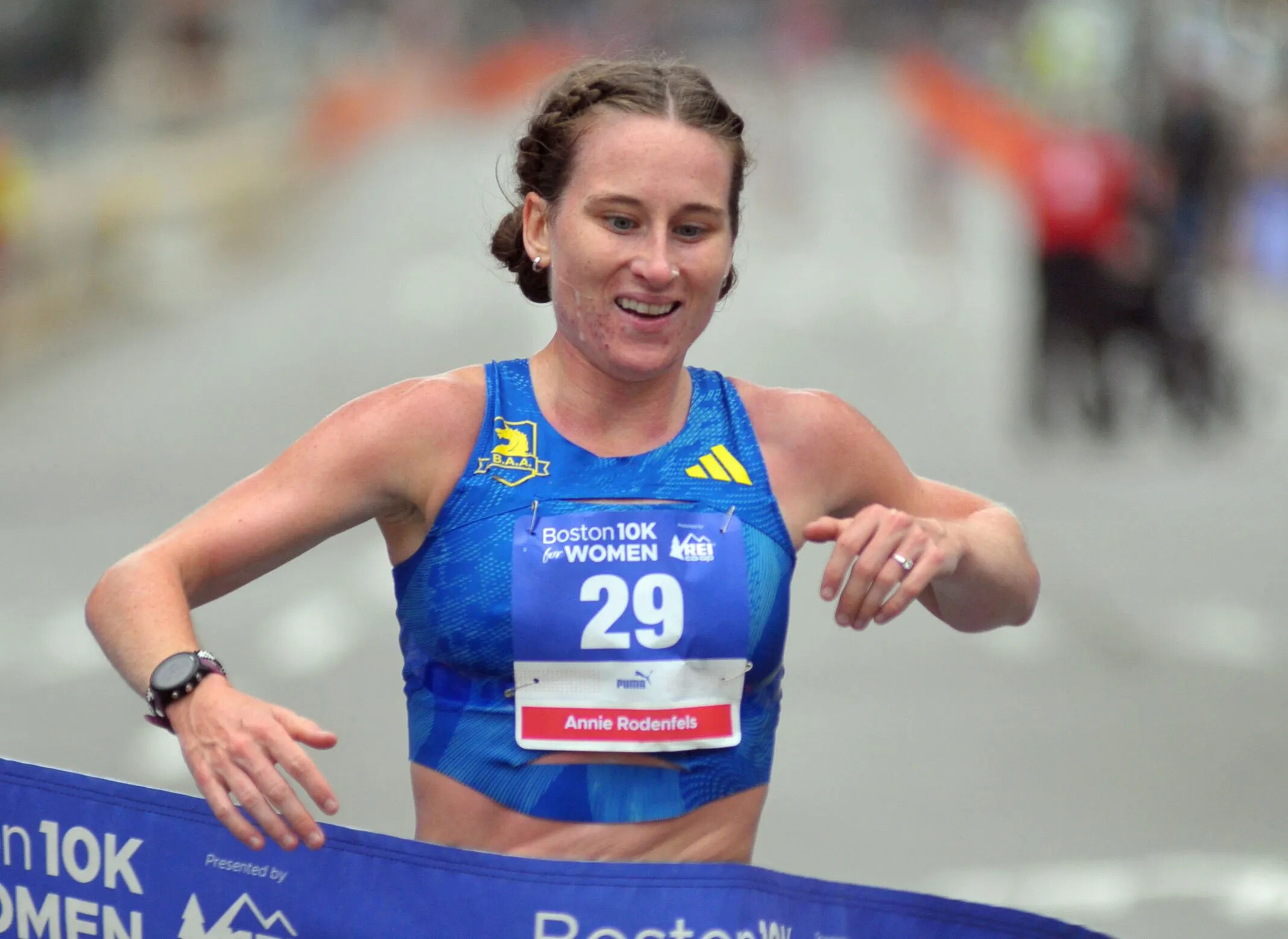
Rodenfels’ personal best in the steeplechase is 9:25.48, set last year. She won the steeplechase at the Drake Relays this year (9:31.03), was fourth at the Boston 5K in April, and clocked 15:03.97 indoors for 5000m in December 2023. Last fall she won the USATF 5K National Championship on the roads in New York City.
Hasz is coming off a 5000m lifetime best of 15:05.80 set May 17 in winning the Drake Relays 5000m. This year she’s also recorded personal bests in the road 5K (15:30), road 10K (32:03), and mile indoors (4:39.24). She earned a bronze medal at the 2023 USATF 5K National Championships, finishing third just behind Rodenfels and Olympian Rachel Smith.
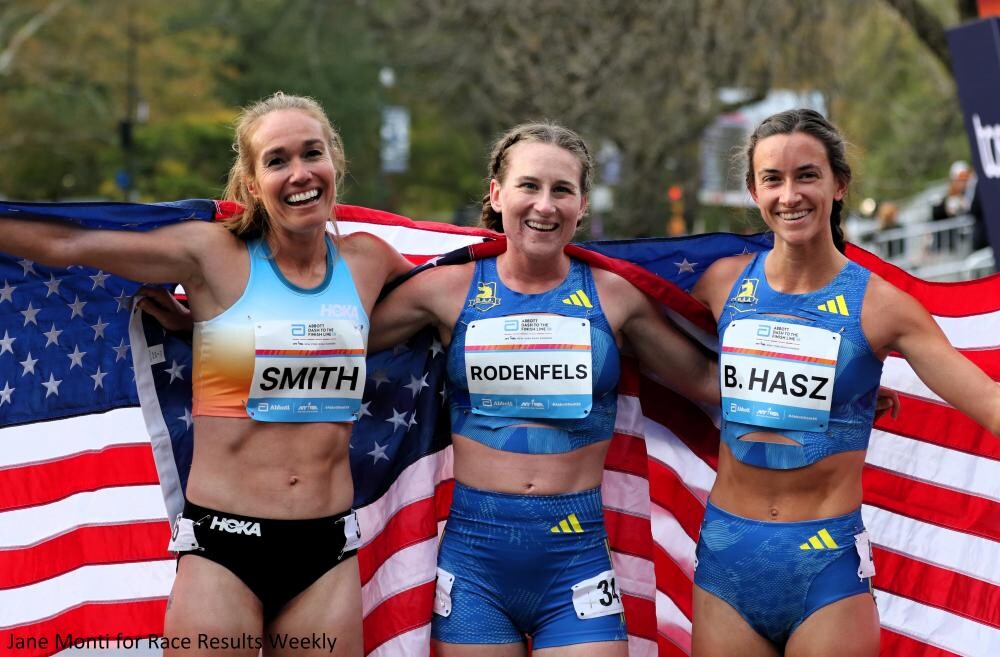
The B.A.A.’s High Performance team supports runners on their way towards making international teams, with the goal of competing at the highest level: the Olympic Games, World Athletics Championships, and Abbott World Marathon Majors. The B.A.A. is sponsored by adidas, which provides comprehensive support for the organization’s High Performance team, running club, and mass-participatory events.
B.A.A HIGH PERFORMANCE TEAM ROSTER:
Eric Hamer
Bethany Hasz
Megan Hasz
Josh Kalapos
Barry Keane
Matt McDonald
Annie Rodenfels
Abbey Wheeler
ABOUT THE BOSTON ATHLETIC ASSOCIATION (B.A.A.)
Established in 1887, the Boston Athletic Association is a non-profit organization with a mission of promoting a healthy lifestyle through sports, especially running. The B.A.A. manages the Boston Marathon, and supports comprehensive charity, youth, and year-round programming. The 129th Boston Marathon presented by Bank of America is scheduled to take place on Monday, April 21, 2025. The Boston Marathon is part of the Abbott World Marathon Majors, along with international marathons in Tokyo, London, Berlin, Chicago, and New York City. For more information on the B.A.A., please visit www.baa.org.
by B.A.A.
Login to leave a comment
U.S. Olympic Team Trials Track And Field
Eugene, Oregon has been awarded the 2024 U.S. Olympic Team Trials - Track & Field, USA Track & Field and the U.S. Olympic & Paralympic Committee announced today. From June 21 to 30, Hayward Field at the University of Oregon will be home to one of the biggest track and field competitions in the country, as the U.S. Olympic Team...
more...TWENTY-ONE YEARS AGO, HE WAS INCARCERATED FOR LIFE. LAST YEAR, HE RAN THE NYC MARATHON A RADICALLY CHANGED MAN.
RAHSAAN ROUNDED THOMAS A CORNER. Gravel underfoot gave way to pavement, then dirt. Another left turn, and then another. In the distance, beyond the 30-foot wall and barbed wire separating him from the world outside, he could see the 2,500-foot peak of Mount Tamalpais. He completed the 400-meter loop another 11 times for an easy three miles.
Rahsaan wasn’t the only runner circling the Yard that evening in the fall of 2017. Some 30 people had joined San Quentin State Prison’s 1,000 Mile Club by the time Rahsaan arrived at the prison four years prior, and the group had only grown since. Starting in January each year, the club held weekly workouts and monthly races in the Yard, culminating with the San Quentin Marathon—105 laps—in November. The 2017 running would be Rahsaan’s first go at the 26.2 distance.
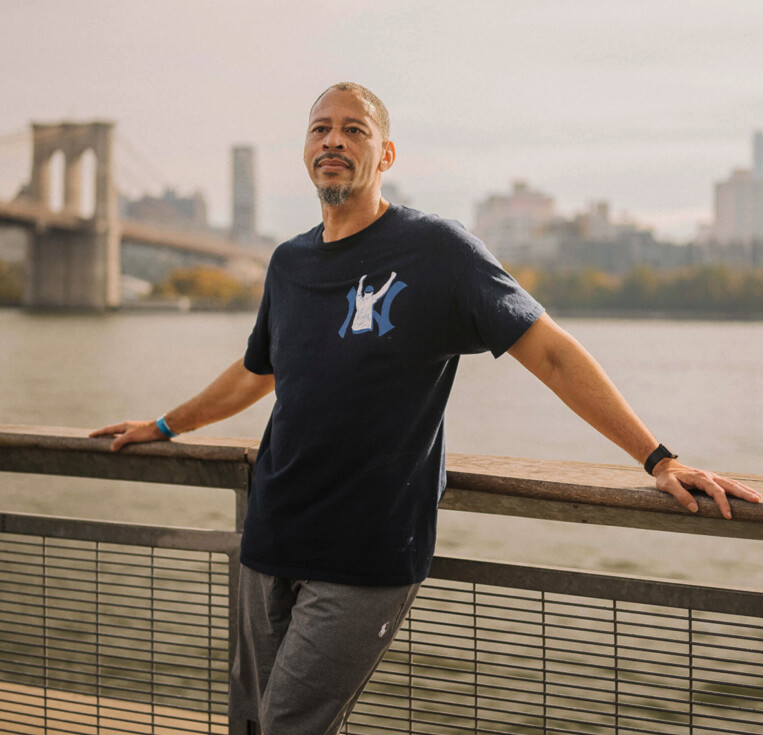
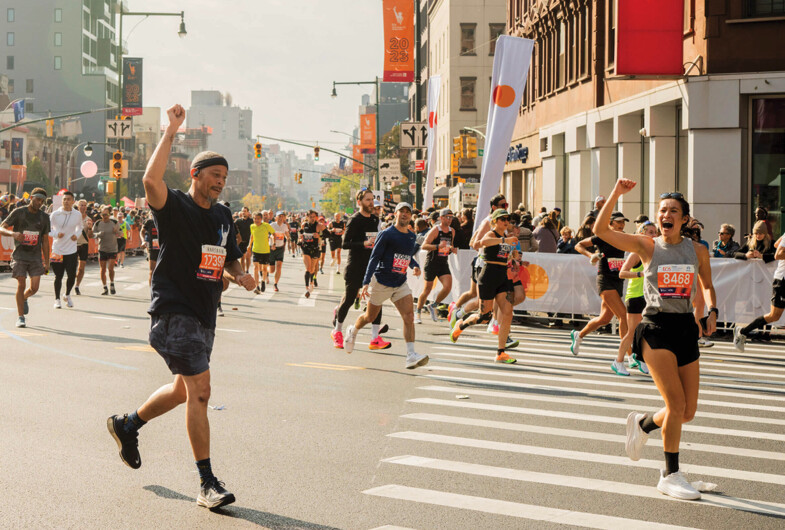
For Rahsaan and the other San Quentin runners, Mount Tam, as it’s known, had become a beacon of hope. It’s the site of the legendary Dipsea, a 7.4-mile technical trail from Mill Valley to Stinson Beach. After the 1,000 Mile Club was founded in 2005, it became tradition for club members who got released to run that trail; their stories soon became lore among the runners still inside. “I’ve been hearing about the Dipsea for the longest,” Rahsaan says.
Given his sentence, he never expected to run it. Rahsaan was serving 55 years to life for second-degree murder. Life outside, let alone running over Mount Tam all the way to the Pacific, felt like a million miles away. But Rahsaan loved to run—it gave him a sense of freedom within the prison walls, and more than that, it connected him to the community of the 1,000 Mile Club. So if the volunteer coaches and other runners wanted to talk about the Dipsea, he was happy to listen.
We’ll get to the details of Rahsaan’s crime later, but it’s useful to lead with some enduring truths: People can grow in even the harshest environments, and running, whether around a lake or a prison yard, has the power to change lives. In fact, Rahsaan made a lot of changes after he went to prison: He became a mentor to at-risk youth, began facing the reality of his violence, and discovered the power of education and his own pen. Along the way, Rahsaan also prayed for clemency. The odds were never in his favor.
To be clear, this is not a story about a wrongful conviction. Rahsaan took the life of another human being, and he’s spent more than two decades reckoning with that fact. He doesn’t expect forgiveness. Rather, it’s a story about a man who you could argue was set up to fail, and for more than 30 years that’s exactly what he did. But it’s also a story of navigating the delta between memory and fact and finding peace in the idea that sometimes the most formative things in our lives may not be exactly as they seem. And mostly, it’s a story of transformation—of learning to do good in a world that too often encourages the opposite.
RAHSAAN “NEW YORK” THOMAS GREW UP IN BROWNSVILLE, A ONE-SQUARE-MILE SECTION OF EASTERN Brooklyn wedged between Crown Heights and East New York. As a kid he’d spend hours on his Commodore 64 computer trying to code his own games. He loved riding his skateboard down the slope of his building’s courtyard. On weekends, he and his friends liked to play roller hockey there, using tree branches for sticks and a crushed soda can for a puck.
Once a working-class Jewish enclave, Brownsville started to change in the 1960s, when many white families relocated to the suburbs, Black families moved in, and city agencies began denying residents basic services like trash pickup and streetlight repairs. John Lindsay, New York’s mayor at the time, once referred to the area as “Bombsville” on account of all the burned-out buildings and rubble-filled empty lots. By 1971, the year after Rahsaan was born, four out of five families in Brownsville were on government assistance. More than 50 years later, Brownsville still has a poverty rate close to 30 percent. The neighborhood’s credo, “Never ran, never will,” is typically interpreted as a vow of resilience in the face of adversity. For some, like Rahsaan, it has always meant something else: Don’t back down.
The first time Rahsaan didn’t run, he was 5 or 6 years old. He had just moved into Atlantic Towers, a pair of 24-story buildings beset with rotting walls and exposed sewer pipes that housed more than 700 families. Three older kids welcomed him with their fists. Even if Rahsaan had tried to run, he wouldn’t have gotten far. At that age, Rahsaan was skinny, slow, and uncoordinated. He got picked on a lot. Worse, he was light-skinned and frequently taunted as “white boy.” The insult didn’t even make sense to Rahsaan, whose mother is Black and whose father was Puerto Rican. “I feel Black,” he says. “I don’t feel [like] anything else. I feel like myself.”
Rahsaan hated being called white. It was the mid-1970s; Roots had just aired on ABC, and Rahsaan associated being white with putting people in chains. Five-Percent Nation, a Black nationalist movement founded in Harlem, had risen to prominence and ascribed godlike status to Black men. Plus, all the best athletes were Black: Muhammad Ali. Reggie Jackson. Kareem Abdul-Jabbar. In Rahsaan’s world, somebody white was considered physically inferior.
Raised by his mother, Jacqueline, Rahsaan never really knew his father, Carlos, who spent much of Rahsaan’s childhood in prison. In 1974, Jacqueline had another son, Aikeem, with a different man, and raised her two boys as a single mom. Carlos also had another son, Carl, whom Rahsaan met only once, when Carl was a baby. Still, Rahsaan believed “the myth,” as he puts it now, that one day Carlos would return and relieve him, his mom, and Aikeem of the life they were living. Jacqueline had a bachelor’s degree in sociology and worked three jobs to keep her sons clothed and fed. She nurtured Rahsaan’s interest in computers and sent him to a parochial school that had a gifted program. Rahsaan describes his family as “upper-class poor.” They had more than a lot of families, but never enough to get out of Brownsville, away from the drugs and the violence.
Some traumas are small but are compounded by frequency and volume; others are isolated occurrences but so significant that they define a person for a lifetime. Rahsaan remembers his grandmother telling him that his father had been found dead in an alley, throat slashed, wallet missing. Rahsaan was 12 at the time, and he understood it to mean his father had been murdered for whatever cash he had on him—maybe $200, not even. Now he would never come home.
Rahsaan felt like something he didn’t even have had been taken from him. “It just made me different, like, angry,” he says. By the time he got to high school, Rahsaan resolved to never let anyone take anything from him or his family again. “I started feeling like, next time somebody tryin’ to rob me, I’m gonna stab him,” he says. He started carrying a knife, a razor, rug cutters—“all kinds of sharp stuff.” Rahsaan never instigated a fight, but he refused to back down when threatened or attacked. It was a matter of survival.
The first time Rahsaan picked up a gun, it was to avenge his brother. Aikeem, who was 14 at the time, had been shot in the leg by a guy in the neighborhood who was trying to rob him and Rahsaan. A few months later, Rahsaan saw the shooter on the street, ran to the apartment of a drug dealer he knew, and demanded a gun. Rahsaan, then 18, went back outside and fired three shots at the guy. Rahsaan was arrested and sent to Rikers Island, then released after three days: The guy he’d shot was wanted for several crimes and refused to testify against Rahsaan.
By day, Rahsaan tried to lead a straight life. He graduated from high school in 1988 and got a job taking reservations for Pan Am Airways. He lost the job after Flight 103 exploded in a terrorist bombing over Scotland that December, and the company downsized. Rahsaan got a new job in the mailroom at Debevoise & Plimpton, a white-shoe law firm in midtown Manhattan. He could type 70 words a minute and hoped to become a paralegal one day.
Rahsaan carried a gun to work because he’d been conditioned to expect the worst when he returned to Brownsville at night. “If you constantly being traumatized, you constantly feeling unsafe, it’s really hard to be in a good mind space and be a good person,” he says. “I mean, you have to be extraordinary.”
After high school, some of Rahsaan’s friends went to Old Westbury, a state university on Long Island with a rolling green campus. He would sometimes visit them, and at a Halloween party one night, he got into a scrape with some other guys and fired his gun. Rahsaan spent the next year awaiting trial in county jail, the following year at Cayuga State Prison in upstate New York, and another 22 months after that on work release, living in a halfway house in Queens. He got a job working the merch table for the Blue Man Group at Astor Place Theater, but the pay wasn’t enough to support the two kids he’d had not long after getting out of Cayuga.
He started selling a little crack around 1994, when he was 24. By 27 he was dealing full-time. He didn’t want to be a drug dealer, though. “I just felt desperate,” he says. Rahsaan had learned to cut hair in Cayuga, and he hoped to save enough money to open a barbershop.
He never got that opportunity. By the summer of 1999, things in New York had gotten too hot for Rahsaan and he fled to California. For the first time in his 28 years, Rahsaan Thomas was on the run.
EVERY RUNNER HAS AN ORIGIN STORY. SOME START IN SCHOOL, OTHERS TAKE UP RUNNING TO IMPROVE their health or beat addiction. Many stories share common themes, if not exact details. And some, like Rahsaan’s, are absolutely singular.
Rahsaan drove west with ambitions to break into the music business. He wanted to be a manager, maybe start his own label. His new girlfriend would join him a week later in La Jolla, where they’d found an apartment, so Rahsaan went first to Big Bear, a small town deep in the San Bernardino Mountains 100 miles east of Los Angeles. It’s where Ryan Hall grew up, and where he discovered running at age 13 by circling Big Bear Lake—15 miles—one afternoon on a whim. Hall has recounted that story so many times that it’s likely even better known than the American records he would go on to set in the half and full marathons.
Rahsaan didn’t know anything about Ryan Hall, who at the time was just about to start his junior year at Big Bear High School and begin a two-year reign as the California state cross-country champion. He didn’t even know there was a lake in Big Bear. Rahsaan went to Big Bear to box with a friend, Shannon Briggs, a two-time World Boxing Organization heavyweight champion.
Briggs and Rahsaan had grown up together in Atlantic Towers. As kids they liked to ride bikes in the courtyard, and later they went to the same high school in Fort Greene. But Briggs’s mom had become addicted to drugs by his sophomore year, and they were evicted from the Towers. Briggs and Rahsaan lost touch. Briggs began spending time at a boxing gym in East New York; often he’d sleep there. He had talent in the ring. People thought he might even be the next Mike Tyson, another native of Brownsville who was himself a world heavyweight champ from 1986 to 1989.
Briggs went pro in 1991, and by the end of that decade he was earning seven figures fighting guys like George Foreman and Lennox Lewis. Rahsaan was at those fights. The two had reconnected in 1996, when Rahsaan was trying to rebuild his life after prison and Briggs’s boxing career was on the rise. In August 1999, Briggs was gearing up to fight Francois Botha, a South African known as the White Buffalo, and had decamped to Big Bear to train. “He was like, ‘Yo, come live with me, bro,’” Rahsaan recalls.
Briggs was running three miles a day to increase his stamina. His route was a simple out-and-back on a wooded trail, and on one of Rahsaan’s first days there, he decided to join him. Rahsaan hadn’t done so much as a push-up since getting out of prison, but he wanted to hang with his friend. Briggs and his training partners set off at their usual clip; within a few minutes they’d disappeared from Rahsaan’s view. By the time they were doubling back, he’d barely made it a half mile.
Rahsaan never liked feeling physically inferior. So back in La Jolla, he started running a few times a week, going to the gym, whatever it took. Before long he was up to five miles. And the next time he ran with Briggs, he could keep up. After that, he says, “Running just became my thing.”
FOR YEARS, RAHSAAN HAD BUCKED AT TAKING RESPONSIBILITY for the murder that sent him to prison. The other guys had guns, too, he insisted. If he hadn’t shot them, they’d have shot him. It was self-defense.
In the moment, he had no reason to think otherwise. It was April 2000. A friend had arranged to sell $50,000 worth of weed, and Rahsaan went along to help. They met in the parking lot of a strip mall in L.A., broad daylight. The buyers brought guns instead of cash, things went sideways, and, in a flash of adrenaline, Rahsaan used the 9mm he’d packed for protection, killing one man and putting the other in critical condition. He was 29 and had been in California eight months.
After awaiting trial for three years in the L.A. County jails, Rahsaan was sentenced to 55 years to life. But for the crushing finality of it, the grim interminability, the prospect of never seeing the outside world again, he was on familiar ground. Even Brownsville had been a kind of prison—one defined, as Rahsaan puts it now, by division and neglect, a world unto itself that societal forces made nearly impossible to escape. He was used to life inside.
Rahsaan spent the next 10 years shuttling between maximum security facilities, the bulk of those years at Calipatria State Prison, 30 miles from the Mexican border. By the time he got to San Quentin, he was 42.
As part of the prison’s restorative justice program, Rahsaan met a mother of two young men who’d been shot, one killed and the other critically injured. Her pain, her dignity, her ability to forgive her sons’ shooters prompted Rahsann to reflect on his own crime. “It made me feel like, damn, I did this to his mother,” he says. “I did this to my mother. You don’t do that to Black mothers. They go through so much.”
ABOUT 2 MILLION PEOPLE ARE INCARCERATED IN THE UNITED States today, roughly eight times as many as in the early 1970s. Nearly half of them are Black, despite Black Americans representing only 13 percent of the U.S. population.
This disparity reflects what the legal scholar and author Michelle Alexander calls “the new Jim Crow,” an invisible system of oppression that has impeded Black men in particular since the days of slavery. In her book of the same title, Alexander unpacks 400 years of policies and social attitudes that have created a society in which one in three Black males will be incarcerated at some point in their lives, and where even those who have been paroled often face a lifetime of discrimination and disenfranchisement, like losing the right to vote. If you hit a wall every time you try to do something, are you really free? More than half of the people released from U.S. jails and prisons return within three years.
After Rahsaan got out of Cayuga back in 1992, with a felony on his permanent record, he’d had trouble doing just about anything legit: renting an apartment, finding a decent job, securing a loan. Though he’d paid for the Mercedes SUV he drove to California, the lease was in his girlfriend’s name. Selling crack had provided financial solvency, and his success in New York made him feel invincible. One weed deal in California seemed easy enough. But he wasn’t naive. Rahsaan packed a gun, and if he felt he had to use it, he would.
Today Rahsaan feels deep remorse for what transpired from there. But back then he saw no other way. “When we have a grievance, we hold court in the street,” he says of growing up in the Brownsville projects. “There’s no court of law, there’s no lawsuits.” Even while incarcerated, Rahsaan continued to meet threats with violence. But he also found that in prison, as in Brownsville, respect was temporary. “If you stab somebody, people leave you alone,” he says. “But you gotta keep doing it.”
Not long after Rahsaan got to Calipatria, around 2003 or 2004, an older man named Samir pulled him aside. “Youngster, there’s nobody that you can beat up that’s gonna get you out of prison,” Rahsaan remembers Samir saying. “In fact, that’s gonna make it worse.” Rahsaan thought about Muhammad Ali, how he would get his opponents angry on purpose so they’d swing until they wore themselves out. He realized that when you’re angry, you’re not thinking clearly or moving effectively. You’re not responding; you’re reacting.
The next time Rahsaan saw Samir was in the yard at Calipatria. They were both doing laps, and the two men started to run together. Rahsaan told Samir about the impact his words had on him, how they helped him see he’d always let “somebody else’s hangup become my hangup, somebody else’s trauma become my trauma.” Each time that happened, he realized, he slid backward.
Rahsaan began exploring various religions. He liked how the men in the Muslim prayer group at Calipatria encouraged him to think about his past, and the way they talked about God’s plan. He thought back to that day in April 2000 and came to believe that God would have gotten him out of that situation without a gun. “If I was meant to die, I was meant to die,” he says. “If I’m not, I’m not.” He started to see confrontations as tests. “I stopped feeding into the negativity and started passing the test, and I’ve been passing it consistently since,” he says.
CLAIRE GELBART PLACED HER BELONGINGS IN A PLASTIC TRAY AND WALKED THROUGH THE METAL detectors at the visitors’ entrance at San Quentin. She crossed the Yard to the prison’s newsroom. It was late fall of 2017, and Gelbart had started volunteering with the San Quentin Journalism Guild, an initiative to teach incarcerated people the fundamentals of newswriting and interviewing techniques.
Historically infamous for housing people like Charles Manson and Sirhan Sirhan, the man convicted of killing Robert Kennedy, and for having the only death row for men in California, San Quentin has in recent years instituted reforms. By the time Rahsaan arrived, the facility was offering dozens of programs, had an onsite college, and granted some of the individuals housed there considerable freedom of movement. Hundreds of volunteers pass through its gates every year.
Rahsaan was in the newsroom working on a story for the San Quentin News, where he was a staff writer. Gelbart and Rahsaan started to chat, and within minutes they were bonding over running. They talked about the San Quentin Marathon—in which Rahsaan was proud to have placed 13th out of 13 finishers in 6 hours, 12 minutes, and 23 seconds—and Gelbart’s plans to run her first half marathon that spring. “It was like I lost all sense of place and time,” Gelbart says, “like I could have been in a coffee shop in San Francisco talking to someone.”
In weekly visits over the next year, Gelbart and Rahsaan talked about their families, their hopes for the future. Gelbart had just graduated from Tufts University with dreams of being a writer. Rahsaan was working toward a college degree, writing for numerous outlets like the Marshall Project and Vice, and learning about podcasting and documentary filmmaking. In 2019, when Gelbart was offered a job in New York, she told Rahsaan she felt torn about leaving—they’d become close friends. They made a pact that if Rahsaan ever got out of prison, they would run the New York City Marathon together. “We couldn’t think of a better thing to celebrate him coming home,” Gelbart says.
When Rahsaan was sentenced, he still had hope for a successful appeal. But when his appeal was denied in 2011, he realized he was never going home. His parole date was set for 2085.
At the time, though, the political appetite for mass incarceration was starting to shift. Gray Davis, who was governor of California from 1999 to 2003, had never granted a single pardon; and his successor, Arnold Schwarzenegger, granted only 15. Then, between 2011 and 2019, Governor Jerry Brown pardoned or commuted the sentences of more than 1,300 people. Studies show that the recidivism rate among those who had been serving life sentences is less than 5 percent in a number of states, including California. And according to the U.S. Bureau of Justice, 98 percent of people convicted of homicide who are released from prison do not commit another murder.
In the fall of 2018, Governor Brown approved Rahsaan for commutation, but it was now up to his successor, Gavin Newsom, to follow through. And until a release date was set, there were no guarantees.
Back at San Quentin, Rahsaan was busier than ever. He was working on his fourth film, Friendly Signs, a documentary funded by the Marshall Project and the Sundance Institute; it was about fellow 1,000 Mile Club member Tommy Lee Wickerd’s efforts to start an ASL program to aid a group of deaf and hard-of-hearing newcomers to the prison. He had recently been named chair of the San Quentin satellite chapter of the Society of Professional Journalists and became a cohost and coproducer of Ear Hustle, a popular podcast about life in San Quentin that in 2020 was a finalist for a Pulitzer Prize. He was also sketching out plans for a nonprofit, Empowerment Ave, to build connections to the outside world for other incarcerated writers and artists and to advocate for fair compensation. And after five years, he was just one history class away from getting his associate’s degree from Mount Tamalpais College.
In January 2020, Rahsaan began his final semester, eager to don his cap and gown that June. MTC always organized a festive graduation ceremony in the prison’s visiting room, inviting families, friends, students, and staff. Then COVID-19 hit. Lockdown. All classes canceled until further notice. The 1,000 Mile Club suspended workouts and races as well, its 70-plus members scattering throughout the prison, not sure when or if they’d ever get together again. Covid would officially kill 28 people at San Quentin and make many more very ill. College graduation, let alone races in the Yard and parole hearings, would have to wait.
For the first time since arriving at San Quentin, Rahsaan felt claustrophobic in his 4-by-10-foot cell. He couldn’t work on his films or go to the newsroom. All he could do was read and write, alone. After George Floyd was murdered that May, Rahsaan fell into a depression. He remembered something Chadwick Boseman had said in a 2018 commencement speech at Howard University: “Remember, the struggles along the way shape you for your purpose.”
Rahsaan decided his purpose was to write. Outside journalists couldn’t enter the prison during the pandemic, but their publications were thirsty for prison Covid stories. Rahsaan saw an opportunity. Between June 2020 and February 2023, he published 42 articles, and thanks to Empowerment Ave, he knew what those articles were worth. As a writer for the San Quentin News, Rahsaan earned $36 a month; those 42 articles for external publications netted him $30,000.
DOZENS OF PEOPLE GATHERED OUTSIDE SAN QUENTIN’S GATES. IT WAS A FRIGID MORNING IN EARLY February 2023; the sun hadn’t yet risen. Among those assembled were two cofounders of Ear Hustle, Earlonne Woods and Nigel Poor, along with executive producer Bruce Wallace, recording equipment in hand. A procession of white vans, each carrying one or two men, arrived one by one. After three or four hours, the air had warmed to a balmy 60 degrees. Another van pulled up, Rahsaan got out, and the crowd erupted. Nearly 23 years after he’d been sentenced to 55 years to life, Rahsaan Thomas had been released.
Rahsaan got into a Hyundai sedan and was soon headed away from San Quentin. Wallace sat in the back, recording Rahsaan seeing water, mountains, and a highway from the front seat of a car for the first time in decades. “I feel like I’m escaping,” he joked. “Is anybody chasing us? This is amazing. This is crazy.”
Rahsaan called his mom, who wasn’t able to make it to California for his release.
“Hey, Ma, it’s really real,” he said, breathless with joy. “I’m free. No more handcuffs.”
Jacqueline’s exuberance can be heard in her laughter, her curiosity about what his first meal would be (steak and French toast), and her motherly rebuke of his plan to buy a Tesla.
“You ain’t been drivin’ in a while and I know you ain’t the best driver in the world,” she teased.
Rahsaan moved into a transitional house in Oakland and wasted no time adjusting to life in the 21st century. He got an iPhone, and a friend gave him a crash course in protecting himself from cyberattacks. He’s almost fallen for a few. “There’s some rough hoods on the internet,” he jokes. Earlonne Woods, who was paroled in 2018, and others taught Rahsaan how to use social media. He opened Instagram and Facebook accounts and worked on his own website, rahsaannewyorkthomas.com, which a friend had built for him while he was in San Quentin to promote his creative projects, Empowerment Ave, and even a line of merch.
Despite all the excitement and chaos, Rahsaan never forgot about the pact he’d made with Claire Gelbart. He found her on Facebook and sent a simple, two-line message: “Start training. We have a marathon to run.”
IN LATE MARCH, SIX WEEKS AFTER HIS RELEASE, RAHSAAN FLEW TO NEW YORK CITY. IT WAS THE FIRST time he’d been home in nearly a quarter century, and he hadn’t flown since before 9/11. The security protocols at SFO reminded him more of prison than of the last time he’d been in an airport. Actually, “it was worse than prison,” he jokes. They confiscated his jar of honey.
The changes to his home borough were no less surprising. He’d come to New York to take work meetings, see family, and catch a Nets game at Barclays Center in downtown Brooklyn. Rahsaan barely recognized Barclays; it had been a U-Haul lot the last time he was there, and skyscrapers now towered over Fulton Mall, where he used to buy Starter jackets at Dr. Jay’s and Big Daddy Kane tapes at the Wiz.
He met up with Gelbart on Flatbush Avenue, where come November they’d be just hitting mile 8 of the New York City Marathon. They hadn’t been allowed to touch at San Quentin and weren’t sure how to greet each other on the outside. “It was weird at first, because I was like, do we hug?” Gelbart recalls. But the awkwardness faded fast, and as they walked, Gelbart saw a different side of Rahsaan. “He seemed so much more relaxed,” she says. “Much happier, much lighter.”
Back in 1985, just a few blocks from where Rahsaan and Gelbart walked now, Rahsaan, his brother Aikeem, and his friend Troy had been on their way home from the Fulton Mall when out of nowhere, about a dozen guys rolled up on them. They started beating on Troy and, for a minute, left Rahsaan and Aikeem alone. Images of his father, throat slashed, flashed through Rahsaan’s mind. He pulled a rug cutter out of his pocket, ran to the smallest guy in the group, and jabbed it into the back of his head. “They looked at me like they were gonna kill me,” Rahsaan says. He threw the blade to the ground, slid his hand inside his coat, and held it there. “Y’all wanna play? We gonna play,” he said. The bluff worked; the guys ran. It was the first time Rahsaan had ever stabbed someone.
Change sometimes occurs gradually, and then all at once. That was a different Brooklyn, a different Rahsaan. He began to confront his own violence when he had met Samir some 20 years before, and continued to do so through his studies, his faith, his work in restorative justice, and his own writing. But the origin of his tendency toward violence, the death of his father, remained firmly rooted in his psyche. Then, in 2017, Rahsaan spoke for the first time with his estranged half-brother, Carl.
Carl had read Rahsaan’s work, and asked why he always said their father had been murdered.
“That’s what grandma told me,” Rahsaan said.
“But he wasn’t murdered,” Carl told him. “He killed himself.”
And it wasn’t in 1982, as Rahsaan remembered, but in 1985—the same year Rahsaan started carrying blades.
Rahsaan didn’t believe it until Carl sent him a copy of the suicide note. Even then he remained in shock. “To think I justified violence, treating robbery like a life-or-death situation, over a lie,” he says. Jacqueline was as surprised as Rahsaan to learn the truth of Carlos’s death. He never seemed troubled or depressed to her when they were together, but, “You can’t really read people,” she says. “You don’t know.”
Rahsaan still can’t account for why his grandmother told him what she did, nor for the discrepancy between his memory and the facts. Regardless, after more than 30 years, Rahsaan was finally able to let go of the one trauma that had calcified into an instinct to kill or be killed. And he has no intention of dredging it back up.
THE FASTEST RUNNER IN THE 1,000 MILE CLUB’S HISTORY IS MARKELLE “THE GAZELLE” TAYLOR, WHO was paroled in 2019 and went on to run 2:52 in the 2022 Boston Marathon. Rahsaan is the slowest. At San Quentin, he was often the last one to finish a race, but that wasn’t the point—he liked being out in the Yard with the guys. It gave him a sense of belonging, and not just to the 1,000 Mile Club, but to the running community beyond.
Like every other 1,000 Miler who gets released from San Quentin, Rahsaan had a rite of passage to conquer. On Sunday morning, May 7, 2023, he met a handful of other runners from the club and a few volunteer coaches in Mill Valley. After a decade of gazing up at Mount Tam from the Yard as he completed one 400-meter loop after another, Rahsaan was finally about to run over the mountain all the way to the Pacific.
The runners did a few final stretches, wished one another luck, and started to run. Almost immediately they had to climb some 700 stairs, many made of stone, and the course only got more treacherous from there. Uneven footing, singletrack paths, and 2,000-plus feet of elevation all conspire to make the Dipsea notoriously difficult. The giant redwoods and Douglas firs along the course were lost on Rahsaan; he never took his eyes off the ground.
One of the coaches, Jim Maloney, stayed with Rahsaan as his guide, and to help him if he slipped or fell. Markelle Taylor came too, but said he’d meet them in Stinson Beach. He knew how dangerous the trail was, Rahsaan says, and had vowed to never run it again. After his own initiation, Rahsaan decided that he, too, would never do it again. “I’ve been shot at,” he says. “I’ve been in physical danger. I don’t want to revisit danger.”
Rahsaan now logs most of his miles on a treadmill because of knee issues, but on occasion he ventures out to do the 3.4-mile loop around Lake Merritt, a lagoon in the heart of Oakland. He decided to use the New York City Marathon to raise money for Empowerment Ave, and to accept donations until he crossed the finish line in Central Park. Gelbart wrote a training plan for him and got him a new pair of shoes. In prison, Rahsaan had run in the same pair of Adidas for three years, and he was excited to learn about the maximalist shoe movement. Gelbart tried to interest him in Hokas, but Rahsaan thought they were ugly. He wanted Nikes.
In June, Gelbart went to the Bay Area to visit family and met Rahsaan for a six-mile run around Lake Merritt. As they looped the lake at a conversational 11:30 pace, they talked about work, relationships, and, of course, the New York City Marathon. Rahsaan was disappointed to learn that he would probably not be the last person to finish. (He still holds the record for the slowest San Quentin Marathon in its 15-year history, and he hopes no one ever beats it.) Besides, the more time he spent on the course in New York, he figured, the longer people would have to donate to Empowerment Ave.
On Sunday, November 5, Gelbart and Rahsaan made their way to Staten Island. Waiting at the base of the Verrazzano Bridge, Gelbart recorded Rahsaan singing along to Frank Sinatra’s “New York, New York” for Instagram, and captioned the video “back where he belongs.” They documented much of their race as they floated through Brooklyn, Queens, Manhattan, and the Bronx: greeting friends along the course, enjoying a lollipop on the Queensboro Bridge, beaming even as their pace slowed from 11:45 per mile for the first 5K to 16:30 for the last. Rahsaan finished in six hours, 26 minutes, and 21 seconds, placing 48,221 out of 51,290 runners. The next day, he sent me a text: “The marathon was pure love.” What’s more, he received more than $15,000 in donations for Empowerment Ave, enough to start a writing program at a women’s prison in Texas.
Every runner has an origin story. Every runner finds a reason to keep going. At Calipatria, Rahsaan liked to joke that he ran because if an earthquake ever came along and brought down the prison’s walls, he needed to be in shape so he could escape and run to Mexico. In San Quentin, he ran for the community. Today he has a new reason. “I heard that running extends your life by 10 years,” he says, “and I gave away 22.” Now that he’s out, his motivation has never been higher. He has so much to do.
Login to leave a comment
Why women-only run clubs are dominating the scene
Amid 2024’s run-mania, with races frequently selling out across Canada, female-exclusive run clubs are gaining momentum. In honour of Sexual Assault Awareness Month, we’re discussing how the sport has evolved, with women’s run clubs paving the way for female runners to feel seen, safe and empowered.
Run clubs are in
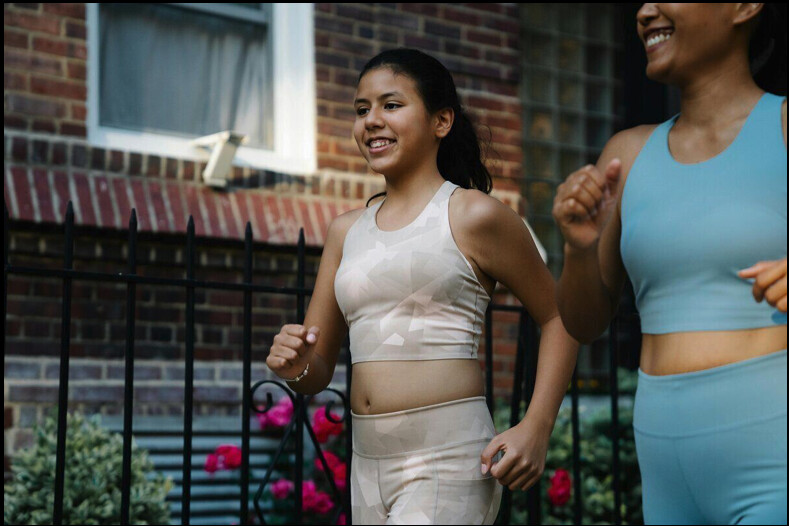
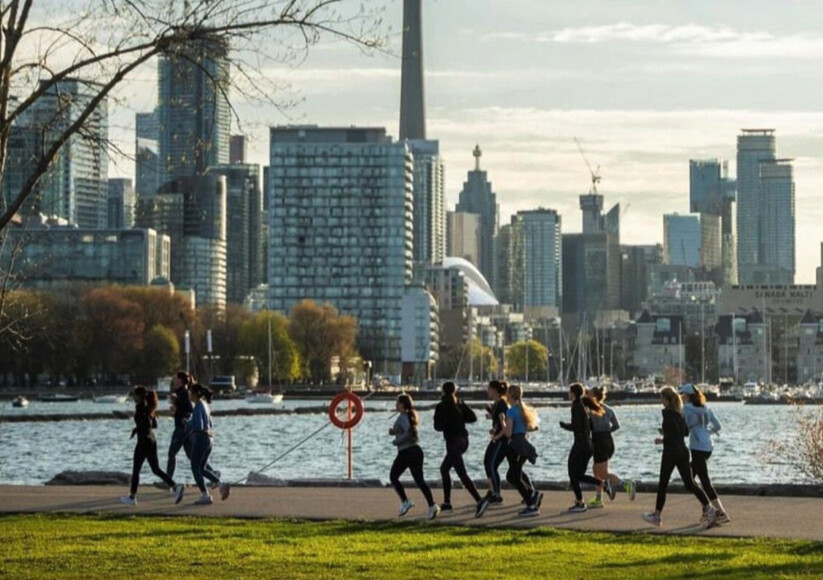
Women’s running has been on the rise since the ’70s, when recreational jogging first became popular. However, the recent surge in gender-exclusive running clubs is a significant development. According to Reddit, this is not just a passing trend. Women’s run clubs have become especially attractive to women who’ve experienced gender-based discrimination or sexual harassment in mixed-gender clubs.“As a woman that has participated in many mixed-company athletic pursuits, [I feel that] men often react poorly to women being skilled or successful in a sport, in addition to the usual perils of being harassed or bothered,” said one Reddit user. Another pointed out that “this obnoxious masculinity is woven into the history of run clubs.”
Confronting patriarchy
Running, like many other sports, was designed by men for men. Women in France began challenging this norm in 1903 with a race in Paris known as “The Race of the Midinettes” (a 12-km walking race for seamstresses or assistants in the Paris fashion industry). While the French press called these midinettes derogatory names like “streetwalkers” (sex workers), feminist scholars such as Florys Castan-Vicenet (in her 2023 report in Front Sports Act Living) strongly argue otherwise, considering them pioneers. Amsterdam’s 1928 Olympic Games marked a revolutionary moment in women’s running. For the first time, female runners were invited to participate in the 800m. This feat was short-lived however, as the event was immediately banned, and would remain so until 1960. In 1967, Kathrine Switzer became the first woman to run the Boston Marathon with an official bib (though she was physically assaulted by the race manager for doing so).
“Female runners were spearheading a revolution, changing common beliefs about the limits of women’s physical endurance,” shared Louise Wood in her story “Into the Boys’ Club”. By the turn of the 21st century, feminist movements were changing the landscape of women’s running.
Women supporting women
During this time, feminist thinkers like Sara Ahmed confronted topics like gender inequity and female objectification that commonly deterred women from joining the sport. “What I hate is, for example when someone comments on your run,” wrote Ahmed in her 2000 novel Strange Encounters. “They mean it as a compliment, but for me, it just emphasizes, ‘I don’t expect this from someone who looks like you.'” As female runners and feminists continued to reshape the narrative, gender-exclusive run clubs emerged, reflecting a significant rise in women’s participation in running. A report by International Journal of Environmental Research and Public Health says between 1953 and 2017, sex differences decreased dramatically in 100-mile ultras worldwide. By 2020, according to RunRpeat, 57 per cent of Canadian runners and 23 per cent of ultramarathon participants identified as female, marking a significant increase.
Strength in numbers
Today, women are choosing to forgo late nights on the town for a good night’s sleep and morning run club with the girls. These clubs are not just about running; they are about women sprinting together through life’s challenges, forming strong bonds and a sense of community that extends beyond the club. Women-only run clubs across Canada, such as Switzer’s 261 Fearless (which has chapters in 14 countries; the Canadian chapter is in Toronto), and runs celebrating women, like Lululemon’s Further 6-day ultra (based in Vancouver), are surging in popularity. Still, in a 2023 study by Adidas, it was reported that 38 per cent of women have experienced physical or verbal harassment while running, with more than half receiving unwanted attention (56 per cent), sexist comments or unwanted sexual attention (55 per cent). According to a 2024 study by Asics, a startling number of Canadian women have cited “lack of safe spaces” as a barrier to running.
Chix Run (located in Toronto and Calgary) has been dedicated to offering women this safe space. Since founding the club four years ago, Amanda Richardson, 42, has observed a significant improvement in the sport’s female representation. “Toronto run clubs used to be focused just on performance, but now it’s all about community, where women are out there connecting on topics like motherhood, marriage or their love of coffee—a post-run highlight.”
The club strives to take the emphasis off competing and winning to make running more about having fun, being active with other women and creating friendships. “Many people have noticed running is advertised as a place to date,” Richardson laughs. “Turning up to a running club where you know it’s all women there, free to say what you want to say, be who you want to be, they don’t have to worry about how they look; there is no hidden agenda.”
Girlhood and good vibes
According to Strava, women under 25 are the fastest-growing community using the app today, promising a more balanced and inclusive future for running. The Girls run the 6ix run club has quickly become a regular hotspot for young female runners in Toronto. The club was founded in December by Jill Amirault, 26, and Claire Milburn, 23, and already has 5,000 Instagram followers.“I think for someone new to running, it can be really intimidating to go to a gender-diverse run club, because men are typically competitive,” says Amirault. “Some women need that safe space, similar to a gym with a ‘women only’ section.” The club embarks once a week on a 6-km route through the city, in which its members can be found swapping stories about dating misadventures and connecting about girlhood. For a long time, there was a lack of female-exclusive run clubs in Toronto, says Amirault.
“Now, with more female run clubs and influencers, people are certainly beginning to notice that this is an environment where women can succeed,” says Amirault. “Pace doesn’t matter; what’s important is that we motivate, connect and celebrate our womanhood.”
by Running Magazine
Login to leave a comment
How to Reverse Taper to Build Your Mileage Back Up After a Race
Two run coaches offer details for between-race training.While training for a half marathon or marathon is anything but easy, following a well-designed program is pretty straightforward. You ramp up your mileage when the program says so, mix in speed work and intervals as instructed, and taper volume and intensity (sometimes begrudgingly) when the schedule dictates.
But, what happens after you check off that final “Race Day!” box on your calendar and float into the no man’s land between training programs? You’re tired and need to rest, but the idea of unstructured time off makes you antsy. Plus, your next race isn’t that far off. Following a “reverse taper” or “tapering up” allows you to bridge the space between events. The idea of the reverse taper is to gradually reintroduce running and increase volume while still prioritizing rest and recovery.
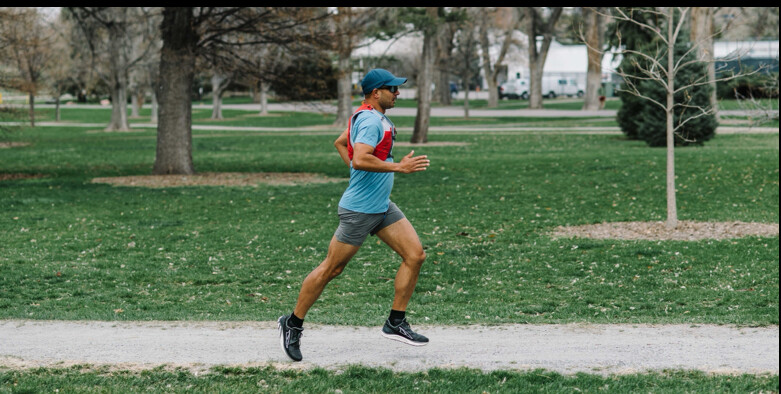
To better understand the logic behind tapering up, down, and in reverse, we spoke with Jessie Zapotechne, a coach with Adidas Runners in New York City and the founder of Girls Run NYC, and Raj Hathiramani, certified running coach at Mile High Run Club in New York City. Both are seasoned marathoners who have designed training programs and coached countless athletes through the ebbs and flows of race prep and recovery. Here’s what to know.
Understanding the Reverse Taper
The reverse taper is different from simply increasing volume to prepare for a race. When you’re in the midst of training and following a training plan, “weekly mileage increases are a gentle, rolling progression,” Hathiramani says. This approach compounds strength and endurance as the body adapts to new and increased training demands in order to reach a specific distance and pace.
Postrace, however, you’re working with a different baseline. “Racing wears down muscles, depletes glycogen, and suppresses your immune system,” Hathiramani says. Recovery—both physical and mental—should be your number-one priority.
“For longer races, this can include several days or a week of full rest before cross-training and resuming running, and for shorter or lower-effort races, you can focus on active recovery and cross-training with a quicker return to running,” Hathiramani says.
If you’re worried about losing all of the progress you made during training, don’t be. “Our fitness does not diminish as drastically as we think with an extended period of rest. Our bodies adapt to ‘defend’ our fitness level,” Hathiramani adds.
When you feel rested and ready to jump back in, you can start with some short, unstructured runs to see how you feel. (Don’t be afraid to shorten or bail on a workout if you’re feeling fatigued.)
Unlike a regular taper within training plans, there are fewer agreed upon rules about how to train without a specific goal or race plan. While you can use your previous training for guidance, Hathiramani emphasizes that this can be “tricky,” as the right approach depends upon your experience, training history, and distance of your last race.
“Generally, it’s fair to say after a rest period following a race, you can build back from the end of your base building phase,” he says. You don’t need to start at week one, but you also shouldn’t dive back into peak training.
Consider picking a week from the early-to-middle of the training plan as your reverse taper starting point. “It’s usually six to eight weeks into a [marathon] training cycle,” Hathiramani says.
6 Reverse Taper Tips
To taper up like a pro, and to avoid injuries and overtraining, consider the following tips and mistakes to avoid. 1. Progress Slow(er than Usual)
A weekly mileage increase of 10 to 20 percent is standard for most training plans, but remember that when you start a reverse taper, you’re not simply building mileage, you’re recovering. It’s okay to keep your volume the same from one week to the next or even reduce it, if needed.
2. Honor Rest Days
“A common mistake that I’ve seen athletes make is to skip a rest day because they are feeling good,” Zapotechne says. “This results in overtraining or feeling fatigued when it is time for them to continue on with the next planned workouts.”
If you crave movement on a rest day, consider an activity like restorative yoga or walking.
3. Don’t Dismiss Sharp or Persistent Pain
“Increased mileage will mean you are using more energy and thus need appropriate recovery, nutrition, and sleep. It is normal to feel more sore, tired, and hungry,” Hathiramani says. But anything more intense could signal injury. “A red flag is any sharp pain or persisting ache that gets worse when you run or is above a 4 out of 10 on a pain scale.” If you experience this kind of discomfort, see a doctor.
4. Keep Easy Runs Easy
“Easy runs coupled with intentional recovery sessions (e.g., stretching, mobility, preventative physical therapy, and sports massage) help achieve weekly mileage while letting your body regain strength after harder efforts,” Hathiramani says.
Use the talk test to keep your exertion easy and, if necessary, ignore your watch.
5. Don’t Overdo It With Interval Training
When you’re not yet on a training plan and are starting your reverse taper, Hathiramani suggests refraining from specialty runs, such as speed work. “For most runners, one interval training session a week is most effective to balance improving endurance with staying injury-free,” he says.
Save intervals, fartlek, and other speed runs for when you’re back on an official training plan.
6. Recover as Hard as You Train
“More mileage means more recovery and more sleep,” Hathiramani says. “Rest is important to maintain good mental health and optimal performance.” So, if you’re waking up before dawn to get in your morning run before the day starts, make sure you’re hitting the sack early, too.
A Refresher on the Traditional Taper
Reverse tapers and traditional tapers have equal importance. “Tapering,” or reducing your running volume and intensity in the days and weeks leading up to a race, is a very intentional race-prep strategy. Because whether or not you feel it (and you probably do feel it), your body has taken a hit, thanks to all those long runs, interval workouts, and tempo runs. “Tapering allows your body’s energy, strength, and health to return to optimal levels,” Hathiramani says.
Every taper looks a little different based on the type of race, the length and design of the training program, and how an athlete responds to training. “Most marathon plans call for a three-week taper and a 20 to 30 percent reduction in mileage each of those weeks, with little or no training faster than your race goal pace,” Hathiramani says.
A half marathon program may include just two weeks of tapering, and, if you’re training for a 10K, you might start cutting back a week to 10 days before race day.
During a training plan, after so many weeks of steadily accumulating more miles and tougher workouts, it can be surprisingly challenging to pump the breaks. “I feel I’m a better person in life when I’ve been able to go out and get my endorphins from running,” Zapotechne says. “Then taper time comes, and I have fewer runs, and they are shorter. This can often build up a lot of anxiety, and I’ve got energy now that does not have a place to be released.”
Here are a few tips to help round out your knowledge about the reverse and traditional taper:
1. Don’t Swap Running for Other Workouts
“In the past, I’ve made the mistake of deciding that, since I’m not running, I’ll go do that boxing class or other random workout that I’ve been meaning to do, and the result is then that I’m sore and I’ve overworked muscles that I was supposed to be resting,” Zapotechne says.
A taper isn’t the time to build muscle or experiment with different forms of exercise. If you feel like you have to do something, channel your energy toward active recovery practices, like mobility work, stretching, and meditation.
2. Don’t Try New Shoes (or Gear, Nutrition, or Routes)
The “nothing new on race day” adage should probably be amended to read, “Nothing new in the weeks leading up to race day.” By the time you get to a taper, you’ll likely have a formula that works for you—stick with it. Any adverse reactions to changes in your gear or habits (blisters and GI distress, anyone?) will rob you of quality recovery time.
3. Don’t Play “Catch-Up”
It’s normal for runners to miss an occasional workout on a training plan or feel like they didn’t work hard enough to prepare for a race. The taper period is not the time to play catch-up. “I coach athletes (and remind myself) that you cannot increase your fitness by doing more intense workouts the week before a race,” Zapotechne says. “You have to trust that what you have done is enough and that, ultimately, rest is your friend.”
by Runner’s World
Login to leave a comment
Kipyego, Langat headline Madrid Marathon start list
The 2022 Rotterdam Marathon bronze medalist Reuben Kipyego will flex his muscles against 2022 French Riviera Marathon champion John Langat at the Madrid Marathon on Sunday.
The marathon will feature a full marathon, half marathon and 10km race with the event organizers noting a huge turnout in the half marathon.
“The biggest race will be the half marathon with 20,000 participants, followed by the full marathon with 11,000 and the 10km with 9,000,” a statement from the organizers read.
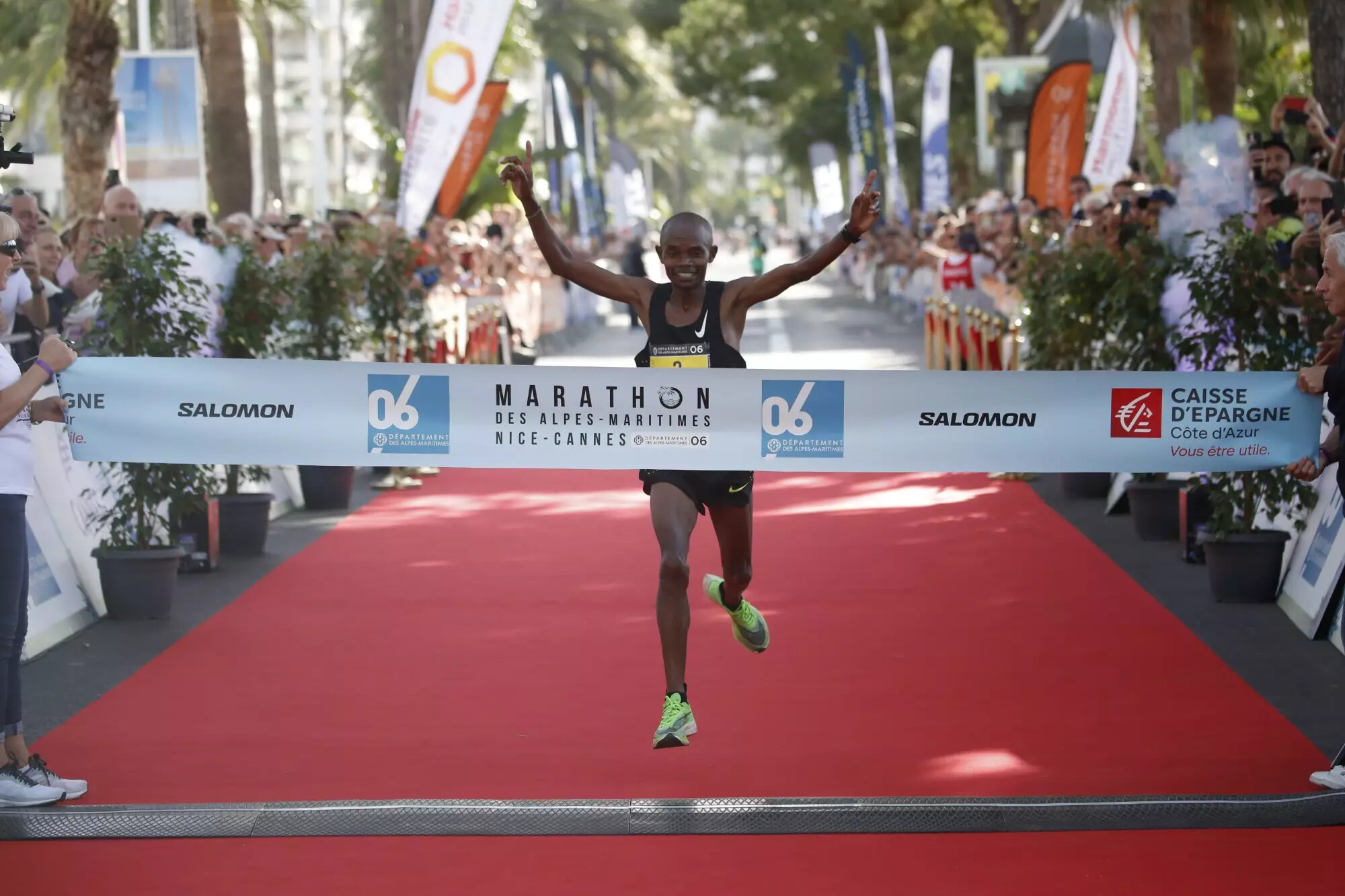
Kipyego holds a personal best of 2:03:55 set while winning the 2021 Generali Milano Marathon in Italy.
The 28-year-old is also the 2019 Abu Dhabi Marathon champion where he clocked 2:04:40. Also in that year, he won silver at the South American Marathon Championships in Buenos Aires, Argentina, clocking 2:05:18.
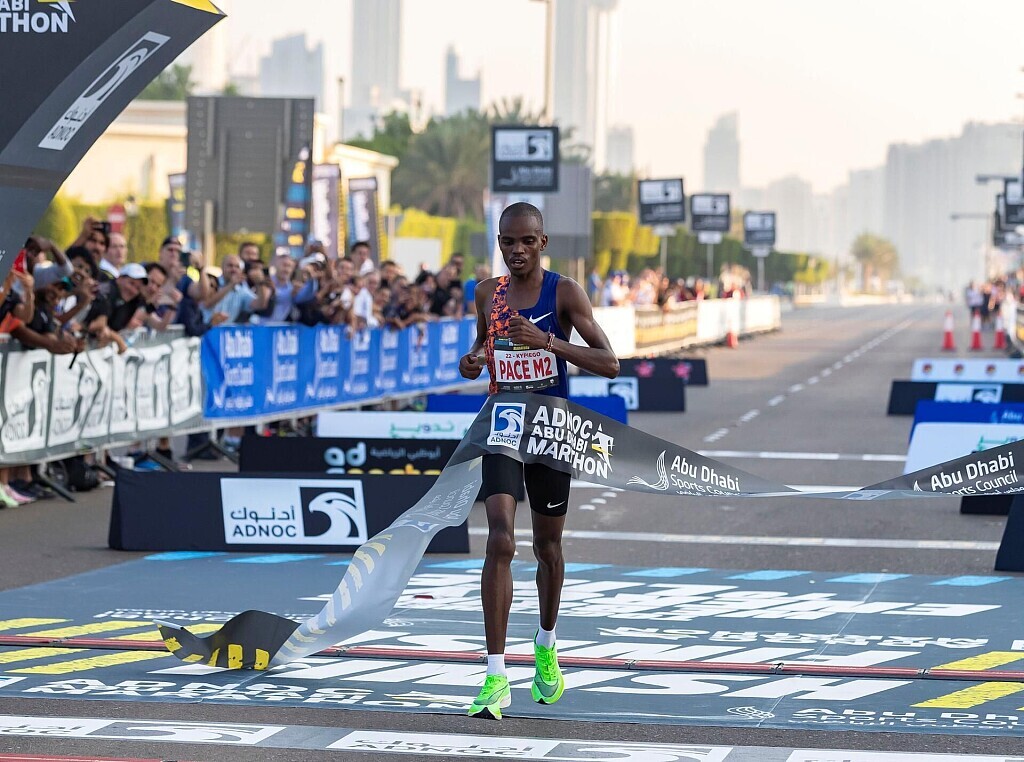
Langat holds a personal best of 2:07:11 set at the Eindhoven Marathon in the Netherlands in 2019, where he placed third.
In 2016, he clocked 2:10:49 to finish second at the Daegu Marathon in South Korea. The 30-year-old is also a bronze medallist at the Adidas Stockholm Marathon in Sweden clocking 2:12:39.
Joining the fray is Bernard Kimani, a bronze medalist at the 2020 Loop Den Haag Half Marathon.
The Ethiopian duo of Mumbai Marathon champion Haymanot Alew and 2022 Rome Marathon champion Fikre Bekele will prove a tough test for the Kenyans.
Also in the lineup is Taiyuan Marathon bronze medalist Hicham Laqouahi of Morocco.
by Teddy Mulei
Login to leave a comment
Rock n Roll Madrid Marathon
Tradition and much Rock ‘n’ Roll is what awaits you if you decide to run the 42K: vibrant, special and incredible journey that along which the flagship race of the capital of Spain. One of the top half marathons in Europe, Rock ‘n’ Roll Madrid EDP 1/2 Marathon does not disappoint. You will be cheered on by thousands of locals...
more...British duo win Manchester Marathon
British duo impress at the 2024 adidas Manchester Marathon
Sunday saw over 32,000 runners take the streets of Manchester to cover the 26.2 miles on one of the flattest courses in the UK.
On a day helped by perfect weather conditions, Adam Clarke from Aldershot, Farnham and District AC took the elite men’s title after completing the marathon in 2:16:29.
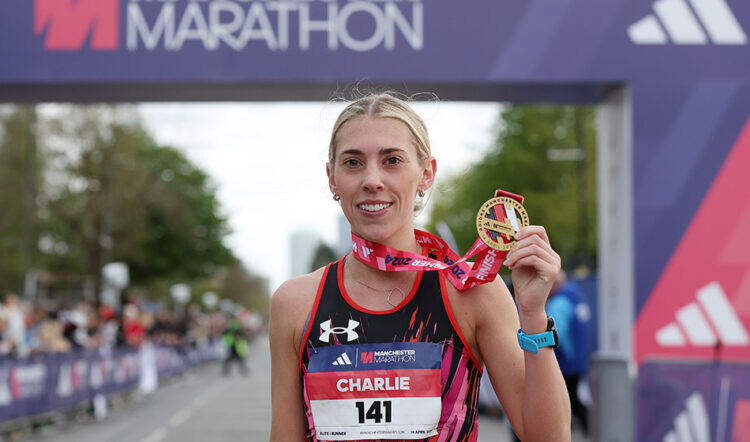
It was a comfortable race for the 33-year-old as he soared ahead from the leaders at the 18-mile mark, completing the race with a lead of just over two minutes.
The Brit has been training alongside his partner, Charlotte Purdue, who was recently named in the first wave of Olympic marathon selections for the British team ahead of the Paris Games.
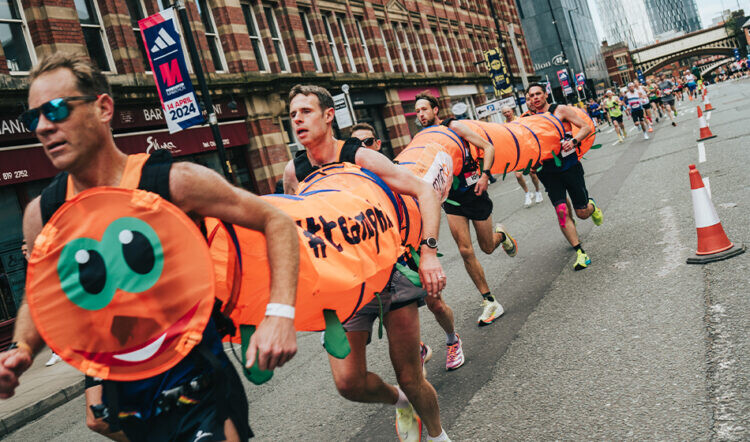
Behind Clarke was Marshall Smith from Ashford AC who finished second with 2:18:22 as Alexander Teuten from Southampton AC took bronze clocking 2:18:37.
Charlie Arnell, from MK Distance Project, made her marathon debut as she was the first woman through the finish with 2:37:12. The Brit ran 77:27 at the Bath Half Marathon in March.
Arnell finished almost five minutes clear of Melissah Gibson from Ealing Eagles Running Club (2:42:09) who finished in second with a great run considering she ran 100km just over two weeks ago at the Sri Chinmoy 100km in Perth.
Gibson, who completed 16 marathons last year, finished second at those trials which booked her a place on the IAU World 100km Championship team set to compete in India later this year.
Finishing in third behind Gibson in Manchester was Anna Lawson from Clapham Chasers, clocking an impressive PB of 2:43:32 having not started with the elite field.
Arnell finished almost five minutes clear of Melissah Gibson from Ealing Eagles Running Club (2:42:09) who finished in second with a great run considering she ran 100km just over two weeks ago at the Sri Chinmoy 100km in Perth.
Gibson, who completed 16 marathons last year, finished second at those trials which booked her a place on the IAU World 100km Championship team set to compete in India later this year.
Finishing in third behind Gibson in Manchester was Anna Lawson from Clapham Chasers, clocking an impressive PB of 2:43:32 having not started with the elite field.
Among the notable figures joining the mass field of participants, the event also saw multiple world records set.
Almost impossible to miss were a group of six participants, Marcus Green, Rich Bidgood, Hugh Tibbs, Nick Wright, David Mills and James Bewley dressed as a caterpillar, setting a world record for the fastest marathon in a six-person costume (2:57:31).
Christian Howett ran the full marathon in a pair of crocs, finishing in 2:58:54 which saw him claim the world record.
by Jasmine Collett
Login to leave a comment
Manchester Marathon
We pride ourselves on welcoming all to take on our 26.2 mile challenge, from some of the world's greatest elite runners, to those who thought completing a marathon would never be possible. Many regular runners find this the ideal event to get a personal best time, whilst everybody finds the incredible Mancunian support throughout the course unforgettable. ...
more...Hillary Bor Smashes His American Record at Cherry Blossom 10-Miler
Ugantda's Sarah Chelangat (51:14) broke the women's course record as American Emily Durgin (51:26) ran fast to finish second.
Two-time Olympic steeplechaser Hillary Bor enjoyed a triumphant return to the nation’s capital, winning his second consecutive USATF 10-mile championship title this morning at the Credit Union Cherry Blossom 10-Miler and lowering his own national record by a healthy 15 seconds in the process. Bor, 34, who was coming off of a strong half-marathon debut in New York City three weeks ago, finished third overall behind Kenyans Wesley Kiptoo (45:54) and Raymond Magut (45:55), clocking 45:56. Another American, Nathan Martin, also ran under Bor’s previous record of 46:11, stopping the clock at 46:00.
“Last year when I ran this race I ran 46:11 and it shows the fitness,” Bor told Race Results Weekly while wrapped in an American flag. “I went to Rabat for my steeplechase. I broke my foot and still ran 8:11. Last summer I was really, really struggling with the injury; I was just rehabbing from June to September.”
But today Bor –who represents Hoka, and like last year wore bib 13– felt healthy mile after mile. In cool and sunny conditions he was in the lead pack of seven at 5-K (14:14), and was the race leader at 10-K (28:36) where eight men remained in contention for the overall title including Kiptoo, Magut, Kenya’s Shadrack Kimining, and Americans Teshome Mekonen and Biya Simbassa. The leaders were averaging 4:38 per mile, but Bor felt the pace slow a little bit past the 10-K mark.
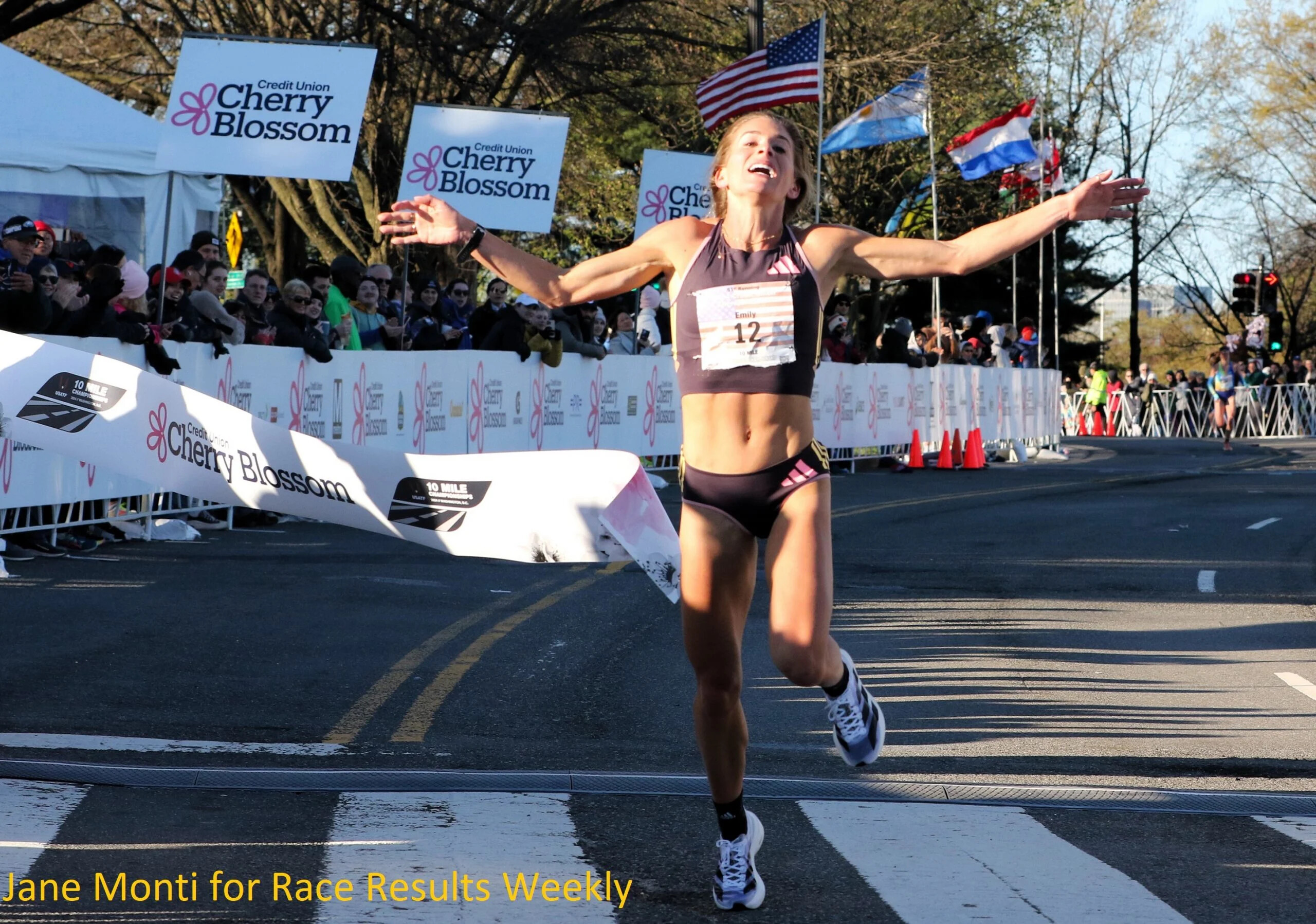
“Between 10-K and 15-K, we slowed down,” Bor continued. “We kind of wait and look at each other.”
With less than a mile to go, four men still had a chance for the win: Bor, Kiptoo, Magut and Martin. The race wouldn’t sort itself out until the final 800 meters where the course goes uphill, turns left, then goes back downhill for the finish line adjacent to the Washington Monument. Bor thought he could take the overall win, but Kiptoo had other ideas.
“The last 800 I was just kind of waiting,” said Kiptoo, who runs for Hoka Northern Arizona Elite. “I was like, everybody is making a move and I was like just good to wait until that last 600, and that’s where I knew I was going to win.”
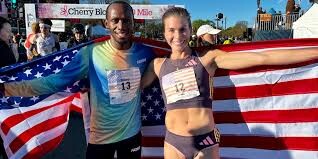
Kiptoo streaked to the finish line to take the overall title, but only had a second on Magut and two seconds on Bor in the end. On the financial front Bor was the big winner, earning $10,000 for the USATF title and another $2,000 for finishing third overall. Kiptoo earned $6,000 for the overall win plus a $1,000 bonus for running sub-46:00. Magut won $3,750 for finishing second overall and running sub-46:00 (time bonuses were only available for the first and second place finishers).
“The fitness is there,” said Bor, who will move back to the track where he hopes to make his third consecutive Olympic team in the steeplechase. “Ten miles has been good to me.”
Today’s race was bittersweet for Martin. The 34-year-old, who finished seventh at the Olympic Trials Marathon in February, ran an excellent race, breaking the national record, but still ended up second in the national championships.
“I was going for the win,” Martin told Race Results Weekly. “A mile to go I tried to take off and gap people and it didn’t work out. But, it was an awesome time.”
In the separate early-start elite women’s race, Uganda’s Sarah Chelangat repeated as overall champion in a new course record of 51:14. The 22-year-old led from gun to tape, and her time was a whopping 50 seconds faster than last year. She earned a total of $7,000: $6,000 for the win and $1,000 for breaking 52 minutes. She said that she had come to win.
“I’m happy,” said Chelangat, who represents Nike. “It is hard when you are running alone, but I’m happy because I won the race.”
Behind her, American Emily Durgin was running the race of her life. Durgin, 29, who represents adidas, moved from a chase pack of three at 10-K (31:45), where she ran with Ethiopians Kasanesh Ayenew and Tegest Ymer, to running alone by the final mile. She was too far behind Chelangat at 15-K to try for the overall win, but she kept pushing because she wasn’t sure if Rachel Smith (Hoka), the recently crowned USA 15-K champion, was catching up.
“The last mile I was more like, I hope Rachel doesn’t come from behind again,” Durgin said, referring to the USA 15-K Championships on March 2 where Durgin finished third. “At that point I was still trying to maintain a good time, and coming into this race I was like, I really want to win a national title, but I also wanted to run a fast time.”
Indeed she did. Durgin’s time of 51:26 was only three seconds slower than Keira D’Amato’s USATF record for an all-women’s race set in 2020 at a special event here in Washington during the pandemic.
“If I ended up second here today and still ran fast I was going to be happy with it,” Durgin continued. “Thankfully, I think I gapped Rachel enough so she wasn’t able to out-kick me this time.”
by David Monti
Login to leave a comment
Cherry Blossom Ten Mile Run
The Credit Union Cherry Blossom is known as "The Runner's Rite of Spring" in the Nation's Capital. The staging area for the event is on the Washington Monument Grounds, and the course passes in sight of all of the major Washington, DC Memorials. The event serves as a fundraiser for the Children's Miracle Network Hospitals, a consortium of 170 premier...
more...Manchester Marathon: Seven Tips for marathon week preparation With Steph Kessell
Event week is fast approaching, which means excitement and nerves are running high!
So, what should you do the week before the adidas Manchester Marathon to make sure you succeed and – most importantly – enjoy the challenge?
We spoke to Team GB Olympic marathon runner and professional adidas athlete Steph Kessell, who shared her 7 tips for marathon week preparation.
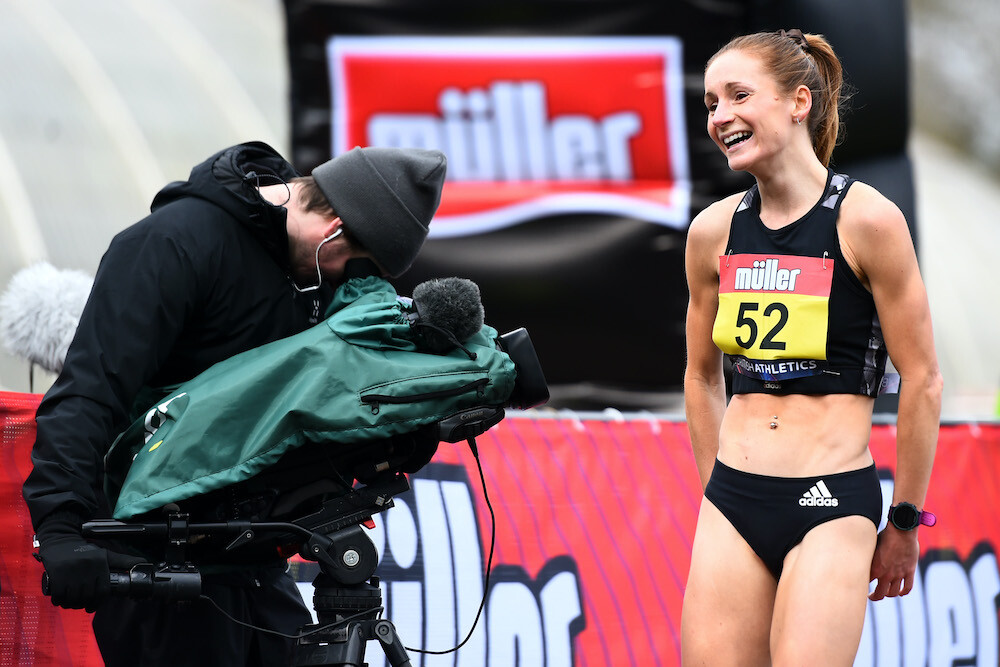
So, grab your notes and don’t miss this great advice from Steph!
1. TAPER
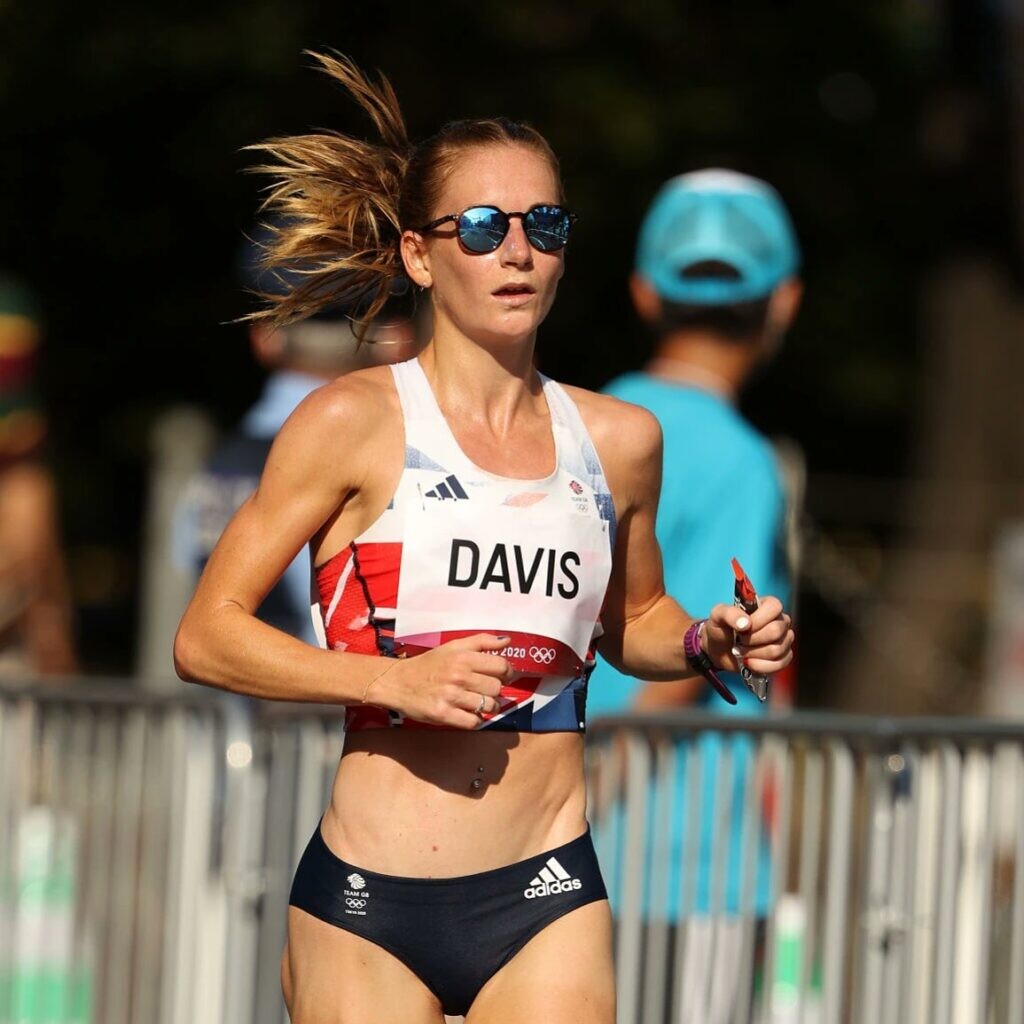
“In the final week, your overall training volume and intensity should have dropped to less than 50% so you can get to the start line of the marathon feeling fresh and raring to go. Your last higher intensity session should be 4-5 days before the marathon and include some marathon paced intervals, but not many of them!
2. SLEEP
“Sleep is the most important recovery aid. Hopefully you have been getting plenty of sleep throughout your training block but during this final week prioritise early nights and aim to get your 8 hours. It is common to not sleep very well the night before the challenge but don’t stress! If you’ve been able to sleep well in the build up then this won’t affect your event. If you can’t sleep, try to stay in bed and relax; this is still good rest and recovery”.
3. HYDRATE
“You want to go into race day feeling hydrated, as dehydration has a negative effect on performance, even if it’s not that warm outside! Carry a water bottle around with you to remind you to drink regularly aiming for at least 1.5 litres a day (NHS guidance). If you have some electrolyte tabs handy then take one daily as well as the evening before the event to ensure you are extra hydrated!”
4. PREP YOUR KIT
“If you haven’t worn your event day kit for a run yet then this is your final chance to test it out. You want to feel comfortable, wear the right amount of layers and avoid chafing. From sports bra, socks, heart rate monitor, race belt or hydration pack, try everything that you plan to wear on the big day, so you can feel confident on the start line.”
5. PLAN YOUR STRATEGY
“At the start of event week write out a plan for the event day. What pace will you start at (or do you plan to join a pacing team to reach your target time?) When will you take on fuel? Where are the water, gels and toilet stops?
When you have planned this out in advance and read over it again and again before the day, then it will help you feel more relaxed, in control and confident. A detailed plan can be a good distraction from the nerves as it gives you something to focus on. Break it down into 5-7 stages and take each part as it comes.”
6. CONSIDER YOUR TRAVEL ROUTE
“Another one that will help ease your nerves! Don’t leave it until the morning of to decide how you are going to travel there. Plan out your route and leave plenty of time to get there. A leisurely start to the day will be more pleasant than a last minute frantic dash trying to find the bag drop and loos!
7. STAY WARM
“Marathons often require an early start which means it can be cold. To combat this, bring a top or jumper you want to donate to charity to keep you warm at the start line. At the adidas Manchester Marathon, you can keep wearing this until the end of the start chute where you will see signs to show you where to donate it as you get close to the start gantry – just make sure that you don’t drop it too early!”.
Login to leave a comment
Manchester Marathon
We pride ourselves on welcoming all to take on our 26.2 mile challenge, from some of the world's greatest elite runners, to those who thought completing a marathon would never be possible. Many regular runners find this the ideal event to get a personal best time, whilst everybody finds the incredible Mancunian support throughout the course unforgettable. ...
more...Rise of the “Illegal” Running Shoes
Super trainers are fast, fun, and maybe a little risky. Here’s what to know about these max-cushioned shoes.
Banned shoes emerged courtside long before they found their way onto a marathon course. Legend has it that nearly 40 years ago, Michael Jordan laced up a pair of red-and-black high-tops in violation of the NBA’s approved uniform colors.
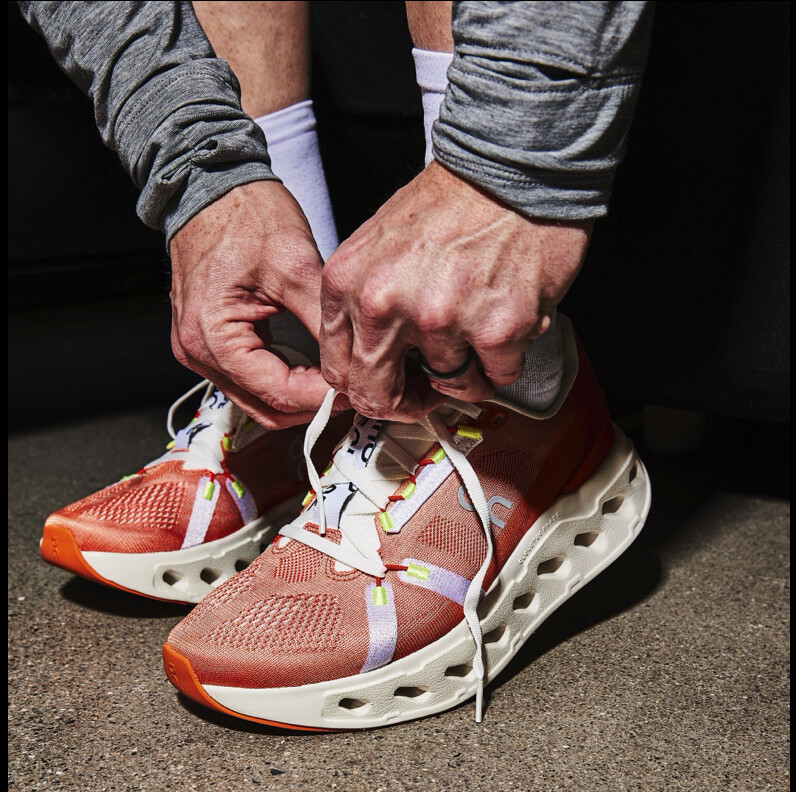
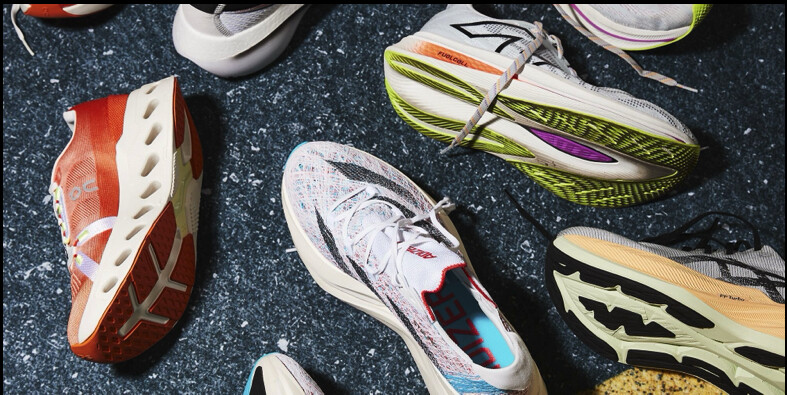
In 2010, the league cracked down again—this time, for reasons besides aesthetics—on a pair of basketball shoes that were shown to increase a player’s vertical-jump height. Today, Nike’s Air Jordan brand is a household name and multibillion-dollar business, and shoemaker Athletic Propulsion Labs (APL) has since released additional banned styles (Superfuture and Concept X) of its performance-boosting kicks.
Though some speculate these bans were mostly crafty marketing, the same can’t be said about the wave of “illegal” shoes that is flooding the roadways on the feet of runners. Super shoes have proven a true performance boon to both elites and recreational runners on race day. Now the tech has trickled down to shoes for daily runs, ushering in super-thick, though still permissible, shoes that have created their own category: super trainers.
What Is a Super Trainer?
Technically, a formal definition doesn’t exist. But we’ll establish some general parameters.
Super trainers share many of the same qualities as super shoes built for race day: a tall stack height, efficient midsole geometry, high-powered super foam, and usually some sort of plate. But these trainers aren’t meant for racing, like a Nike Vaporfly or Saucony Endorphin Elite—they’re designed for everyday mileage.
Super shoes for racing have to balance cushioning and propulsion, but still be lightweight. Super trainers, though, can have beefier constructions that help to extend their life spans. For example, shoe brand On guarantees only four marathons from the Cloudboom Echo 3—that’s little more than 100 miles. Super trainers can handle more mileage, and should have the typical 300- to 500-mile range of a normal running shoe.
To do that, they may have more outsole rubber for durability. Their uppers are usually softer and thicker than a racing shoe’s, as well, with comfortably cushioned ankle collars and tongues. They tie up with sturdier laces and offer a more forgiving fit overall, closer to what you’d expect from a workhorse daily trainer. And, since super trainers aren’t made to toe a starting line, brands can pile on midsole foam in excess of the 40mm limit imposed by World Athletics.
But they’re more than just extremely cushioned running shoes. Super trainers have additional mechanisms and “super foams” geared toward running efficiency and energy return, explained below.
Anatomy of a Super Trainer
If we break down a super trainer into its key components, we see a recurring theme: a stack of super foam in the ballpark of 40mm (or more), a carefully sculpted midsole shape for propulsion, and a plate that harnesses those pieces and holds it all together. This is the tech that puts the “super” in super trainers; it needs to interact with the foot and the rest of the kinetic chain in specific ways to deliver the intended ride and energy return.
Here’s what’s happening inside the midsole under your foot, and how these elements work to boost your stride.
1. Rocker Geometry
When we talk about a rocker sole, we’re describing the curvature of the bottom of the shoe’s sole. Both the heel and the toe curve upward, away from the ground, to give the shoe a more rounded base. The result is a shape like that you’ll find on a rocking chair. This is needed because the shoes are so thick, they don’t bend under the forefoot for a smooth transition during your gait cycle.
Shoe developers can also manipulate the inflection points of the rockers around a runner’s pace and foot strike to potentially manipulate transition time. Usually, you’ll find the most aggressive rocker designs in racing shoes. Still, pronounced rocker soles on super trainers are essential to make transitions comfortable.
→ How do rocker soles work?
Rocker soles in shoes function to mimic the natural rockers of the foot to make us feel more efficient. The foot has three functional rockers—the heel (first), ankle (second), and forefoot (third)—that we use while walking and running. The heel bevel in a shoe prepares the foot to contact the ground and smooths out the shoe’s ride when you land. Forefoot rockers assist movement during toe-off, which generally means the toes and ankle joint don’t have to work as hard.
For some runners, a stiff rocker sole can decrease demand on the calves by transitioning effort upward to the knee and hips. A runner’s experience will depend on their specific biomechanics, where the rocker is placed, and how their footstrike contacts it.
2. Super Foam
Polyether Block Amide, or PEBA, is a common foam compound for super trainer midsoles. (A popular trade name for the material is Pebax, made by a company called Arkema.) It’s the basis for foams like Nike ZoomX, Saucony Pwrrun PB, Puma Nitrofoam, and Asics FF Blast Turbo. Many of those brands leverage the same foam used in their top-tier racing shoes for their super trainer models.
Right now, PEBA-based foams lead the way for energy return. While current research and our own testing indicates that supercritical EVA and TPU blends are also impressive, PEBA has the edge more often than not. Why? It’s lighter than TPU and far softer and bouncier than supercritical EVA. Some iterations are firmer than others, depending on which brand’s flavor you try.
→ How does foam work?
Cushioning serves to absorb shock upon landing and provide overall comfort while running, but it can also return energy to the runner and stabilize the shoe. PEBA foams are especially lightweight, so brands can pile it on—both in thickness and in width—without the same weight penalty applied when using EVA or TPU materials. The additional width is just as important as the height. These shoes often need a wide platform of midsole material to remain stable.
Every brand’s PEBA-based foam compresses at a different rate, with varying amounts of responsiveness, so each offers a unique benefit based on the runner. For example, runners who land with lots of force can bottom out and crush a foam that’s too squishy, so they may prefer a firmer platform. A harder midsole can offer more support without any additional stability elements. On the other hand, a softer foam can provide more comfort, and research suggests that it may have a protective benefit for lighter runners.
Keep in mind that dozens of pieces within a shoe, as well as countless runner-specific characteristics, come together alongside a super foam to deliver its specific ride and response. It’s not always possible to parse each element individually.
3. Plates
Not every super trainer has a plate in its midsole, but it’s increasingly common. That’s because—regardless of whether it’s made from TPU, EVA, PEBA, carbon fiber, or a mix—a plate stiffens the midsole and can add support. It may also give the ride some extra pop, but it largely functions to stabilize the shoe. The Adidas Adizero Prime X 2 Strung, which has a heel stack height of 50mm, requires two stiff carbon-infused plates.
Some shoes need less support and utilize pliable materials with thinner rod constructions or forgo full-length plates for ones that extend only halfway along the midsole.
→ How do midsole plates work?
While plates can add propulsion, research suggests that the true hero is the foam itself. A plate mostly serves to “facilitate motion and add stiffness to the sole to balance out the softer compliant foams,” says Matt Klein, DPT and founder of the Doctors of Running website and podcast.
He explains that the effects of stiff-plated shoes are not clear-cut. “Everything we know [about super trainers] is applied from super shoe and maximal shoe research. These shoes shift work up to the knees and hips. The ankles may do less, but that doesn’t always apply. If the shoe is too stiff, the ankles will actually end up doing more work. But once a midsole gets so thick, it may not need a plate; the amount of material naturally stiffens the ride.”
What Are the Benefits of Super Trainers?
Simply put, these shoes are so much fun to run in. They can lend a bounce to your stride that feels like bounding on a trampoline. And since the springy sensation and high energy return can help you move more efficiently, running fast feels easier.
Plus, a review of 63 research studies concluded that these trainers can also help attenuate shock and dampen some of the hard impacts from training. So, runners recover from hard efforts more quickly; they’ll lace up the next day feeling fresher and less sore than if they’d worn regular running shoes. And for those eager to increase mileage, this may allow some runners to increase their weekly workload with less fatigue and fewer aches and pains.
“These have the benefit of having similarities to super racing shoes. These shoe types certainly increase the capacity of work you can do, so I suspect those running higher miles will probably benefit most from these,” Klein speculates.
But, the recovery boost from super trainers can make it tempting to tack on too many miles too soon or overcook the pace on easy days. “Just because you are less sore does not mean you are at a lower risk for injury. You can still get injured with overdoing things,” Klein says.
Our wear-testers report that they’re able to run faster paces with less effort in super trainers, but it’s still important to keep easy jogs relaxed. Double-check your training log and pull back on the reins if you notice spikes in mileage or intensity outside your typical training volume.
Are There Any Risks to Super Trainers?
Though they feel great, super trainers can have an impact on our natural gaits and biomechanics. “One of the injury risks for this shoe type is that it is so different from normal mechanics and footwear. The current evidence from super shoes and super-max stack-height shoes is that we tend to stiffen our legs in taller, softer shoes,” Klein says. “This is not bad short-term, but some evidence suggests long-term super-max stack-height shoes can actually increase joint loading due to that stiffening.”
“I suspect running in them a ton will cause less joint motion, as the body will stiffen up to find stability as shock absorption isn’t needed. This may be great for a recovery run/faster run, but trying to transition back to normal shoes can take time if you only run in these and super racing shoes.” Klein recommends making the transition slowly to avoid injury and keeping more than one pair of running shoes in your rotation.
“I do suspect that with the workload being shifted up to the knee and especially the hip, there may be an increase in injuries in those areas. The hip still has to work harder being on a softer, less stable surface. So, those with hip instability and strength issues may want to avoid super shoes, at least until these issues have been addressed,” Klein says. New runners should focus on building strength and experience before experimenting with super trainers.
There is little doubt that these shoes have effects at the point where our feet meet the midsoles as well as farther along our kinetic chains. Super trainers shift more of the workload of running to the hamstrings, which means that you won’t engage the calves and lower leg muscles as much. Moving some of that effort to larger muscle groups can be beneficial for some runners, like those who are struggling with calf or Achilles tendon injuries. But those who have a nagging hamstring strain may need to be wary. Whether or not it’s your goal, those upper leg muscles will receive more of a workout.
At the very least, one thing can be said for sure. It’s that all the foam underfoot is going to put a lot of distance between your foot and the ground. This limits the amount of ground feel you receive from the shoe. It can be easier to wipe out if you’re hopping a curb on a night run. And on rain-slicked sidewalks or technical trails, it can be tough to steer a thick and bulky midsole. If you’re prone to ankle rolls or need a keen sense of where and how your foot is landing whenever you touch down, a super trainer might not serve you well.
Will I Really Get DQ’d in a Race?
It depends. If you’re an elite runner, absolutely. But if you’re going for a 3:10 BQ, it’s unlikely. Ethiopian runner Derara Hurisa won the 2021 Vienna Marathon in 2:09:22 but was disqualified when race organizers found he’d raced in the Adidas Adizero Prime X, a different shoe than he’d declared on his prerace form. Another runner at a fall 2023 half marathon was disqualified after winning in the same shoe.
Our Favorite Super Trainers
Running shoes aren’t cheap. Maxed-out midsoles with top-end shoe tech only add to the bill. Most super trainers will cost you $180 at least, and there are options to be had for well over $200.
by Runner’s World
Login to leave a comment
Noah Lyles signs record-setting contract with Adidas
The world 100m and 200m champion, Noah Lyles, has signed a record-setting deal with Adidas that will run through the L.A. 2028 Olympics. The exact dollar figures have not been disclosed, but it has been dubbed the richest contract in track and field since the retirement of Usain Bolt.
Bolt’s contract with Puma in 2013 was estimated at around $10 million a year, and the deal took him to the end of his career, in 2017. Lyles’s new contract is likely in the ballpark.
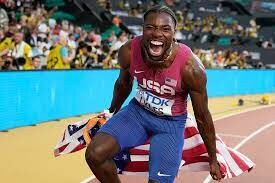
Adidas has been Lyles’s sponsor since the 2016 U.S. Olympic Trials, when he finished fourth in the men’s 200m as a high school senior. Lyles has since become the world’s most dominant sprinter, winning three consecutive World Championships titles over 200m, breaking the 26-year-old American record in 2022 (19.31 seconds) and winning all three sprint gold medals in the 100m, 200m, and 4x100m relay at the 2023 World Athletics Championships in Budapest. He is only the fifth man to accomplish that feat, and the first since Bolt at the 2015 World Championships in Beijing.
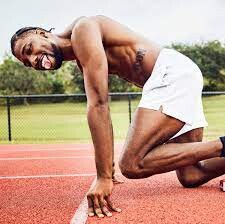
“When I first signed with Adidas in 2016 along with my brother, Josephus, it was like a dream come true for us,” Lyles said in a press release. “Today is just a continuation of that childhood dream.” Lyles shared his vision of achieving all he can on and off the track, and his goal to make a change for future generations. “This is what drives me,” he said.
Lyles has had a fast start to the 2024 season, clocking a new personal best of 6.45 at the New Balance Grand Prix earlier this month, then following up his performance with a 60m win at the U.S. Indoor Track and Field Championships in a world-leading 6.43 seconds, beating his compatriot and former 100m world champion Christian Coleman.
The 26-year-old is the favourite to win gold in the 100m and 200m at this summer’s Paris Olympics. (He has yet to win an Olympic gold medal.) He won bronze in the men’s 200m in Tokyo, losing to Canada’s Andre De Grasse and American Kenny Bednarek.
Along with Adidas, Lyles also has partnerships with Omega Watches, Celsius Fitness Drinks, Comcast and Visa.
by Marley Dickinson
Login to leave a comment
These were the Fastest Shoes of the 2024 Olympic Marathon Trials
Asics, Puma, and Nike had a big day.
The city of Orlando witnessed some amazing performances under a blistering sun, with tickets to Paris at stake. When the dust settled after three loops, six brands placed among the top 10 men’s and women’s finishers. There was a time Nike ruled the roads, but Asics topped them in this year’s Olympic Trials Marathon, with two men and four women making my list below.
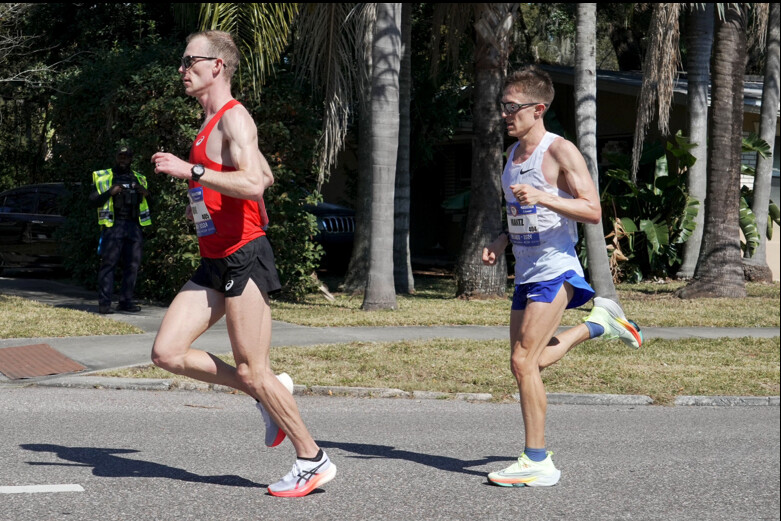
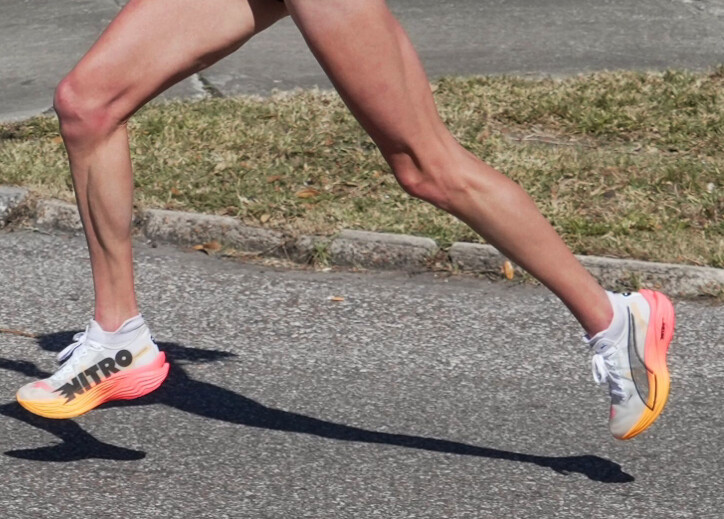
Here’s a look at what the top 10 finishers in both races wore in their quests for a spot on the Olympic team.
MEN’S TOP 10
1st — Conner Mantz, 2:09:05
Nike Air Zoom Alphafly Next% (v1)
Despite two updates to the Alphafly, Mantz (right in the image above) continues to wear the very first version. If it ain’t broke, don’t fix it.
2nd — Clayton Young, 2:09:06
Asics Metaspeed Sky 3 prototype
Young (left, above) looks to be wearing the newest, unreleased Metaspeed Sky. Asics has three “development” shoes (prototype) approved by World Athletics for use in competition, currently. This colorway looks a lot like the existing Metaspeed Sky+ and Edge+, but when we zoom in closer we don’t see any labels, and the sidewall of the midsole looks different than the shoe you can buy now.
3rd — Leonard Korir, 2:09:57
Nike Air Zoom Alphafly 3
Korir laced up the latest Alphafly and might just have run himself onto the squad headed for Paris. We reviewed the Alphafly 3 recently.
4th — Elkanah Kibet, 2:10:02
Asics Metaspeed Edge 3 prototype
Kibet is wearing a prototype, like Young. His, however, appears to be the Metaspeed Edge. You can see the ridge on the sidewall of the forefoot swoops down low toward the sole of the shoe. The Edge’s plate curves lower, allowing for more foam between your foot and the plate than in the Sky.
5th — CJ Albertson, 2:10:07
Brooks Hyperion Elite 4 prototype
It looks like CJ is wearing Brooks’s top racing shoe, which was just announced. But, the company also has a “Hyperion Elite 4 RD.010” prototype shoe that was approved by World Athletics for use in competition just two weeks ago. It’s likely he wore that version (we don’t have details yet) but the outsole of CJ’s race shoe has gray rubber, whereas the newly announced version has a web of black and orange rubber.
6th — Zach Panning, 2:10:50
Brooks Hyperion Elite 4 prototype
Panning seems to be wearing the same prototype of the Hyperion Elite 4 that CJ wore.
7th — Nathan Martin, 2:11:00
Nike Air Zoom Alphafly 3
8th — Josh Izewski, 2:11:09
Nike Air Zoom Alphafly 3
9th — Reed Fischer, 2:11:34
Adidas Adizero Adios Pro 3
Fischer rolled to a top-10 finish with an all-white version of the Adios Pro 3. Adidas does not have any prototypes on the list of approved shoes as of race day.
10th — Colin Bennie, 2:12:17
Brooks Hyperion Elite 4 prototype
Bennie seems to be wearing the same prototype as Albertson and Panning.
WOMEN’S TOP 10
1st — Fiona O’Keeffe, 2:22:10
Puma Deviate Nitro Elite 3
Not a bad first effort for O’Keeffe and Puma. Fiona won her first marathon in record fashion. And Puma claimed victory with the Deviate Elite 3 on the first day it was approved for use in competition. The World Athletics approved shoe list shows the 3 green lighted for use as a “development” as of Feb. 3, 2024.
2nd — Emily Sisson, 2:22:42
New Balance FuelCell SuperComp Pacer
New Balance has a new super shoe, the FuelCell SuperComp Elite v4, out. But Sisson laced up the thinner, lighter Pacer. It’s a shoe most of us recreational runners might only grab for a 5K or 10K (maybe). Seems like it’s working just fine for the American record holder.
3rd — Dakotah Lindwurm, 2:25:31
Puma Deviate Nitro Elite 3
Lindwurm also wore the new Puma racer. Hey, Puma, need me to re-send my address?
4th — Jessica McClain, 2:25:46
Nike Vaporfly 3
This marks an insane shift in racing footwear. On the men’s side, four of the top 10 runners laced up Nike. Only McClain, the team’s first alternate, cracked the top 10 women’s runners wearing the swoosh. Folks, we’re living in the golden age of running shoes. Pick the pair that fits and feels best—and rip it.
5th — Sara Hall, 2:26:06
Asics Metaspeed Edge 3 prototype
Like Kibet, it appears Hall wore the Metaspeed Edge prototype.
6th — Caroline Rotich, 2:26:10
Asics Metaspeed Edge+
Unlike Hall, Kibet, and Young, Rotich’s shoe seems to be the current Metaspeed Edge+ that you can buy right now.
7th — Makenna Myler, 2:26:14
Asics Metaspeed Sky 3 prototype
Myler is likely wearing the Sky 3 prototype—again, check out that ridge in the forefoot; it’s closer to the foot. One heck of a day for Asics, if I do say so.
8th — Lindsay Flanagan, 2:26:25
Asics Metaspeed Edge 3 prototype
N + 1.
9th — Emily Durgin, 2:27:56
Adidas Adizero Adios Pro 3
Durgin held onto a top-10 finish wearing Adidas’s most popular marathon racer.
10th — Annie Frisbie, 2:27:56
Puma Deviate Nitro Elite 3
Asics packed four runners in the top 10, but Frisbie finished strong to give Puma a triumphant trio, all wearing the new Deviate Elite 3.
by Runner’s World
Login to leave a comment
Golden girl Gerda eyes fifth Dubai Marathon 10km title
With four successive victories to her name in the annual 10km Road Race, golden girl Gerda Steyn will be red-hot favorite to make it five-in-a-row when the Dubai Marathon gets underway on Sunday.
Held under the auspices of the Dubai Sports Council, the Dubai Marathon’s 10km event is always the most popular race in terms of athlete number. But if any woman is to wrestle the crown from Steyn, they will need to be in the form of their lives.
“I’ve been very fortunate to have enjoyed a wonderful year in 2023 with the three most memorable days being when I won the Two Oceans Marathon and the Comrades Marathon in South Africa, followed by running a new marathon national record in Spain in December,” said the modest 33-year-old Dubai-based South African.
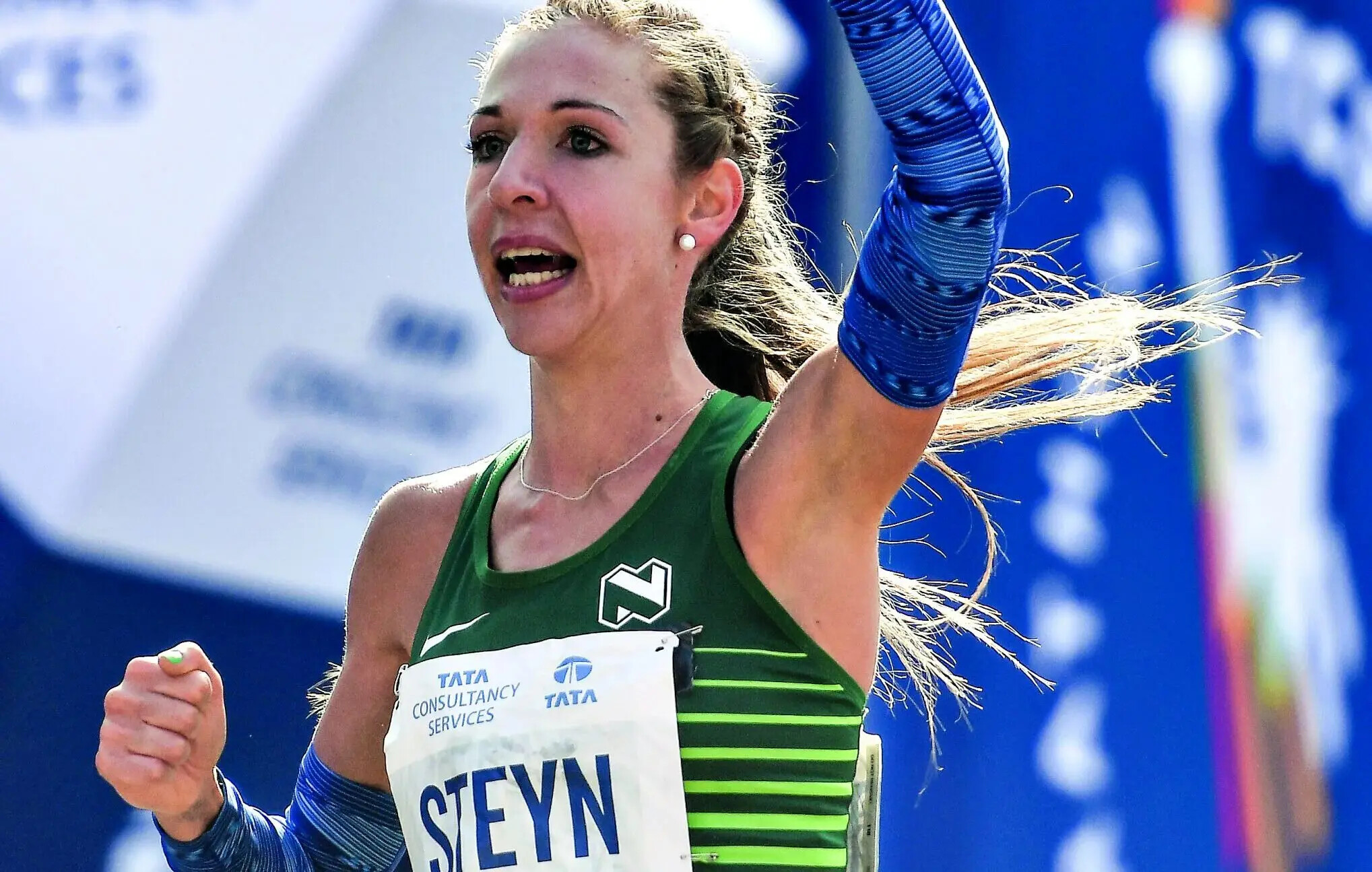
At the Valencia Marathon less than a month ago, Steyn finished 11th in a time of 2:24:03 to set a new South African national record at the distance. Although she will kick off the 2024 season with the shorter 10km distance in Dubai, it’s hardly a surprise considering her near ownership of the event.“I’ve run the Dubai 10km race every year since 2018 and have won it four times, so I can’t think of a better way to start the new year than to be a part of it once again,” she added.
“My aim is to win the 10km again in 2024 and even though I won’t be running the full marathon itself, I still get to be part of the iconic event.”
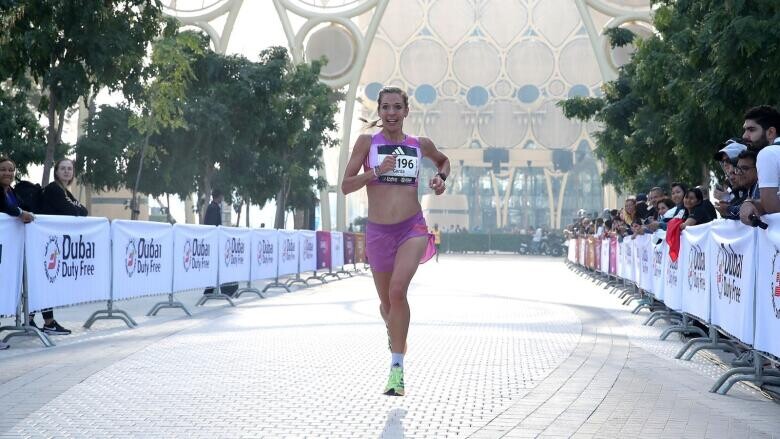
The Dubai Marathon launches what will be a busy year for the adidas runner.
As well as committing to the defense of her Comrades Marathon and Two Oceans Marathon titles in Durban and Cape Town respectively, South Africa’s fastest ever female marathon runner will also represent her country at the 2024 Olympics in Paris.
It will be her second Olympics having finished 15th in the Marathon in Sapporo in 2021.But before all that, there is the small matter of the defence of her Dubai Marathon 10km title on Sunday. Last year, Steyn won in a time of 33:47 over an unfamiliar route at EXPO City Dubai.
But with the 23rd edition of the Dubai Marathon taking place over the fast and flat roads of Umm Suqeim, the quicksilver South African may well have her eyes on the personal best of 32:24 she set over the same surface the last time it was staged there in 2020.
Meanwhile, The Dubai Sports Council has discussed the latest preparations for organizing the 23rd edition of the Dubai Marathon, the oldest long-distance running race in the Middle East.
The latest preparations were discussed during a meeting held by Saeed Hareb, Secretary-General of the Dubai Sports Council, Nasser Aman Al Rahma, Assistant Secretary-General, Peter Connerton, Event Director, and Alan Ewens, Media Director of the race.
Hareb expressed his confidence in the staging of the Dubai Marathon, especially since it features cooperation between a number of government agencies and the organizing committee to ensure its success and provide the best atmosphere for thousands of international participants coming to run a race they look forward to every year.
The 2024 Dubai Marathon is supported by the Dubai Sports Council, adidas, Dubai Duty Free, EXEED by Al Ghurair, the Channel 4 Radio Network, the ITP Media Group, Bisleri Water, Biofreeze, Dubai RTA, Dubai Police, Al Ameen Service, Dubai Municipality and SIRO One Za’abeel, the first fully integrated Fitness + Recovery hotel in Dubai.
by Gulf Today
Login to leave a comment
Dubai Marathon
In its relatively brief history (the race was first held in 2000), the Dubai Marathon has become one of the fastest, most respected and the most lucrative marathon in the world in terms of prize money. Each year thousands of runners take to the roads in this beautiful city in the United Arab Emirates (UAE) for this extraordinary race starting...
more...Shoe tech advances is the key reason why the winning time at the Paris Olympics marathon could be under two hours
Racing shoe tech advances is helping bring the sub-2 hour marathon ever closer, but will barrier finally be broken in France?
The winning marathon time at the 1924 Paris Olympics was more than 40 minutes slower than the 2:00:35 run by Kelvin Kiptum in Chicago in 2023
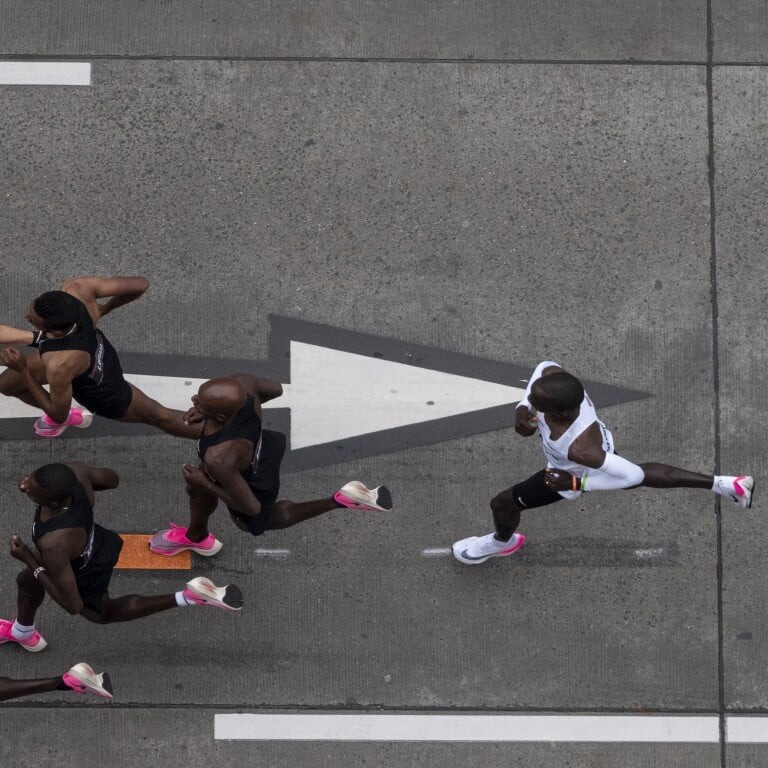
With shoe technology advancing by the day, an official marathon time of below two hours is seemingly just months away.
A century after the 1924 Paris Olympic men’s marathon was won by Finn Albin Stenroos in two hours, 41 minutes and 22 seconds, next year’s Games in the same city could feature the first official sub-two hour time for the distance after 2023 saw more barriers smashed.
Kenya’s double Olympic champion Eliud Kipchoge, who dipped under two hours with his unofficial Ineos challenge run in 2019, had dragged the record down to 2:01.09 in 2022.
But in October this year compatriot Kelvin Kiptum stunned the sport when the 23-year-old took more than half a minute off the great man’s mark to post 2:00.35 in Chicago to kick-start talk of when, rather than if, a legal sub-two would arrive.
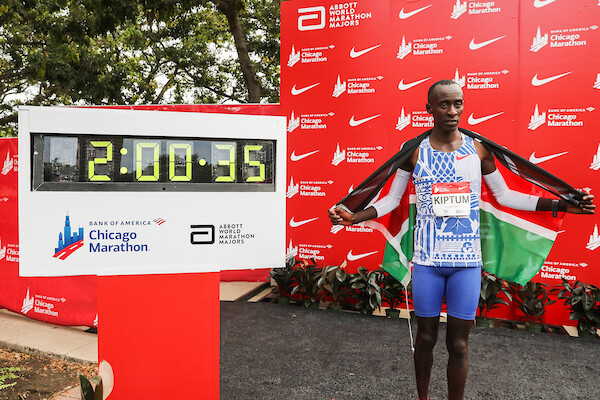
That came two weeks after Ethiopia’s Tigst Assefa took more than two minutes off the women’s record with 2:11.53 - a time that would have been the men’s world record until 1967.
Talented and hard working though both champions are, the key component of their incredible times was unquestionably the latest developments in shoe technology that has made comparisons with earlier eras, even last decade, largely meaningless.
(First photo) Adidas CEO Bjorn Gulden, holds a shoe worn by Ethiopia’s Tigist Assefa when she set a new women’s world record at the Berlin Marathon.
Kipchoge’s performances opened the world’s eyes to the condensed foam, carbon-plated super shoes Nike claimed could increase running efficiency - the amount of oxygen consumed per minute - by 4 per cent.
Soon, every major race start line was awash with the trademark dayglow Nike Vaporfly and Alphafly.
Although the sport’s governing body, World Athletics, tried belatedly to rein things in with their stack height regulations in 2020, the genie was out of the bottle and it did not take long for other companies to close the gap.
Assefa ran Chicago in a new Adizero Adios Pro Evo 1 shoe, retailing at just under US$500. It conforms to the 4cm height rule but, at 138 grammes, weighs about 40 per cent less than any previous Adidas racing shoe.
The latest theory around the shoes is that the carbon plates have only a limited effect and it is the “barely-there” weight, combined with the energy-return cushioning and “rockers”, that prevents the fatiguing impact of previous thin-soled “racing flats” and allows athletes to maintain their optimum speed for longer.
Adidas says its newest shoes are “enhanced with unique technology that challenges the boundaries of racing” and highlight a foot rocker that it claims triggers forward momentum and further enhances running economy.
Nike is not about to hand over the baton just yet, however, as Kiptum achieved his record in yet another prototype, the Alphafly 3, also worn by women’s Chicago champion Sifan Hassan, who took almost five minutes off her personal best with the second-fastest women’s time ever of 2:13.44.
It was a similar story in several athletics events at the 2021 Tokyo Olympics where a combination of a fast track and revolutionary spikes produced some jaw-dropping records.
Such is the sport’s seeming obsession with times rather than races that the pressure to keep installing faster tracks and allowing ever more beneficial shoes shows no sign of abating.
The Paris Olympic athletics programme will undoubtedly produce magical moments, but it is photographs of athletes posing by their world record time on the finish line clock that usually claim the front pages.
Login to leave a comment
Paris 2024 Olympic Games
For this historic event, the City of Light is thinking big! Visitors will be able to watch events at top sporting venues in Paris and the Paris region, as well as at emblematic monuments in the capital visited by several millions of tourists each year. The promise of exceptional moments to experience in an exceptional setting! A great way to...
more...Can AI Find Your Perfect Fitting Running Shoe?
This new tech startup aims to provide an expert fit, all from your phone
A shoe can make or break your run, no matter your fitness level. Ill-fitting shoes can cause blisters so bad you can’t run anymore, while some shoes just don’t serve your specific gait, compromising your performance.
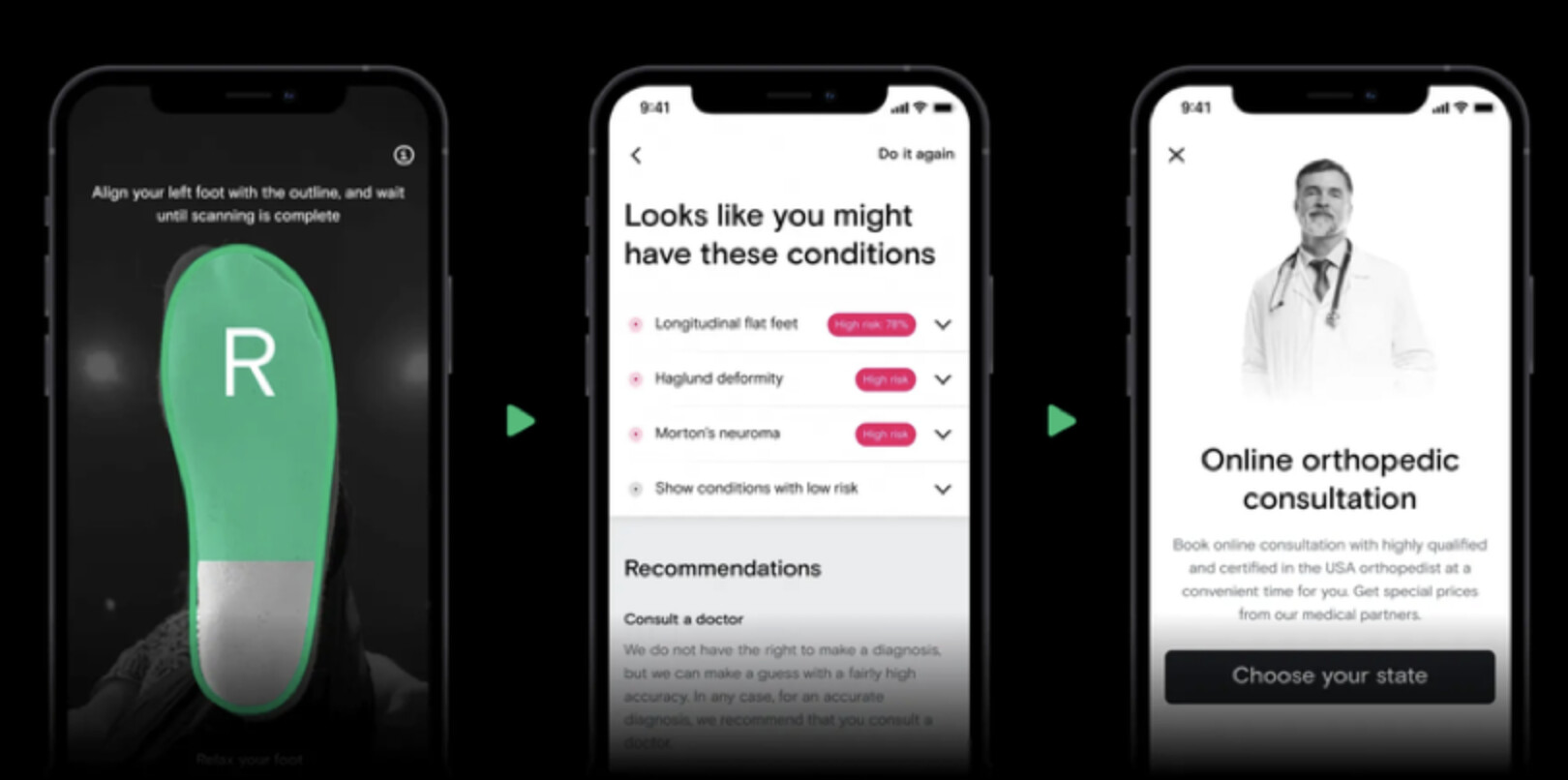

That was the case when pro marathoner Nell Rojas made headlines for breaking her coveted contract with Adidas. She cited issues with Adidas’ Adizero Adios Pro 2 for the split in 2022.
“I know that shoe is an amazing shoe, and I know world records have been set in it and marathon winners run in it, but for whatever reason it didn’t work for me and my stride,” she told Women’s Running. “I raced in it and didn’t have good results. I was having a hard time recovering and dug myself into a huge hole, and I think a lot of it was because of the shoe change earlier this year.”
What if runners could save themselves from training in shoes that are ultimately bad for them? What if a software, powered by artificial intelligence (AI), could recommend the perfect shoe for you?
While pros are bound to a single brand, the rest of us are burdened with choice. Do you choose whatever your speediest friend is wearing? What looks the best? Do you choose one that has excellent online reviews? Or do you visit a running shoe store and rely on a random salesperson’s expertise?
Maybe you’ve done all of the above and still felt disappointed with the performance of your footwear. For many runners, finding the right shoe is tricky and frustrating. It’s also paramount to success in the sport.
“It’s the only equipment for running that needs to be perfect,” says Tim McConnell, who owns West Seattle Runner alongside his wife, Lori. Together, they’ve been fitting runners in shoes for more than a decade. Lori is also a certified running coach and licensed mental health counselor. They agree that wrong shoes can not only make running uncomfortable, but they can also cause serious injuries up the chain.
So why is the perfect shoe so elusive? For one, just getting sizing correct is a complicated mess. To start, our feet change over time. As we age, feet flatten as ligaments and connective tissue loosen, causing feet to change size. Hormones during pregnancy do the same.
“Even as you get into that run, your foot swells,” says Mark Bouma, a Seattle-based physical therapist. This means your feet will be smaller in the store when you’re trying on shoes than they will be out on the pavement.
Sizes are also not precise and vary from brand-to-brand. In women’s running shoes, for example, it is estimated that 40 percent are not true to label size according to data recorded from Volumental–a company that makes 3D foot scanners for shoe stores.
Many running stores are equipped with 3D foot scanners that measure heel-to-toe-length, ball width, ball girth, heel width, arch height, and instep height. The scanners help store employees recommend shoe size, can generate custom insoles based on the readings, and use AI to recommend shoe models.
While this is a quick, simple, and free service that stores provide to the community, it’s an extra step that some consumers aren’t interested in or otherwise don’t have access to if they don’t live near a retailer. Instead, consumers purchase shoes online, hope they fit, and return if they don’t. It’s a cycle that causes friction for all parties–retailers, manufacturers, and consumers.
No one is surprised to hear that the trend of online running shoe shopping is not likely to go away. As Forbes reports, eCommerce continues to grow steadily and is expected to balloon to 24 percent of all retail sales by 2026.
What if there were a way to buy shoes online better? According to research from Salesforce, product recommendations powered by artificial intelligence can potentially affect $194 billion in online sales.
Artem Semjanow, founder and CEO of the running shoe app Neatsy.ai, agrees that artificial intelligence and augmented reality can ease pain points for shoppers. His app allows users to scan their foot from their phone to receive the kind of recommendations they’d get in a running store as well as physical therapy recommendations related to any pain they are having.
As someone who suffered from debilitating foot pain, Semjanow wanted to create a tool that would help people, not just runners, get access to affordable foot care and personalized shoe recommendations. Prior to founding his tech company, Semjanow was at Prisma Labs developing AI photo-editing software.
“I decided that I got tired of improving people’s selfies,” he says. “It’s a cool job, don’t get me wrong. And people pay for self-improvement. But I wanted to make something more meaningful for the world.”
Through his own experience and what he knew from doctors in his own family is that when you go in with a problem, doctors will always try to take a more conservative approach to addressing your problem before suggesting an invasive treatment. What if he could develop an app that went through those conservative approaches to save users time and money?
What that looks like on Neatsy.ai is giving guidance about basic foot ailments, suggesting physical therapy treatments, and recommending the shoes that you can purchase from the app.
The system uses augmented reality to create a 3D scan of the foot and artificial intelligence to make the recommendations and answer questions users have, similar to ChatGPT. Arguably more reliable than ChatGPT, Neatsy.ai has been trained using real medical cases in partnership with Harvard Foot and Ankle Research and Innovation Laboratory.
“They helped us collect the anonymous set of data of different cases for people—pretty much all the 3D foot shapes, and what real doctors have thought that the problem might be and what treatment and shoes doctor recommends in that particular case,” says Semjanow.
The team will soon publish research on the process of training AI using a mix of in-app scans and obtained medical cases.
When a store associate is conducting a shoe fitting, they are taking a lot of qualitative data into consideration: your running goals, your history with injury. They are watching you run in the shoe to see how your gait is affected.
“We even listen to the sounds of the runner,” says Lori McConnell. If the footfall is particularly loud or slapping, that might lead them to recommend a different shoe.
Shoe fit is an intricate puzzle when you consider the dynamic nature of the foot, says Craig Fox, D.P.M., an Illinois-based podiatrist. Then you add in the extra layer of performance goals or other tangible variables. “We know the size of your foot changes dynamically as you walk or run. What if you change socks? That may have an effect on shoe size. Even with 13 points of measurement, the challenge persists.”
It’s unlikely that any scan will understand how your foot moves under load, unless it is taken in motion, says Bouma. “If it’s just scanning your foot, you really don’t know what the other joints around the foot are doing.”
Another complication comes in the changing landscape of shoe design itself. Jon Teipen, principal footwear product line manager at Brooks, notes that shoes are more dynamic than they once were, which changes what we know about fit.
“You’re looking at more engineered materials that are a lot more intelligent, so they just have a little bit more give to them,” he says. In older designs, shoes would have a repeating mesh pattern with polyurethane (PU) overlays that made the upper more static and less accommodating to different feet. “[Now,] as you put your foot in there, the materials can expand out a little bit more than they used to be able to with all the extra overlays on it.”
He believes that extra level accommodation gives AI an advantage in spitting out a closer-fitting recommendation, as long as the internal measurements are right.
“On the other side, too, is that the materials have some flexibility and stretch to them. There’s some variants of the actual shoe structure itself that the program’s probably not going to be able to decipher either,” says Teipen. Dr. Fox notes that the same issues persist with foot scanners in store that are designed to narrow in on foot size and not much more. “Just because the shoe ‘fits’ on your foot, does not mean it is the best footbed for your foot type.”
Even running store owners agree in regard to the tech they use everyday.
“The scan gives us credibility,” says Tim McConnell who is used to customers not believing him when he suggests they’re wearing the wrong sized running shoe. But many of his recommendations are based on his experience and not necessarily because of the technology. “A footscan might get you halfway there,” he says.
A lot of that push back has to do with lack of education–adults not understanding that their feet can get bigger–and what industry experts call ‘vanity sizing’ –consumers holding on to a standard of femininity or masculinity attached to confining within a certain shoe size.
Teipen also sees how a technology like AI can help runners get beyond vanity sizing issues. “Tools like this that are a little bit more objective, might be good for people to get over any mental barriers they have,” he says.
Semjanow also recognizes the limitations of Neatsy’s use of AI in such a broad category. With so many new shoe models released each year, the app is unable at the moment to recommend the newest, perhaps most advanced shoe models, as it relies on user reviews to generate recommendations.
“For example, HOKA introduced a new running model for summer 2024, and we just don’t have any data for that,” says Semjanow. Which means app users are more likely to be given recommendations for older models, rather than new ones. “We want to establish more partnerships with shoe brands to actually get the data for different kinds of shoes before they are launched.”
It’s important to note that the company does receive a commission from shoes sold on the platform. But according to Semjanow, the commission is the same across the board, so there is no incentive for them to push one brand over another.
AI may not be the perfect shoe conversion tool right now. But there are other ways AI will revolutionize the running shoe industry.
“The future of footwear lies in reimagining the selection process, focusing not on the shoe as a whole but as a sum of its parts,” says Dr. Fox. “Analogous to selecting eyeglasses, where frames are chosen and lenses are made to specifications, the concept of prioritizing the insole before the shoe itself could revolutionize the shoe buying experience.”
Brooks is in the early stages of utilizing AI in a generative design process.
“It’s starting to open up where we can move faster,” says Taipen. When working on a blueprint of a shoe, for example, shifting from a 2D to 3D model, these technologies allow them to modify characteristics faster than the modifying hand drawn designs. “The hope is, as we move into the future, to be able to do actual digital testing.”
With the forthcoming Hyperion Elite 4, for example, Brooks has partnered with Arris, a manufacturing tech company focused on performance products, for the shoe’s carbon plating.
“What they’re able to do is lay down each fiber individually, so they can add a little bit more stiffness in some spots, a little bit more flexibility in some spots. And then they can run it through their computer and test it and see what the performance and functionality would be. So they can do a lot of iterative testing before actually even building a part.”
Teipen is encouraged that generative design in AI will only get better.Likewise, Dr. Fox is hopeful about AI and AR in shoe manufacturing and retail.
“After three decades in podiatry, I’ve witnessed countless patients lugging shopping bags filled with shoes that didn’t quite work. Their stories often echoed the frustration of finding a temporary solution, only to return to the online marketplace in search of the elusive perfect shoe–the unicorn of footwear.”
by Outside Online
Login to leave a comment
Ethiopia’s Dera Dida set to defend Dubai Marathon crown
Dubai: Less than 10 months after winning the 2023 Dubai Marathon, Ethiopian star Dera Dida has confirmed she will return to the UAE to defend her Dubai crown on January 7.
Earlier this year, Dida — wife of former Dubai Marathon winner and Marathon World Champion Tamirat Tola — stormed through with two kilometres remaining to take the women’s event in 2h:21:11 at Expo City Dubai, while her brother-in-law Abdisa Tola made it a unique family double by clinching the men’s title.
But while Abdisa misses out on a Dubai title defence through injury, fellow adidas runner Dera Dida will be back on the start line on January 7 as she bids for a second successive title in the UAE, this time over the fast and flat roads around the iconic Burj Al Arab and Jumeirah Beach Road area.
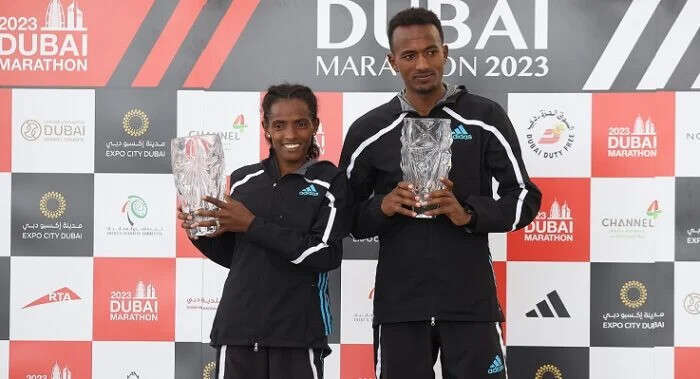
Familiar ground
It’s familiar ground for Dida who competed over the route in both 2018 and 2020 finishing seventh and fifth respectively. It is the first time since 2020 the event will be back at what has long been seen as its natural “home” and Dida will start as firm favourite following one of the most successful years of her running career.
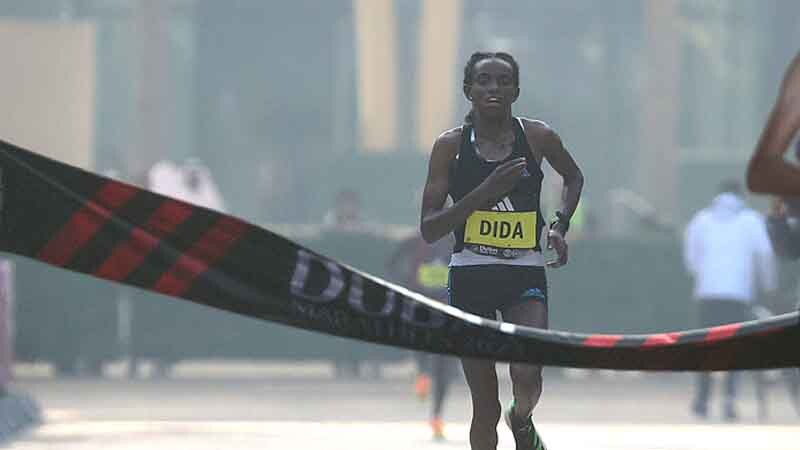
In 2023, she recorded personal bests at both 10,000m and Half Marathon, while seven months after winning in Dubai, the 27-year-old Ethiopian lowered her marathon personal best to 2:19:24 in Berlin and is looking forward to maintaining her upward momentum over the classic distance.
“When I took the lead in Dubai, I was sure I’d win,” said Dida, a two-time Ethiopian National Champion at 5,000 and 10,000m and a two-time World Cross Country Championship silver medallist. “It was a wonderful race and, of course, it was very emotional when I realised Abdisa had also won.”
Remarkable achievement
Dubai Marathon race director Peter Connerton added: “It is always a great pleasure to welcome back our former champions. To have two family members win was a remarkable achievement and we are delighted to have Dera Dida return to Dubai for the first big international marathon of the new calendar year.”
Runners who would like to follow the elites and who have still not registered for the three-race event, can sign up for the Marathon, the 10km and the 4km Fun Run at dubaimarathon.org.
Login to leave a comment
Dubai Marathon
In its relatively brief history (the race was first held in 2000), the Dubai Marathon has become one of the fastest, most respected and the most lucrative marathon in the world in terms of prize money. Each year thousands of runners take to the roads in this beautiful city in the United Arab Emirates (UAE) for this extraordinary race starting...
more...Boston Marathon unveils Olympic-inspired 2024 Celebration Jacket
On Friday, Adidas and the Boston Athletic Association (B.A.A.) unveiled the highly anticipated Celebration Jacket for the 2024 Boston Marathon. And as they say, beauty is in the eyes of the beholder.
The jacket, designed by Adidas, is a tribute to the historic marathon and holds symbolic significance for the 2024 Olympics in the French capital. According to the B.A.A., the colour scheme is a harmonious blend of red, white and blue, drawing inspiration from the French flag and the upcoming Paris Olympic Games in August.
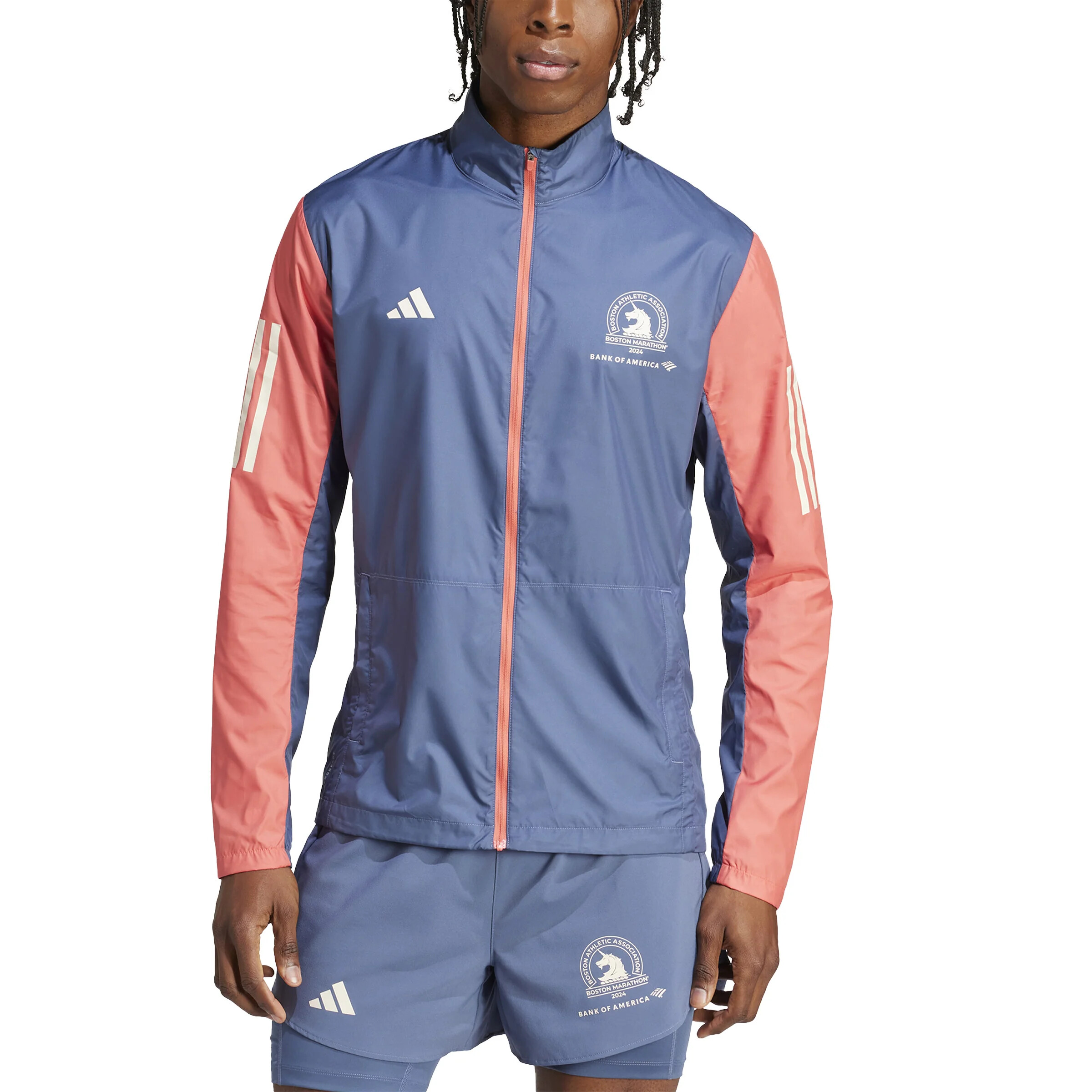
The 2024 jacket is different than some of the more recent and traditional Boston Marathon designs with its unconventional tri-colour look, showcasing two contrasting colours on the sleeves and body. Rather than drawing direct inspiration from the French flag or the upcoming Paris Olympics, we think the jacket bleeds the vibrant styles of the 80s. This is also the first year the new title sponsor, Bank of America, is featured on the jacket–below the B.A.A. logo crest.
Adidas points out that they’ve incorporated softer shades of red and blue, complemented by the B.A.A.’s distinctive blue and gold colours. This infusion of Boston-centric colours adds a “local touch” to the design, celebrating the achievements of the marathon runners. The Celebration Jacket will be released online exclusively at www.adidas.com on December 15 (U.S. only).
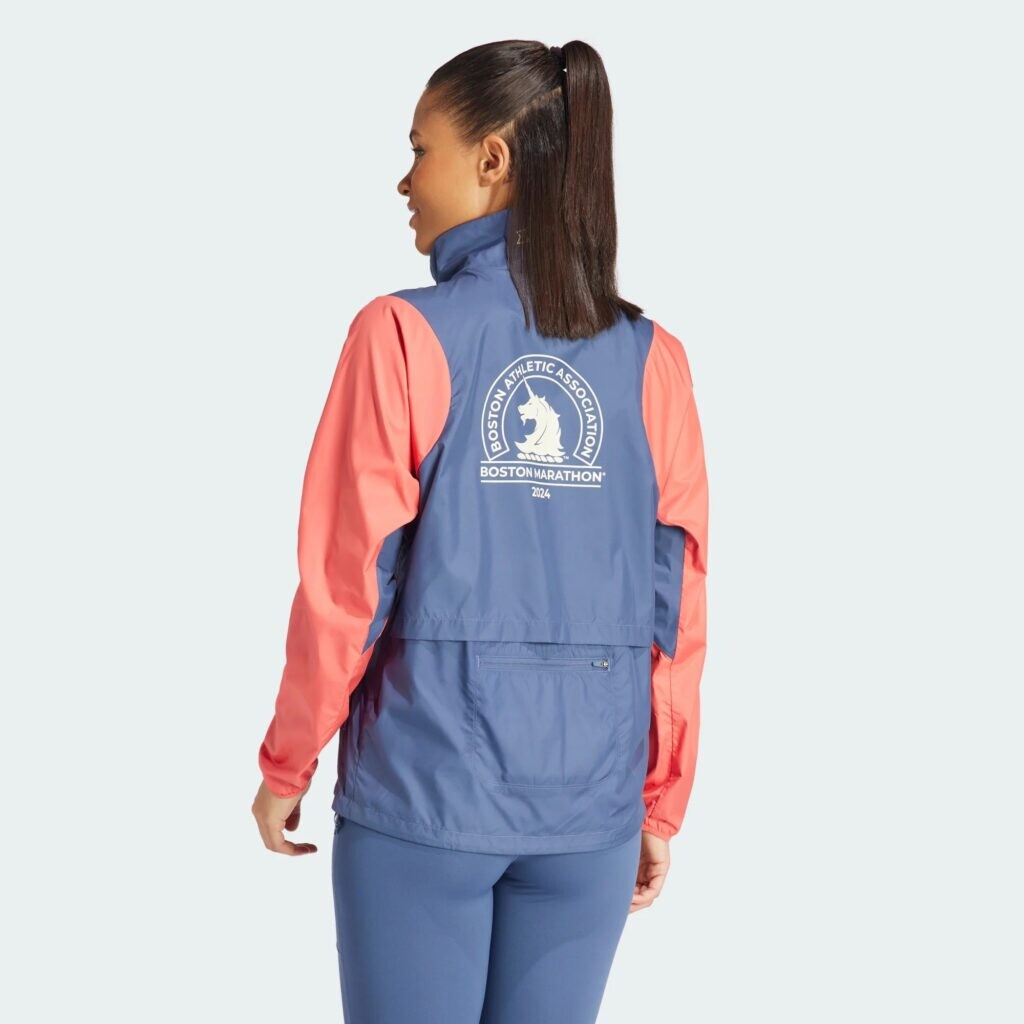
“The Boston Marathon is a pinnacle moment in the sports world,” Jennifer Thomas, VP of global sports marketing at Adidas. “We wanted to honour the marathon while nodding to what will undoubtedly be a pinnacle moment in not just running but sport this summer, as thousands of athletes make their way to Paris.”
We are almost four months from the 128th running of the prestigious Boston Marathon, scheduled for Patriot’s Day on Monday, April 15. An astounding 33,058 qualifiers applied to get into the 2024 race, setting a new record, which led to the largest cutoff time in Boston Marathon history (in a non-pandemic year), at five minutes and 29 seconds.
by Marley Dickinson
Login to leave a comment
Boston Marathon
Among the nation’s oldest athletic clubs, the B.A.A. was established in 1887, and, in 1896, more than half of the U.S. Olympic Team at the first modern games was composed of B.A.A. club members. The Olympic Games provided the inspiration for the first Boston Marathon, which culminated the B.A.A. Games on April 19, 1897. John J. McDermott emerged from a...
more...Katelyn Tuohy turns pro, signing with Adidas
Four-time NCAA champion Katelyn Tuohy will forego her final year of track and field at North Carolina State University in the NCAA and turn pro with Adidas.
On Wednesday, the 21-year-old announced her decision on her Instagram page: “I am super excited to announce that I will be running professionally for Adidas!” wrote Tuohy. “I am looking forward to this next chapter and the opportunities that lie ahead!! Thank you, for adding me to the three-stripe family ///.”

During her three and a half years at NC State, Tuohy was an 11-time All-American and set NCAA records in the indoor mile and 3,000m.
“I am overwhelmed with gratitude for the support, guidance, and encouragement I’ve received,” wrote Tuohy on Instagram. “I owe a big thank you to the university, the coaching staff, the support staff, my teammates, and all of those who have been a part of my time here at NC State. Thank you for making my dreams come true.”
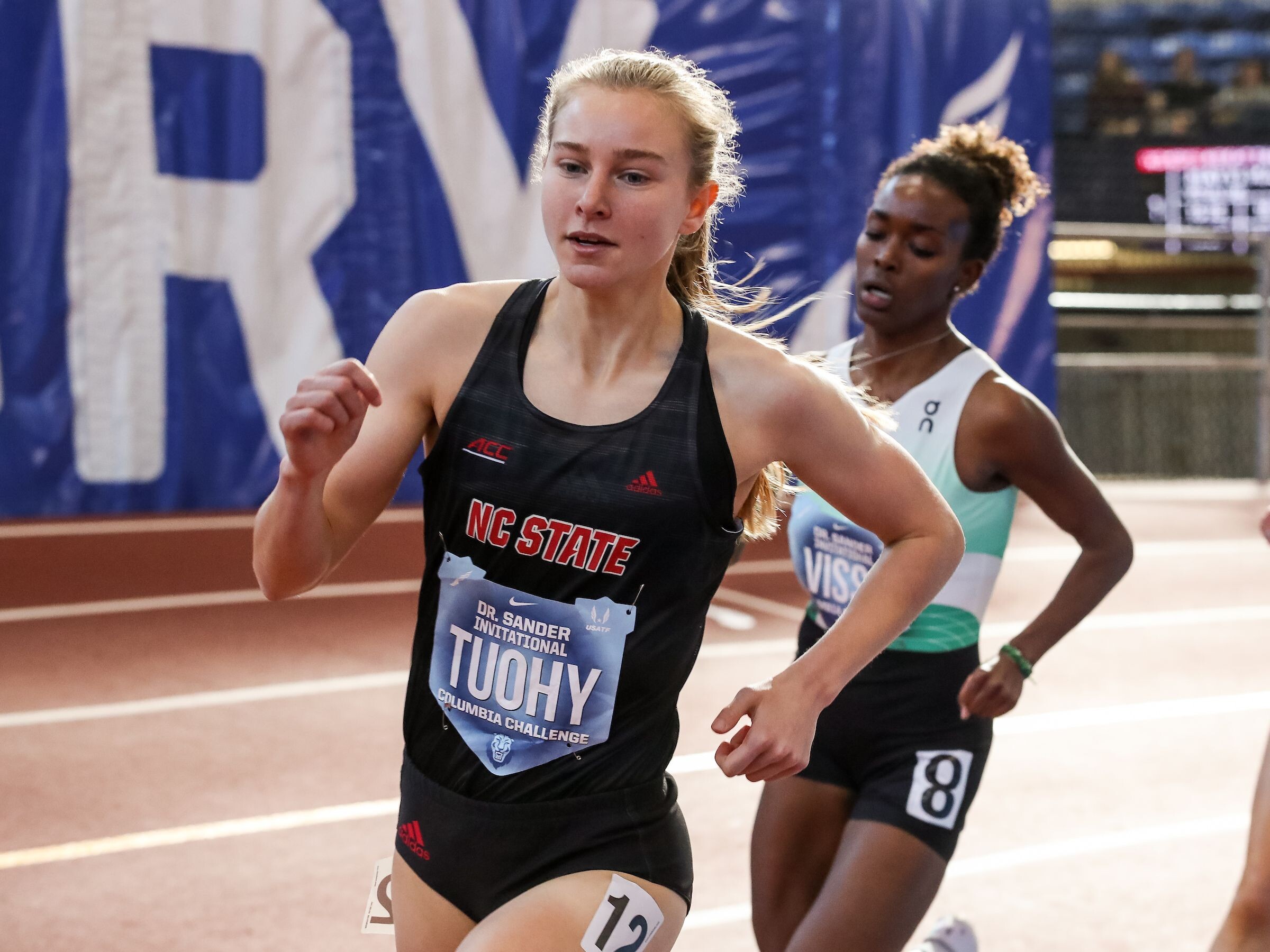
Tuohy was previously on a name, image, and likeness (NIL) sponsorship deal with Adidas while she competed in the NCAA. A NIL deal does not have the same monetary value as a pro deal, but it allows an athlete to continue competing at the collegiate level while earning money from their image. However, under an NIL deal, athletes are unable to win prize money at races or events.
The 21-year-old from New York is one of the best up-and-coming U.S. distance runners. She began to make headlines as a high school athlete in 2018 when she set a U.S. high school 5K record of 16:06.87. Tuohy also won the Gatorade Athlete of the Year for cross-country, given to the top U.S. high school athlete. She won this award in all four years, becoming the only athlete in any sport to accomplish this.
The young star will likely have her eyes on competing for Team USA at the World Indoor Championships in March in the 3,000m and qualifying for the Olympics in the 5,000m at the U.S. Olympic Track and Field Trials next June.
by Marley Dickinson
Login to leave a comment
Noah Lyles reveals what he would have become if not for athletics
Noah Lyles' sponsor Adidas have appreciated him over a recent clip where he revealed that if he had not been an athlete he would have been an artist.
Triple world champion Noah Lyles has disclosed that if he would not have carved out a career in athletics, he would be an artist.
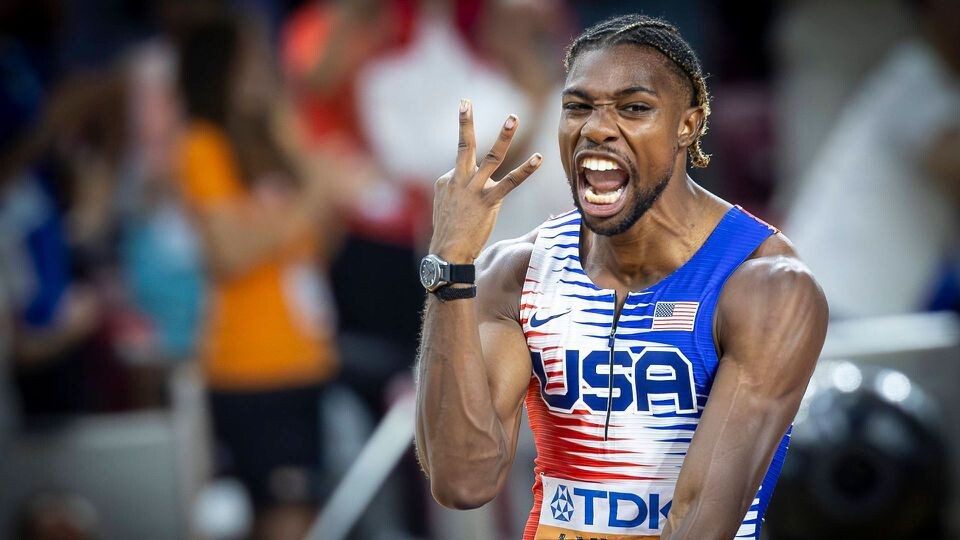
During a ‘Never Have I Ever’ game with Meta endurance news, Lyles disclosed that he has done many different types of art and he would definitely be somewhere painting or singing if he would not be an athlete.
“I was going to be an artist before being an athlete…I’ve done many different types of art. Actually, I went to a school for the arts when I was in middle school. I was really going to be an artist,” Lyles said.
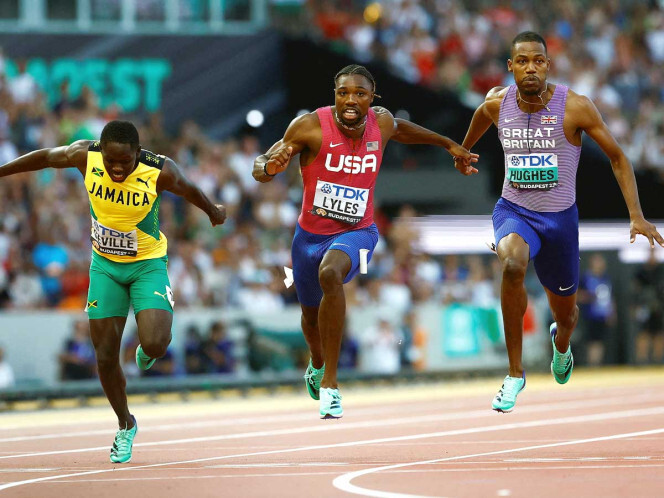
In the video posted on Instagram, Adidas commented saying: “Lucky for us all, he turned out to be a world champion.”
Meanwhile, Lyles has made headlines this season where he was unbeaten in the 200m. Lyles also bagged double gold, in the 100m and 200m, at the World Championships in Budapest, Hungary. The American also propelled the 4x100m relay team to victory at the Hungarian capital.
He finished second behind compatriot Christian Coleman in the 100m at the Diamond League Meeting final, Prefontaine Classic.
Aside from showcasing his talent on the track, Lyles has also modeled for top brands including Hugo Boss, and has managed to earn millions from his stunning sense of fashion.
by Abigael Wuafula
Noah Lyles
Login to leave a comment
How Long Do Super Shoes Last? Here’s What the Latest Data Says.
Fancy new midsole materials like PEBA make you faster, but at the cost of durability
The eternal question of how long your running shoes should last became suddenly topical a few months ago, when Tigst Assefa set a world marathon record in what Adidas billed as essentially a single-use marathon shoe. This development sparked some important discussions about sustainability, accessibility, and fairness. But it also served as a reminder of how little we actually know about the useful life of running shoes, especially in the new era of thick-foamed super shoes.

Fortunately, there’s some interesting new data in a study from researchers in Spain, led by Victor Rodrigo-Carranza of the University of Castilla-La Mancha. In the Scandinavian Journal of Medicine and Science in Sports, they compare shoes made with a modern super foam to a traditional EVA midsole before and after 280 miles, and find that the new midsole does indeed lose its magic more quickly—so much so, in fact, that the super shoe is no better than the regular shoe at that point.
Before digging into the specifics of the new study, it’s worth sketching in some context. The conventional wisdom that I’ve heard throughout my running life is that shoes typically last somewhere between 300 and 500 miles. This is based on some mix of cumulative experience and imperfect data, some of it published and some presumably locked away in shoe-company filing cabinets.
For example, there’s a 1985 study that measured shock absorption at frequent intervals between 0 and 500 miles, using a machine to simulate the impacts of running as well as two volunteers who racked up 500 real-life miles. Here’s an example of how shock absorption changed with mileage for one particular shoe:
The machine version of running obviously didn’t replicate the demands of in-person running very well, but the two human volunteers show similar patterns. Overall, the human testing found that shoes retained about 80 percent of the shock absorption after 150 miles, and 70 percent after 500 miles. You can see that the curve flattens out between about 300 and 500 miles, which is presumably where the conventional wisdom on shoe lifespan comes from. Conversely, you could argue that once you’re past 300 miles, the shock absorption isn’t going to drop much further, so if you’ve made it that far you might as well keep running in them until they (or you) fall apart. More on that below.
You might wonder whether shock absorption, as measured by a hydraulic machine, is really what matters to runners. More recent research has looked at other metrics: this 2020 study, for instance, used force-sensing insoles to measure the peak pressure on different parts of the foot, testing how it changed as a New Balance 738 shoe went from new, to 215 miles, to 430 miles. As the image below shows, the highest pressures are seen in the midfoot and forefoot:
Those pressures stayed virtually unchanged after 430 miles—but the midfoot peak pressure increased from 388 to 450 to 590 kilopascals, a 50 percent jump. It’s not clear exactly why the midfoot pressure increases. It could be that the relative lack of cushioning in the midfoot makes it less durable; it could be that the higher pressures on the rearfoot and forefoot break down the cushioning in those regions and shift load to the midfoot. Either way, it’s clear that the objective load on the foot has changed after 430 miles. And interestingly, the perceived cushioning reported by the volunteers picked up this change: those who reported feeling less cushioned in the midfoot in the worn shoes did indeed tend to have the highest peak midfoot pressures.
So the overall picture in the pre-super-shoe era was fairly muddy, but basically supported the view that shoes progressively lose their cushioning and reach bottom somewhere in that 300 to 500 mile range. Then came Nike’s Vaporfly in 2017, using a carbon fiber plate and a thick layer of cushioning to promise better running economy in exchange for a few hundred bucks—and, in the footnotes, less durability. The unsourced number that I frequently heard floating around after the Vaporfly’s release was that you should trust them for 100 miles or so.
It’s worth pausing here to say a few words about running shoe foams. Carlos Sánchez at RunRepeat has an impressive and exhaustive primer on the huge range of high-performance foams now on the market, which is worth digging into if you’re interested. A highly simplified history is that most running shoes used to use EVA (ethylene-vinyl acetate), then in 2013 Adidas’s Boost made TPU (thermoplastic polyurethane) popular, and then in 2017 Nike’s Vaporfly made PEBA (polyether block amide) the state-of-the-art. One study found that energy return was 66 percent for EVA, 76 percent for TPU, and 87 percent for PEBA.
While there’s been plenty of chatter about carbon-fiber plates, the weight of evidence is increasingly that most of the magic in super shoes comes from the foams. Unfortunately, the very property that makes them so good—their ethereal lightness—also makes them less durable. Of the more than three-dozen modern foams that Sánchez reviews, the main differences arise from the tweaks manufacturers make to trade off performance and longevity (along with price, of course). That makes it hard to issue general guidance about how long super shoes last: it depends on the shoe and the foam.
Still, one data point is better than zero, which brings us back to Rodrigo-Carranza’s study. The shoes he used were special prototypes manufactured for the study by On, almost identical except that one set had an EVA midsole while the other had a PEBA midsole. Both versions had a curved carbon-fiber plate. Twenty-two volunteers performed a running economy test to measure how much energy they burned at a given pace, once in fresh shoes and once in pre-worn shoes. (The researchers themselves ran exactly 280 miles in each pair of shoes to pre-wear them.)
One key finding: energy consumption in the new PEBA shoe was 1.8 percent lower than in the new EVA shoe. That bolsters the case that the foam itself is a big part of the magic, since both shoes had carbon fiber plates. (Not all PEBA foams are created equal, so we don’t know if On’s foam is as good as Nike’s ZoomX.) The other key finding: after 280 miles, there was no significant difference between the two shoes. The EVA shoe didn’t lose anything at all, whereas the PEBA shoe got 2.2 percent worse.
It’s not worth making any grand extrapolations from a single datapoint about when one type of shoe gets better than the other. Who knows what happens after 280 miles? For that matter, who knows what happened after 26 miles? Moreover, there are lots of other factors that might be relevant. One of the interesting claims in Sánchez’s review is that super foams maintain their properties even in frigid winter conditions, while EVA-based foams get much more rigid. In some shoes, firmness more than doubled after Sánchez’s freezer test. Maybe a worn-out super shoe is still a better bet than a newer EVA shoe for those of us who are latitudinally challenged. He also notes that shoe foams take more than 24 hours to recover from a run, and some recover faster than others, so it makes sense to alternate different pairs in order to maximize both comfort and shoe lifetime.
My own approach to shoe durability is, admittedly, not one that’s easy to generalize. I generally have two or three pairs on the go at any given time, and I run in them until they start to feel flat. It’s a noticeable sensation, especially if one of the other pairs in my rotation is relatively new and bouncy. Then, in the spirit of that graph above showing a plateau after about 300 miles, I keep running in them—but I pay more attention to how I feel during and after runs, and to whether the wear on the outer sole is changing the angle of my footstrike. Once I start to feel a few aches and pains, I retire the flat shoe. That approach works pretty well to keep me healthy, but the new data suggests that it’s probably not maximizing my performance. Anyone want to buy a pair of gently used six-year-old OG Vaporflys?
Login to leave a comment
Which Shoe Brand Won the NYC Marathon?
We scored the race like an XC meet. Here are the results.One problem with pro running is that there’s no real team system to create legit rivalries and wild fan support. The major sports have figured this out—grown men wear Detroit Lions jerseys to Costco. Nobody’s slipping on a Hansons-Brooks singlet to hit up the Home Depot.
That could be in part because there is no league. Casual fans can’t throw their undying faith behind NAZ Elite and root for them to beat up on OAC during a showdown in the summer road racing season. Plus, there aren’t really any competitions where teams square off for bragging rights and team trophies—well, maybe USATF Cross Country Championships.
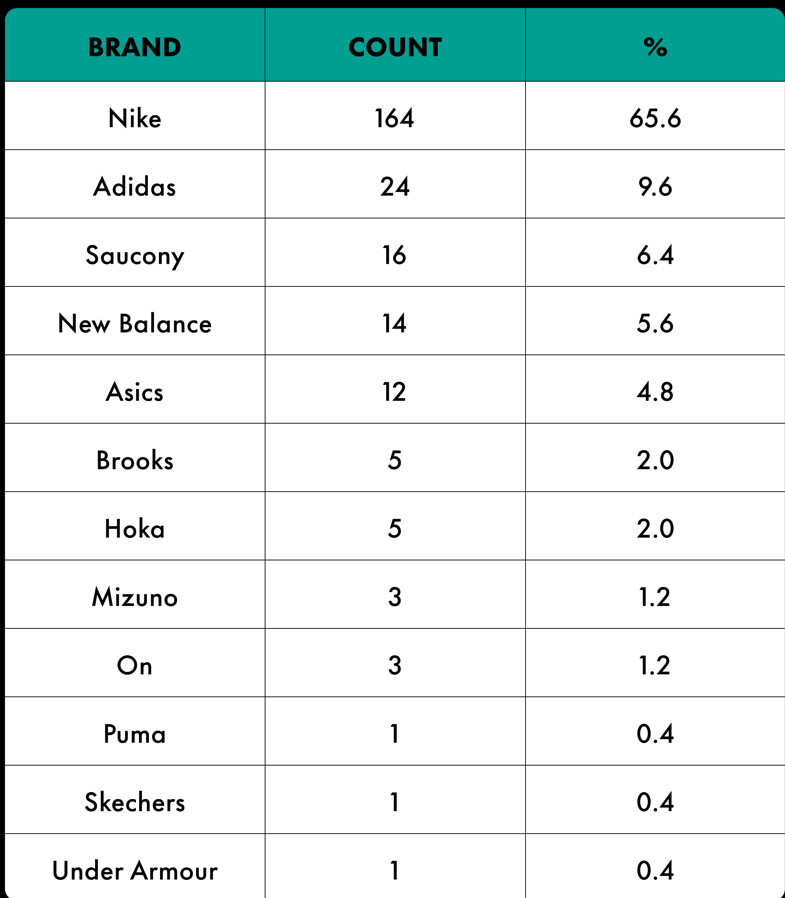
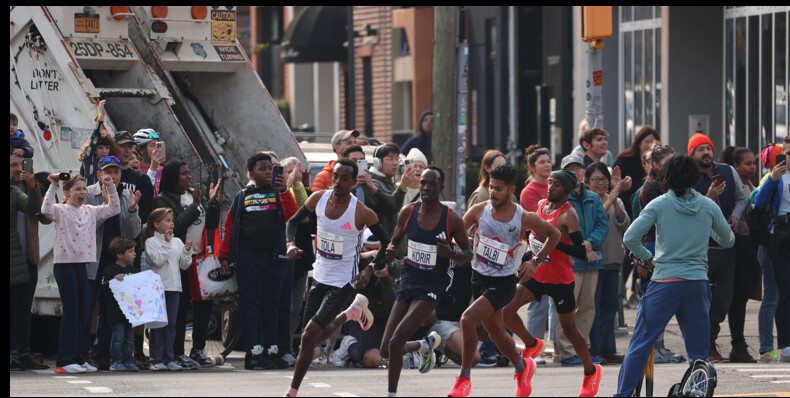
With XC in mind, let’s apply that kind of scoring to the NYC Marathon and manufacture some team drama.
In another article, I looked at the top 10 shoes from the marathon. But what happens when we go a bit deeper and look behind the pros? Which brand’s team is the best?Standing on the sidelines, I snapped photos of runners until the packs became too thick for me to capture everybody clearly. Then I sat with the results and matched runners to their shoes based on their bib numbers.
The elite fields were fairly small this year, so I left the pros in the scoring mix. Congrats, David Puleo from New York City, you were actually on Team Adidas with Tamirat Tola this year.
This is meant to be a fun look at shoes but, to be fair, there are many holes that can be poked into this scoring system. Nike and Adidas have bigger budgets and brought in more ringers. Likewise, because there were so many people wearing Nike, more were bound to make it to the finish line—Cam Levins (Asics) and Reed Fisher (Adidas) both dropped out but would certainly have scored well for their squads.
SWOOSHES EVERYWHERE
First, let’s take a look at the stunning number of Nikes that dotted the course. Here’s a count of the shoes among the top 250 runners. Nearly ⅔ of these runners had the swoosh.The ratio of Vaporfly and Alphafly to other shoe models got even more skewed as the times slowed. Of the final 35 runners I tagged, only 4 weren’t wearing Nike—1 Hoka, 1 Saucony, and 2 Adidas.SCORING
Now, on to the race results. Given the sheer number of Nike runners, it seemed inevitable that they’d win this meet in 2023. But, are other squads competitive? How close are they? And how strongly do the smaller brands compete on the streets?
A primer on XC scoring: In traditional cross-country, teams can have 7 runners, but only 5 actually figure into their own team’s score. But the 6th and 7th runners on a team can have a huge impact in the standings, because their place can affect their opponents’ scores. If they finish in front of another team’s 5th runner, that pushes the opponents’ score one point higher.
Let’s illustrate that with our top two teams.Not every brand in the race had enough runners across the line to yield a team score. This is only because I stopped keeping score when roughly 250 men had run by me at the 24-mile mark. They all certainly would have had five runners, in a field of 51,933 runners. But, by that time, the packs of runners became too thick for me to reliably capture bib numbers and shoes so that I could match them with their final standing later. I even peeped MarathonFoto for a few runners that I missed—some second-wavers ran really fast times!—but it was a painfully slow process and the images are too low res to accurately tell shoes apart unless they were garish neon colors that instantly gave away the brand. So I abandoned the exercise at 250 men.
(For this same reason, I was unable to score the women’s race. I made an attempt, but bib numbers were blocked too consistently to reasonably get enough data.)
Once I had the top finishers matched with their shoe brand (team), I omitted any who had finished outside their team’s top 7. In some XC races, you can run a big team, but runners 8 and up are yanked from the results for team scoring purposes.Interestingly, New Balance athletes ran in a tight pack, with the team’s 7th man finishing 31st. But they just didn’t have the pro-caliber runners needed at the front of the race to hang with the teams that made our podium.
MORE CHOICES, BUT ONE CLEAR LEADER
The takeaway from all this? There are many brands building great racing shoes right now, as evidenced by the parity in the top finishers of marathons. But, further back in the pack, Nike still dominates with competitive runners. That stands to reason, as they had a few years head start on everybody else in the super shoe race.
How will these standings look in a few years, after other brands have had more time for their innovations to proliferate? If it follows suit with the pro field, expect to see some of the also-rans make a strong challenge for the podium and team title.
by Runner’s World
Login to leave a comment
Reigning Olympic marathon champion Peres Jepchirchir will be eyeing her second win in the streets of New York and she will be banking on her super shoes to propel her to victory
Peres Jepchirchir is banking on her Ksh 75,275 super shoes to propel her to victory at the New York City Marathon.
Reigning Olympic marathon champion Peres Jepchirchir is one of the key headliners at Sunday’s New York City Marathon.
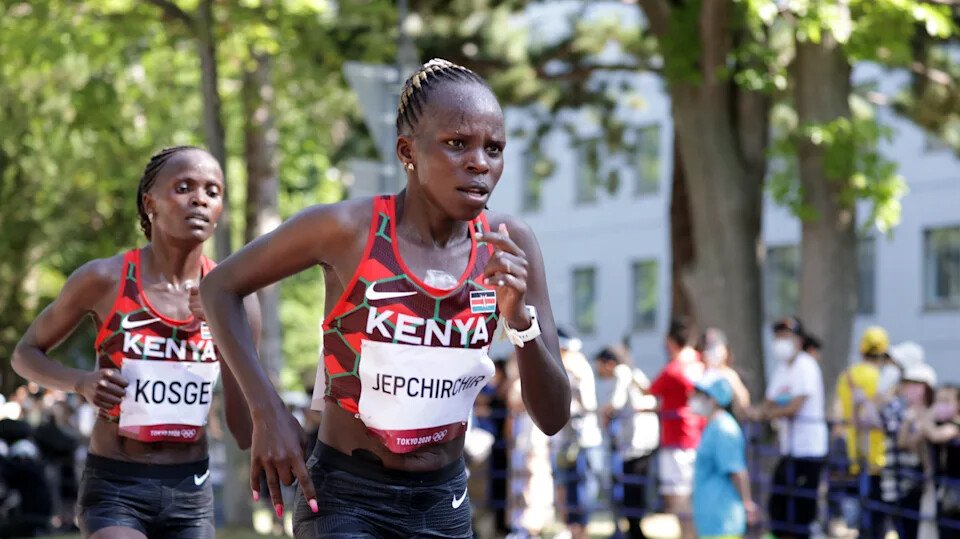
Jepchirchir will be eyeing her second win in the streets of New York and she will be banking on her super shoes to propel her to victory.
The 2022 Boston Marathon champion clinched her first victory in the streets of New York in 2021 and intended to defend her title last year but an injury setback saw her postpone her title defense to this year.
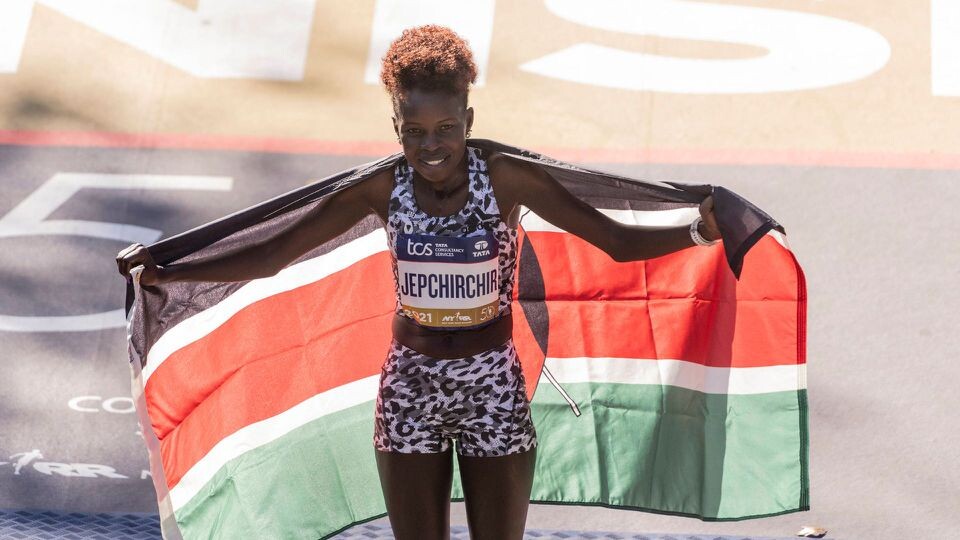
She hopes her super shoes will work wonders for her like they did for Tigst Assefa who broke the women’s world record at the Berlin Marathon. The super shoes also worked for Kelvin Kiptum on his way to victory at the Chicago Marathon where he also broke the world record.
Because she’s sponsored by Adidas, she had preliminary access to the recently-released Adizero Adios Pro Evo 1—the ultralight but expensive, Ksh 75,275, the latest player in the super shoe game. She used the shoes while winning at the World Road Running Championships in Riga, Latvia.
“I was one of the early testers for the shoe when Adidas was first developing it. I was impressed by how much technology was in the shoe, despite it being so light.
I expect (the shoe) to continue to help me achieve my peak performance I am confident these shoes give me the best possible chance of winning in New York,” she told Runner’s World.
Jepchirchir also explained that the streets of New York are one of her favorite places to run and she will be keen to record her second win.
She opened her season with a third-place finish at the London Marathon before winning the Half Marathon in Riga.
More imminently, Jepchirchir has her sights set on earning her second New York City Marathon title. She says she’s excited to do some people-watching and take in the views of the city, but above all, she’ll look to capitalize on her fitness.
Coming out of an injury setback, she wants to test her prowess one more time against a strong field.
“I am finally feeling like my strongest self again. I am eager to show what I can achieve in one of my favorite races in the world,” she said.
by Abigael Wuafula
Login to leave a comment
TCS New York City Marathon
The first New York City Marathon, organized in 1970 by Fred Lebow and Vince Chiappetta, was held entirely in Central Park. Of 127 entrants, only 55 men finished; the sole female entrant dropped out due to illness. Winners were given inexpensive wristwatches and recycled baseball and bowling trophies. The entry fee was $1 and the total event budget...
more...He Qualified for Team USA. Then Came the Bill.
Even as trail and ultrarunning explode, the spoils of professionalization aren’t spread equally across the sport. Athletes on this year’s U.S. 24-hour team are looking to change that
Scott Traer qualified for his first U.S. national team more than a decade ago in 2012. He was new to the sport and naive about what it took to compete at the international level—even after being selected as one of the country’s best athletes in the 24-hour discipline, a niche tributary of trail and ultrarunning where athletes complete as many laps around a track as possible within 24 hours.
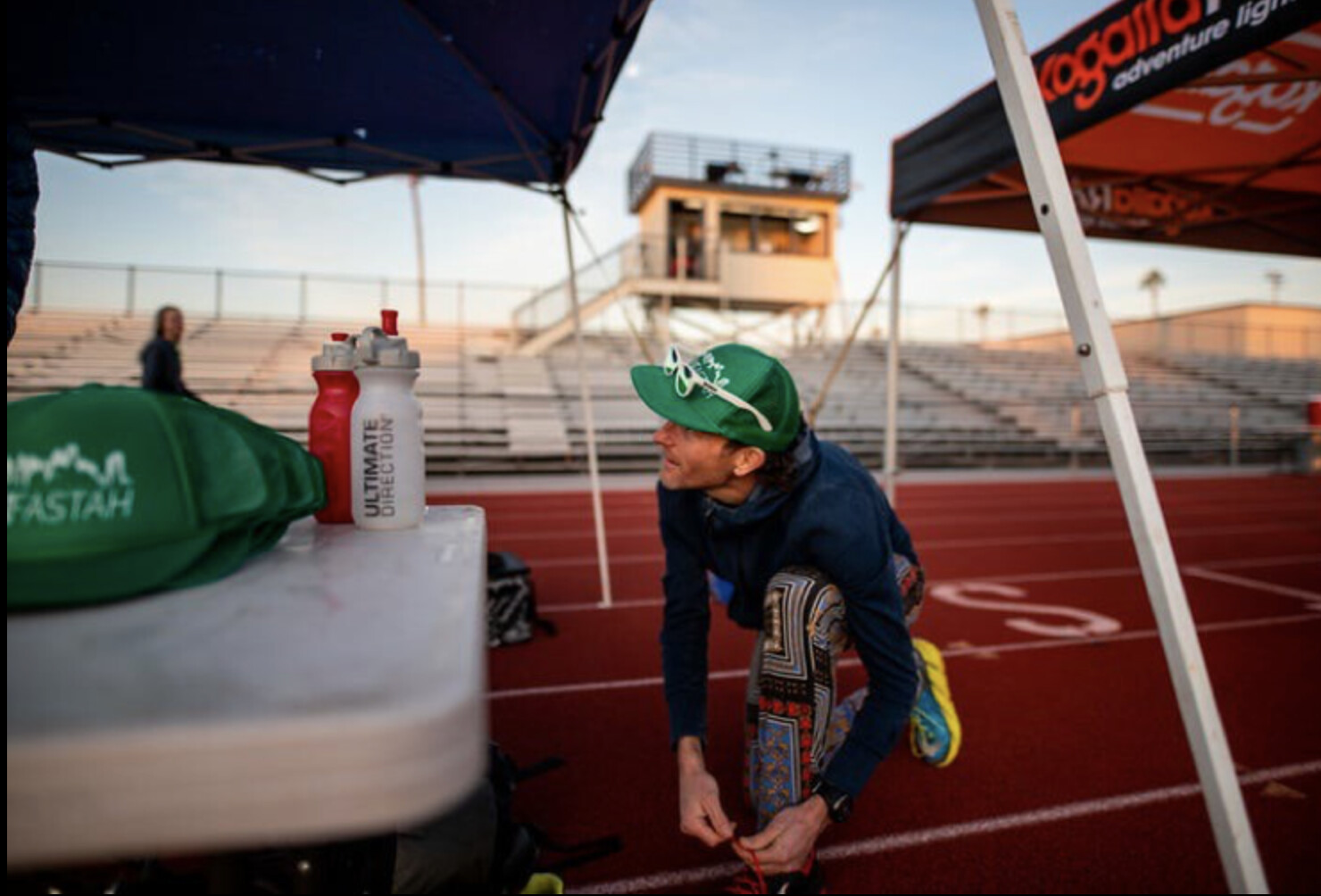
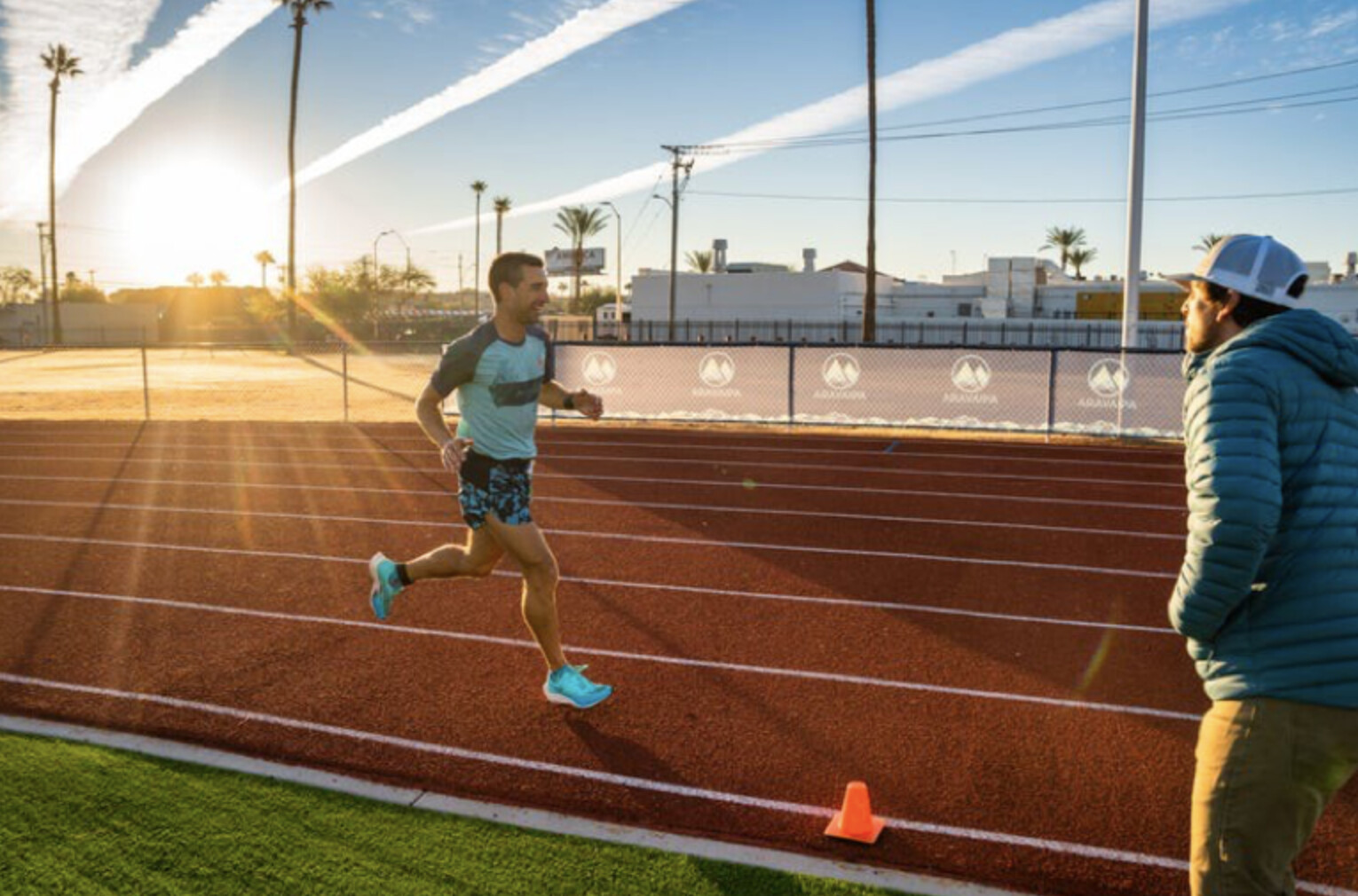
While the 24-hour race format may seem eccentric, well-known names like Courtney Dauwalter, Kilian Jornet, and Camille Heron have dabbled in the ultra-track scene. International governing bodies regulate the discipline with USA Track & Field (USATF), the national governing body for track and field, cross country, road running, race walking, and mountain-ultra-trail (MUT) disciplines, overseeing the American contingent.
Traer, then 31, was working odd construction jobs in and around Boston to make ends meet while training when he got the call from USATF that he had been selected for Team USA.
“I was really excited,” says Traer. “Then, I found out that I had to pay for everything. So I was like, ‘Forget about it.’”
That financial reality took the wind out of Traer’s sails. He didn’t have the disposable income to foot the bill for international travel and didn’t have paid time off from his jobs. While he was disappointed that he wouldn’t get to represent his country in 2012, he was still determined to pursue his dream of chasing a career in coaching and racing.
Now, Traer, 42, is a full-time coach living near Phoenix and working with the Arizona-based event organization Aravaipa Running as an assistant race director. He has earned top accolades in the sport, including a course record at the Javelina 100K and a Golden Ticket to Western States at the Black Canyons 100K, eventually leading to a top-ten finish at the Western States Endurance Run.
True to his blue-collar roots, he is known for racing in unbranded gear, typically a long-sleeve, white SPF shirt unbuttoned and flapping in time with his stride. Ten years after making his first 24-hour team, he re-qualified for the opportunity to compete for the U.S. again, this time for the 2023 IAU 24-Hour World Championships in Taiwan (which international sports federating bodies officially refer to as Chinese Taipei), on December 2.
The catch: USATF is only providing a stipend of $600 to Team USA athletes.
Oregon ultrarunner Pam Smith has competed on Team USA seven times in the 24-hour and 100K world championship events. Now, she’s serving as the Team USA manager to help steward the next generation of ultra athletes. But that passion has come at a cost.
“I estimate I’ve spent around $10,000 in personal funds to be able to compete at the world championships and to represent the USA at these events,” says Smith, 49, who finished fourth at the 2019 IAU World Championships in France. “USATF does pay for the manager’s travel expenses, but there is no other compensation; in fact, the managers have to use their own funds to cover some fees, like membership dues and background checks.”
It might surprise fans of the sport that many of their favorite athletes are paying significant money to sport the red, white, and blue uniform—and that many can’t compete because they cannot shoulder the cost. The U.S. is known for strong 24-hour runners, and the men’s and women’s teams both won gold at the previous IAU 24-Hour World Championships in 2019 in Albi, France, with two individual podium spots.
“The U.S. has many of the best 24-hour runners in the world,” says Smith. “It’s a shame that these athletes don’t even get their airfare covered.”
While Smith’s airfare is covered, her work and that of her colleagues is presumed to be done on a volunteer basis. (A quick online search shows a flight to Chinese Taipei from most U.S. cities costs in the $1,500-$2,400 price range.)
Trail running, particularly the elite side of the sport, is at an inflection point. While some races dole out prize money, and a select few athletes at the top of the sport command respectable salaries, most runners at the elite level rely on a scattershot combination of brand partnerships and personal funding to float their racing. While the sport’s very best athletes are well compensated professionals, most “sponsored” trail runners earn between $10,000 and $30,000 per year. Between travel, gear, nutrition, and other expenses, many runners at the elite level are fronting their own cash to compete.
When Chad Lasater qualified for Team USA after a strong run at the Desert Solstice 24-Hour Race, he hadn’t planned on making the team. But, when he found out he’d qualified, he started looking into the logistics and was shocked to discover he’d be responsible for paying his way to Taipei.
“The cost of airfare, lodging, food, and time away from work can be significant, especially when traveling to somewhere like Taipei,” says Lasater, 51, from Sugar Land, Texas. “I feel that everyone should have an equal opportunity to be on the U.S. team, and the cost of traveling to the world championships should not preclude anyone from accepting a spot on the team. We should really be sending our best 24-hour athletes to the world championships, not the best athletes who can afford to travel.”
Teams that rely on individual brands or athletes to foot the bill will prefer runners with sponsorships or disposable income and can afford to take time off work and pay for childcare.
At the top of the sport, like the world championships, it’s routine to see completely unsponsored runners competing with no brand affiliation, especially in the eccentric realm of 24-hour track events. Even some sponsored runners don’t always get their travel expenses covered.
While a world championship event is certainly a big deal, it doesn’t command the same fanfare and media attention as other marquee events, like the Western States Endurance Run or Ultra-Trail du Mont-Blanc, where many brands prefer to focus their resources.
Jeff Colt, a 32-year-old professional ultrarunner for On who lives in Carbondale, Colorado, publicly debated the merits of returning to Western States in California this year or competing in the 2023 World Mountain and Trail Running Championships in Austria in early June. (The trail running world championships and 24-hour world championships are different events, but the Team USA athletes who compete in each one face similar challenges when it comes to funding and market value to brands.) He ultimately decided to claim his Golden Ticket and compete at States. More eyeballs on the event mean a higher return on the investment for running brands, which in turn elevates athletes’ value to their sponsors
“My sponsor, On, was clear that they supported my decision either way, but they were more interested in me running Western States,” says Colt. “And rightfully so. There’s a lot of media attention at races like States and UTMB, which allow brands to activate and get visibility for their logo. That support feels good as an athlete, too. It’s not just better for the brand.”
Nike has an exclusive partnership with USATF; all athletes competing at any world championship event in the mountain-ultra-trail disciplines (as well as the Olympics and World Athletics Championships for track and field and the marathon) must wear Nike-issued Team USA uniforms that are provided to the athletes free of charge, with the exception of shoes. Any photos or videos of professional runners at these events are less valuable to competing running brands because their athletes will appear bedecked in another company’s logo. This disincentivizes many brands from investing in unsponsored athletes’ travel expenses and limits athletes’ ability to get financial support, most of which currently comes from shoe and apparel brands in the trail running industry. And if athletes cannot compete because of illness or injury, they must return parts of the kit. Even if they keep the kit, many sponsored runners’ contracts prohibit them from training and racing in the gear, so it gathers dust at the back of their closets.
Arizona runner Nick Coury, preparing to compete on his third U.S. 24-hour team, says this contract limits the economic opportunities of unsponsored athletes—partially because it disallows an athlete to place another sponsor’s logo on the Nike gear.
“This is especially upsetting to many because Nike provides large sums of money to USATF for this arrangement, yet neither passes through significant support to national teams despite USATF being a nonprofit aimed at ‘driving competitive excellence and popular engagement in our sport,’” says Coury, 35, from Scottsdale, Arizona. “USATF is taking money from Nike, restricting elite athletes to fund themselves through sponsorship, and doing little to nothing to encourage a competitive national team.”
One athlete, sharing anonymously, reported selling parts of their Nike kit to help offset travel expenses. “It’s the same kit [100-meter and 200-meter track and field superstar] Noah Lyles wears, so it’s super valuable.”
Traer thinks it’s unfair that athletes are forced to wear Nike gear and render free labor supporting a huge company, especially when the 24-hour team isn’t fully funded. Lyles, an Adidas athlete who won the 100-meter dash at this year’s World Athletics Championships in Budapest, had to wear Nike gear while warming up and racing, too. But his travel and expenses were paid in full by USATF, and his Adidas relationship benefits because track and field stars get considerably more exposure than ultrarunners. Furthermore, in track and field, the world championships serve as a prelude to the biggest running event on the calendar, the Olympics, which take place every four years and attract an expansive viewership that reaches far beyond hardcore running fans.
“It bothers me because Nike is making a huge amount of money,” Traer says. “I don’t want to hear that there isn’t enough money to support athletes because I see smaller brands in our sport that have less money doing a much better job supporting athletes.”
Nancy Hobbs is the chairperson of the USATF Mountain and Ultra Trail Running Council, the division of USATF that oversees the U.S. 24-Hour Team. Her executive committee has been discussing more equitable distribution of funds. Initially, funding was based on the number of years the championships had been held and how many athletes were attending.
Ultimately though, it comes down to the relatively small amount of Nike money that USATF allocates to the USATF MUT Running Council.
“With a certain amount of money in the budget, we could choose to send fewer athletes (i.e., just a scoring team with no spares in case of injury, etc.), but the council discussion has been on the importance of fielding a full team with some additional athletes for attrition and providing more athletes an opportunity to compete internationally (provided they qualify for the team based on selection criteria),” says Hobbs.
Though the compensation for mountain-ultra-trail athletes may feel low, it is significantly higher than in the past. In 1999, a mere $250 was distributed to each MUT subcommittee, totaling $750 for all 1999 expenses. In 2013, MUT teams received $25,000 in funding for travel. This year, $83,000 was distributed across all of the teams it sends to international championships for MUT disciplines.
“We’ve come a long way with MUT since 1998,” says Hobbs. “We have more work to do. This is a volunteer-driven group which is passionate about our sport and trying to provide athletes opportunities through championships, teams, and programs within the structure of USATF.”
Coury qualified for his third U.S. 24-hour team in 2021 and broke the American 24-hour record. He’s had to fund his travel out of pocket for all three international appearances. He says the lack of funding limits the team’s ability to compete on the world stage.
“I’ve found it extremely challenging to train for a 24-hour event while holding a full-time job, as have others, and I know I haven’t and won’t hit my personal potential as a result,” says Coury. “We’ve seen an explosion in the competitiveness and interest in trail races, and part of that is the ability for ultrarunners to make a living as professional athletes. We see very few runners in the 24-hour space who can go professional, which reflects in our team’s competitiveness.”
While Team USA won both gold medals in 2019, international competition is escalating. Coury says opening up additional funding would help draw elites and strong amateurs alike to try their hand at the 24-hour format, which would help Team USA’s standing on the world stage.
“Athletes like Courtney Dauwalter and Camille Herron have represented Team USA multiple times and been key to our results,” says Coury. “Yet I am certain they must weigh training, qualifying, and representing Team USA against the sponsorship opportunities in trail ultrarunning, where financial support is much greater. I imagine there would be more interest from some of our most capable athletes if we had a better financial story around the team, providing a path for it to fund an athlete’s career instead of costing out of pocket. Given the prospects of making a living at a trail race versus paying to represent Team USA, I’m positive we’re discouraging some of our best athletes from even wanting to try.”
In previous years, Team USA has resorted to raising money through bake sales and selling T-shirts to raise funds for the team’s travel expenses. Past team captain Howard Nippert made and sold ice bandanas to support the team. This year’s captain Smith is hosting fundraising dinners. Coury says that the ultrarunning community has stepped up to support the team where traditional funding has failed.
“It reminds me in some ways of the amateur athlete situation back in the 1970s, where representing your country came at a significant financial burden and really made athletes reconsider it,” says Coury. “Why isn’t USATF making it desirable to train and compete for Team USA? Why is it seemingly doing the opposite?”
The 24-hour team is at a crossroads: either it will receive adequate funding and support to send the best team possible to the world championships, or it will maintain this status quo while Team USA falls further and further behind on the international stage. Traer has launched a petition on Change.org to draw attention to the funding issue and is determined to sound the alarm about how a lack of funding holds athletes and all of Team USA back.
“No one should have to decide that they made Team USA but can’t afford to pay to wear their country’s flag,” says Traer. “If an athlete earns their spot on the team, they should get the support they need to compete. End of story.”
by Outside Online
Login to leave a comment
Adidas new single-use racing shoe releases to the public–for CAD $650
Last weekend’s Berlin Marathon saw the impossible become nothing when Ethiopia’s Tigist Assefa shattered the women’s marathon record by two minutes and 11 seconds, winning the race in 2:11:53. Assefa not only garnered attention for her outstanding performance and record-breaking time, but also for the cutting-edge carbon-plated racing shoes she was wearing: Adidas Adizero Adios Pro Evo 1, which made their debut appearance in the race.
These record-breaking carbon-plated racing shoes from Adidas were released to the U.S. market on Sept. 26, and have already sold out, priced at USD $500 (CAD $650). What sets these shoes apart, besides their hefty price tag (approximately $450 more than the average running shoe), is their unique one-race design. Despite their high cost, these shoes are designed to last through a single marathon.
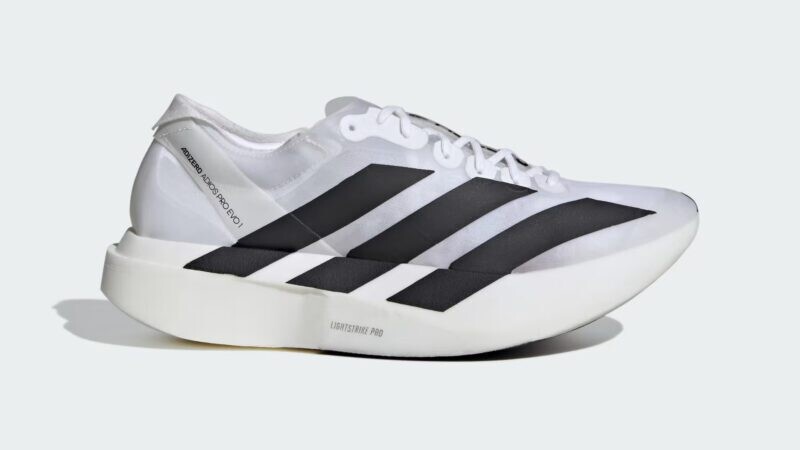
The shoe’s appeal to a wider audience raises concerns about its environmental impact. Adidas has openly acknowledged that these shoes are indeed intended for a single race, which has prompted criticism regarding environmental waste, and flying in the face of some brands’ efforts to create more sustainable running footwear.
On its website, Adidas describes the Adizero Adios Pro Evo 1 as “a running shoe like no other,” boasting “unique technology that challenges the boundaries of racing.” Weighing in at a mere 138 grams, the shoe features an innovative Lightstrike Pro foam design with a full-length carbon plate that is reportedly bouncier and lighter than the Lightstrike Pro foam in the shoe’s predecessor, Adios Pro 3. The shoe also incorporates a liquid rubber outsole, a substantial 39-mm heel stack and a front rocker. This rocker propels the runner forward at even greater speeds while requiring less energy expenditure.
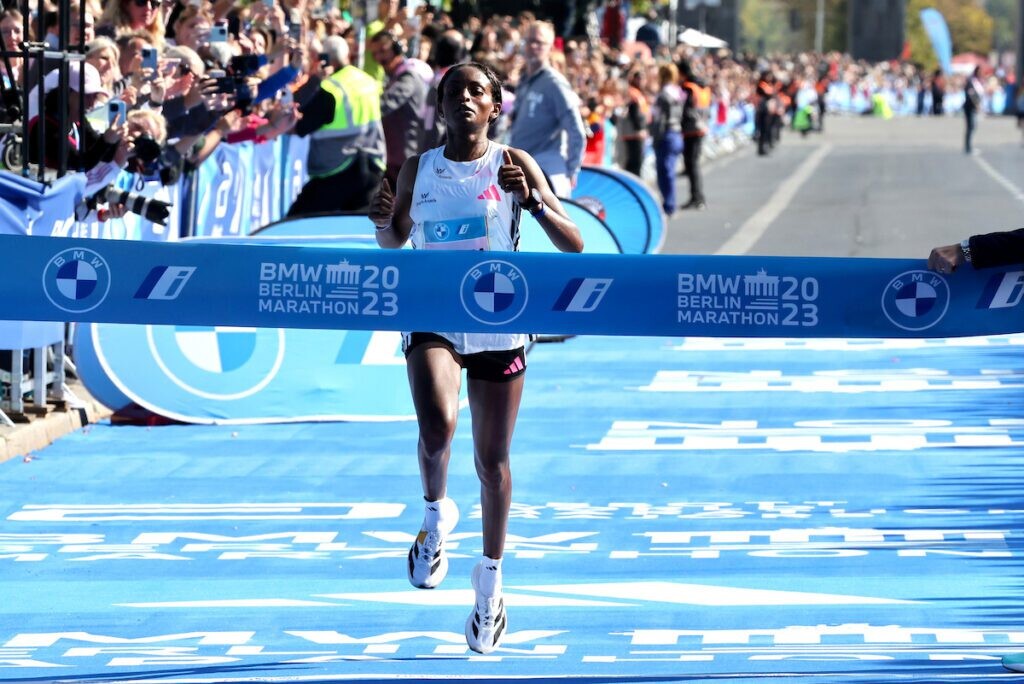
In recent years, marathon running has witnessed the rise of “super shoes” as all the major brands compete to develop the fastest carbon-plated racing shoe on the market for their athletes. The Adidas Adizero Adios Pro Evo 1 represents the latest innovation in marathon technology, helping runners shave precious seconds, if not minutes, off their race times.
by Marley Dickinson
Login to leave a comment


